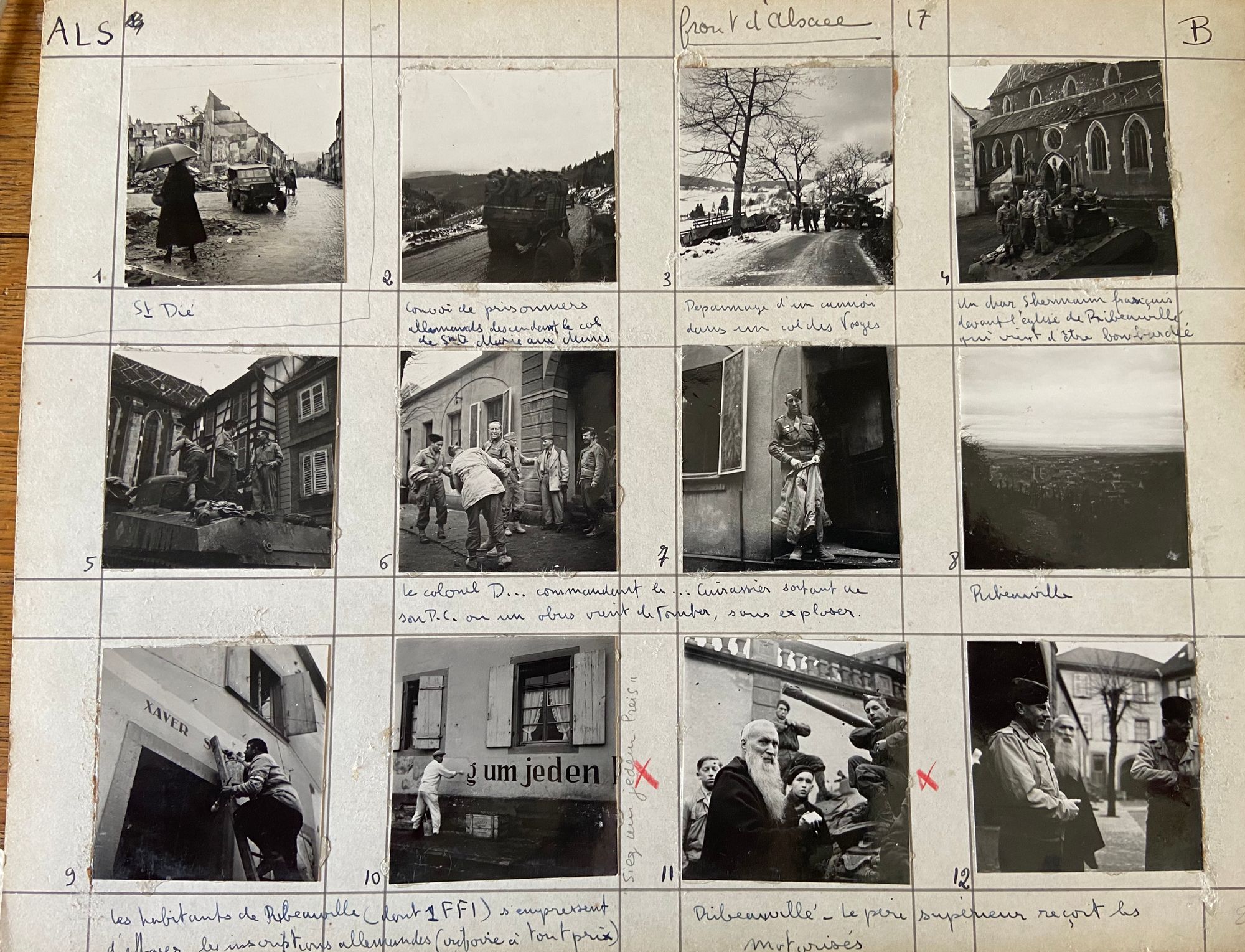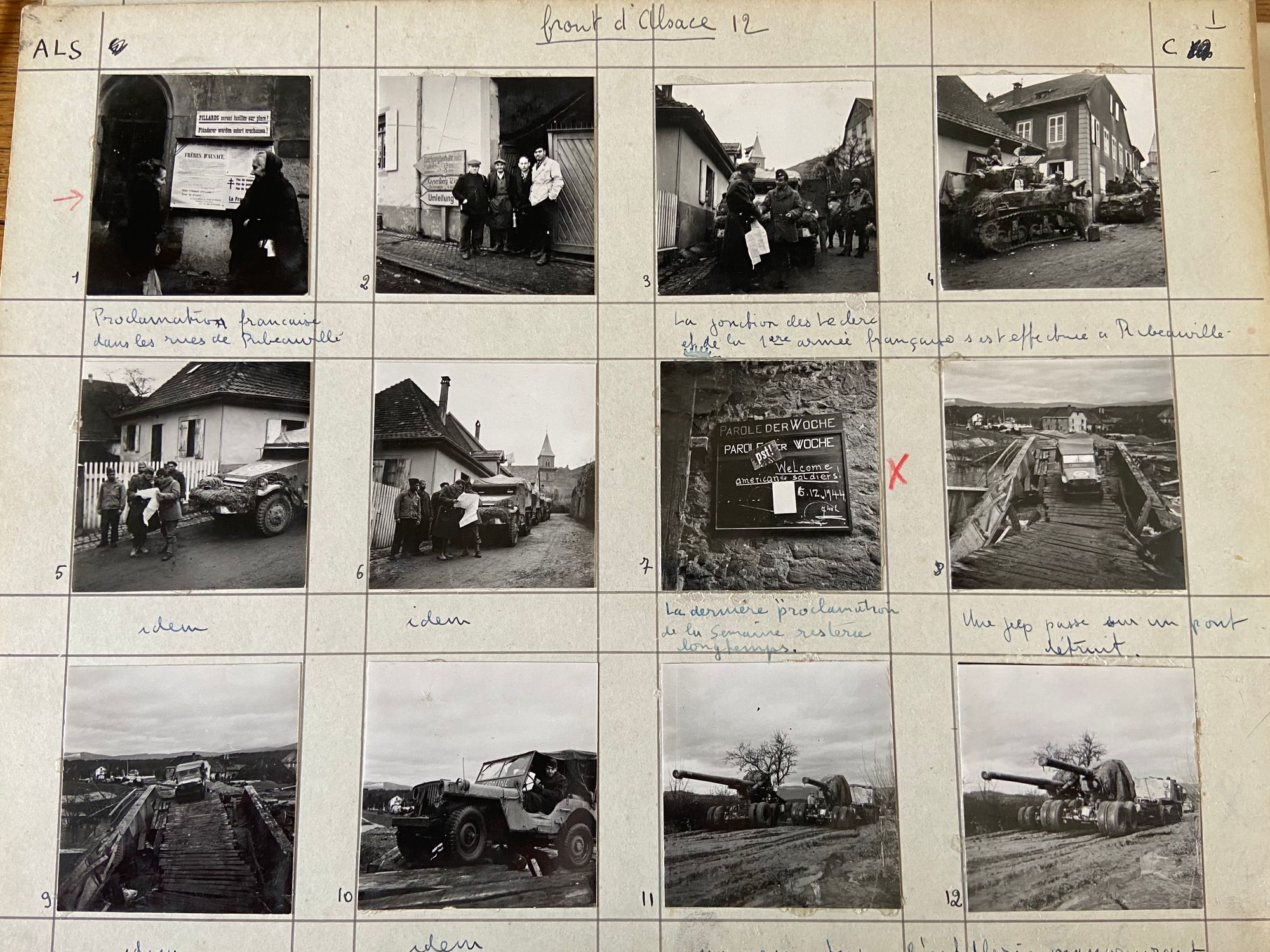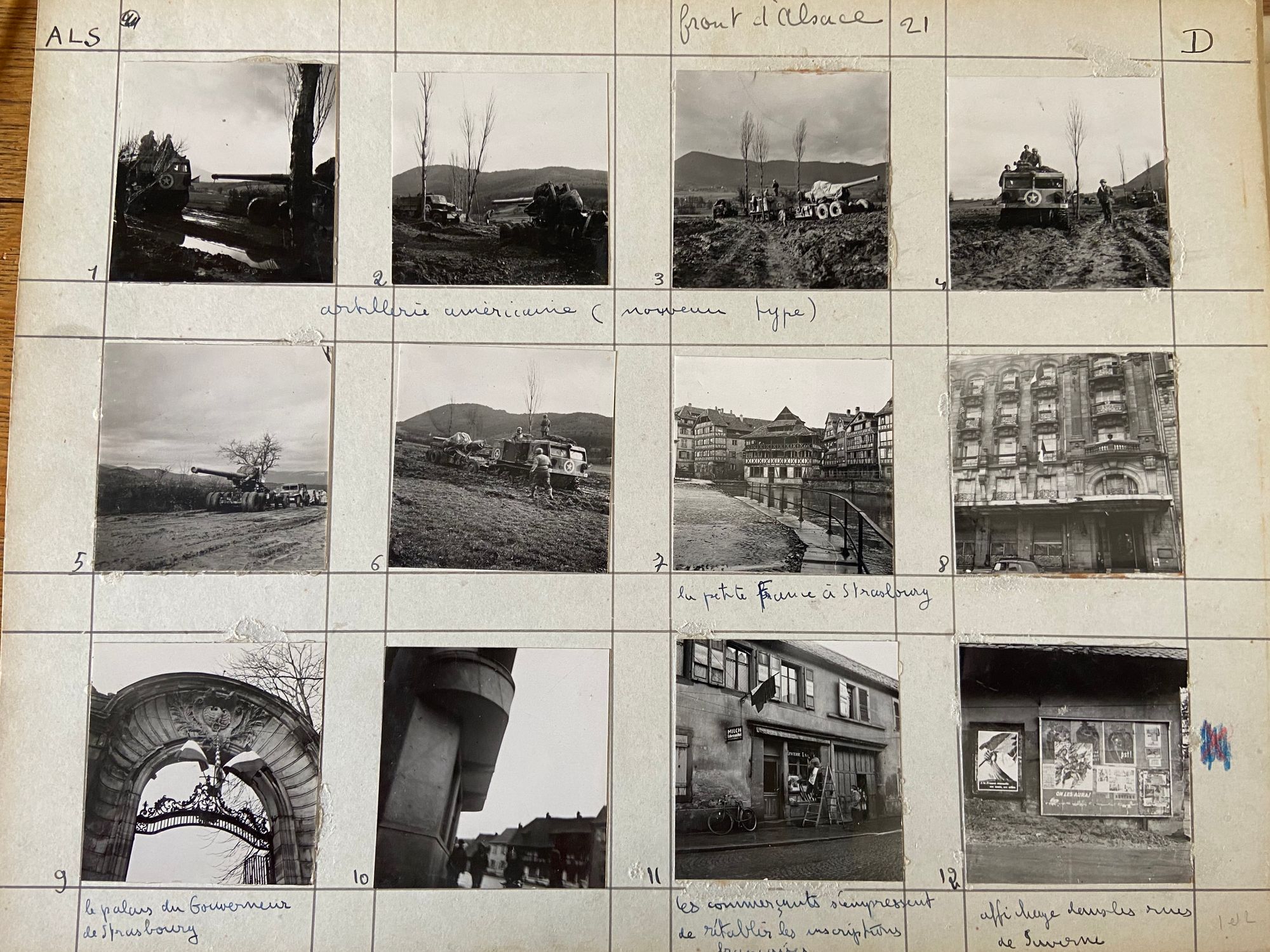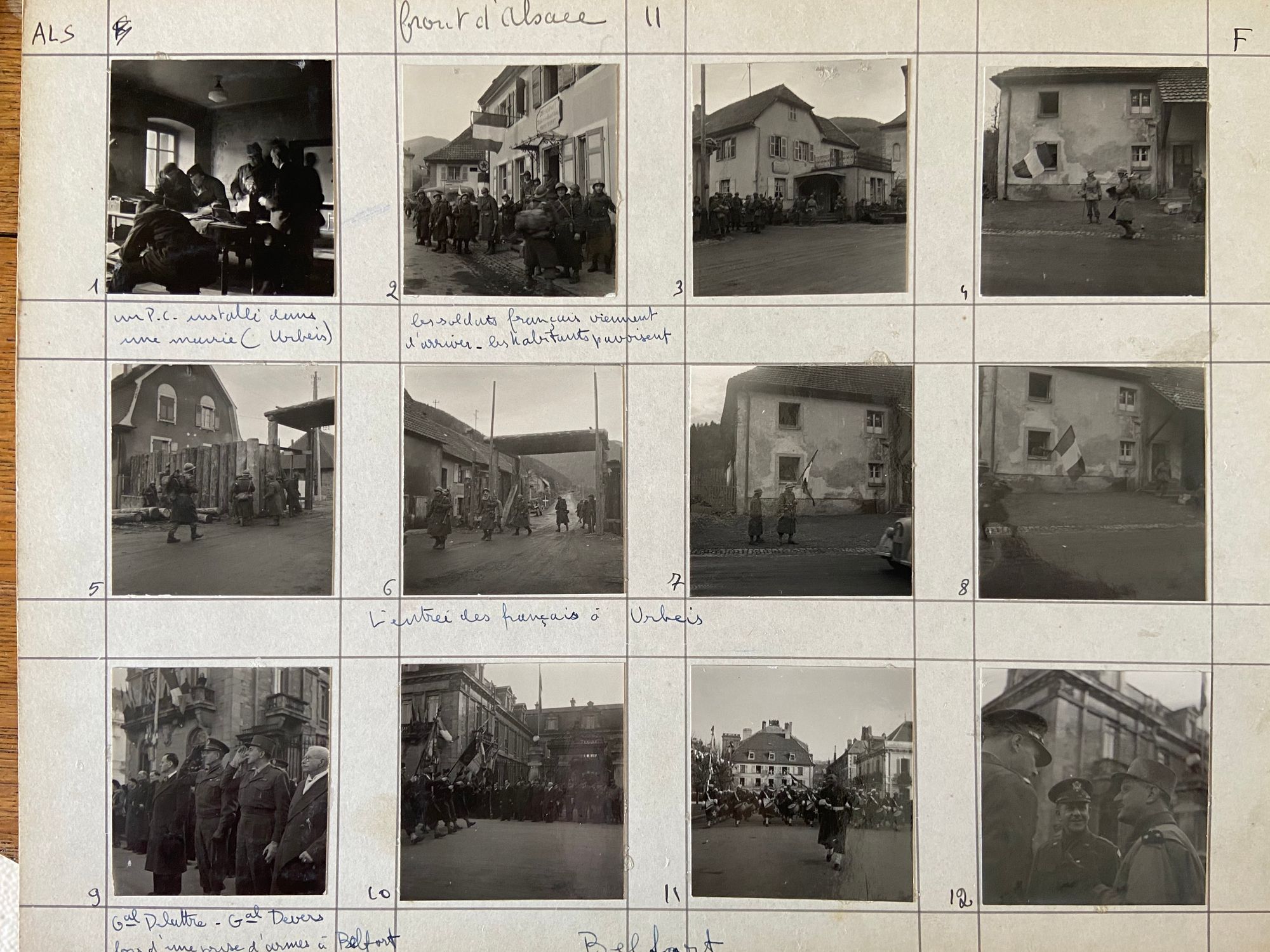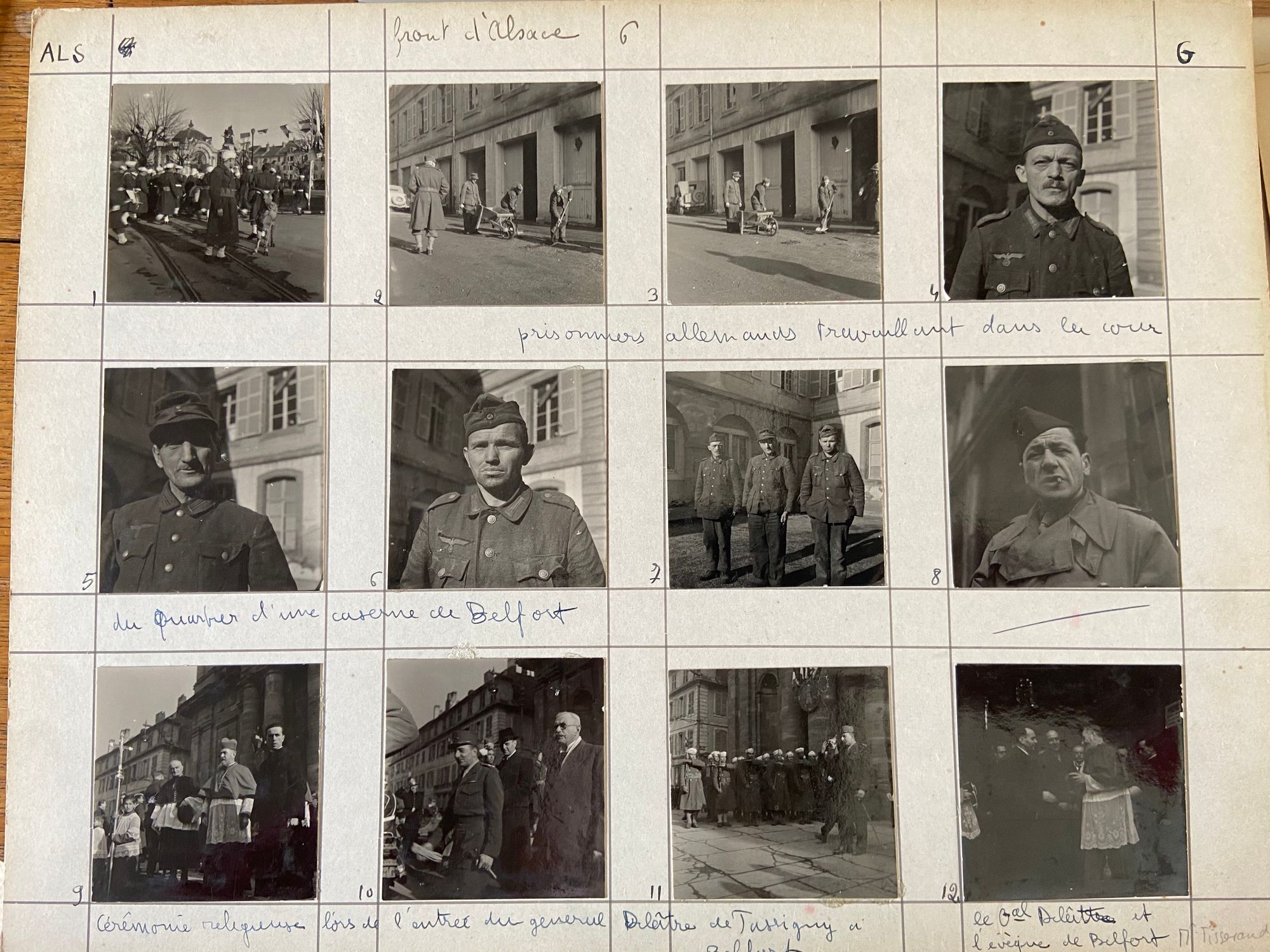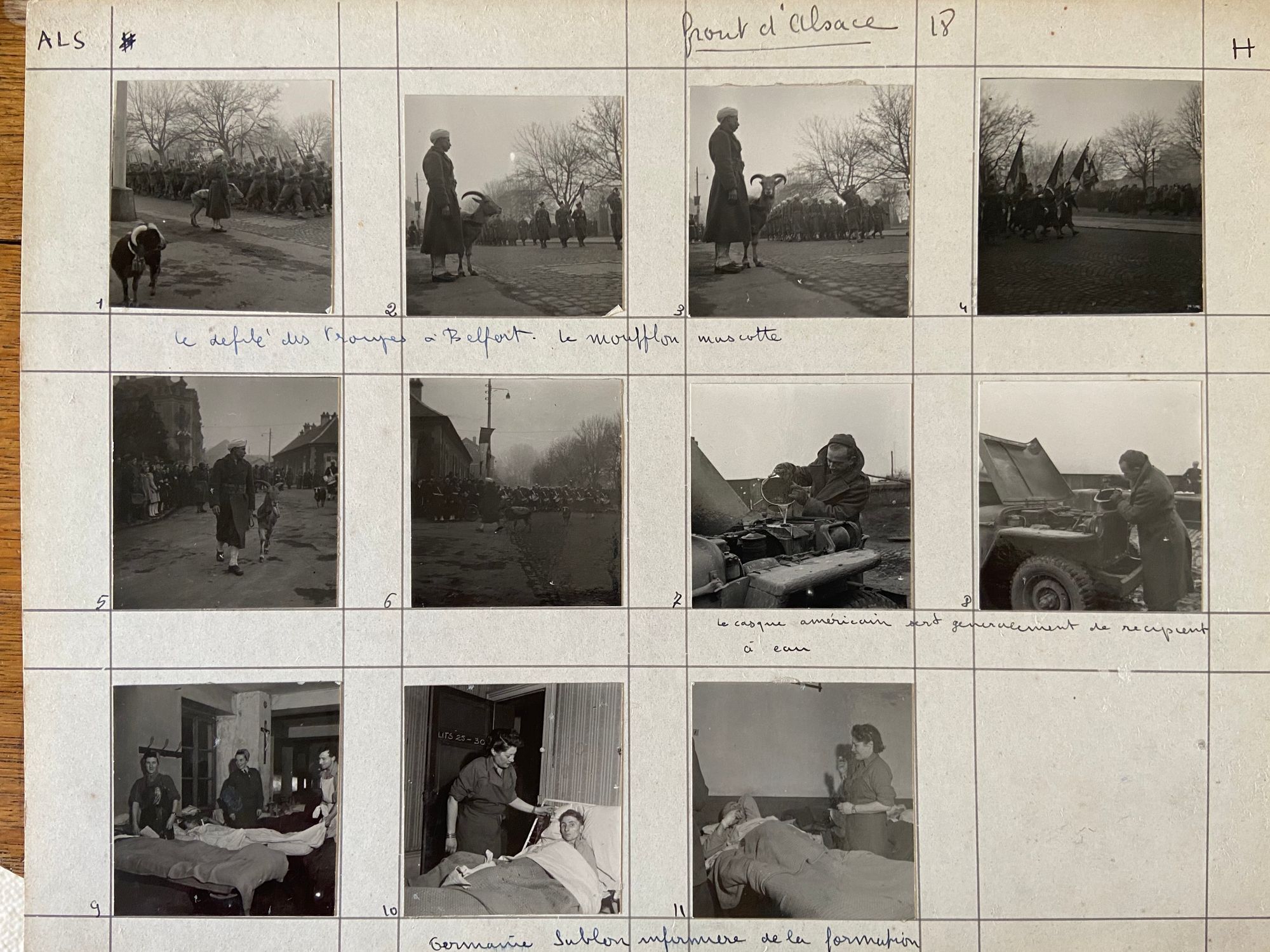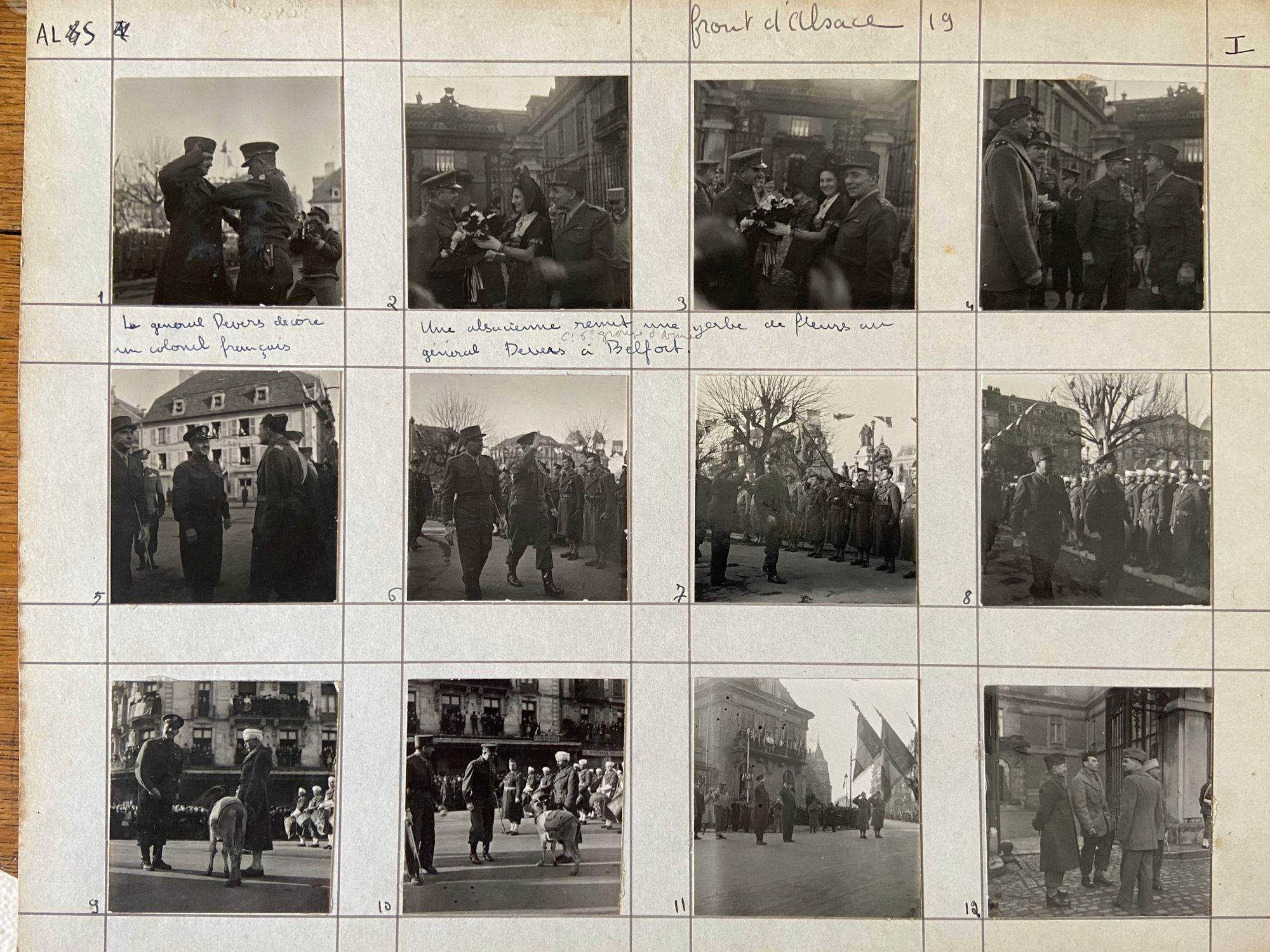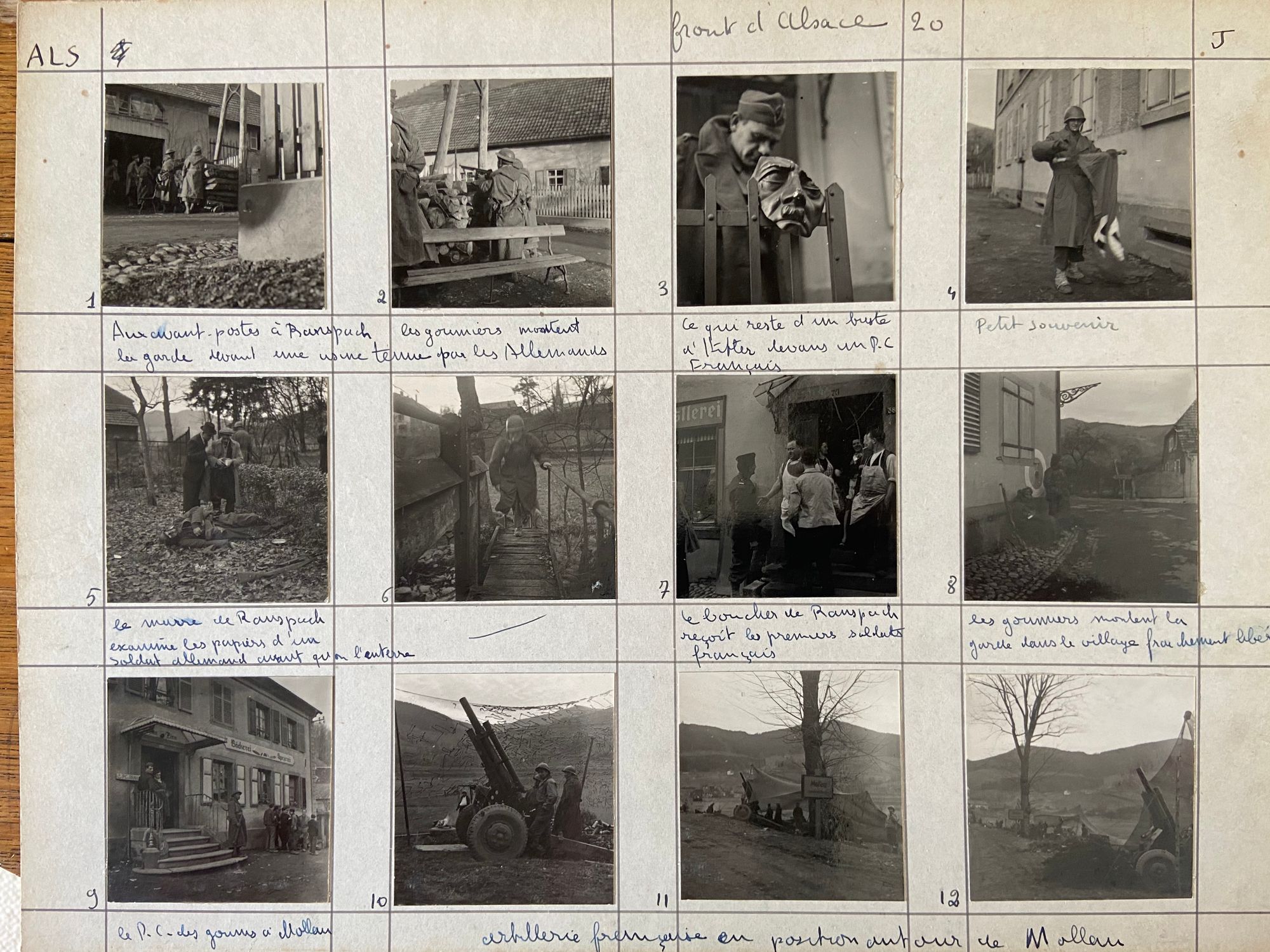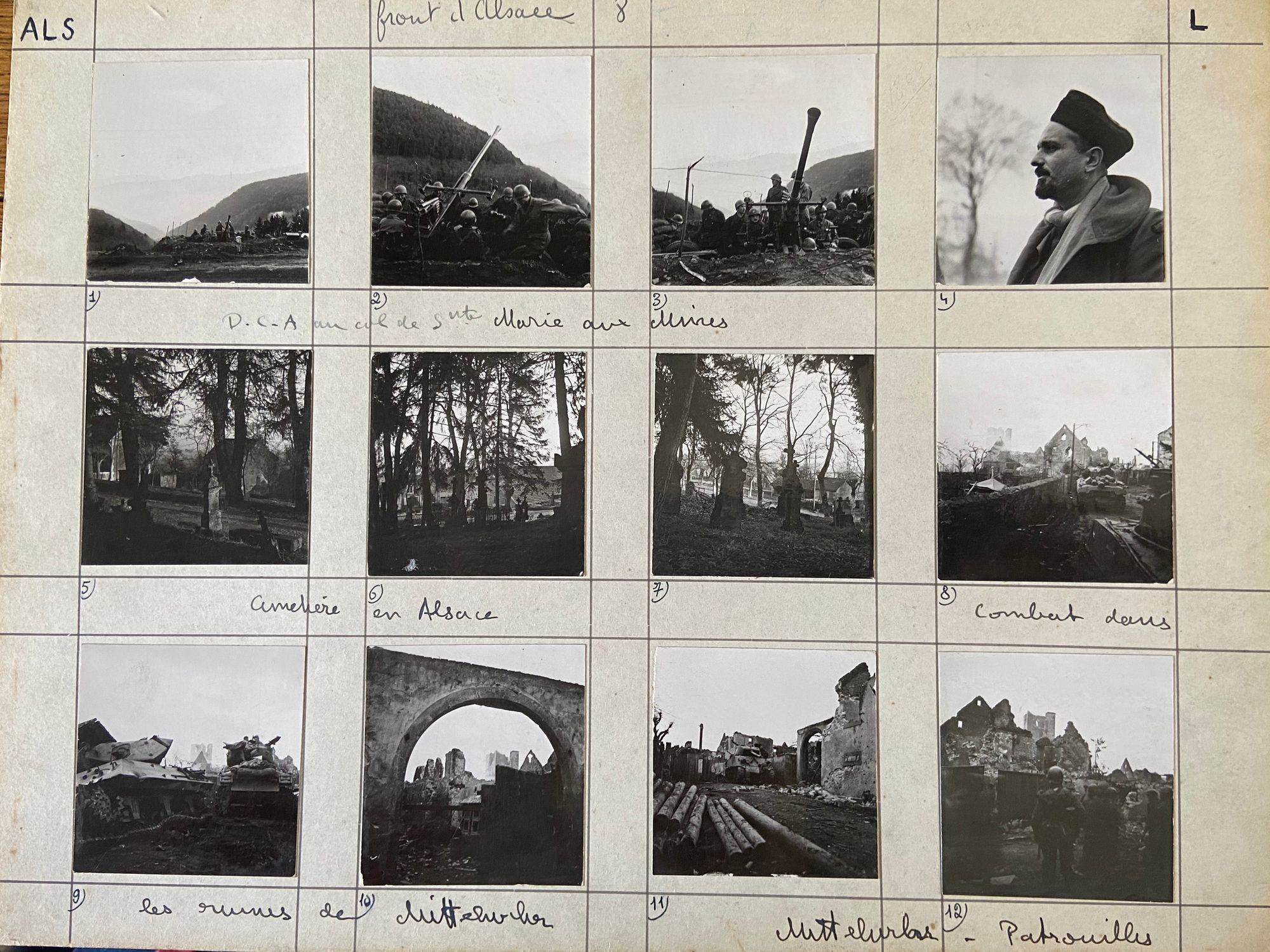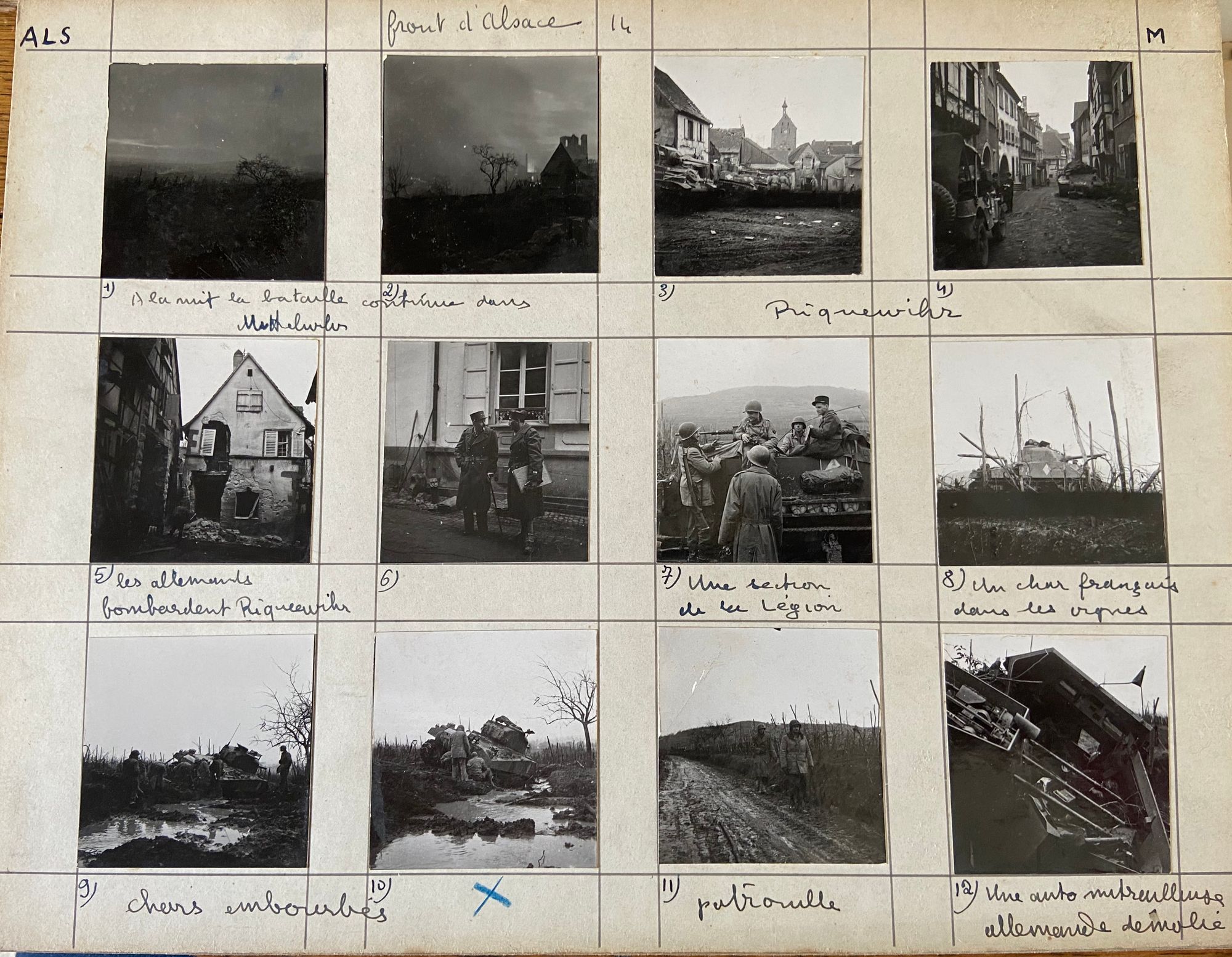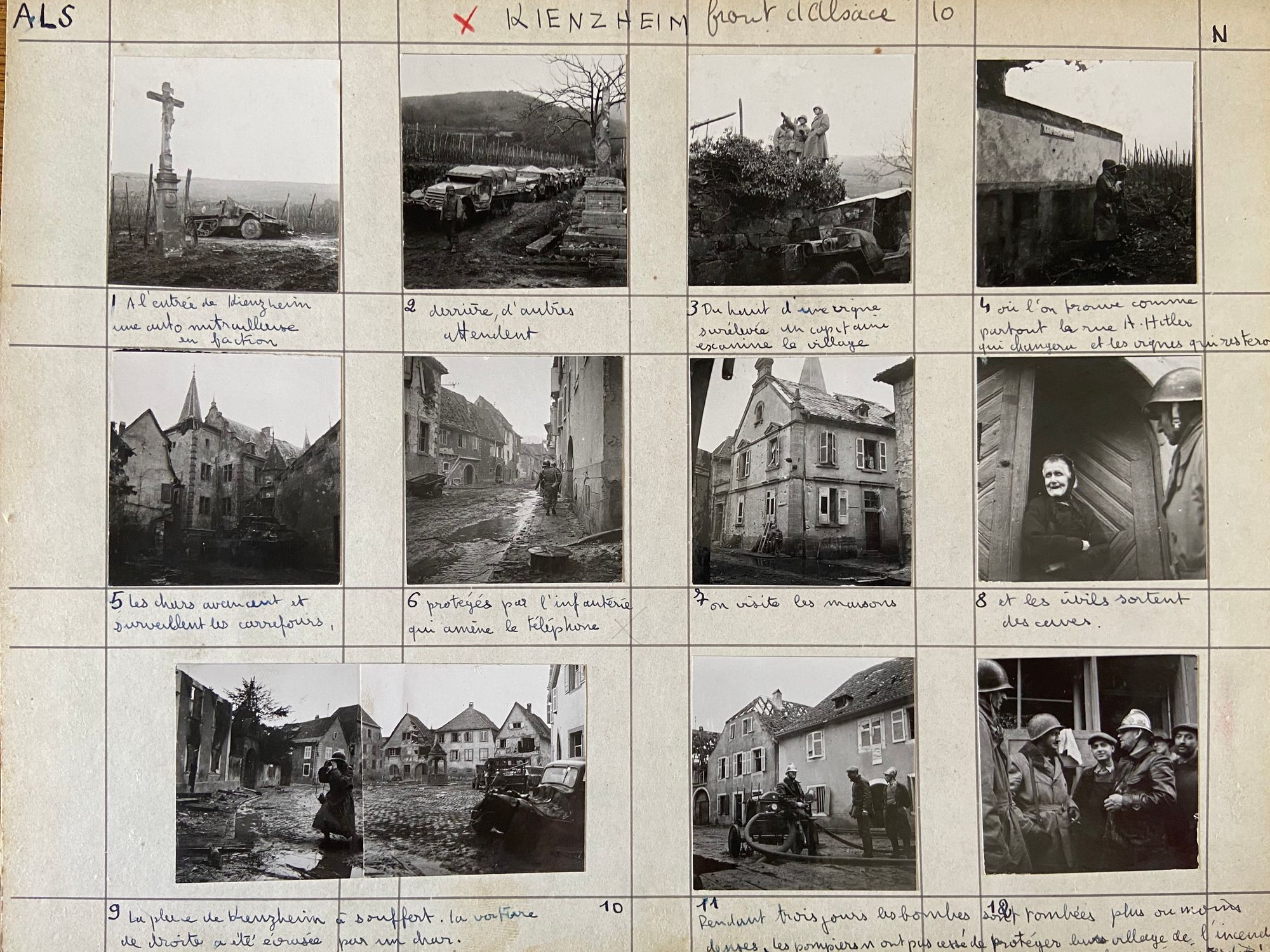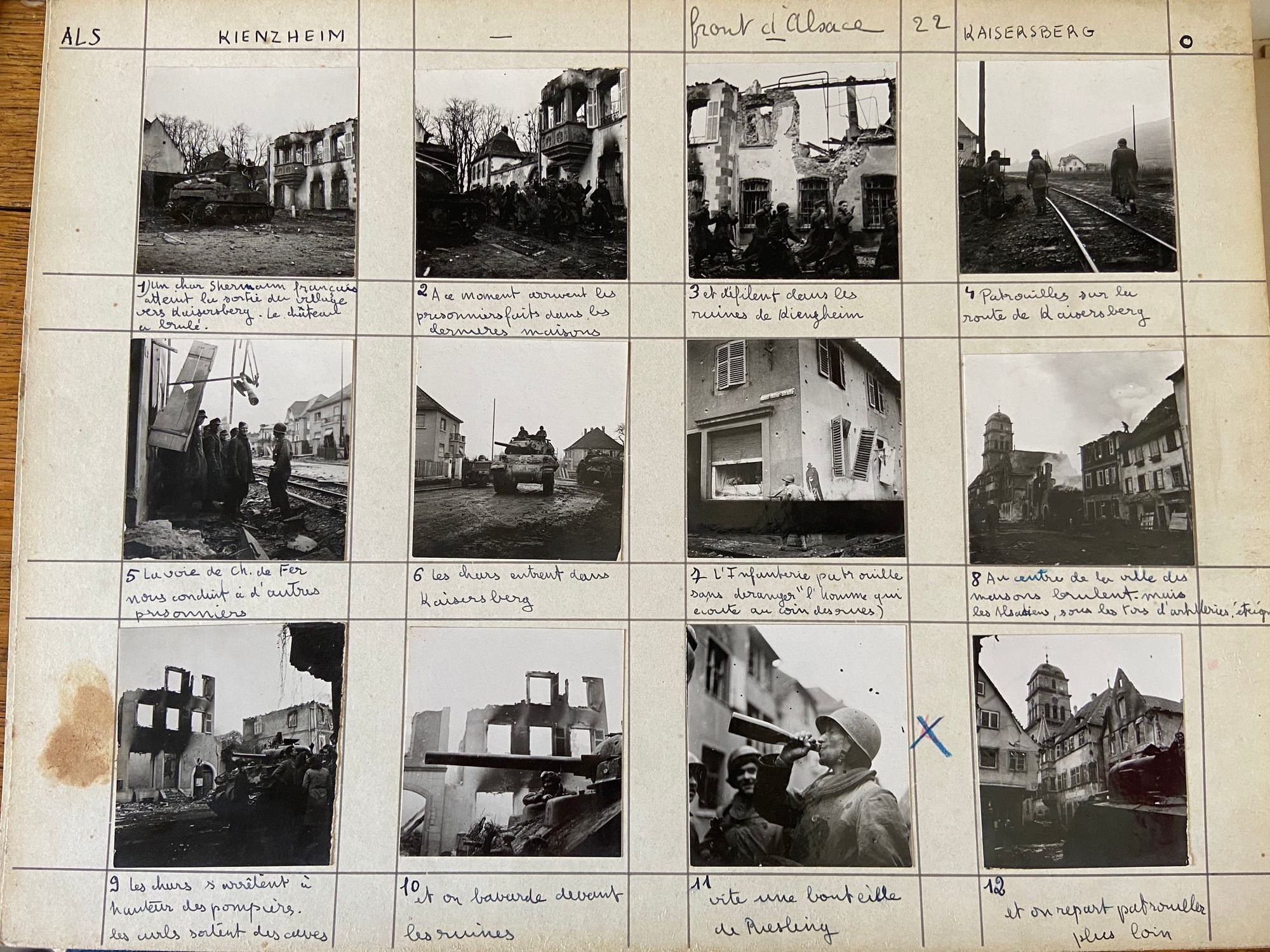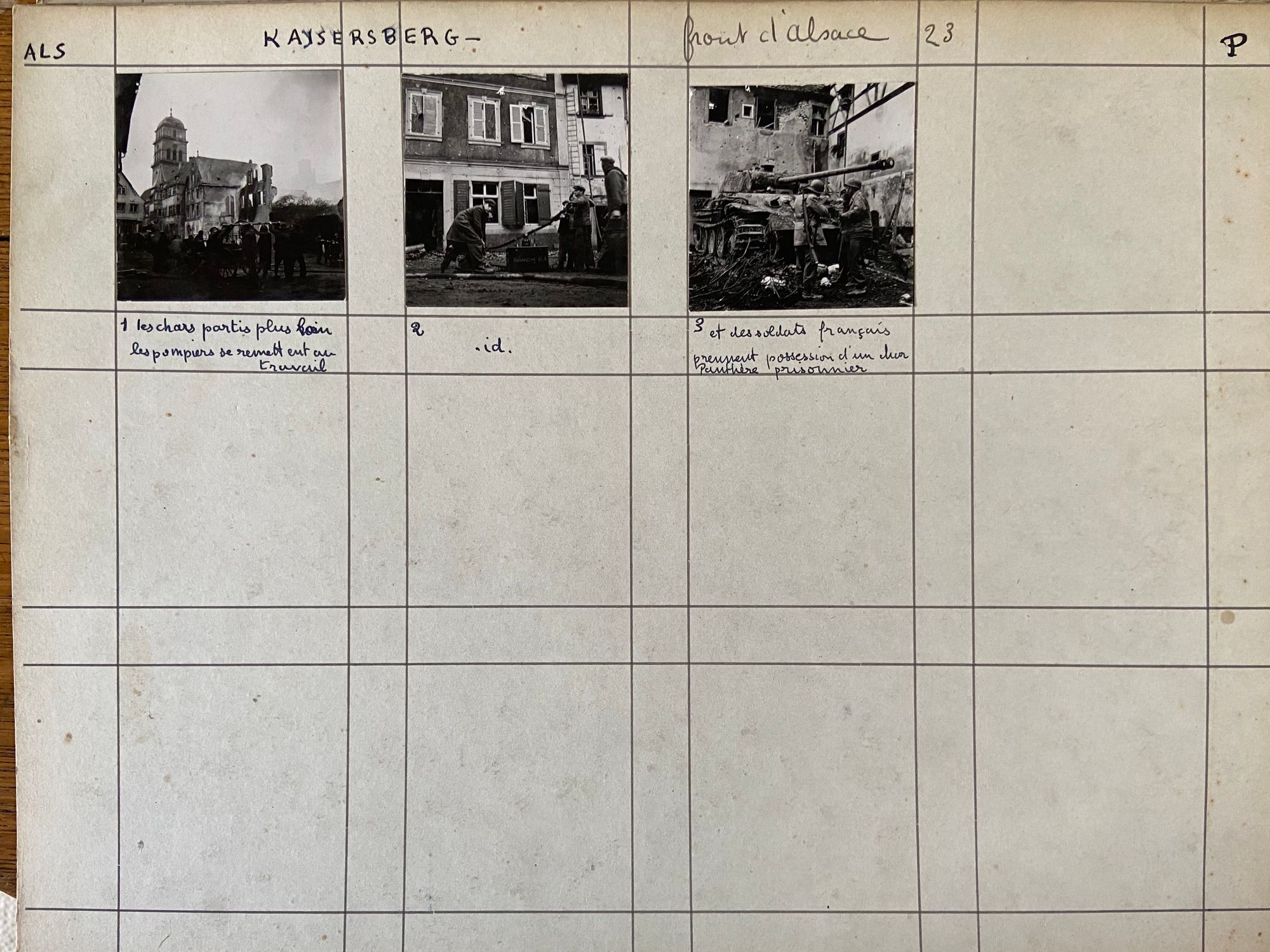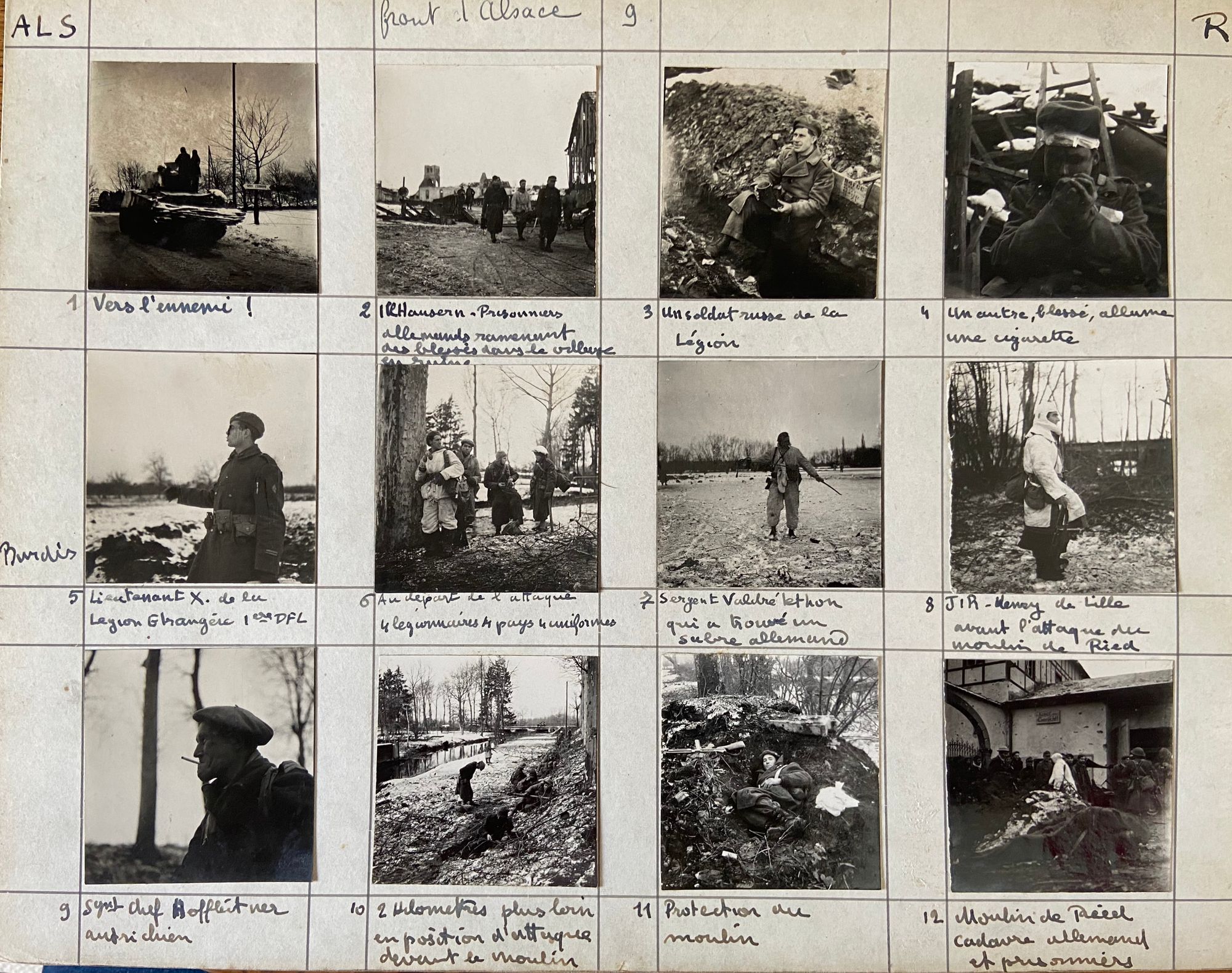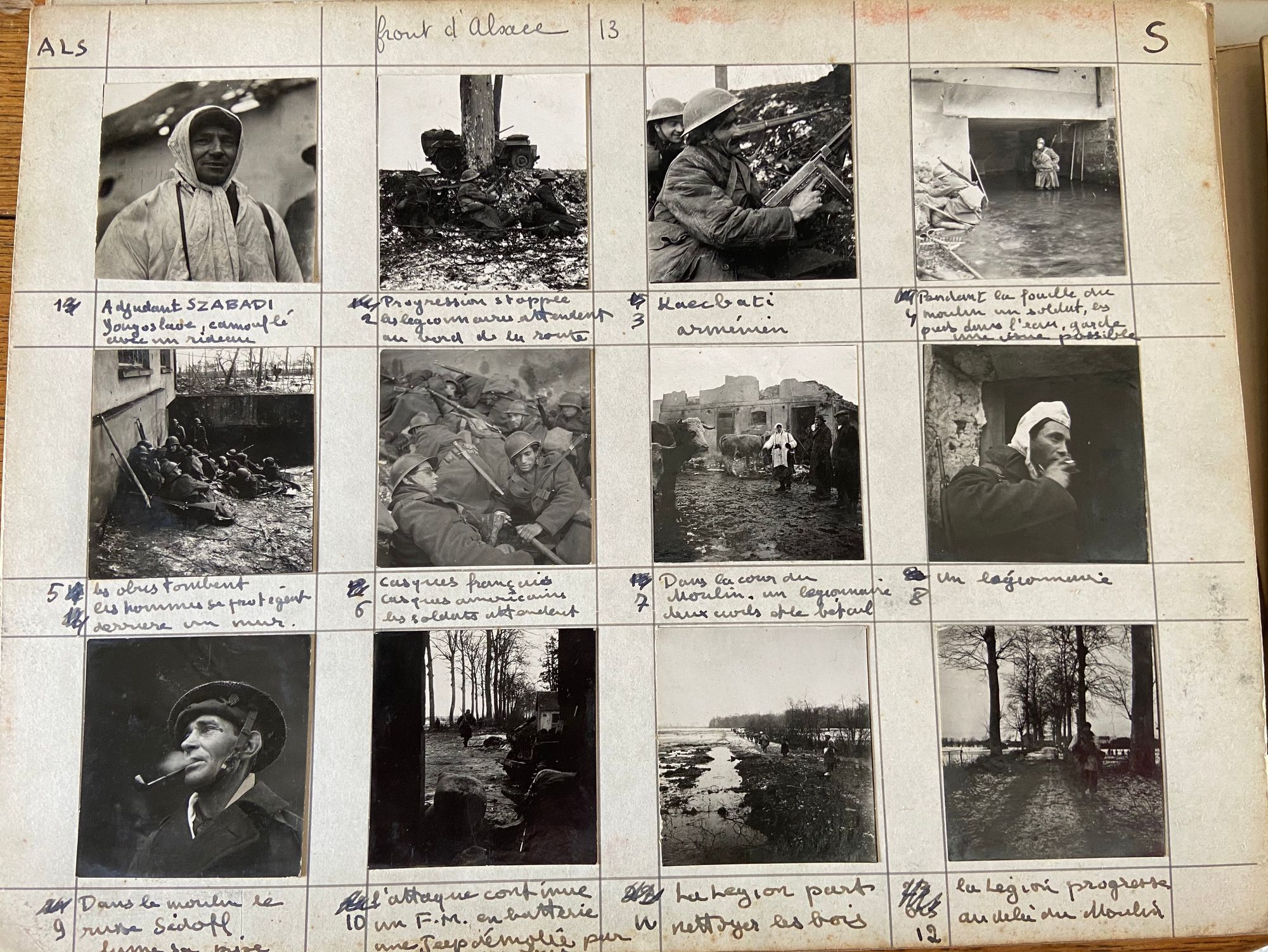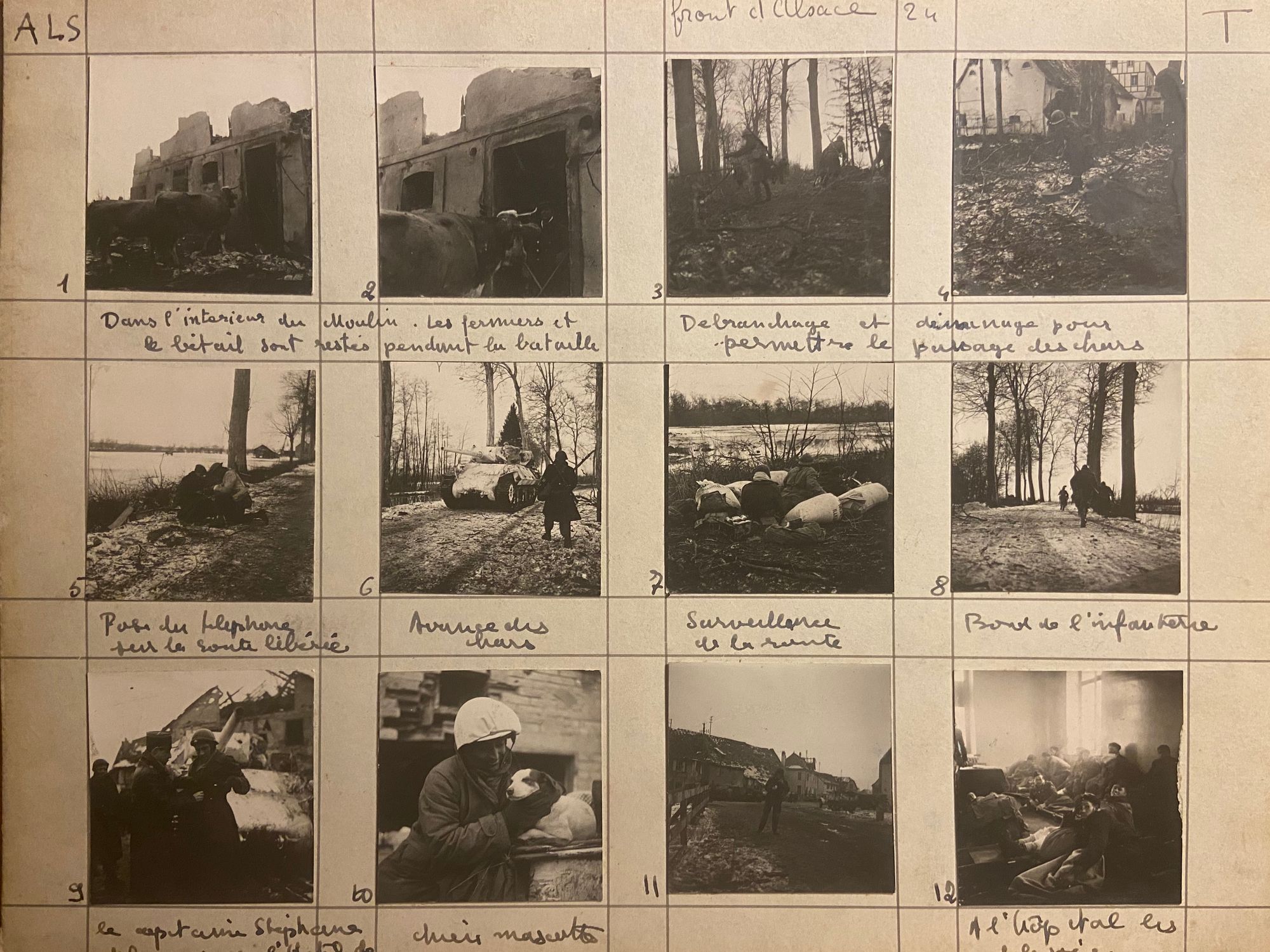Alsace, 1945
Skip ahead
In autumn 1944 and winter 1945, Pierre followed the First French Army, which fought particularly hard in the liberation of Alsace. He documented the "Colmar pocket" battle, one of the bloodiest weeks of the Liberation, where he was wounded.
Photos are shared here with his own captions (in italics in French and English) and additional research. I'm grateful to local historians and elders who shared so much of their knowledge. All credits and links at the bottom of the page. Most images are scanned from negatives and available in high resolution for public exhibition if you reach out. Negatives are missing for a couple dozen images, which are scanned in lower resolution from a contact sheet.
Based on the order of his catalogue, Pierre visited the following towns and villages in this order:
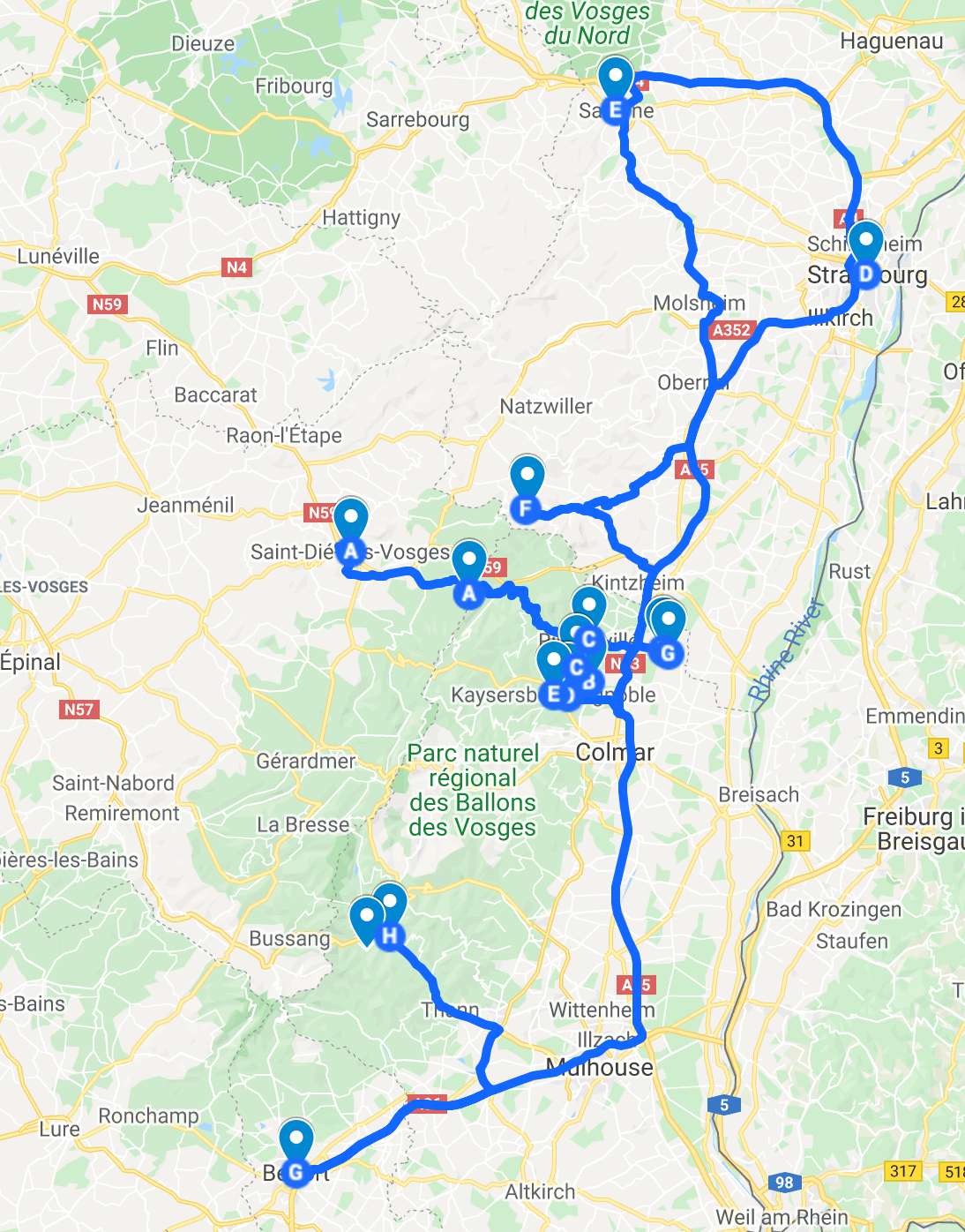
- Saint-Dié-des-Vosges
- Sainte-Marie-aux-Mines pass (col de Sainte-Marie-aux-Mines)
- Ribeauvillé
- Strasbourg
- Saverne
- Urbeis
- Belfort
- Ranspach
- Mollau
- Sainte-Marie-aux-Mines pass (col de Sainte-Marie-aux-Mines)
- Mittelwihr
- Riquewihr
- Kientzheim
- Kaysersberg-Vignoble
- Illhaeusern
- Ried mill (Moulin du Ried)
Not the most sensical geographical order but so is war. Photos end at the devastating attack of the mill on the Ried outside Illhaeusern, where Pierre was wounded. He received a Croix de Guerre with silver star commendation for his bravery in documenting the war.
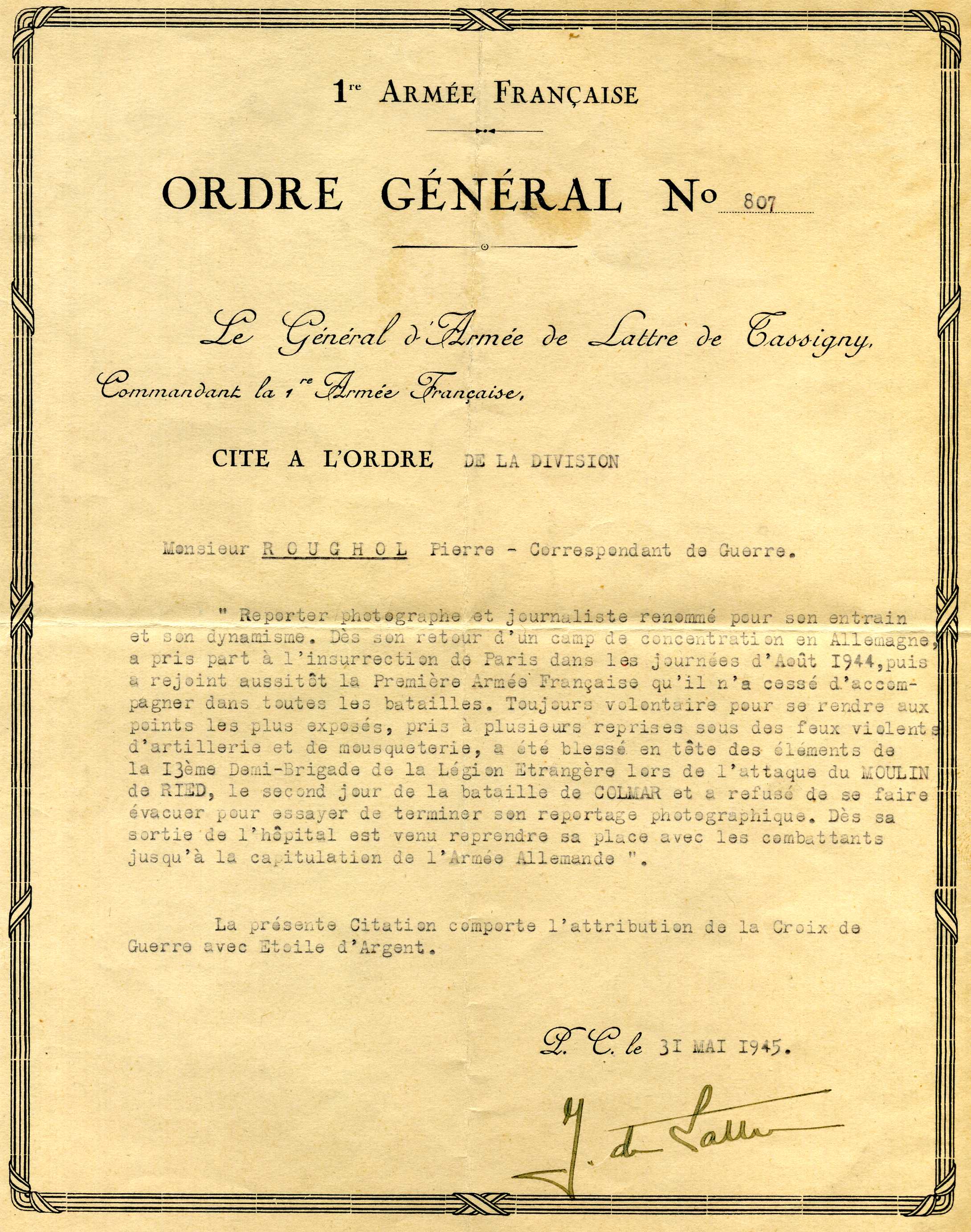
Saint-Dié-des-Vosges
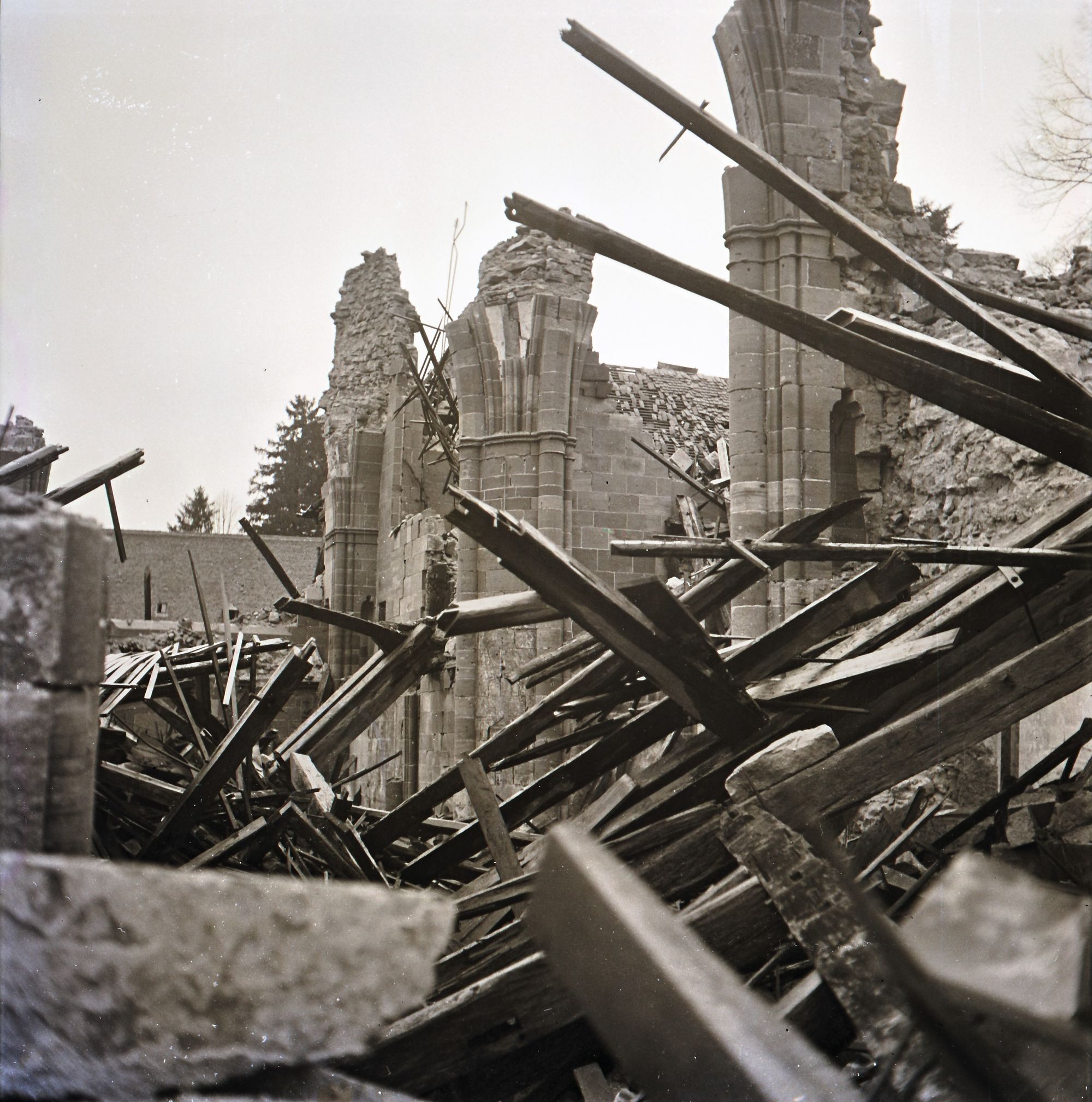
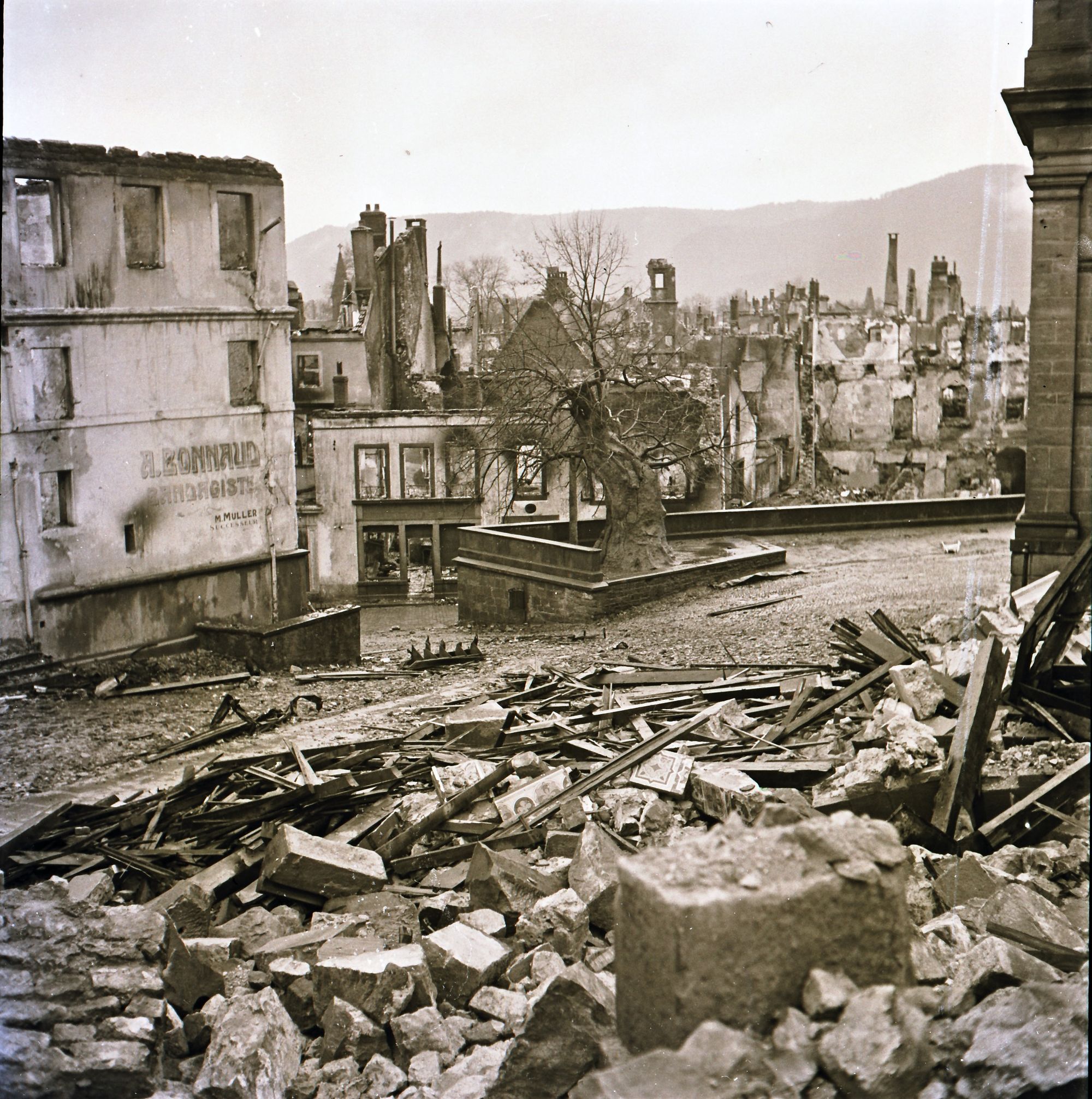
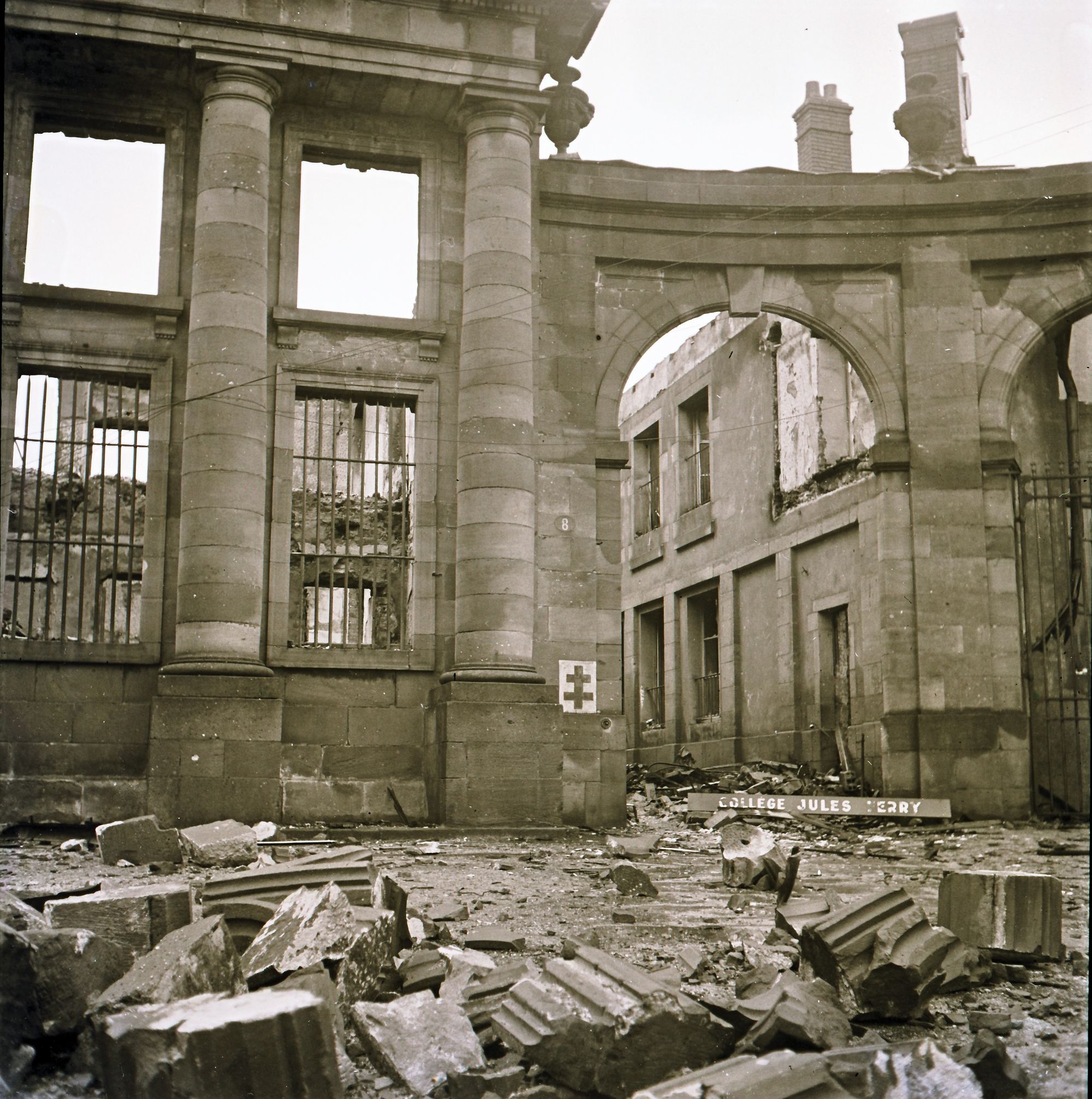
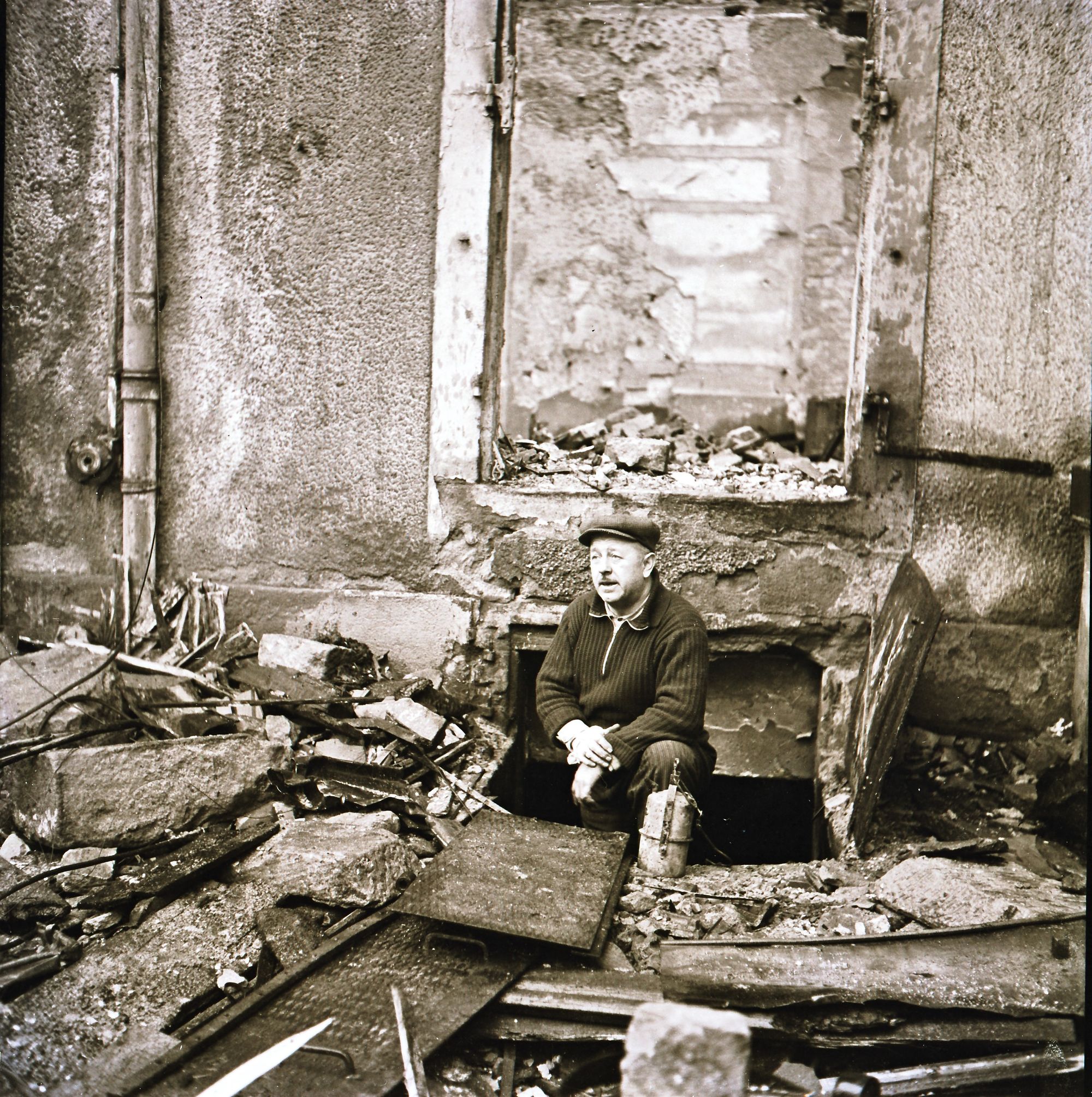
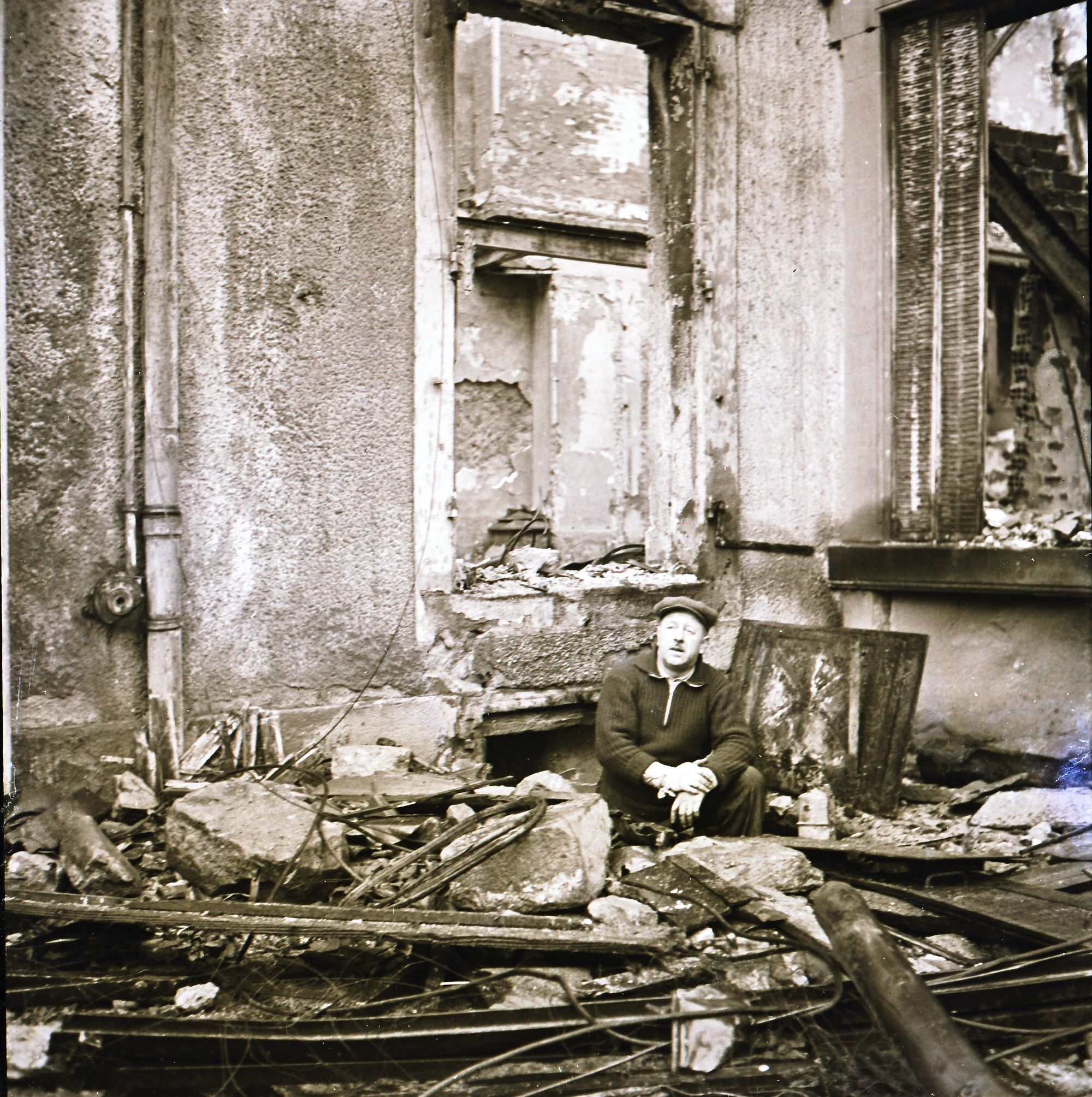
A1-12. no captions
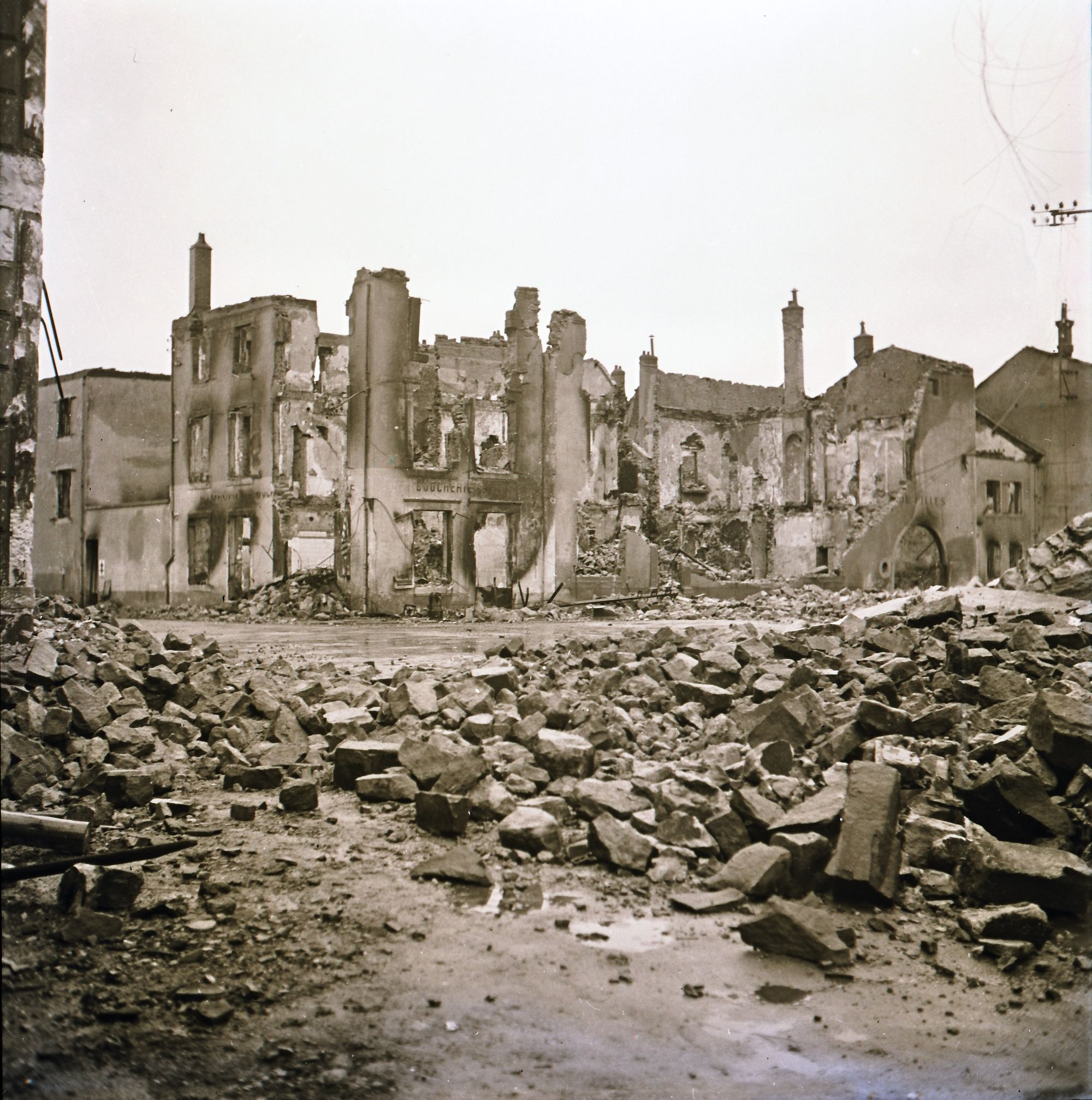
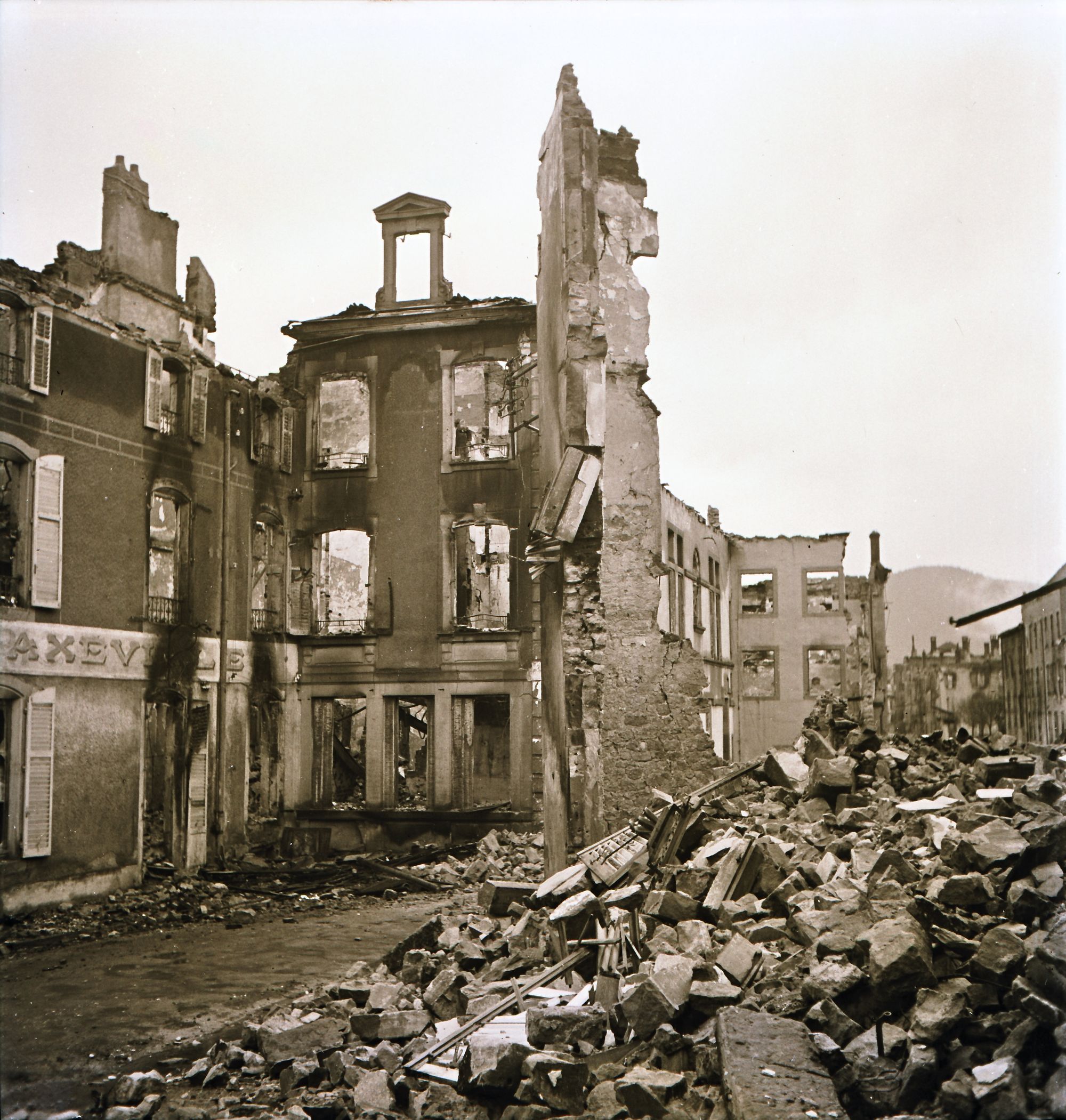
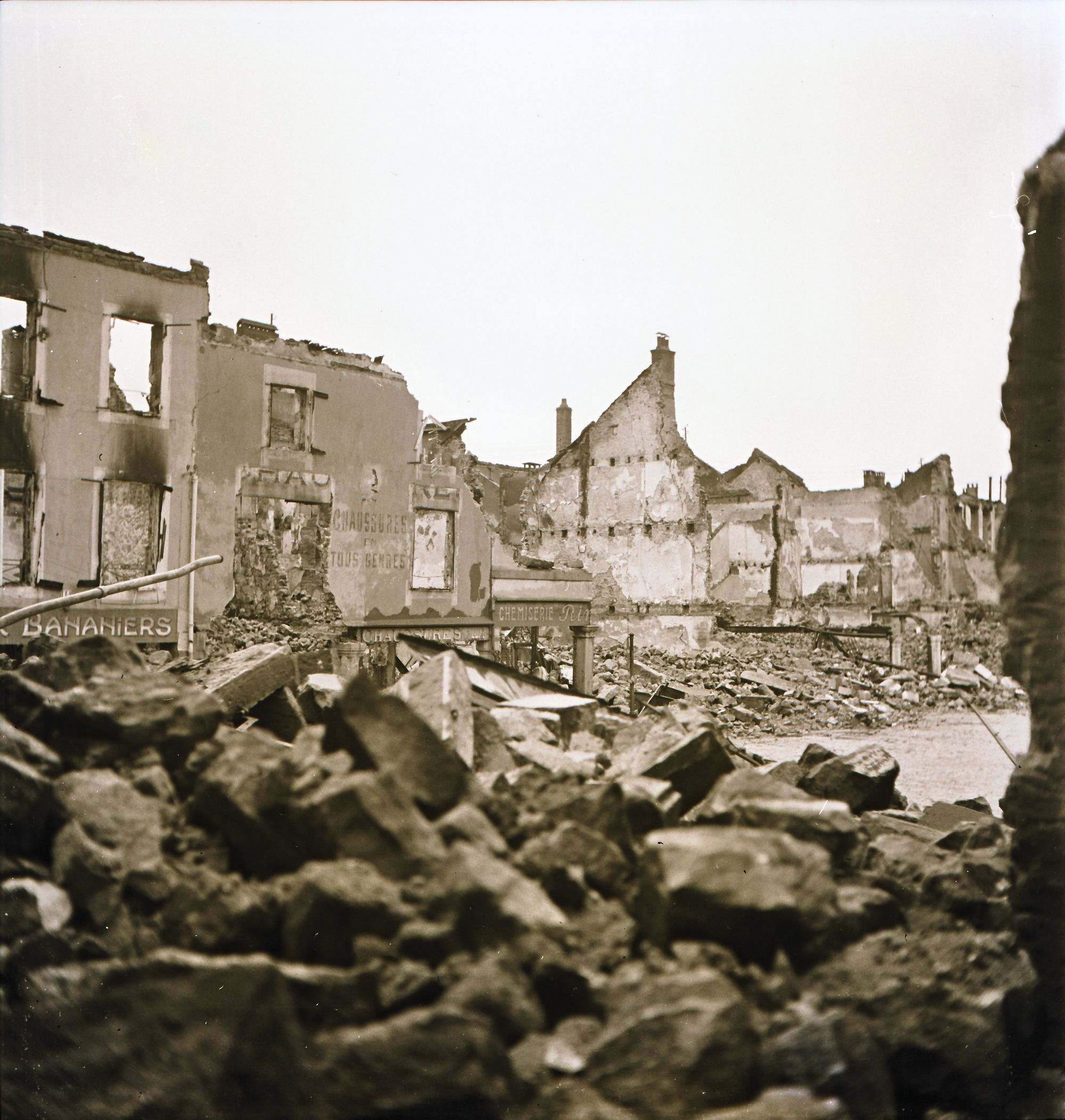
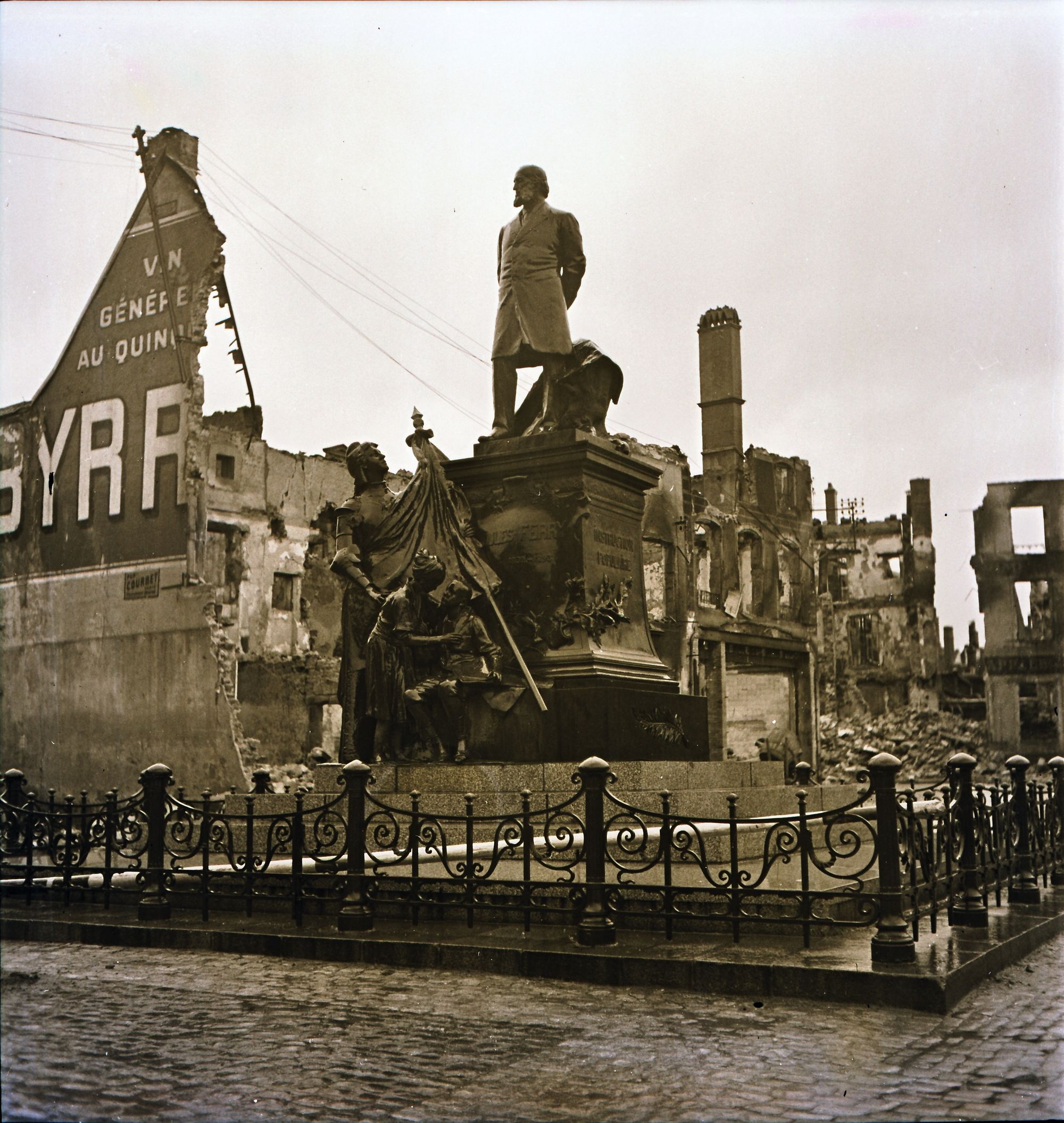
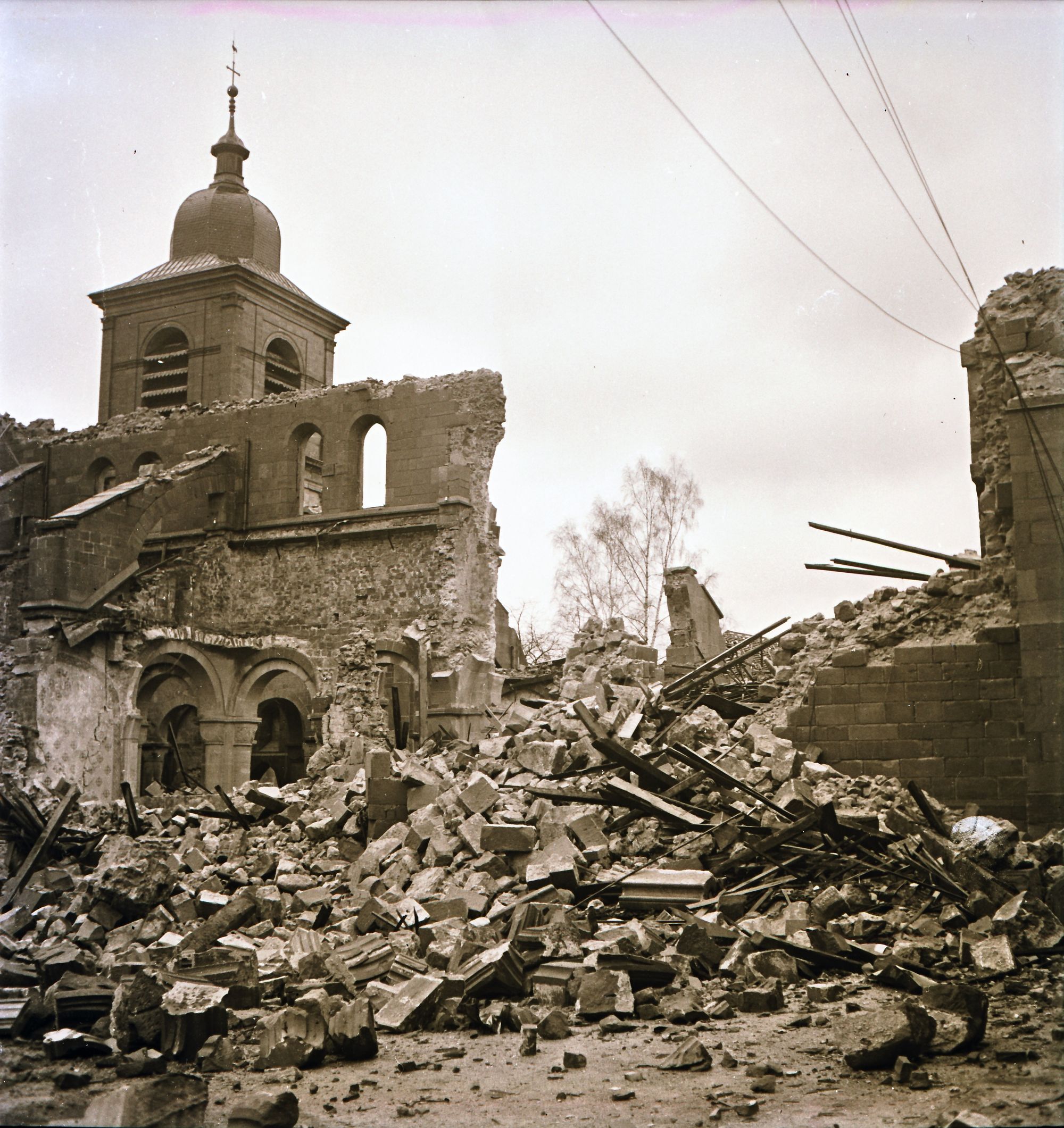
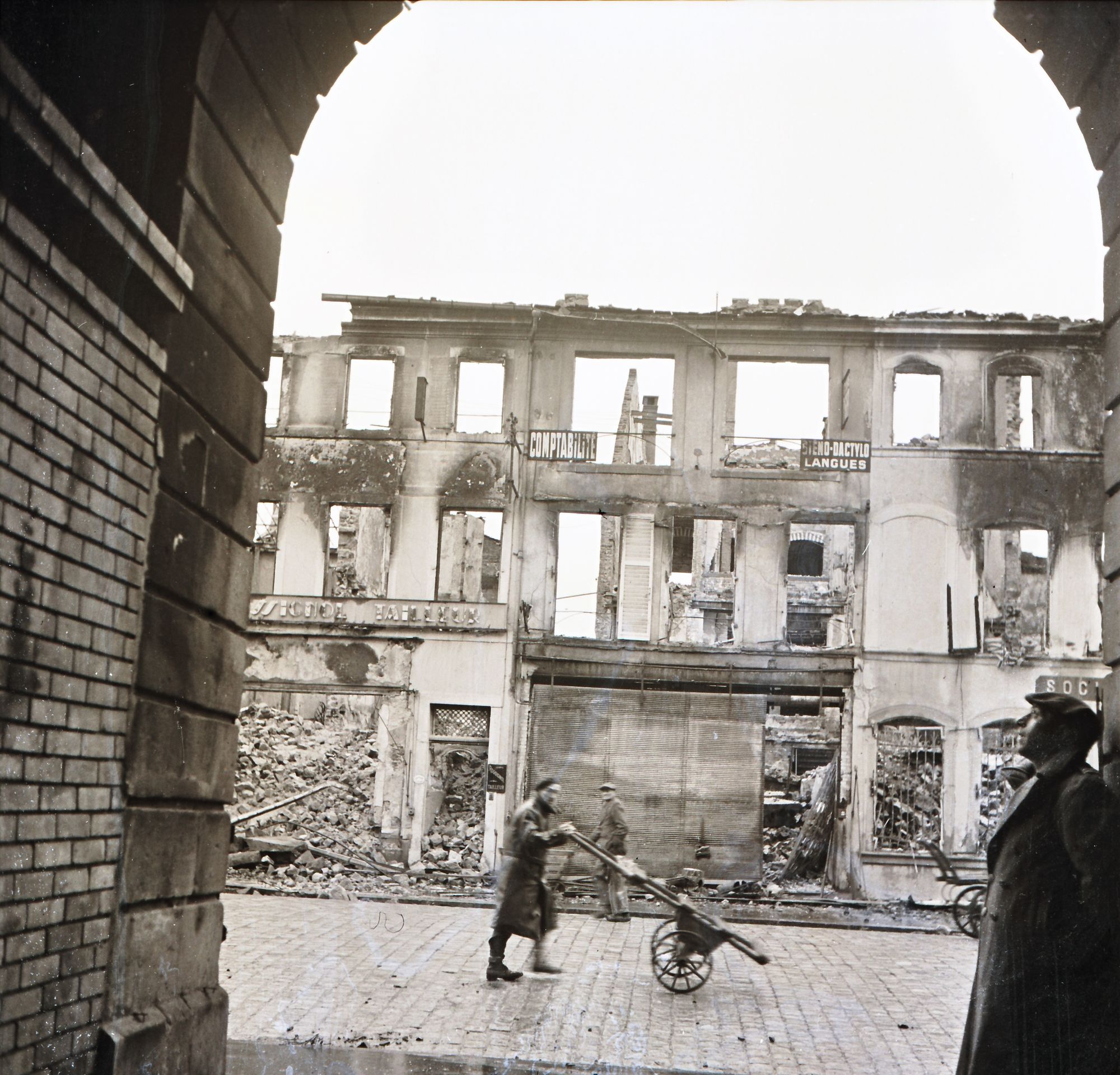
A1-12 no captions
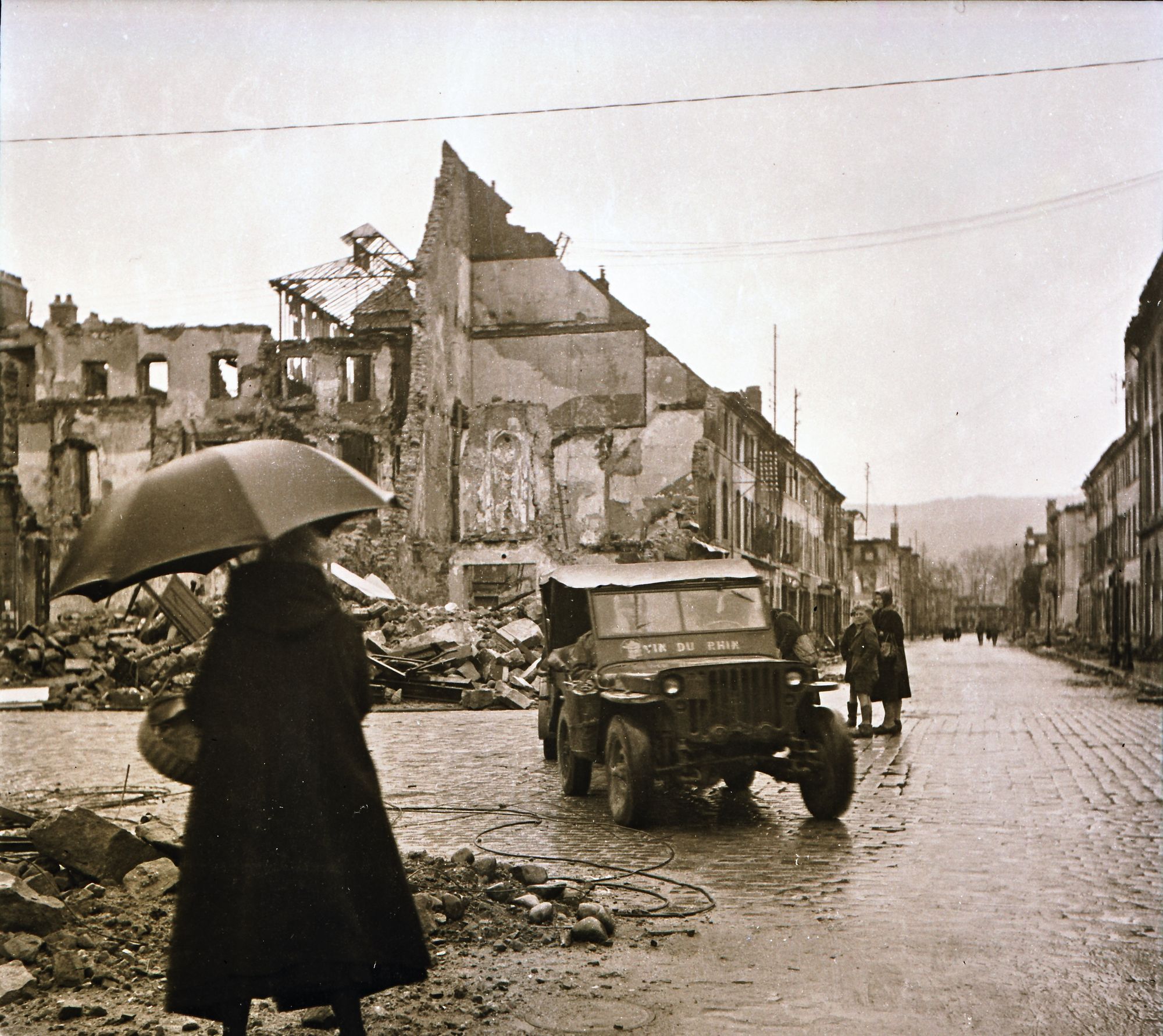
Sainte-Marie-aux-Mines
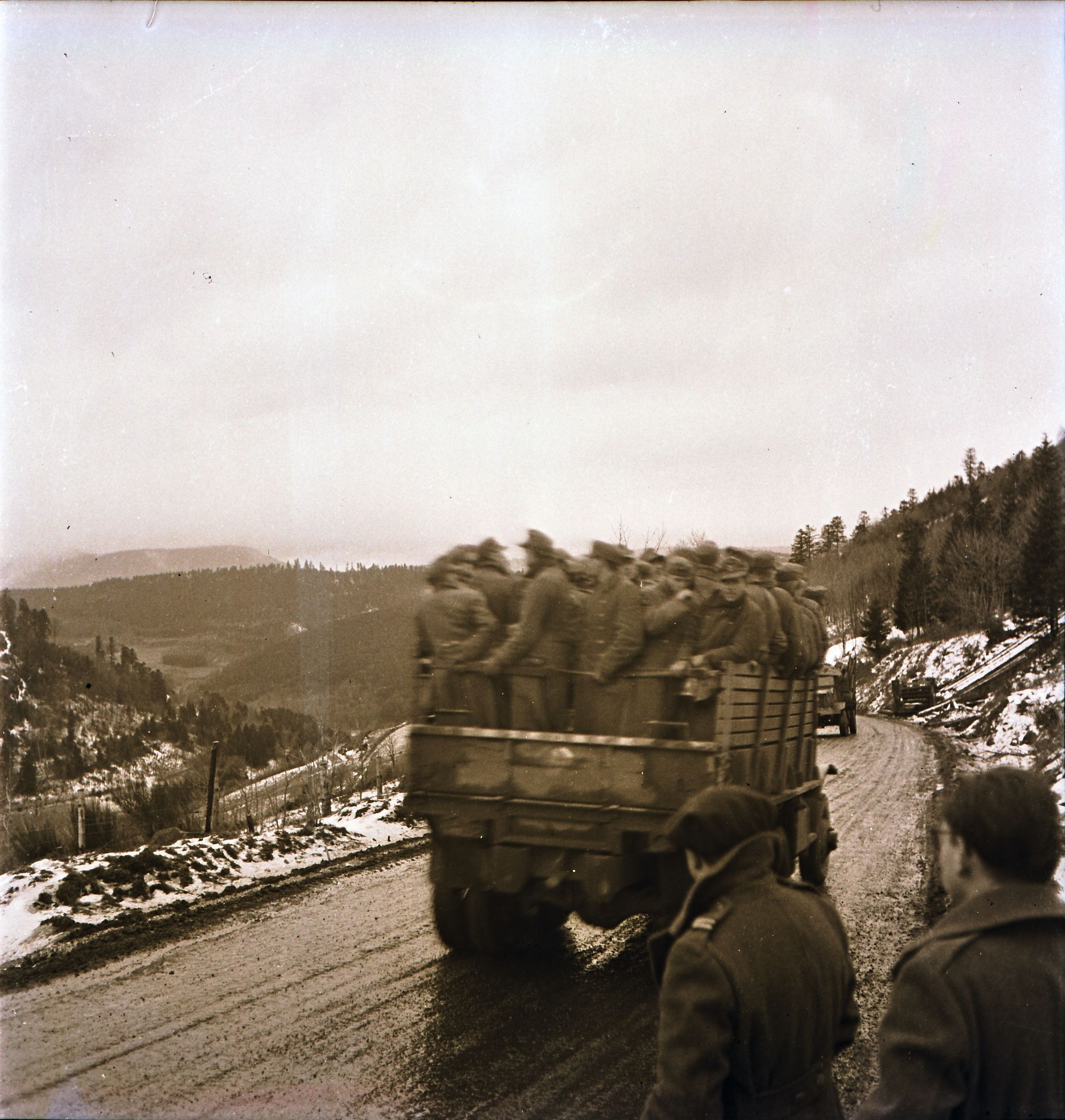
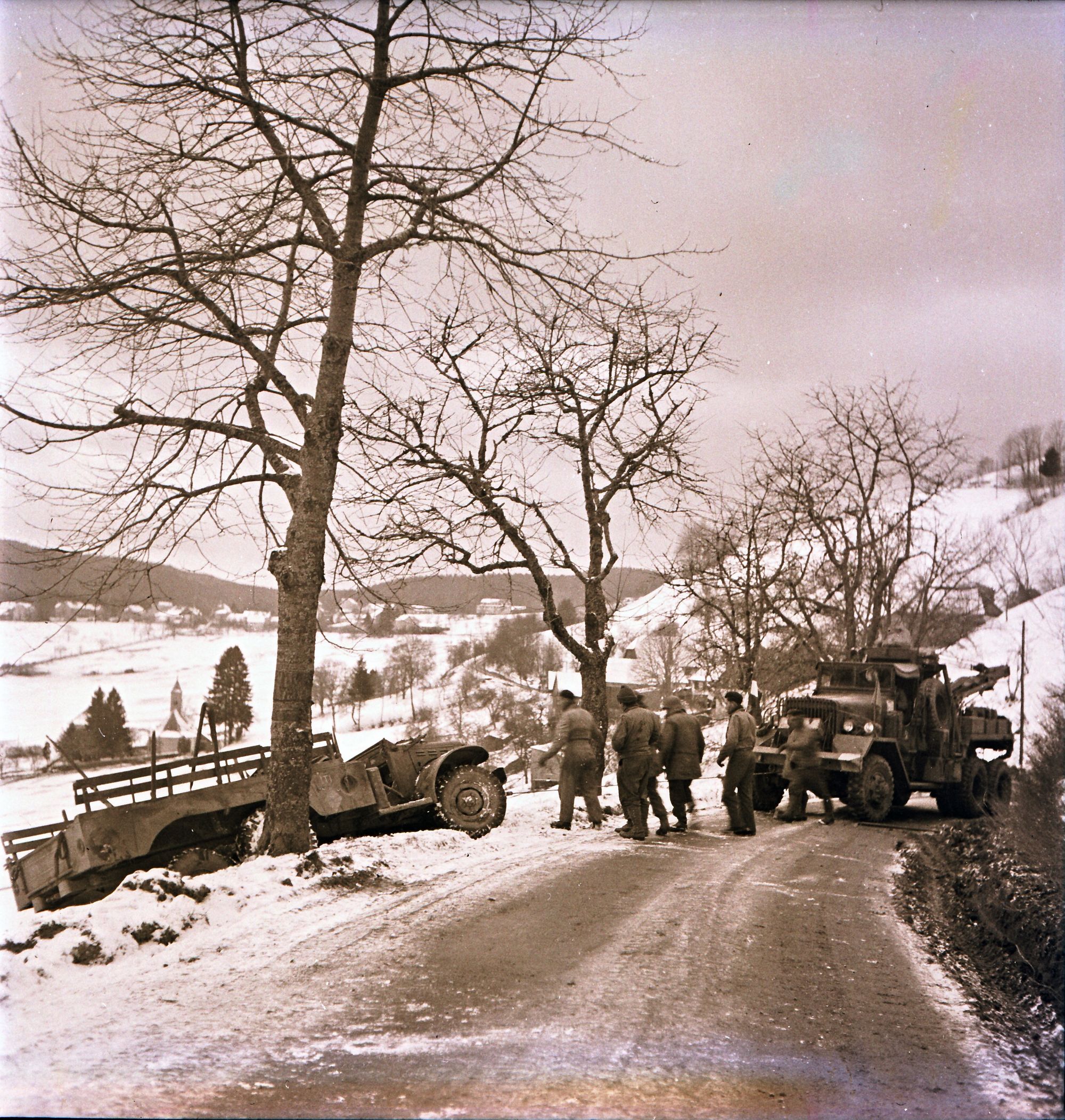
B2. German prisoner convoi going down the Ste Marie aux Mines pass. Convoi de prisonniers allemands descendant le col de Ste Marie aux Mines B3. Towing a truck on a Vosges pass. Dépannage d’un camion dans un col des Vosges
Ribeauvillé
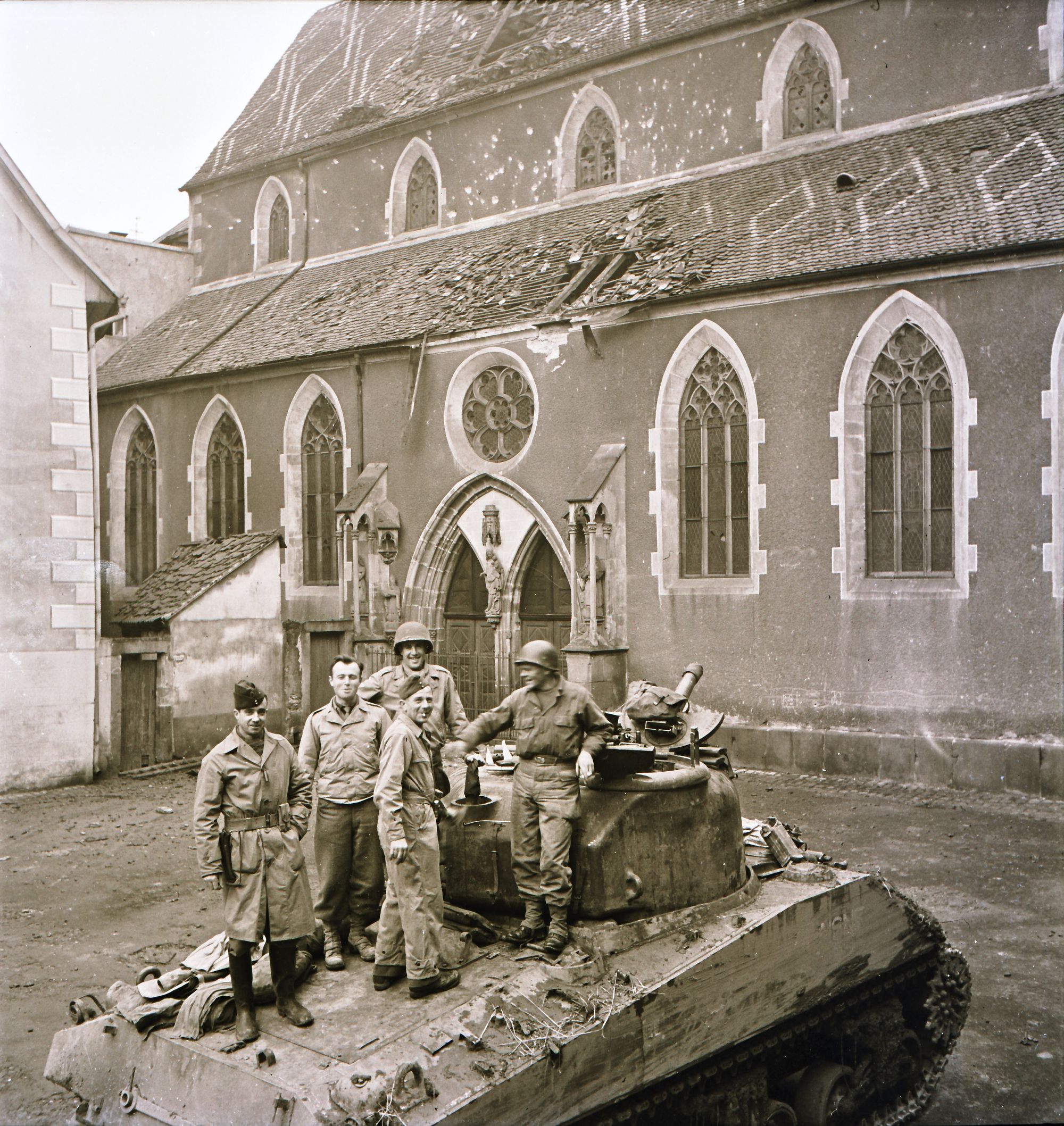
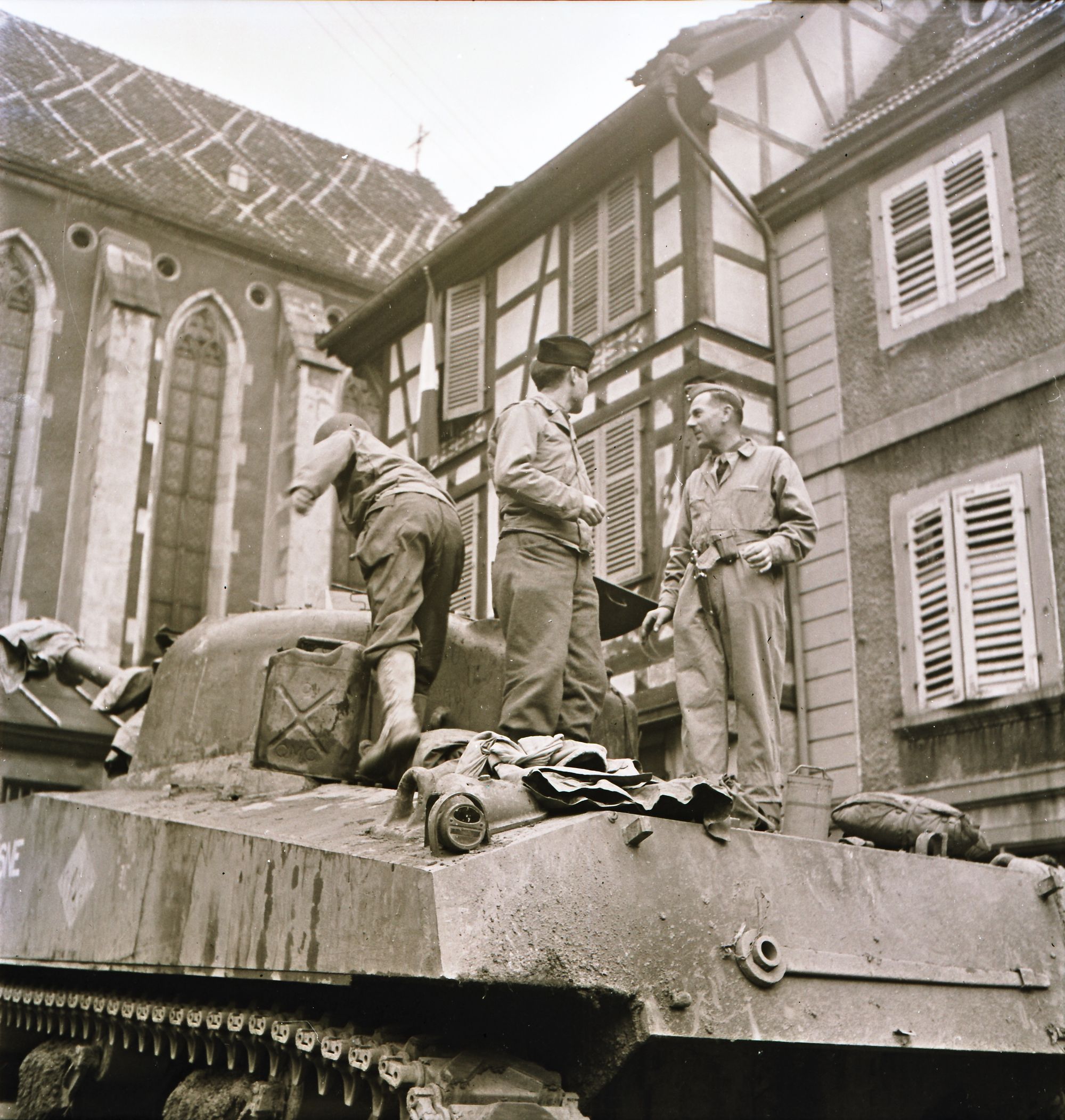
B4. A French Shermann tank in front of the Ribeauvillé church, which was just shelled. (Research note: Based on markings, perhaps L'Aisne II.) Un char Shermann français devant l’église de Ribeauvillé qui vient d’être bombardée. (Note de recherche: Vu le nom à demi effacé sur le côté du char, peut-être L’AISNE II, du 2ème RCA.)
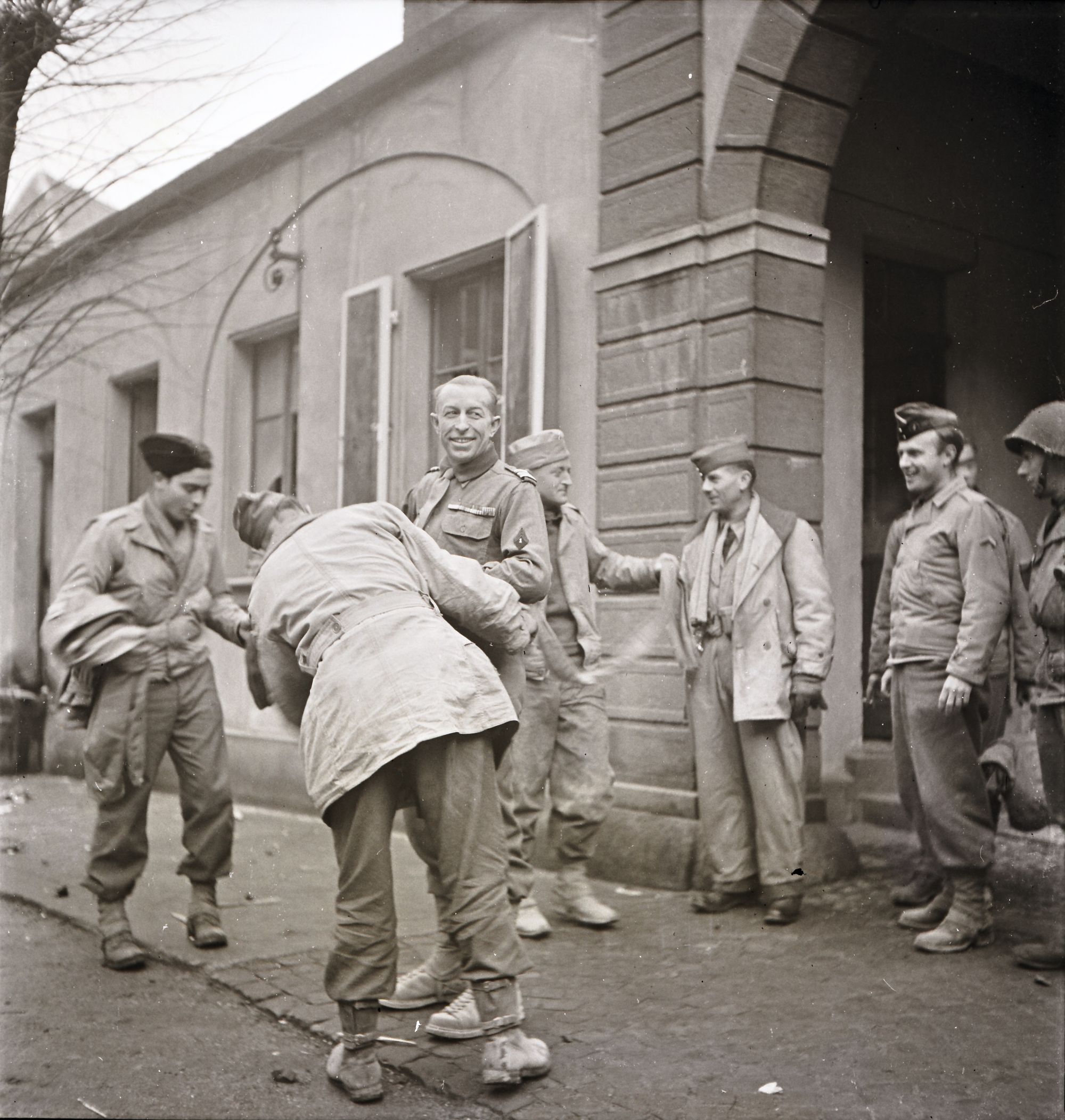
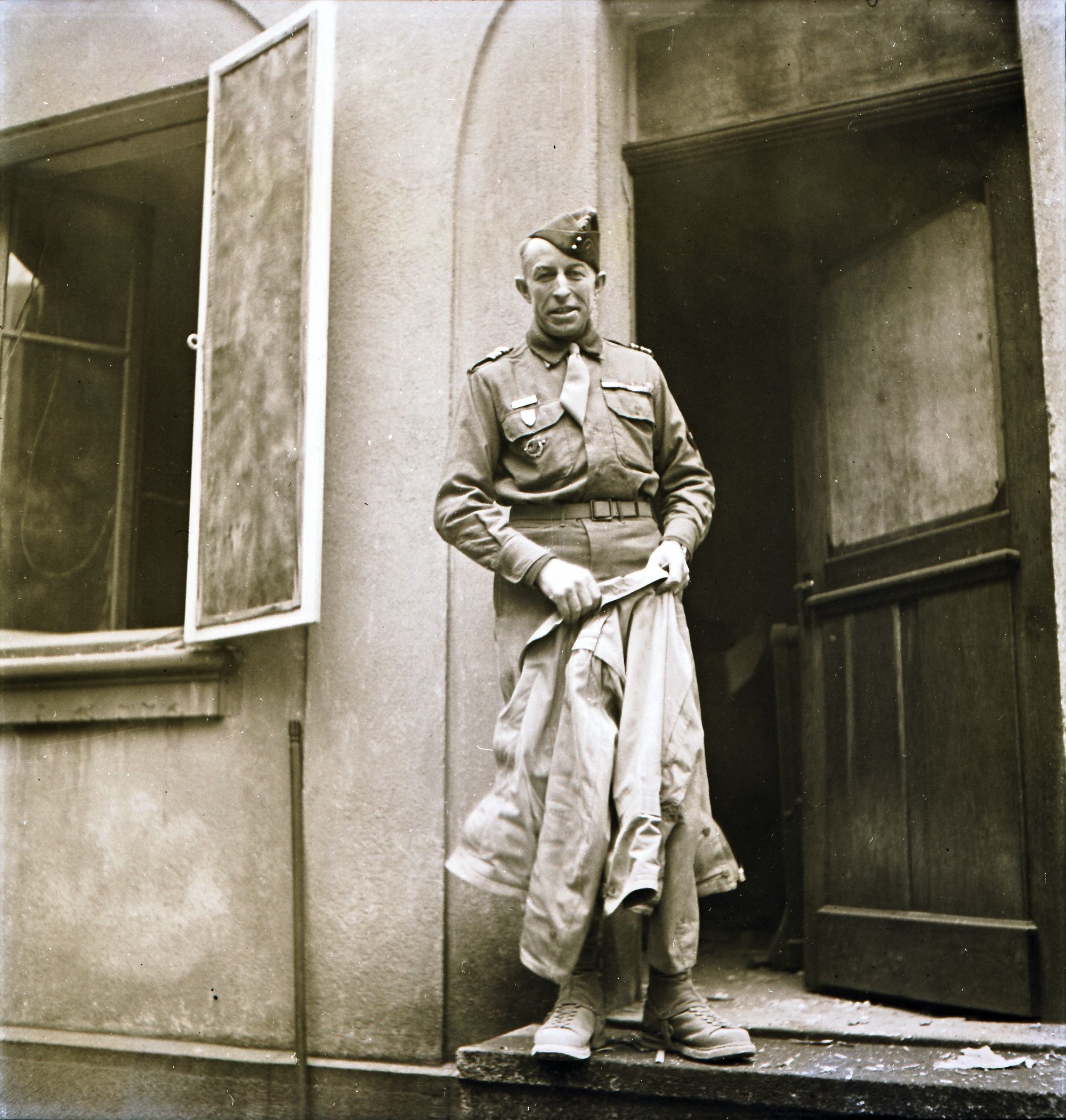
B6. B7. Colonel D... commanding the ... Cuirassier coming out of his command post, where a shell just fell without exploding. (Research note: Possibly Commandant Didelot, who led the 12th Cuirassier.) Le colonel D... commandant le ... Cuirassier sortant de son P.C. où un obus vient de tomber, sans exploser. (Note de recherche: Peut-être le commandant Didelot, en tête du 12e Cuirassier.)
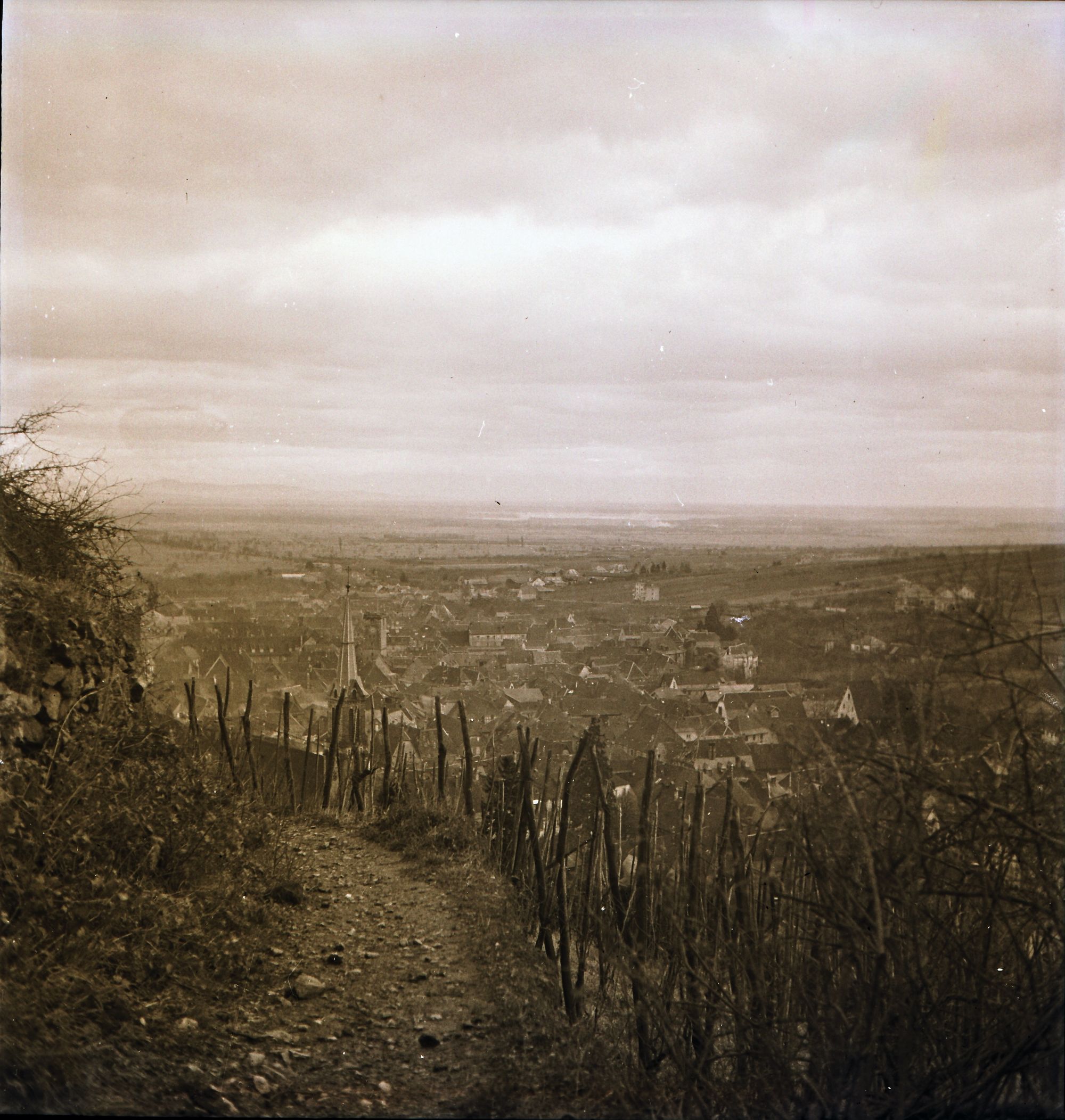
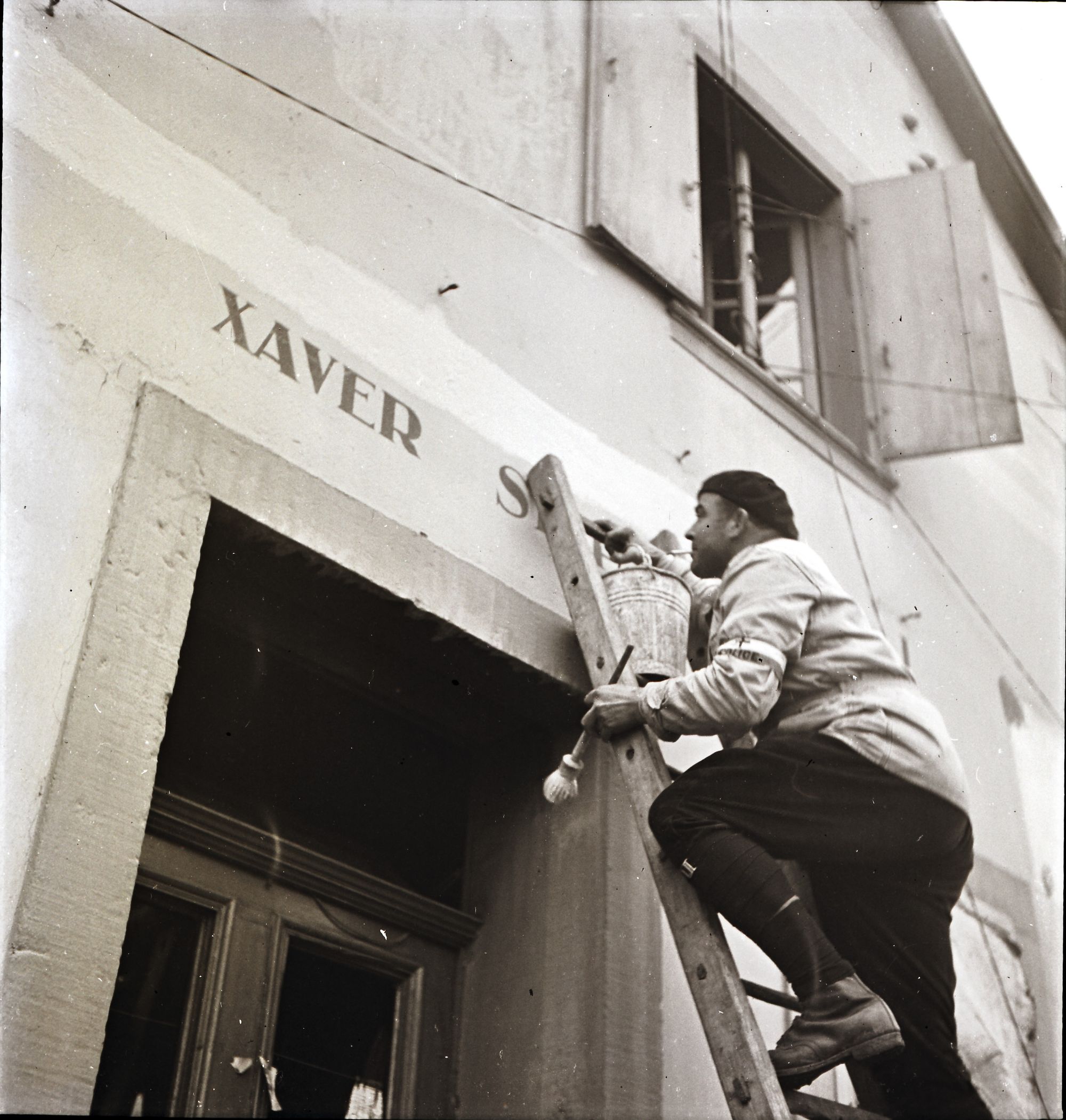
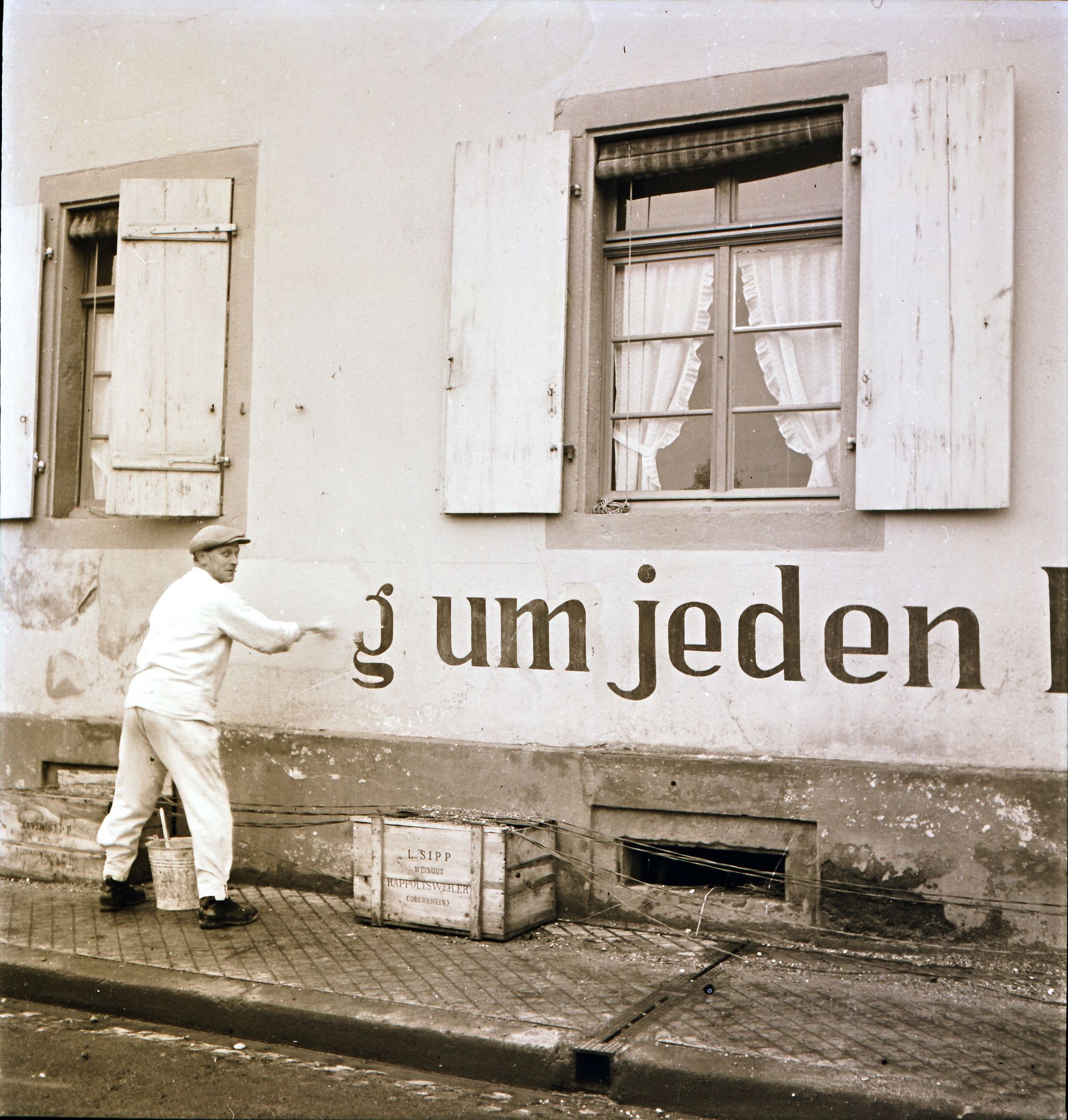
B9. B10. The residents of Ribeauvillé (including one FFI – French Forces of the Interior) rush to erase German signs. One reads "Sieg um jeden Preis." Victory at any cost. Les habitants de Ribeauvillé (dont 1 FFI) s’empressent d’effacer les inscriptions allemandes. Une dit "Sieg um jeden Preis." Victoire à tout prix.
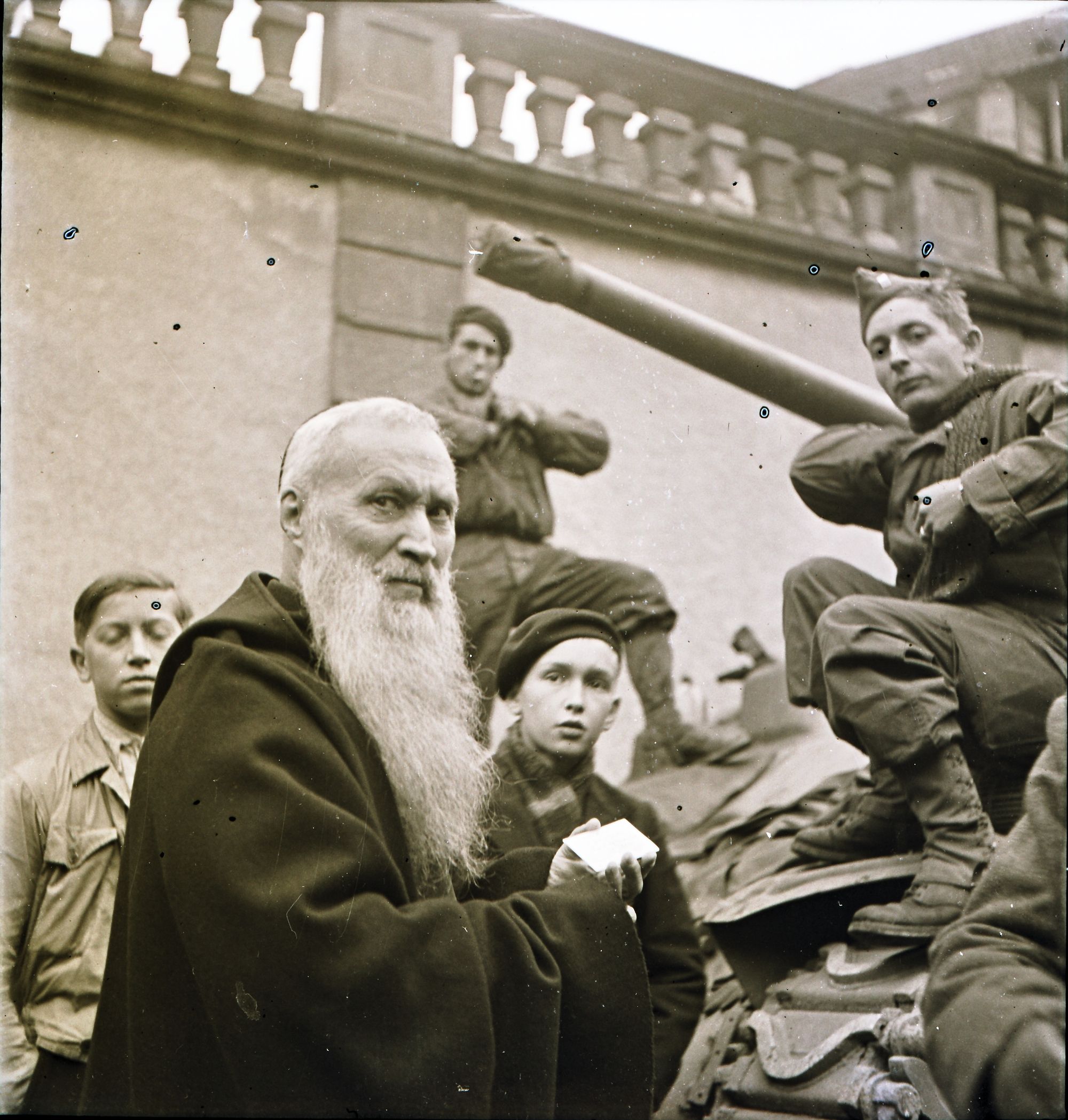
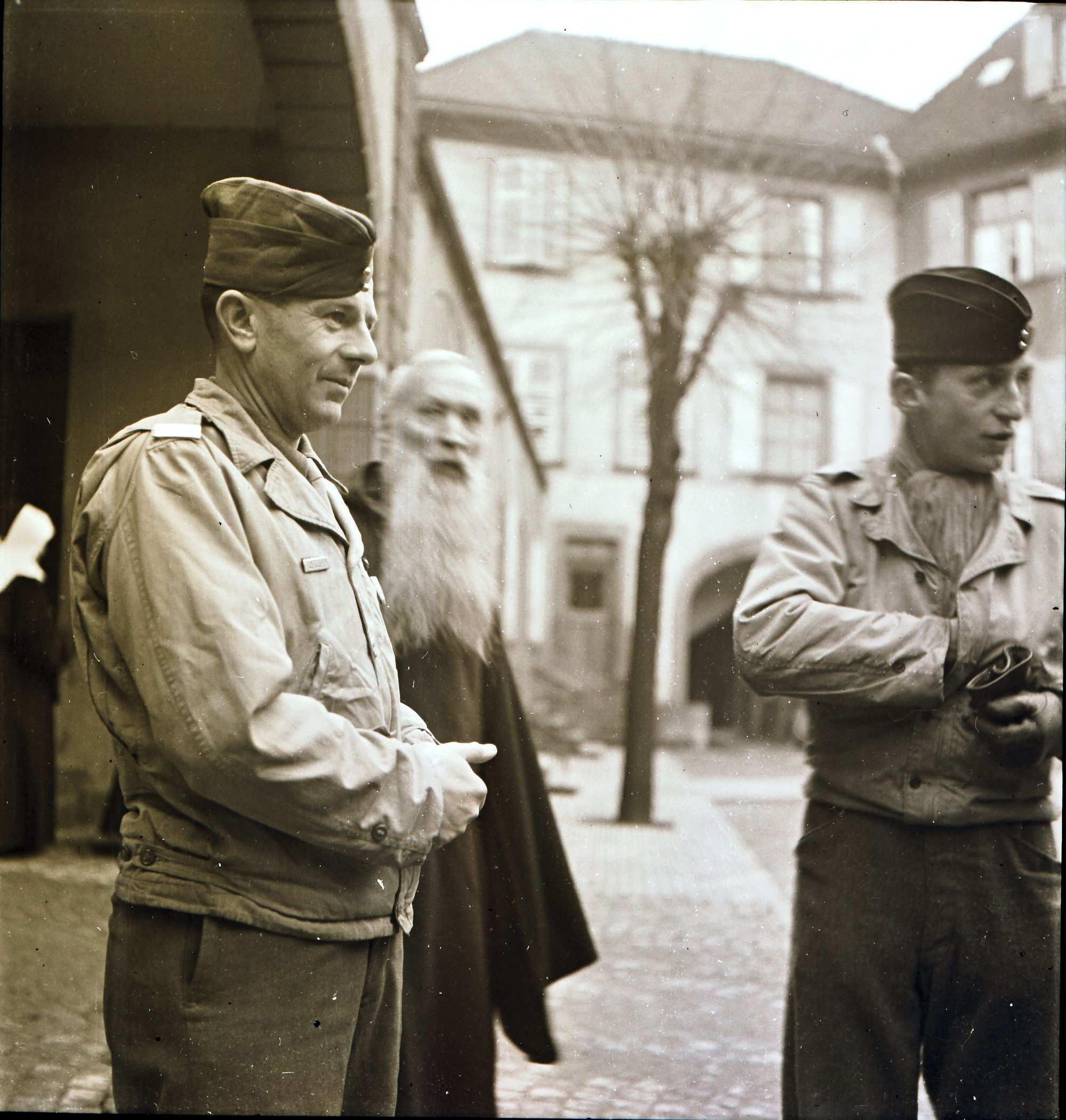
B11. B12. The abbott greats soldiers from the thank unit. Ribeauvillé – le père supérieur reçoit les motorisés.
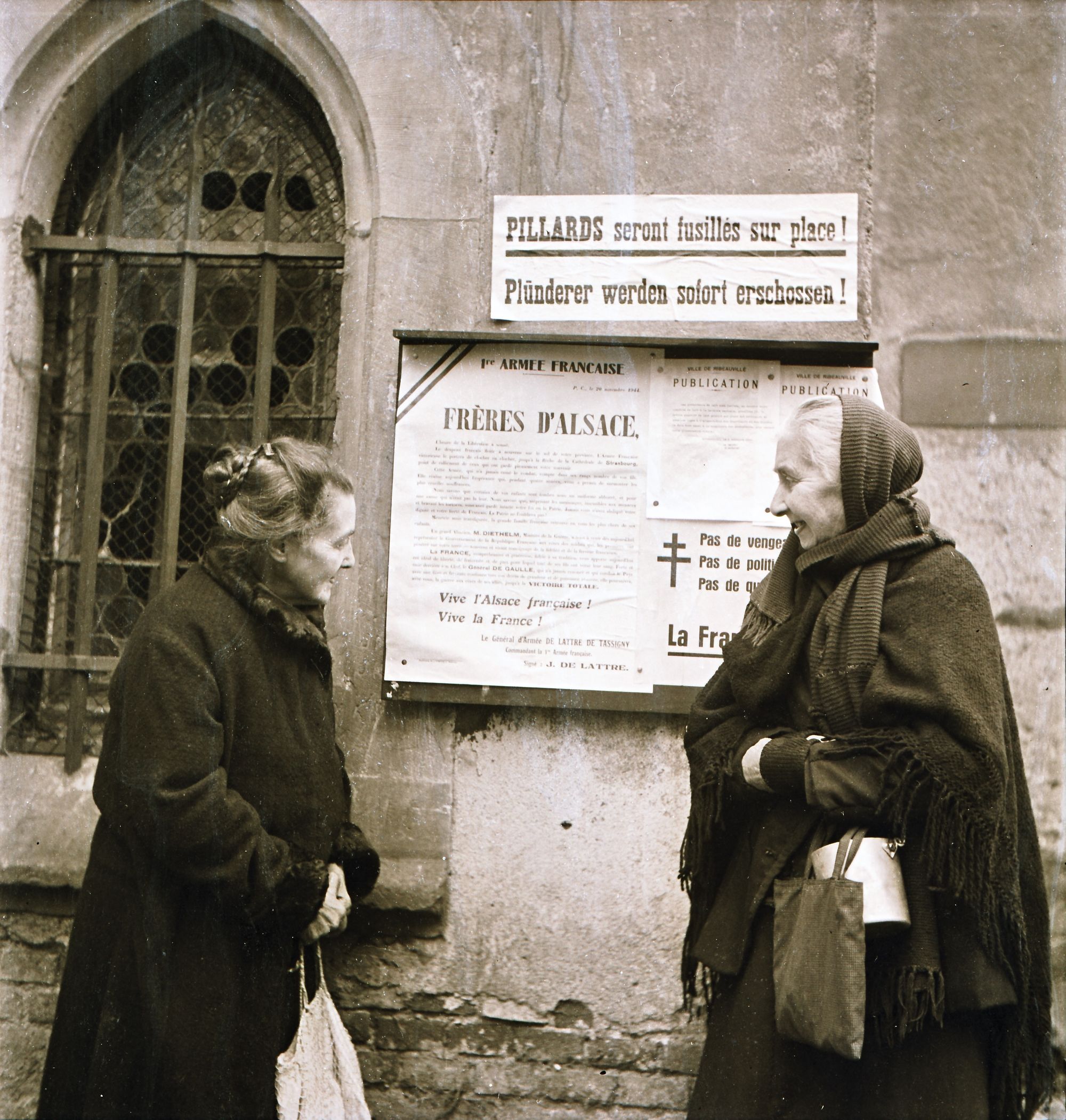
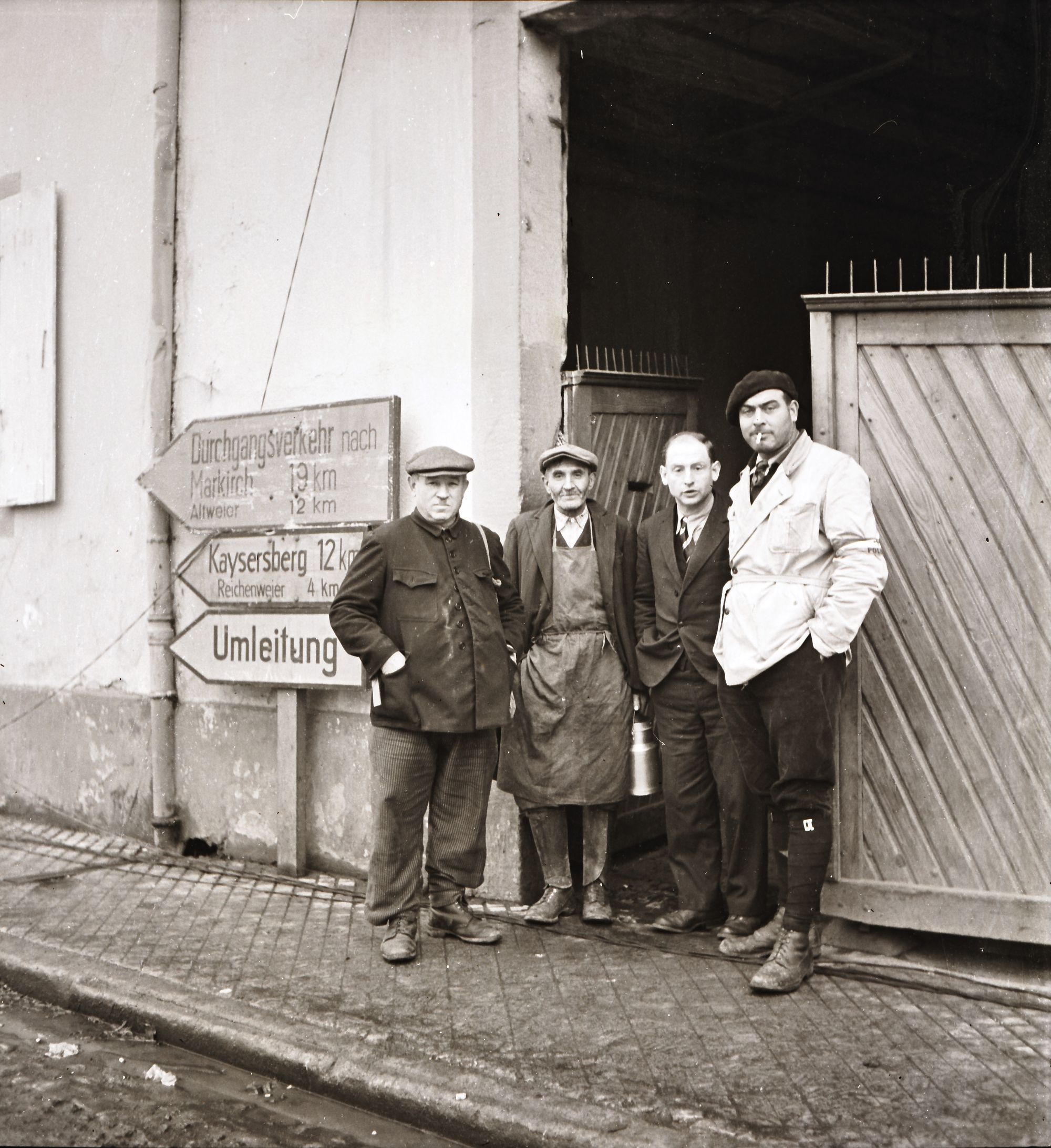
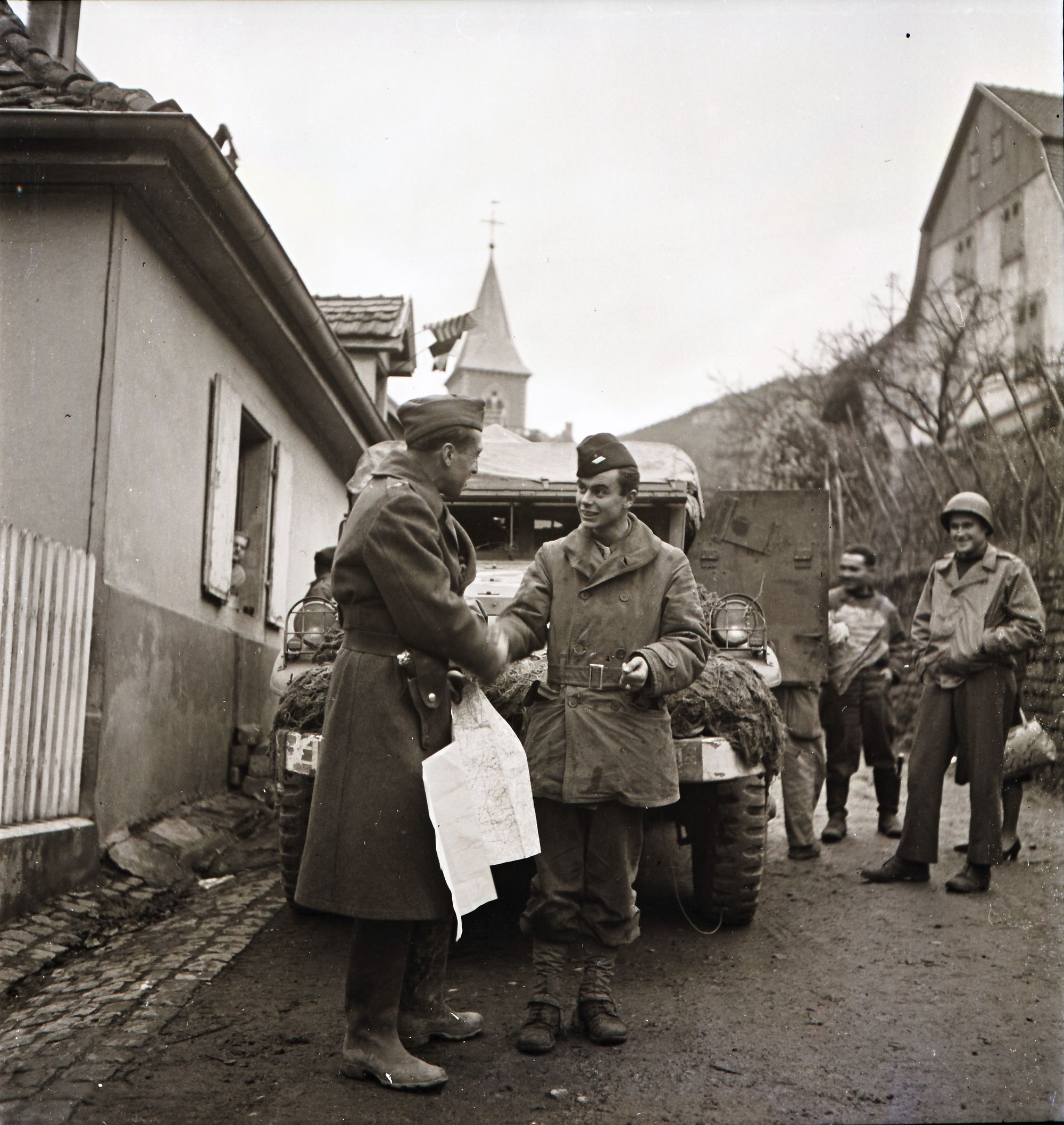
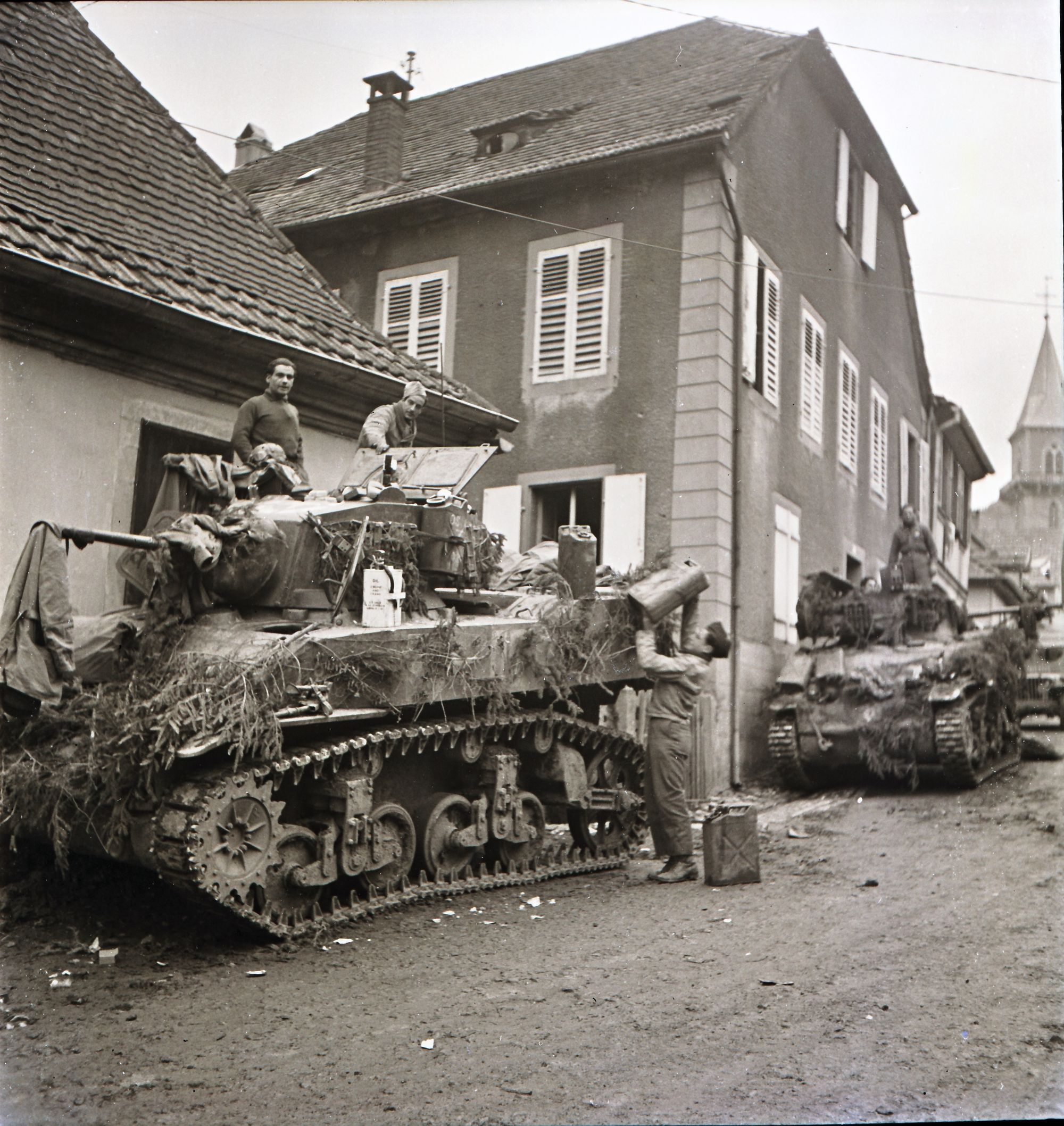
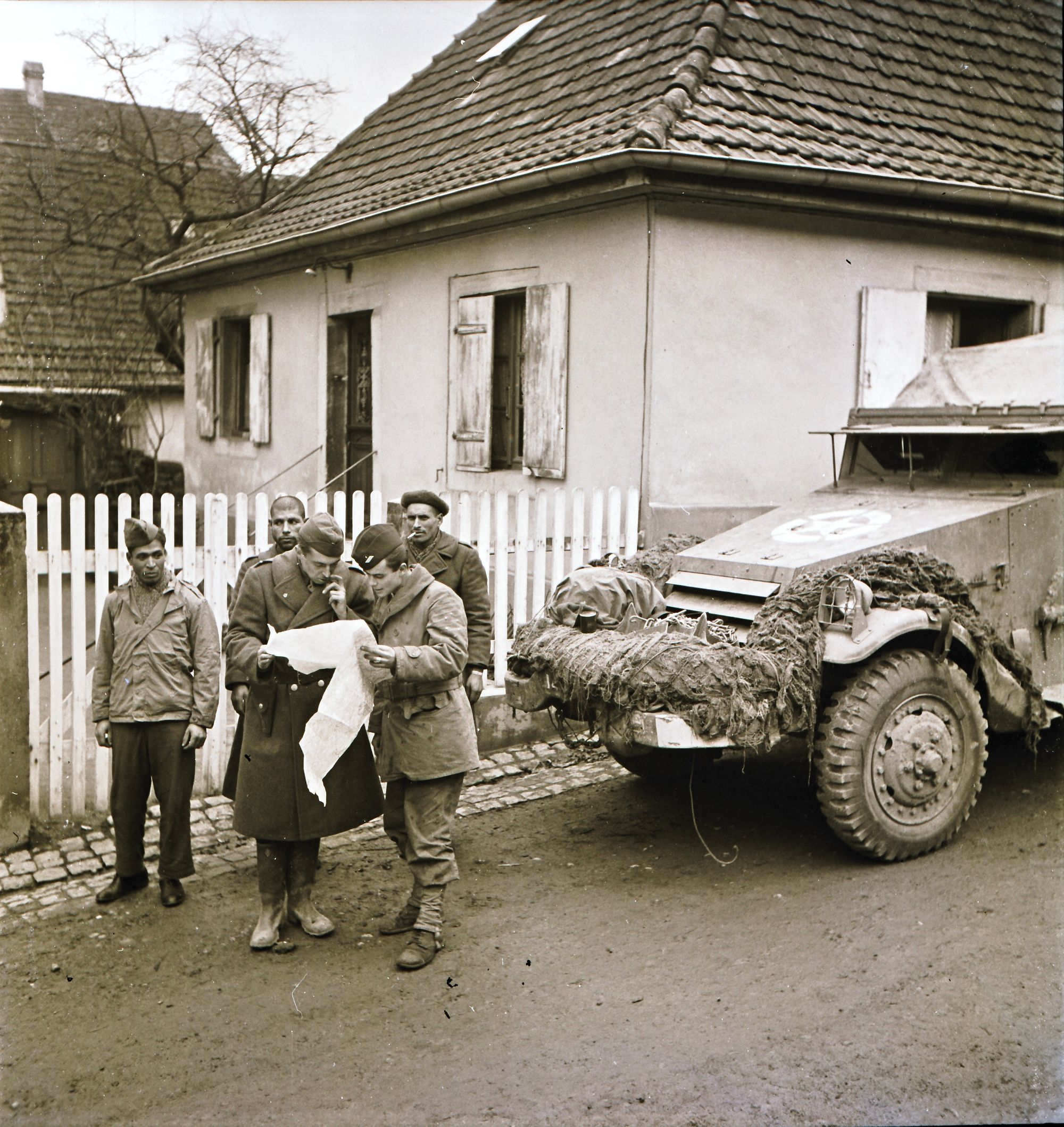
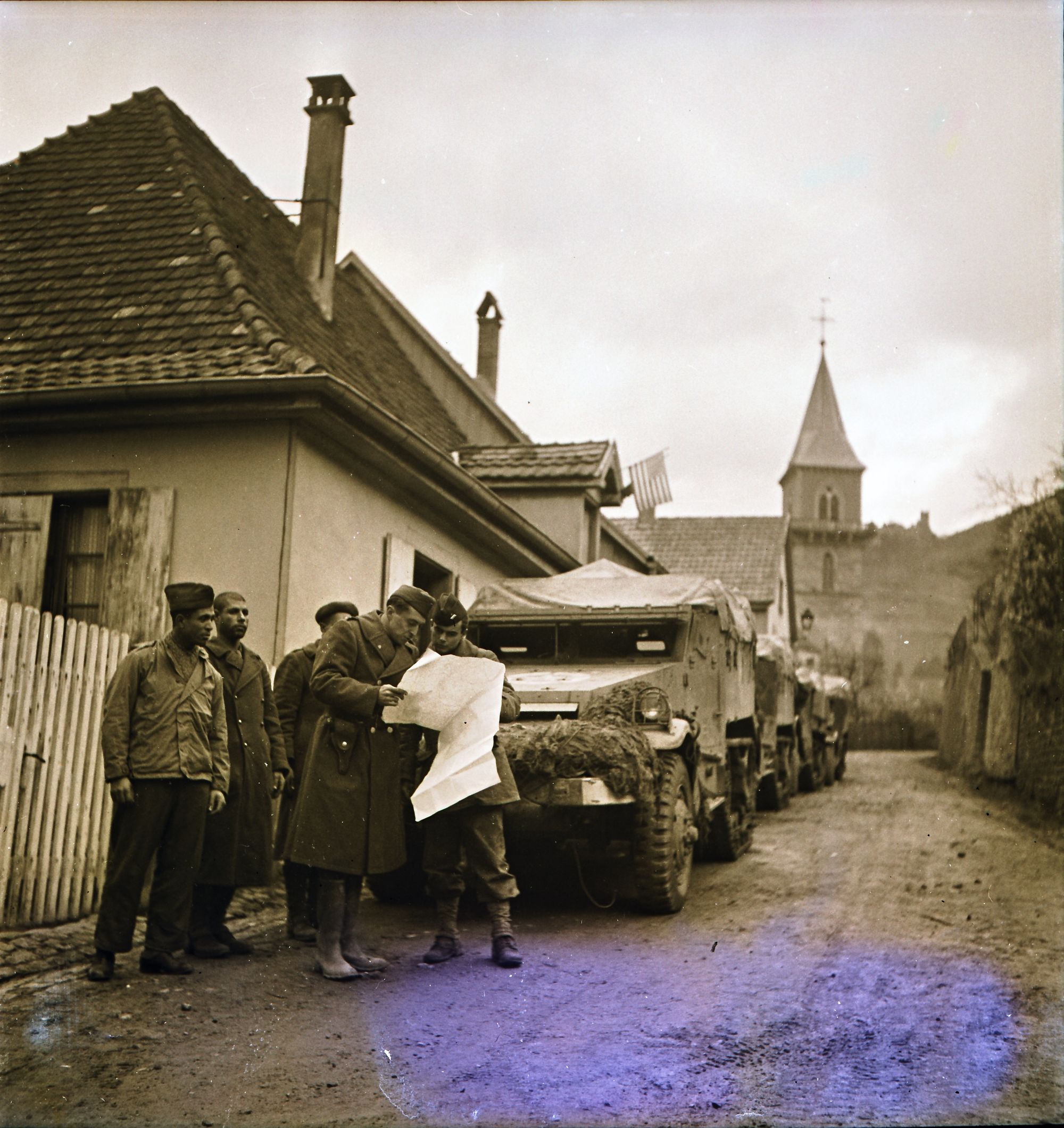
C3-C6. The Leclerc tank regiment and First French Army joined up in Ribeauvillé. La jonction des Leclerc et de la 1ère armée française s’est effectué à Ribeauvillé.
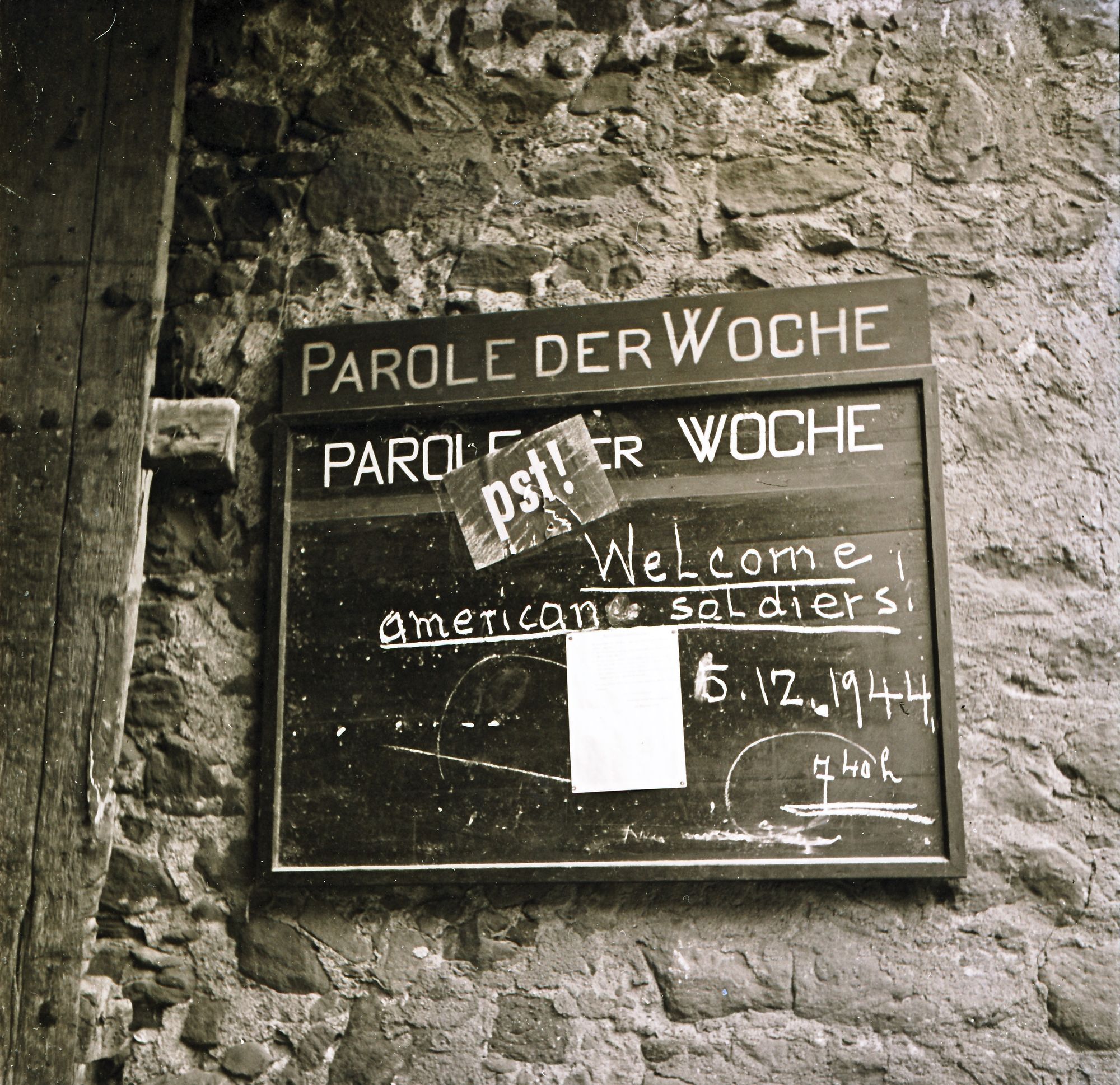
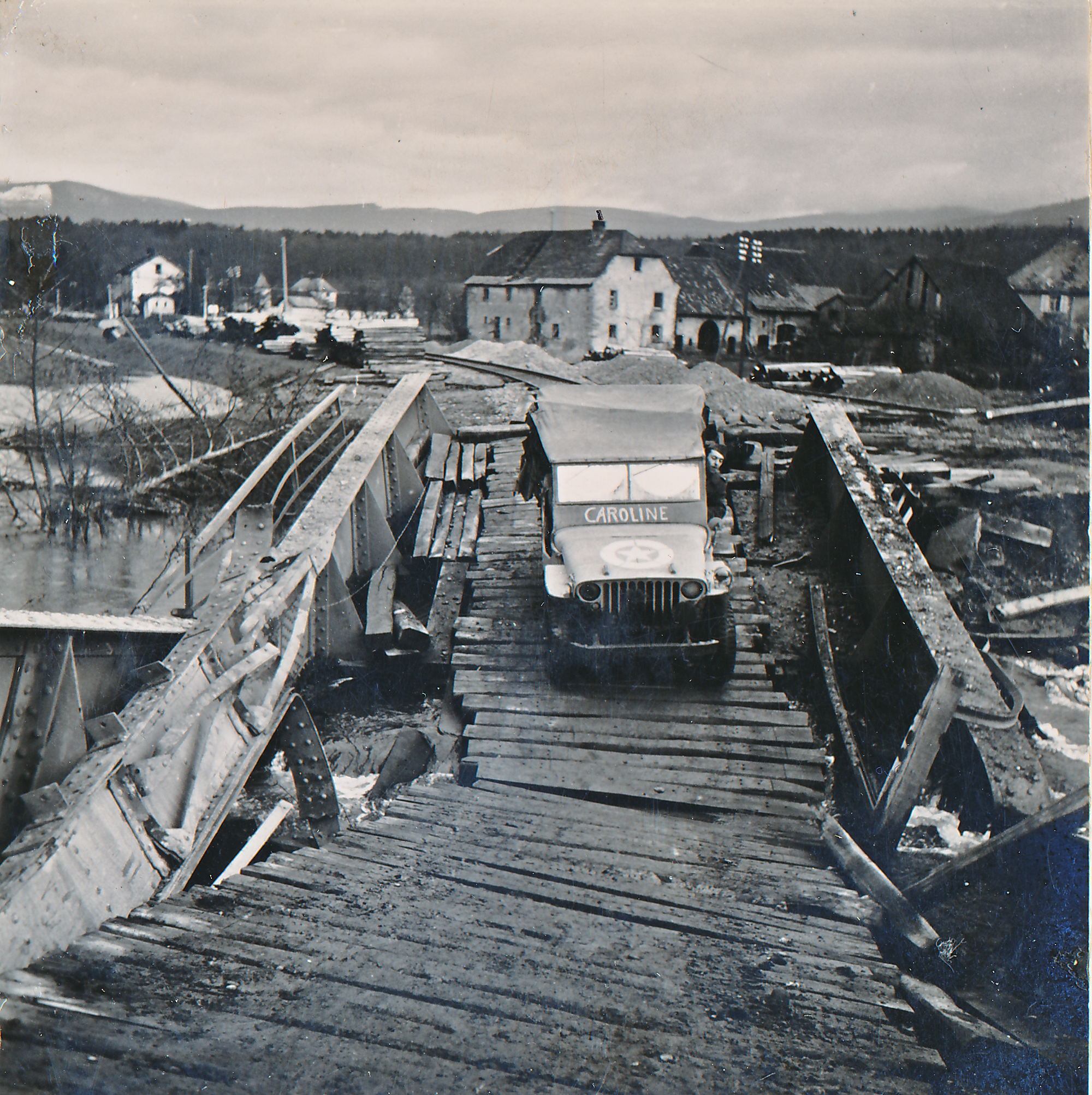
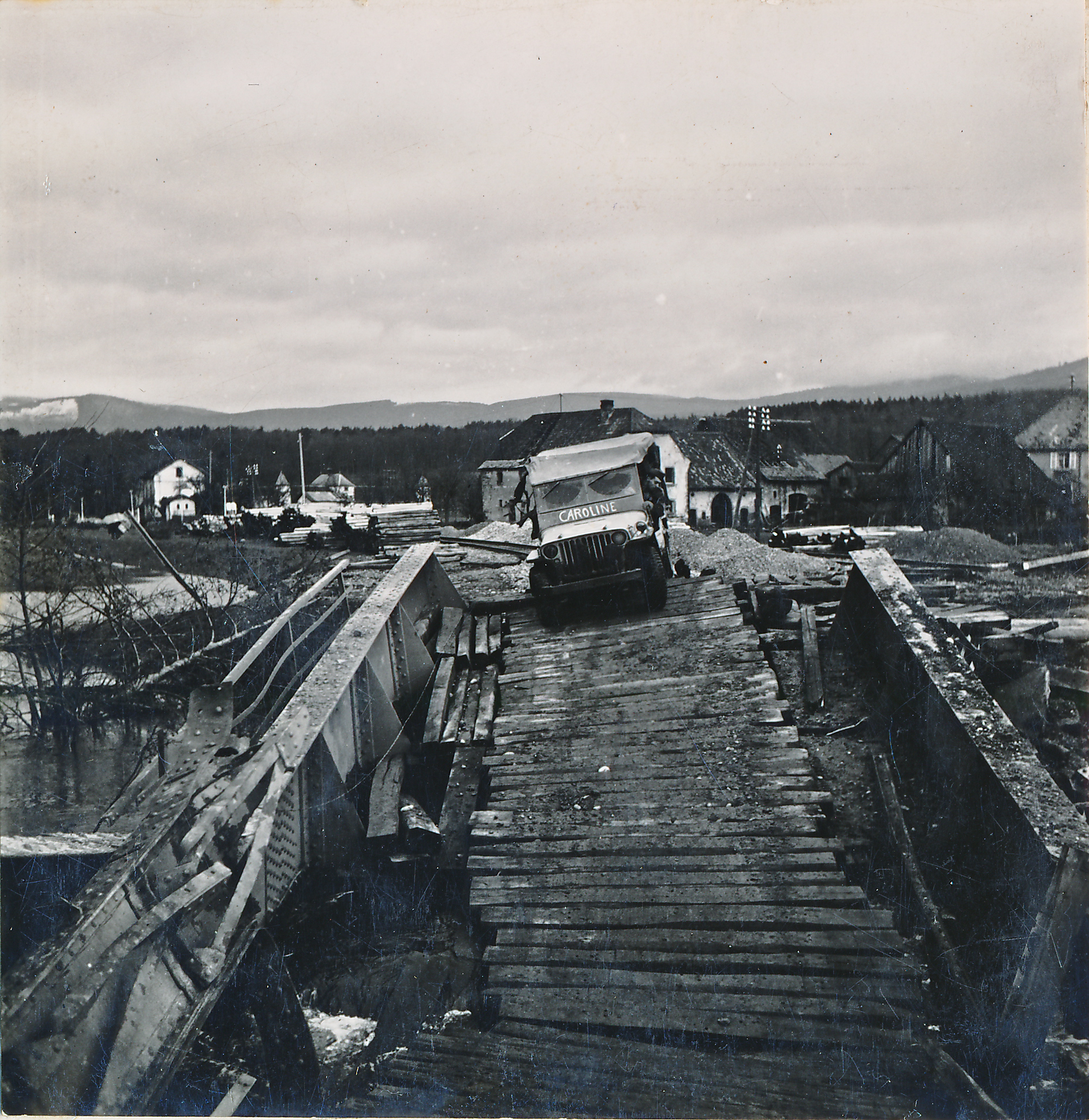
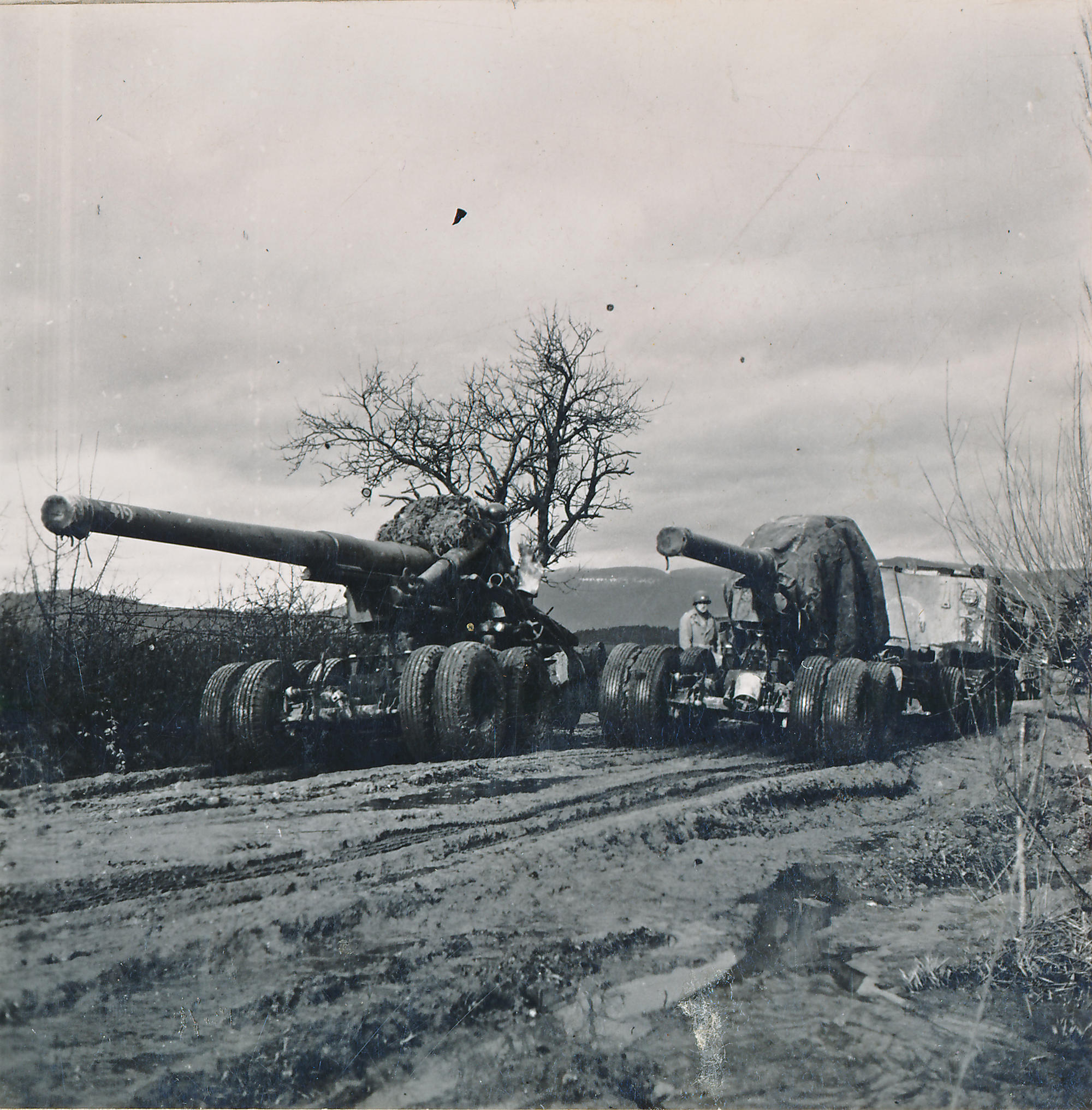
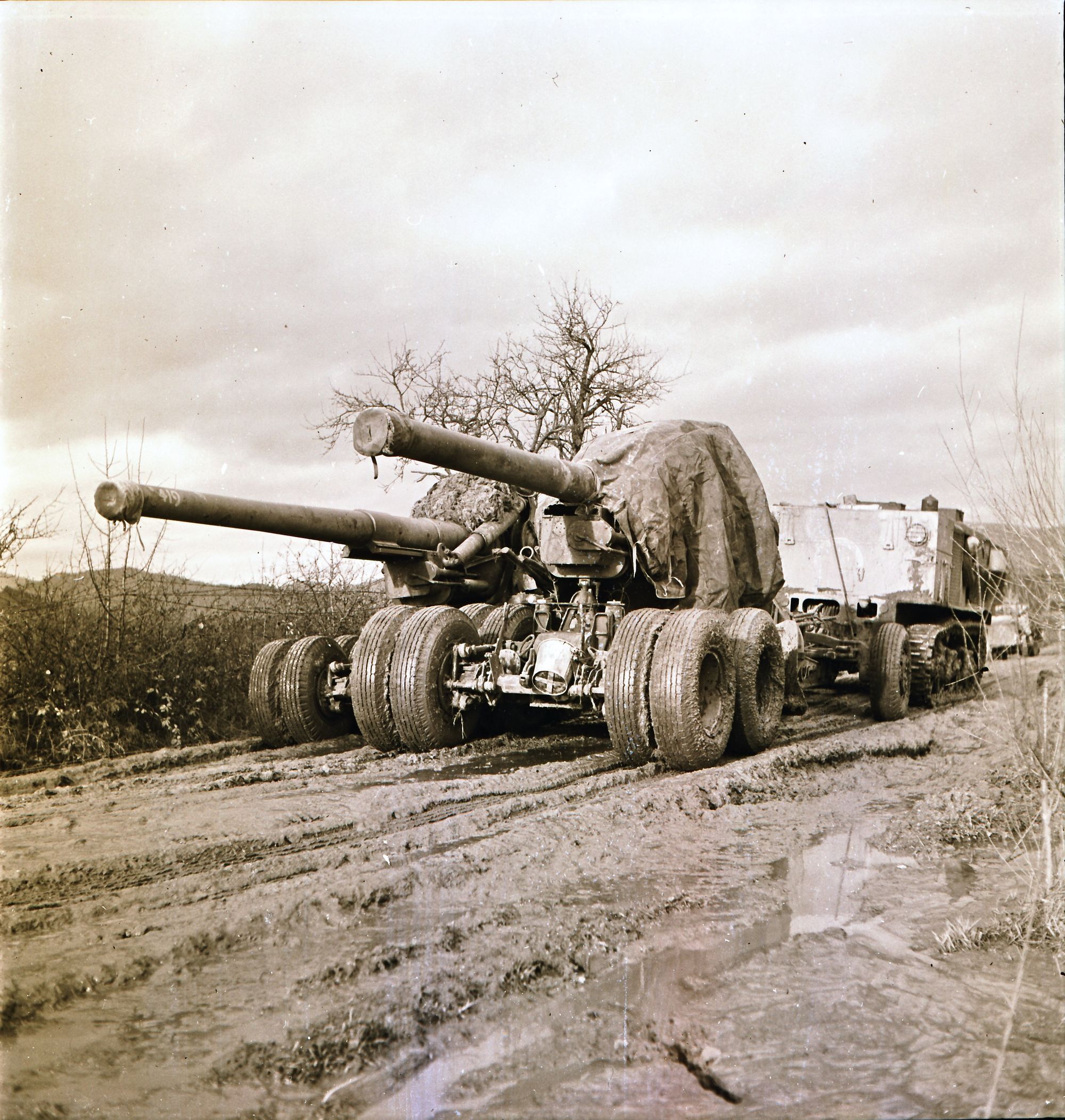
C7. The last "weekly proclamation" will stay here a while. La dernière « proclamation de la semaine » restera longtemps. C8-C9. A Jeep crosses a damaged bridge. Une jeep passe sur un pont détruit. C12. A new type of artillery manoeuvring in the mud. Nouveau type d’artillerie manœuvrant dans la boue.
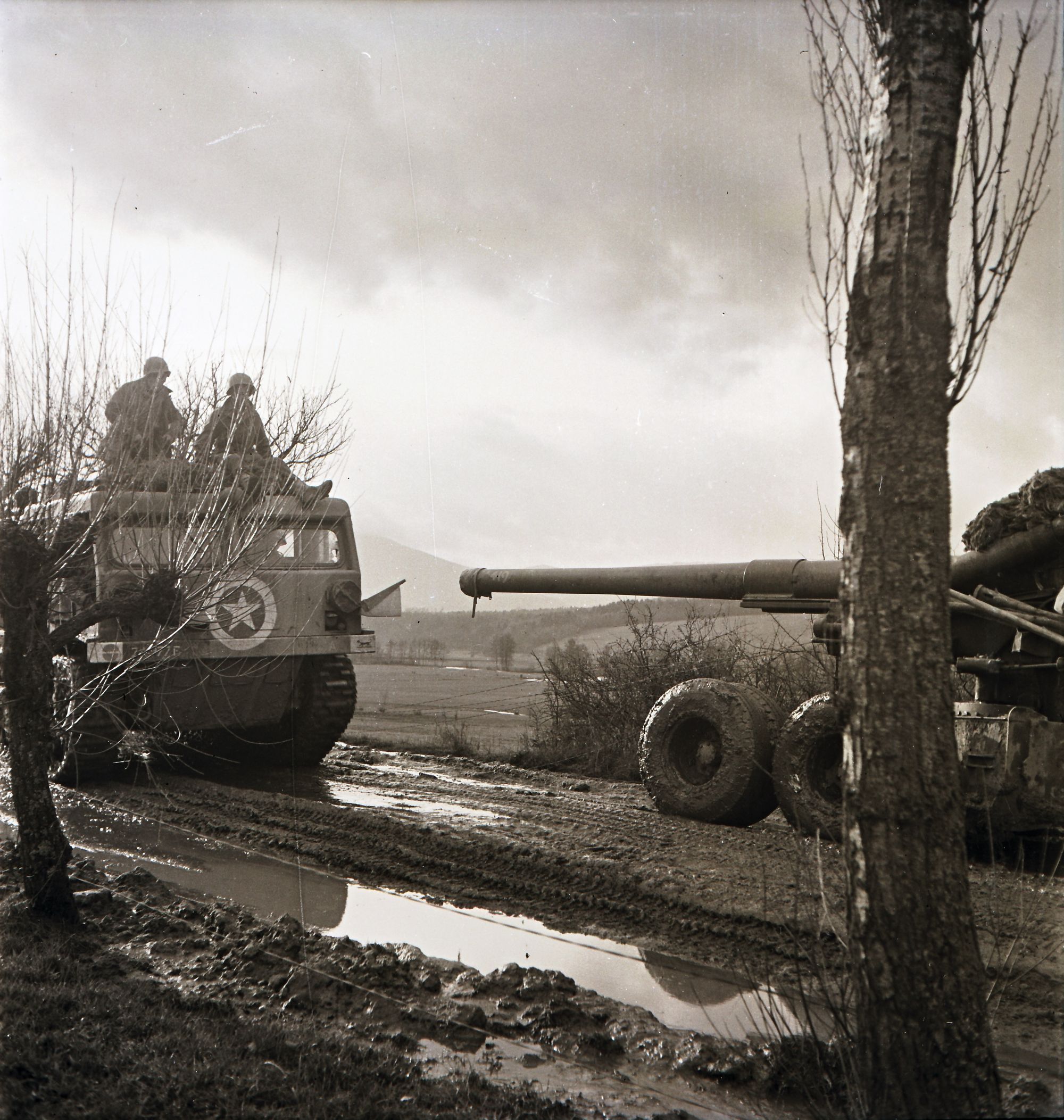
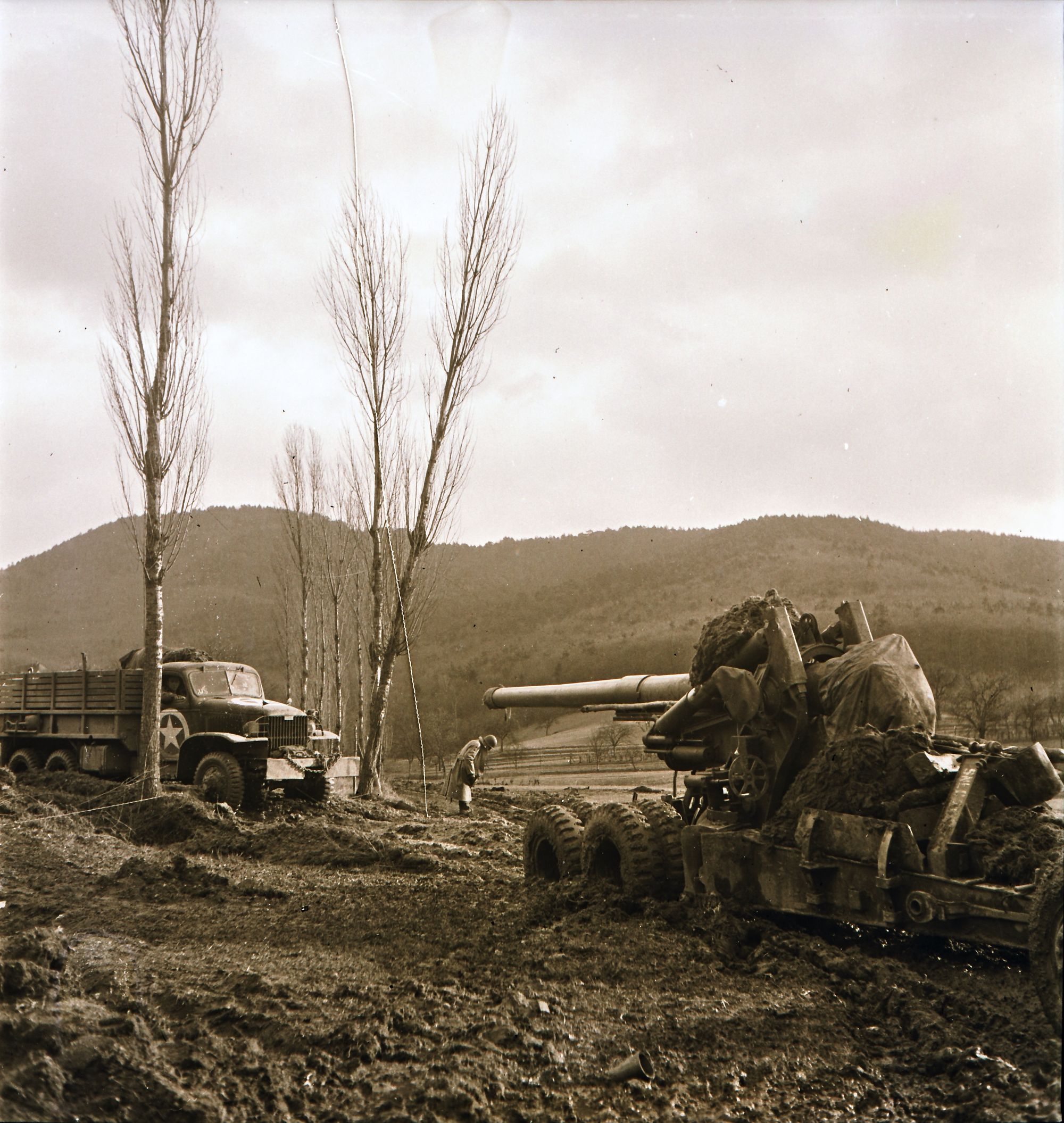
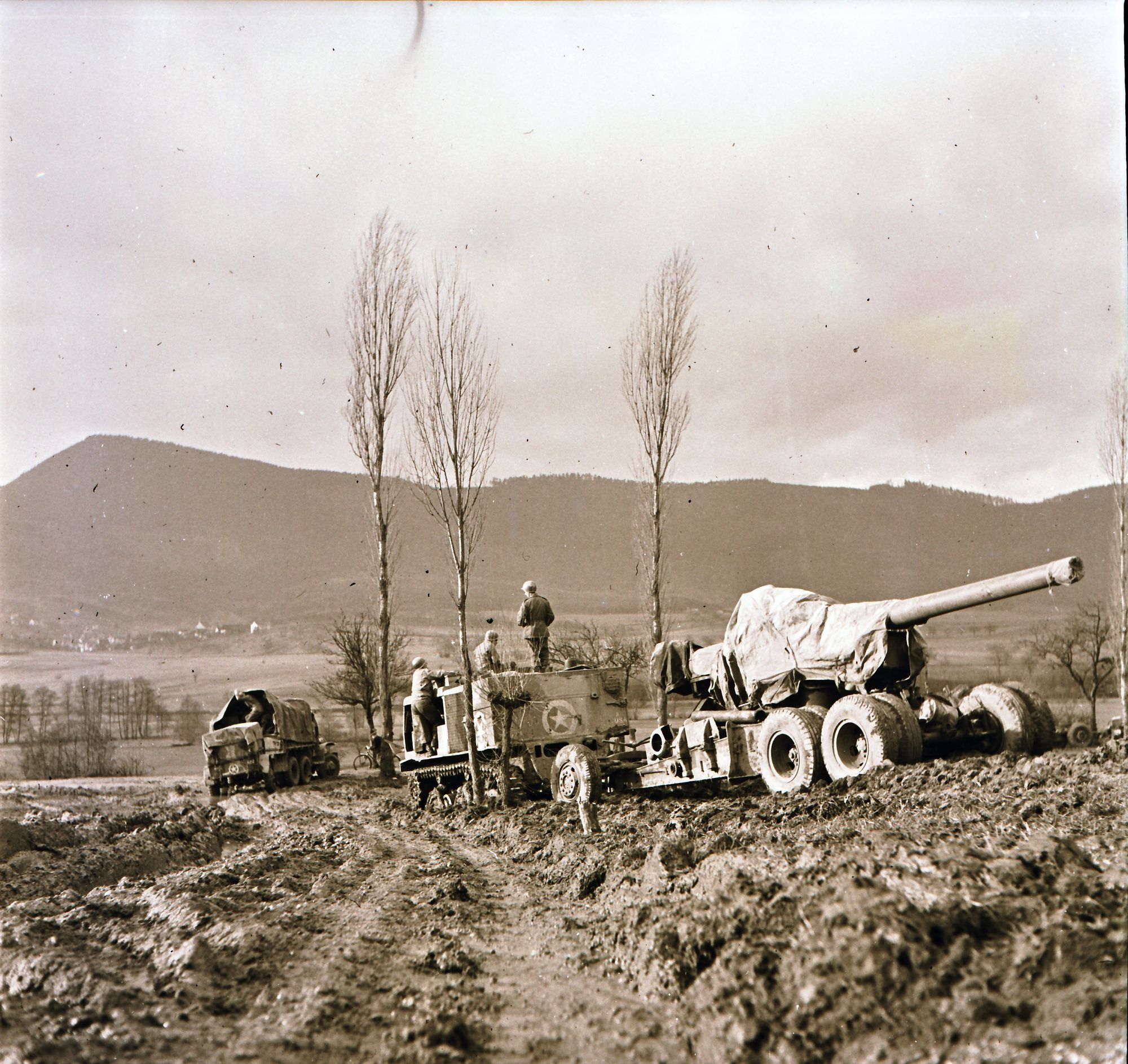
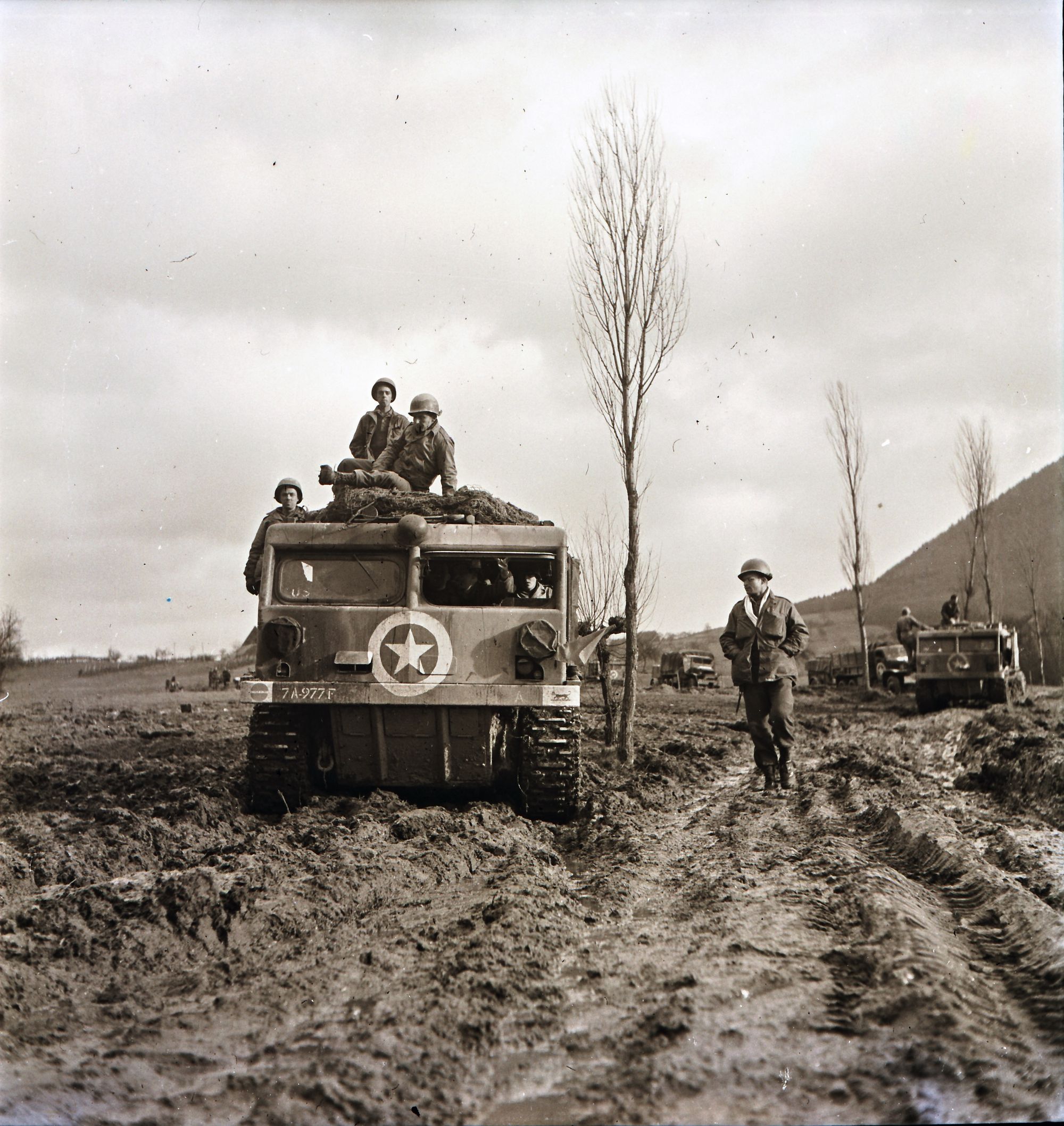
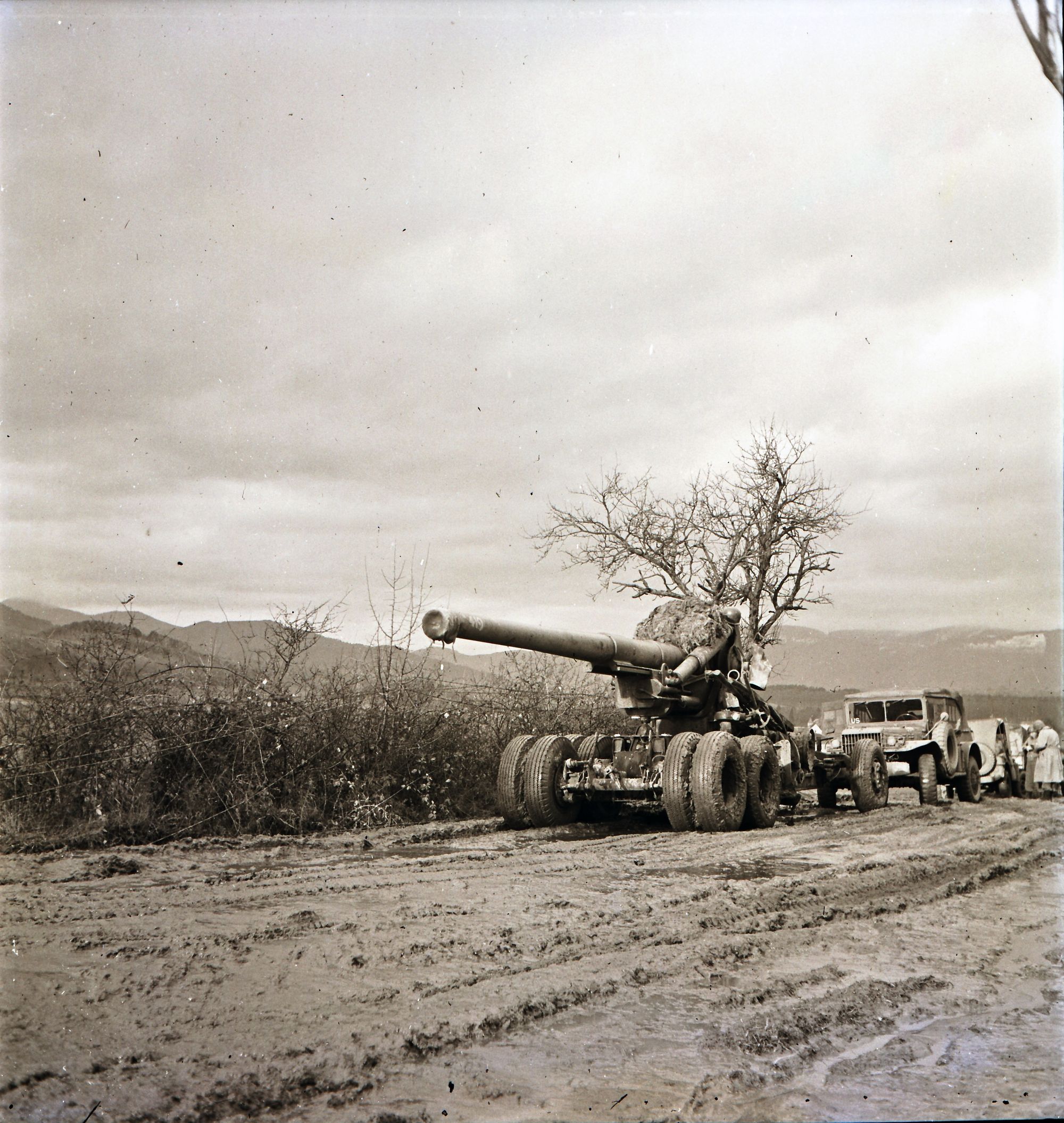
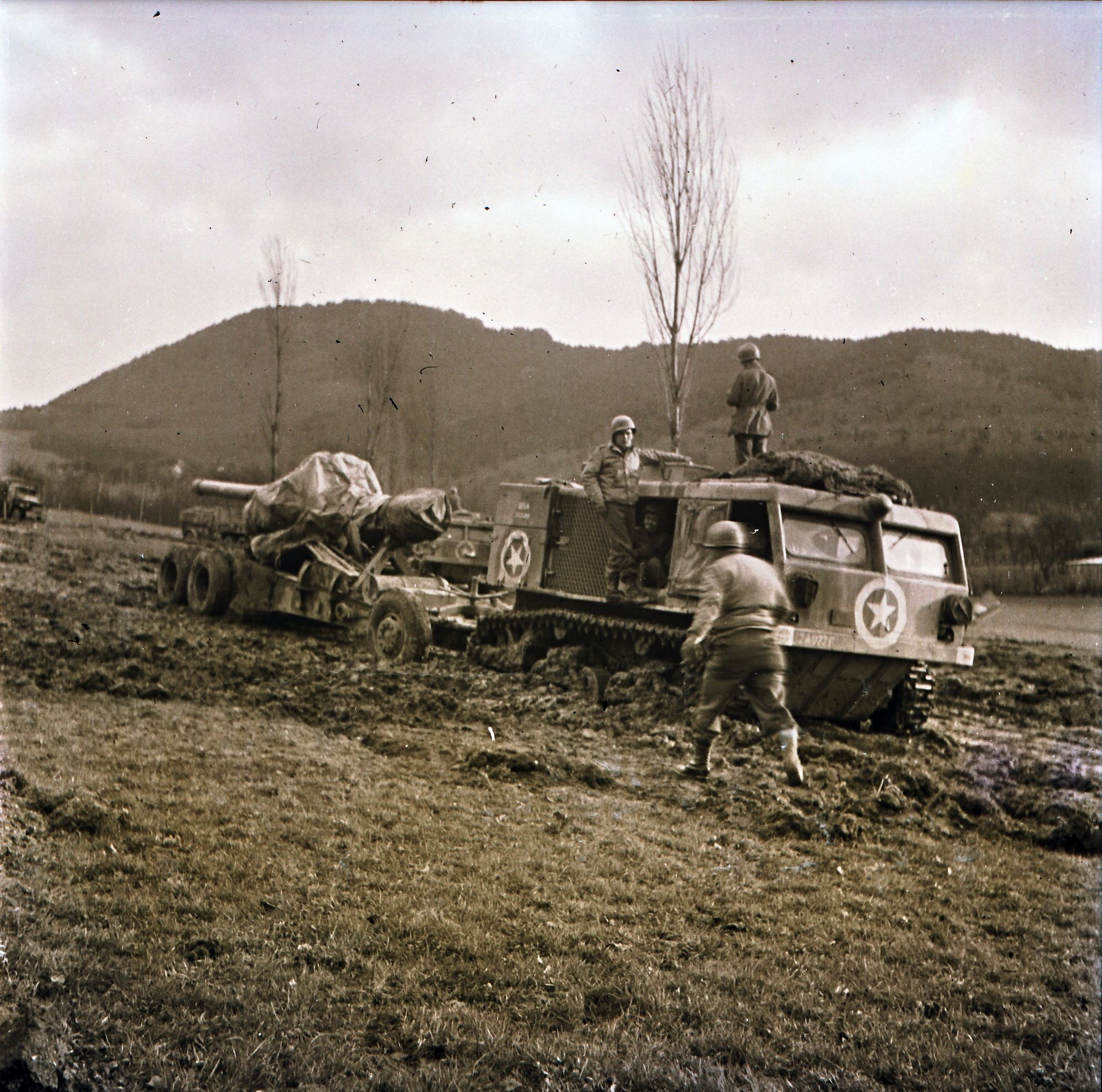
D1-D6. New type of American artillery. Artillerie américaine (nouveau type).
Strasbourg
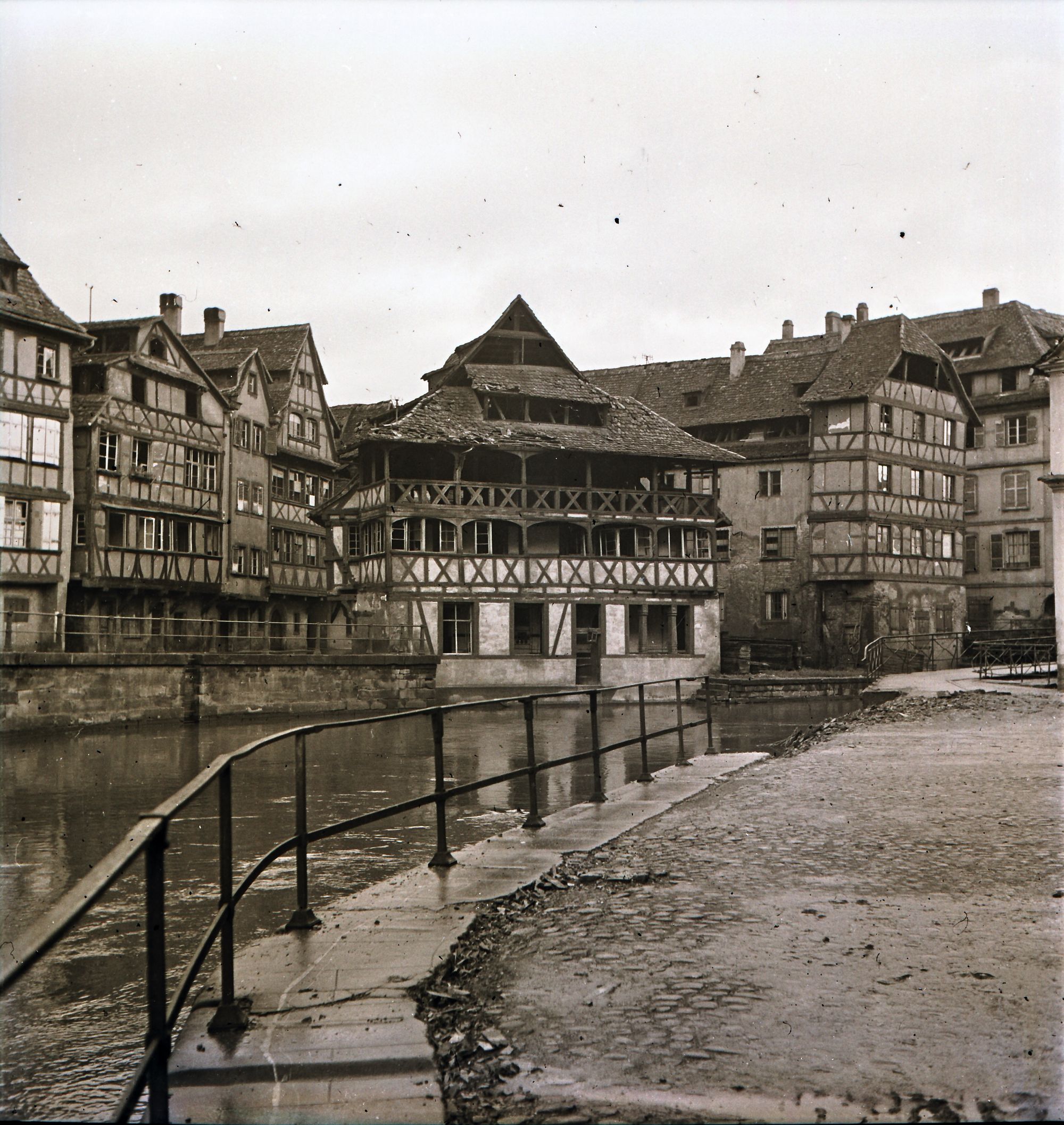
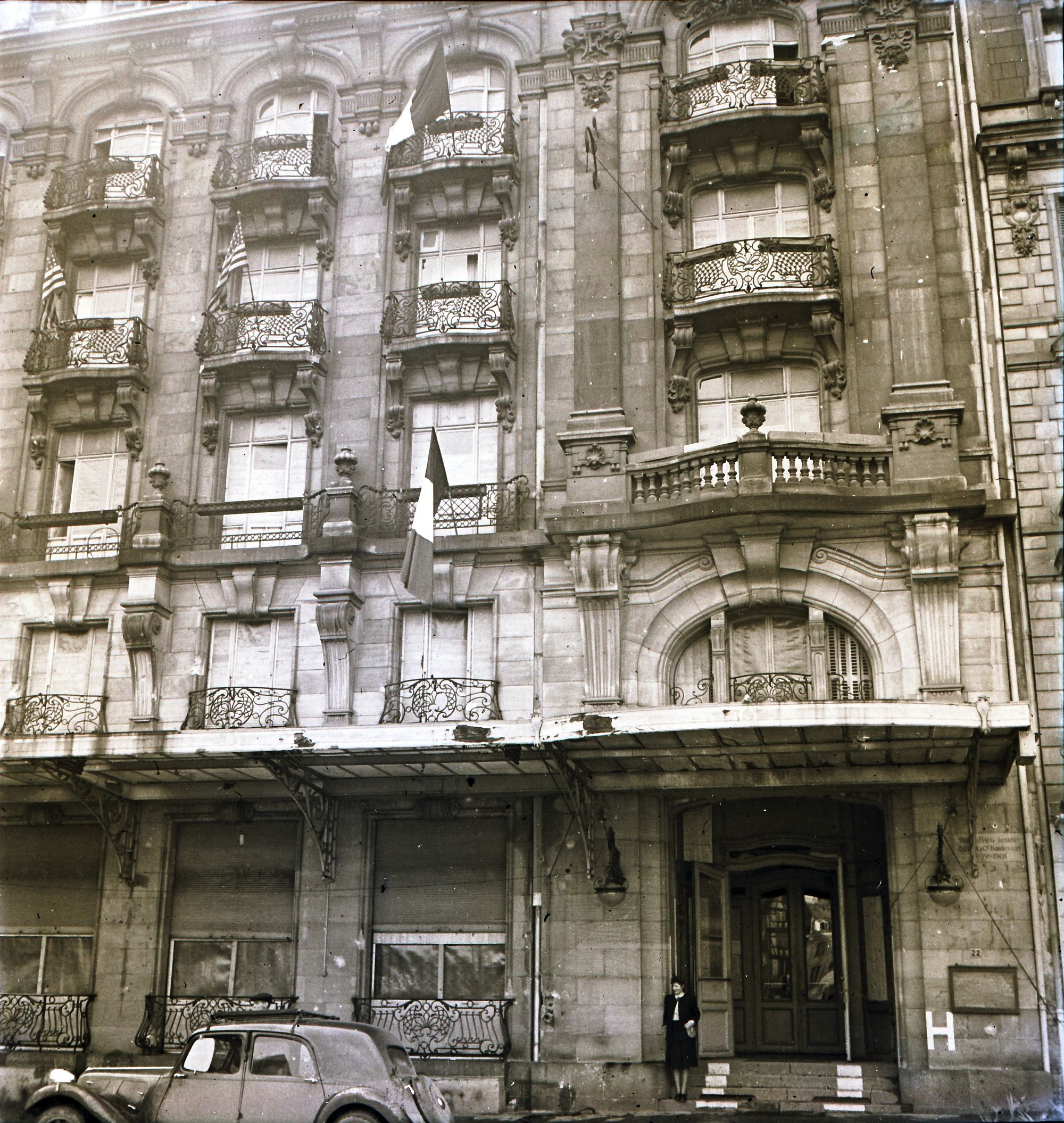
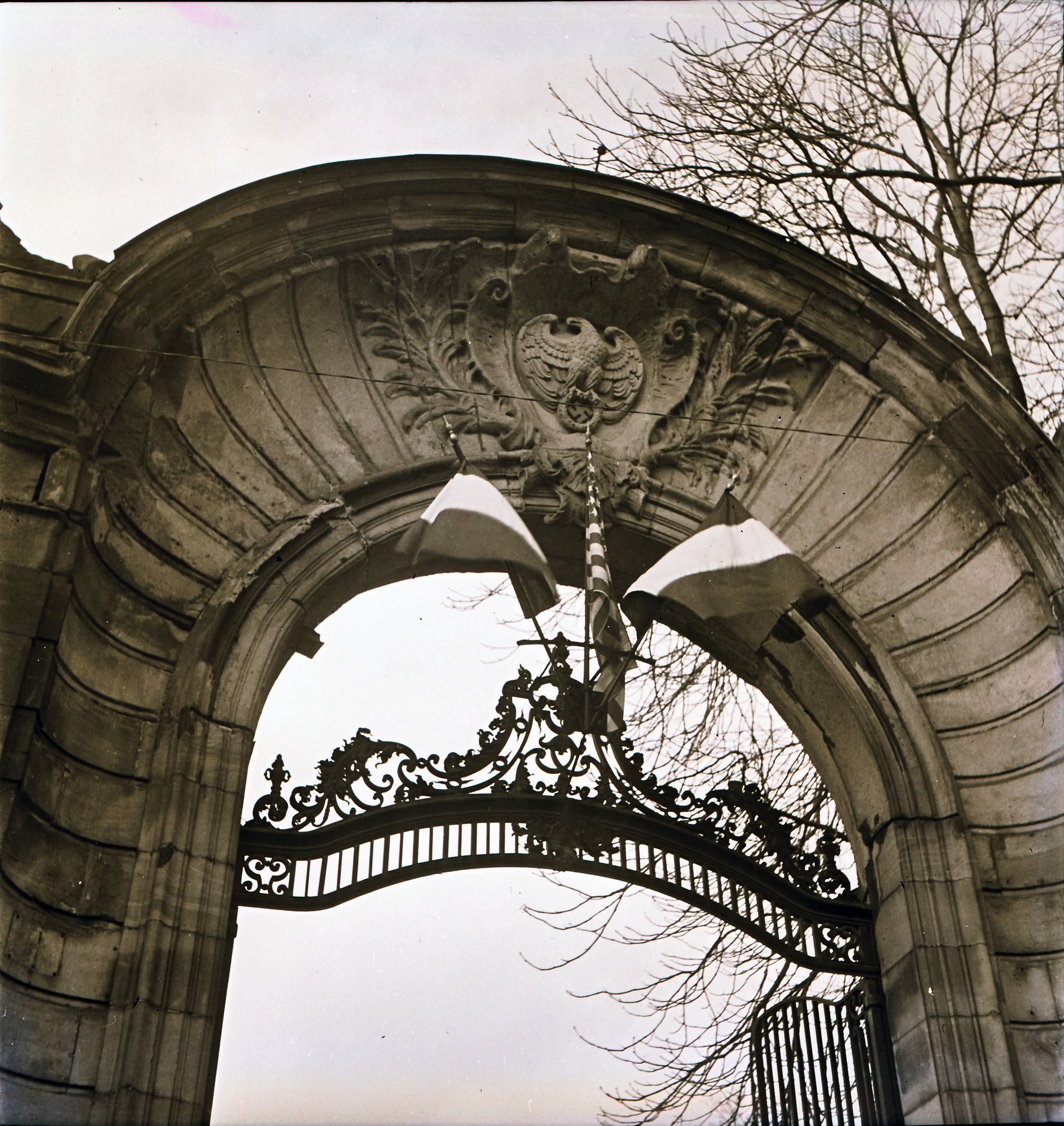
D8. Little France in Strasbourg. La petite France à Strasbourg. D9. D10. The governor's palace in Strasbourg. Le palais du Gouverneur de Strasbourg.
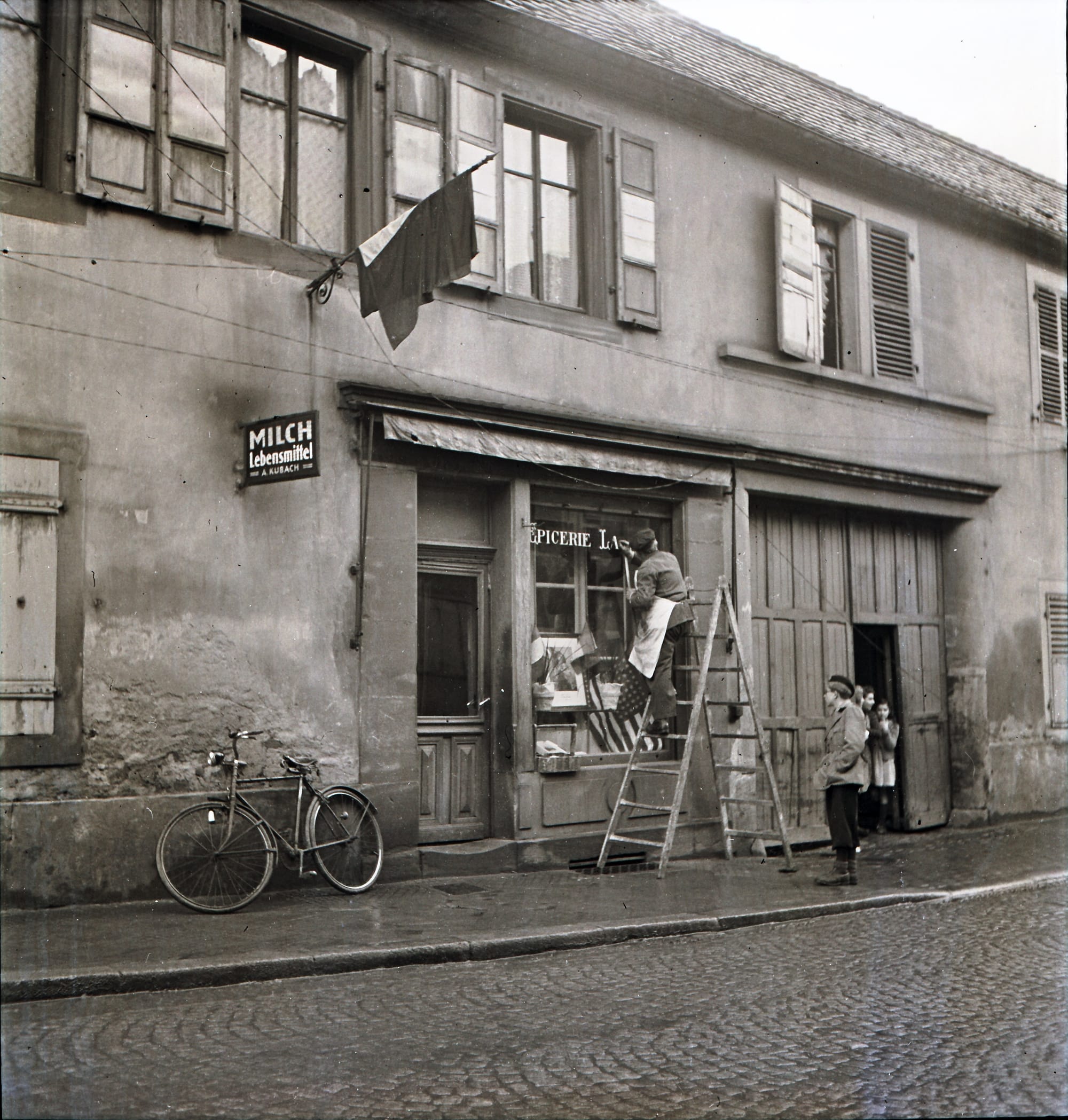
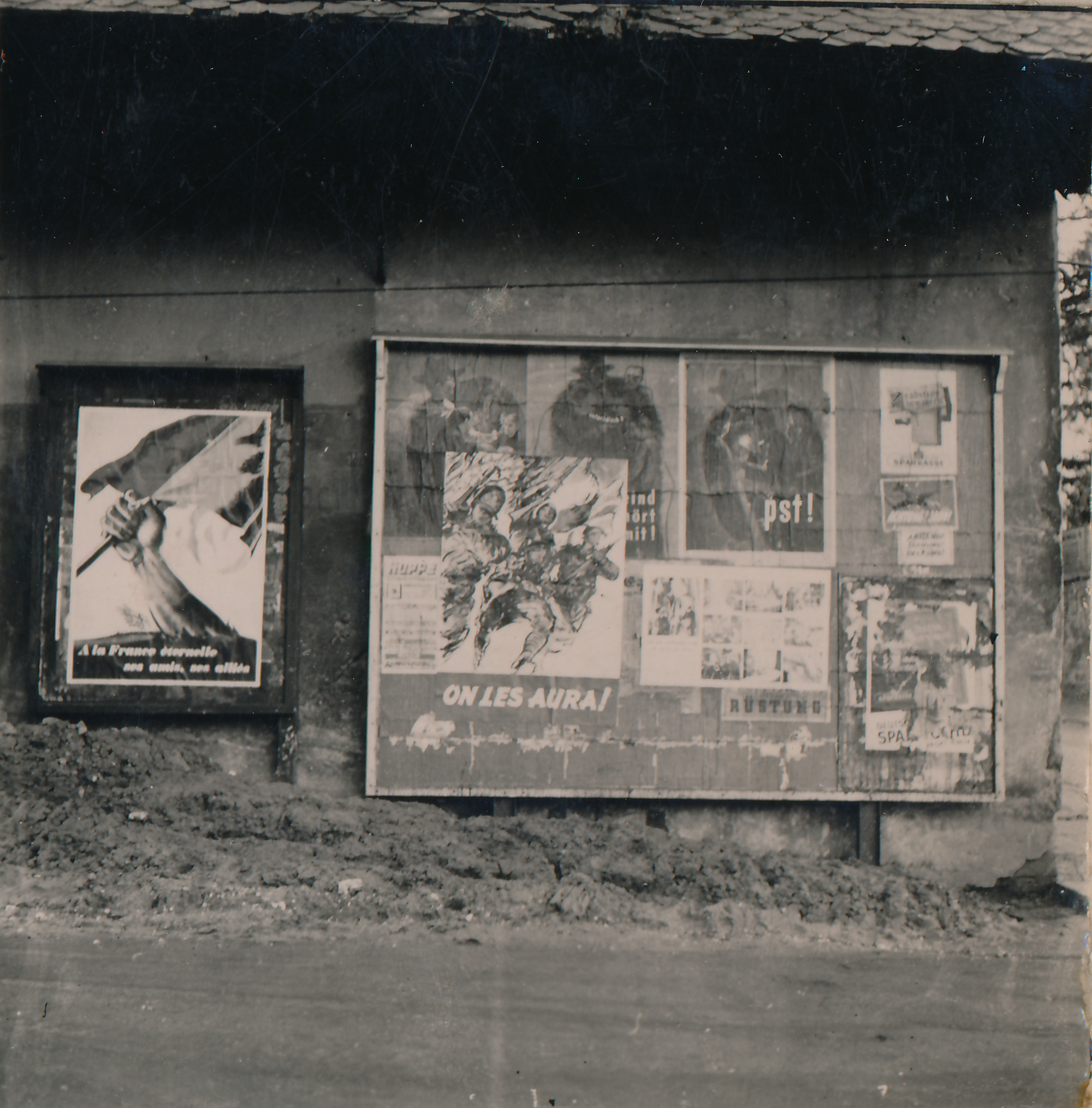
D11. Shopkeepers rush to restore French signing. Les commerçants s’empressent de rétablir les inscriptions françaises. D12. Posters in the street of Saverne. Affichage dans les rues de Saverne.
Urbeis
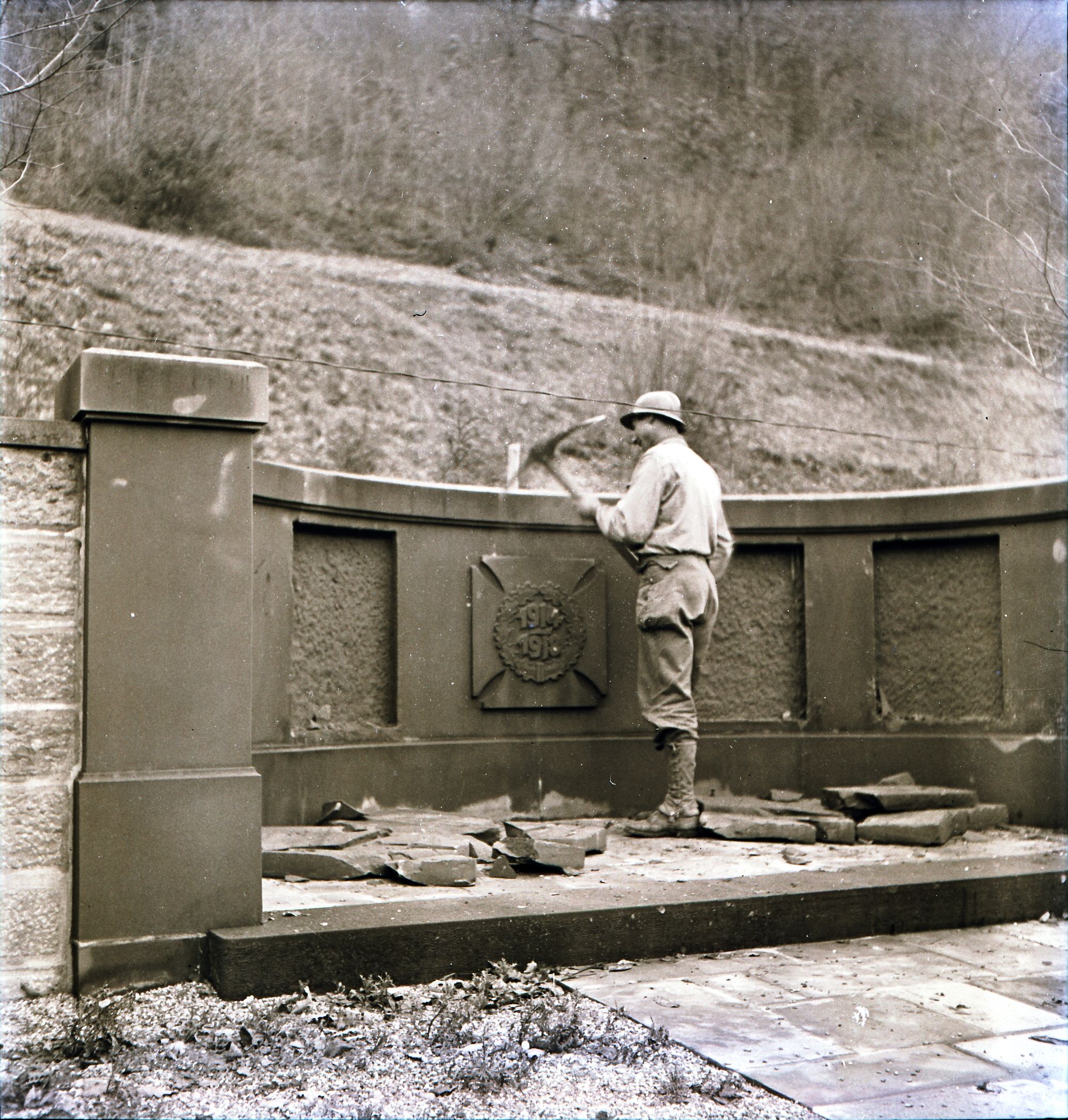
E1. Here a man apparently destroys a German monument to their WWI dead. Note: No captions for the E roll, notes are mine. Pas de légendes pour la pellicule E. Ici un soldat semble détruire un monument aux morts allemands de la Première guerre mondiale.
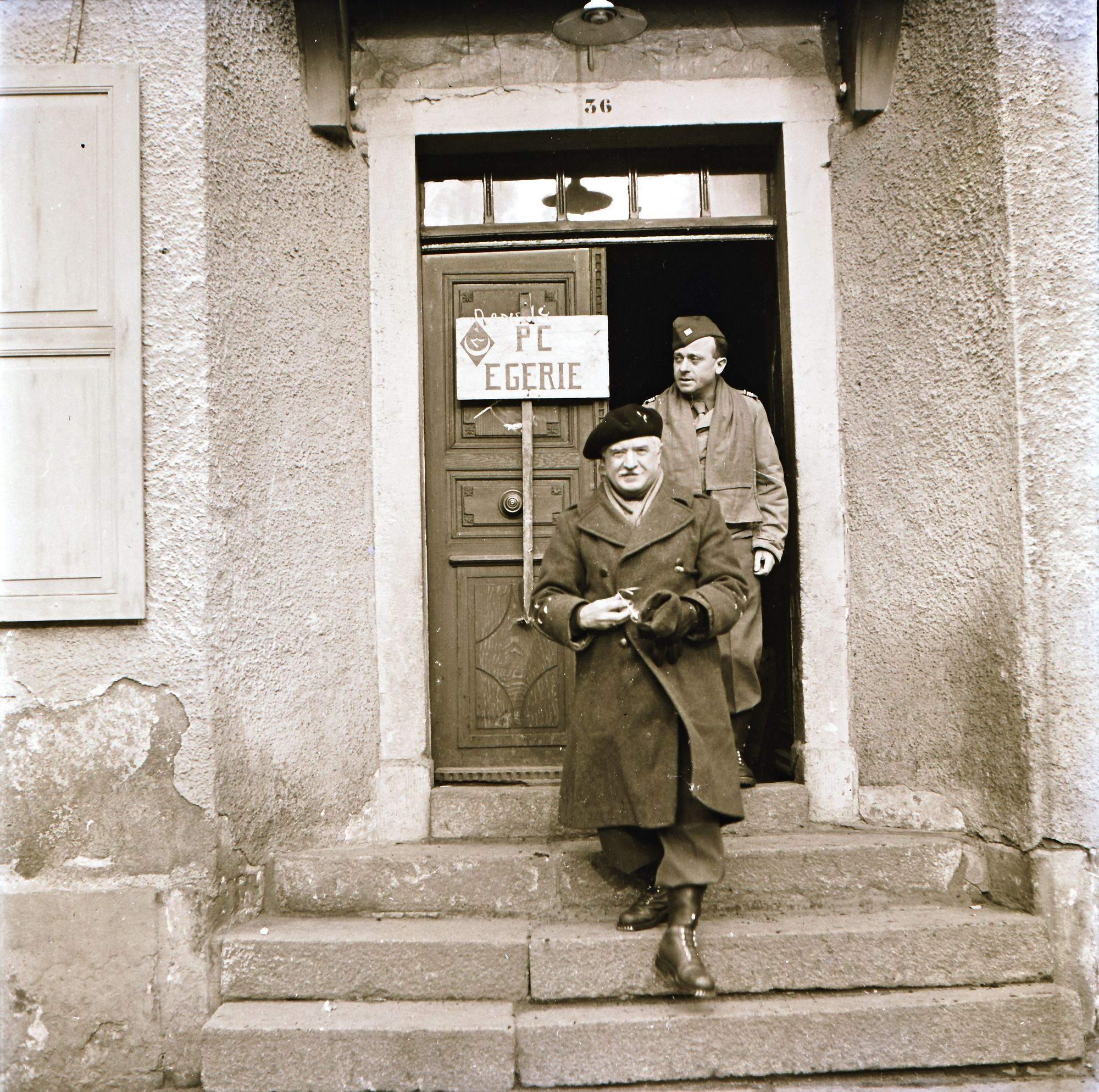
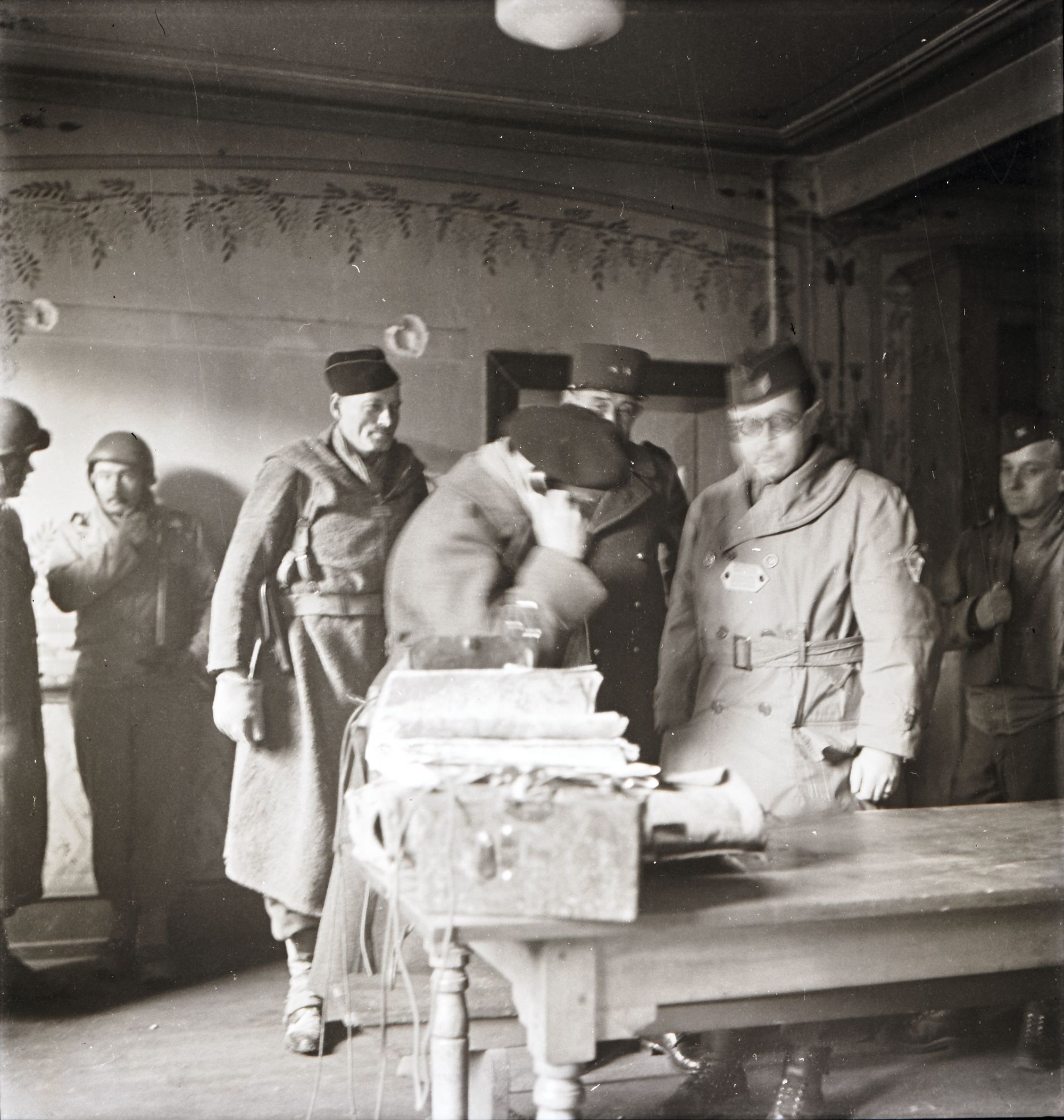
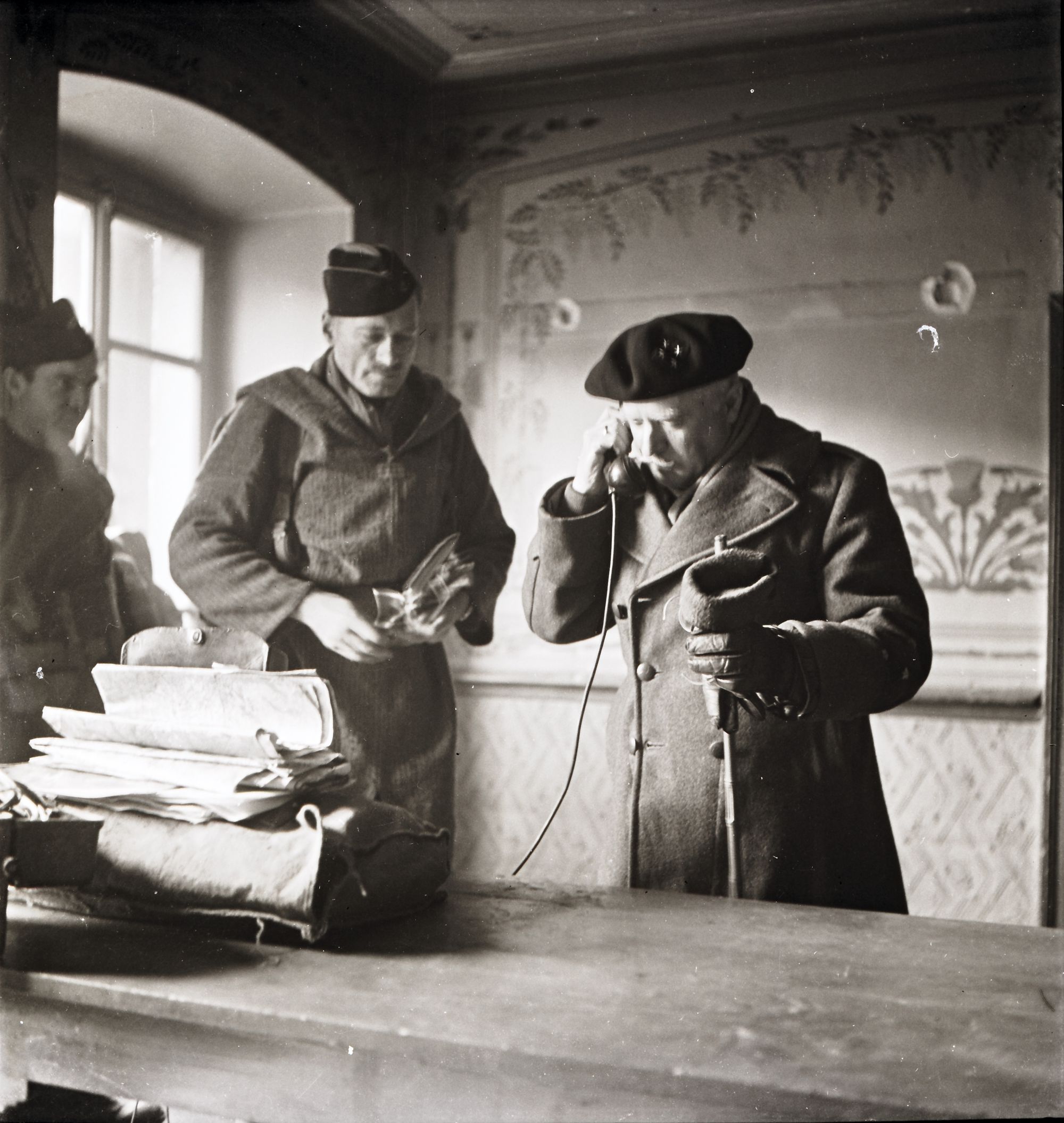
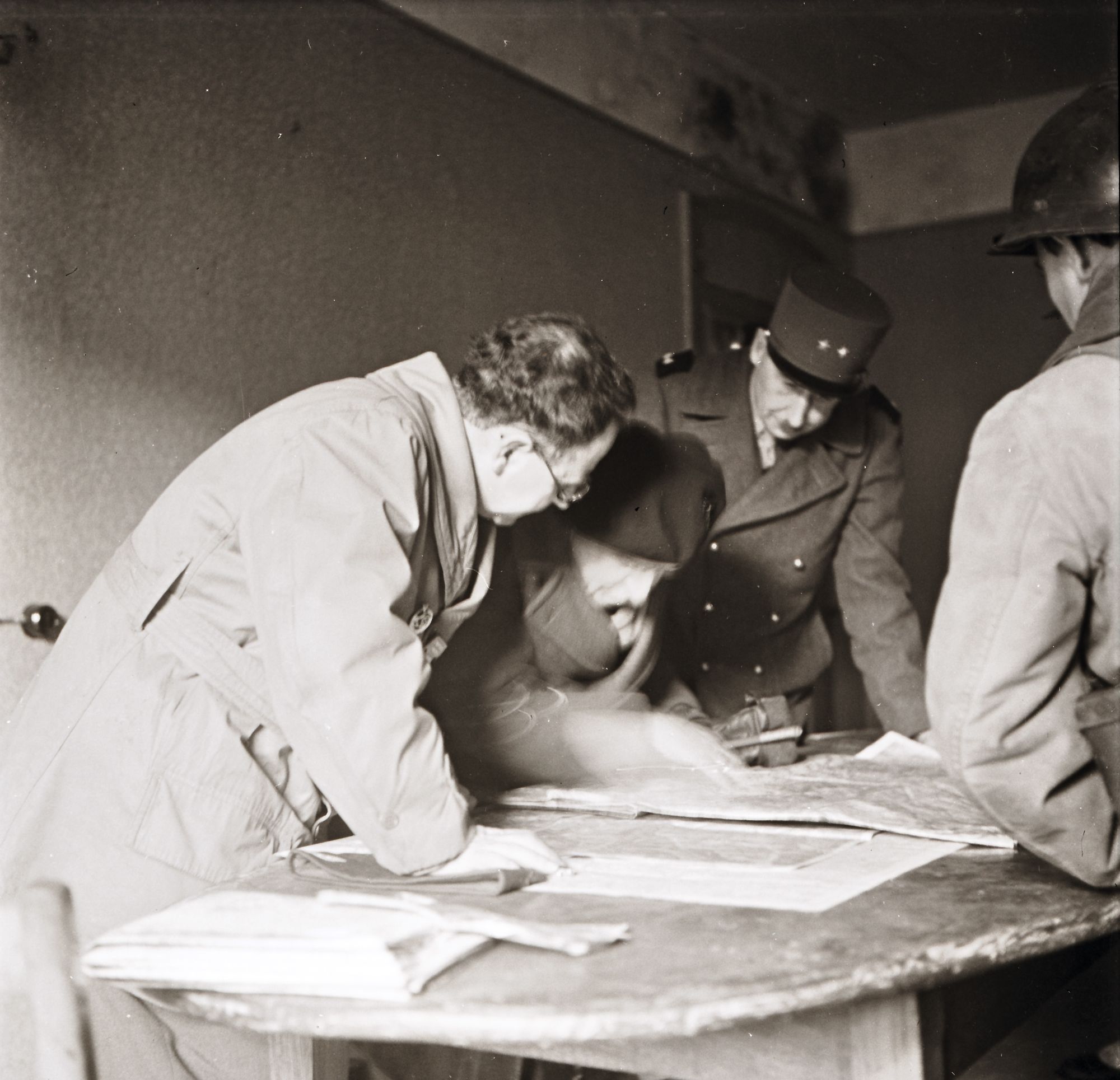
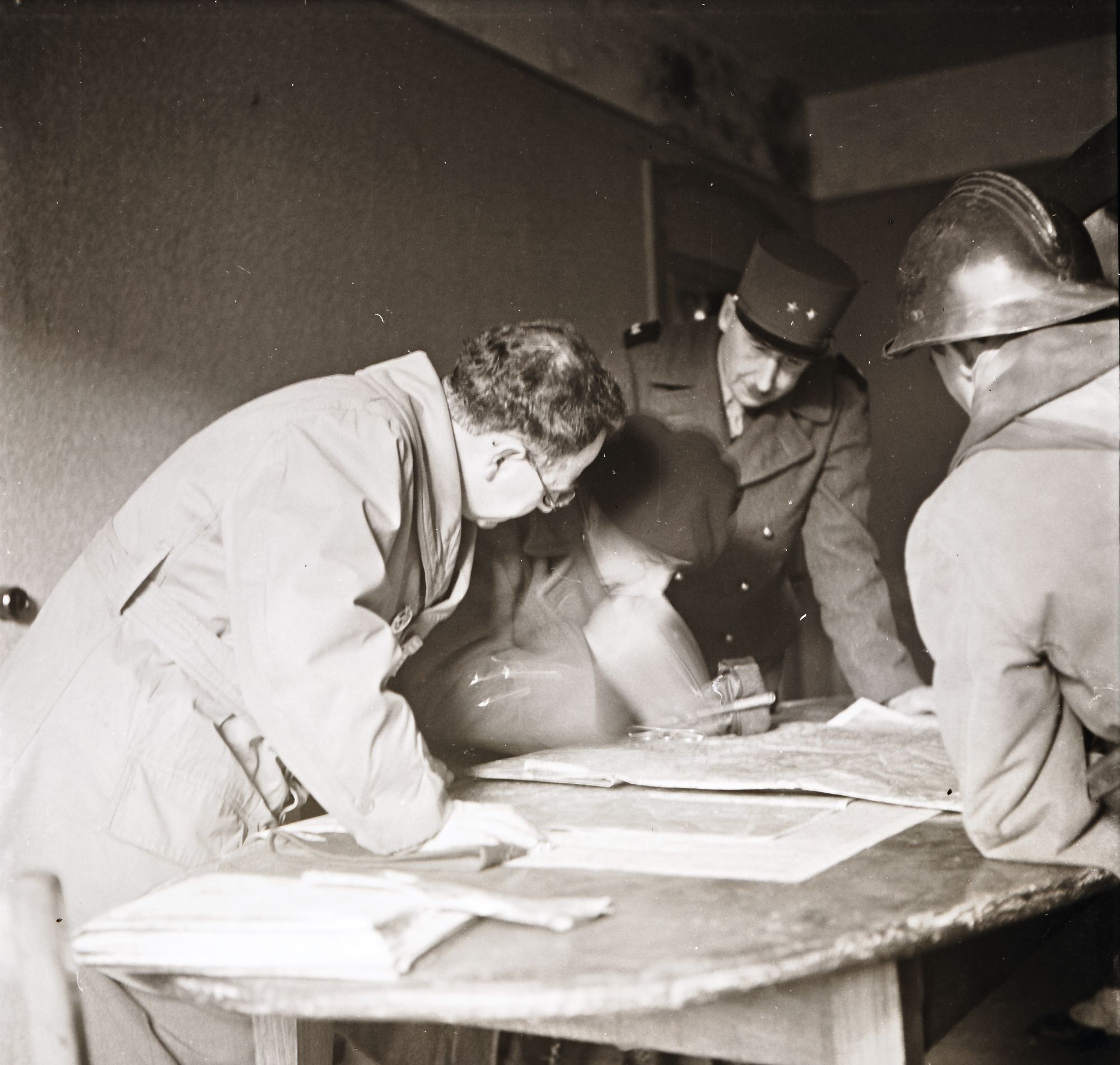
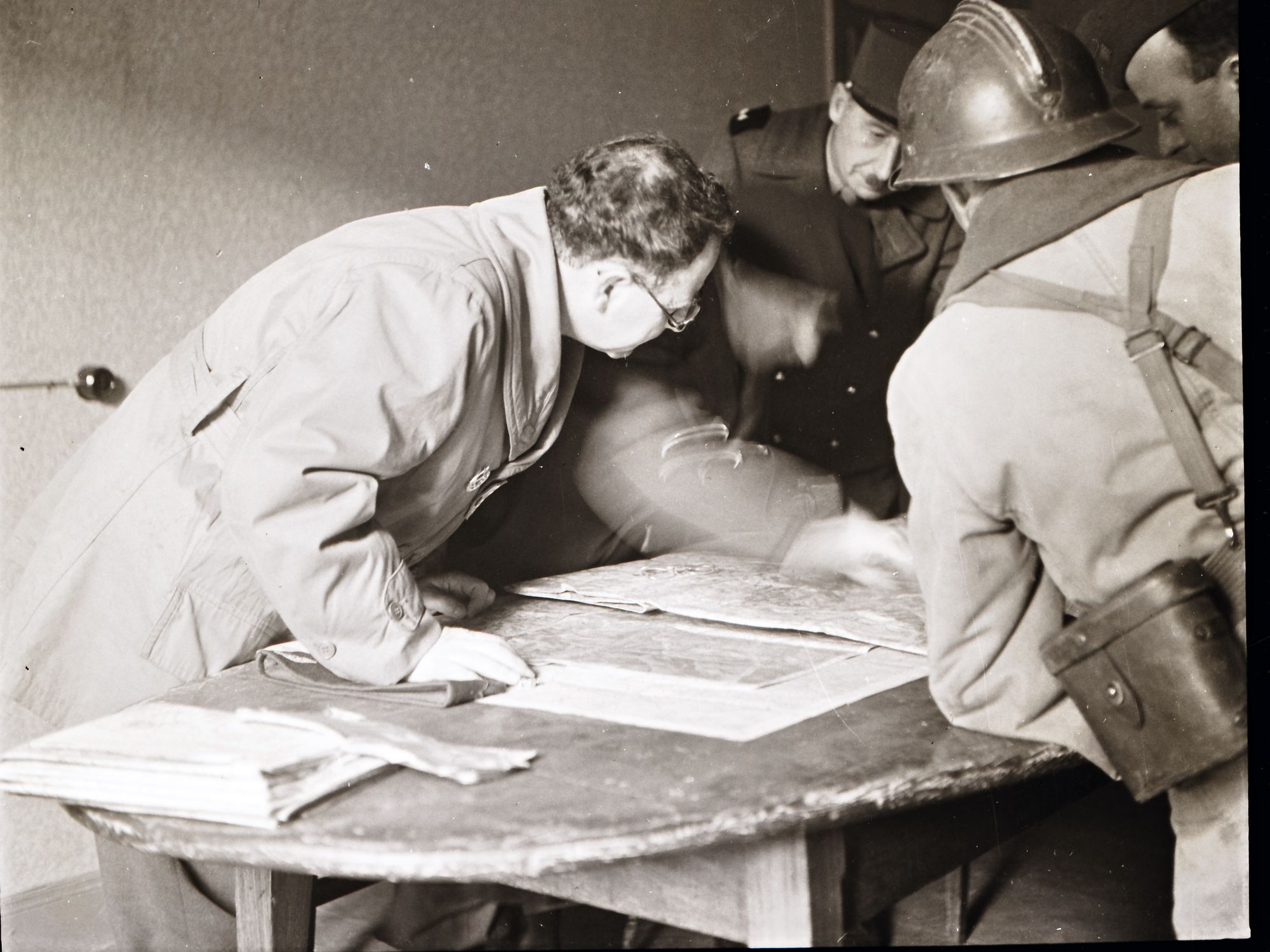
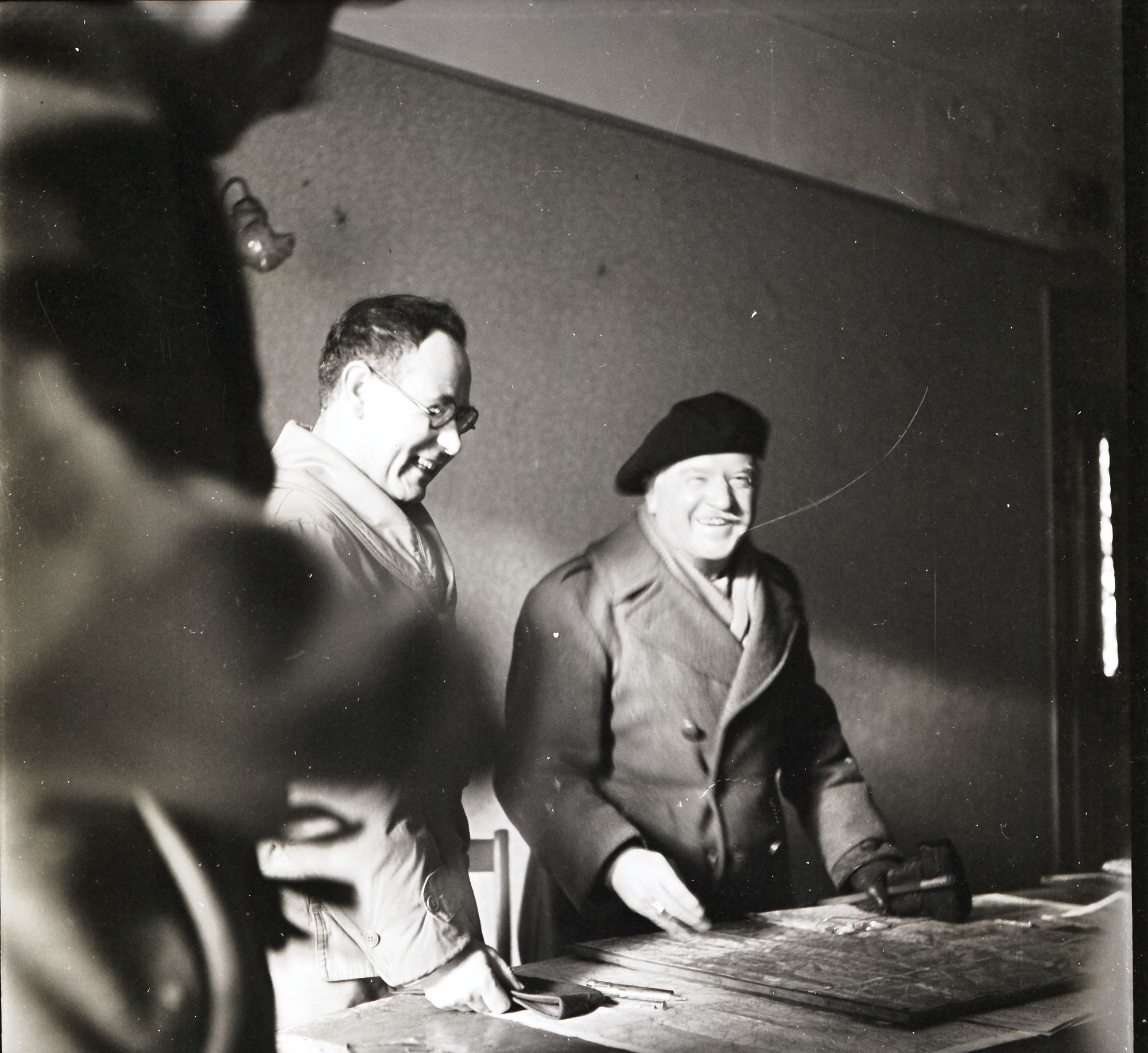
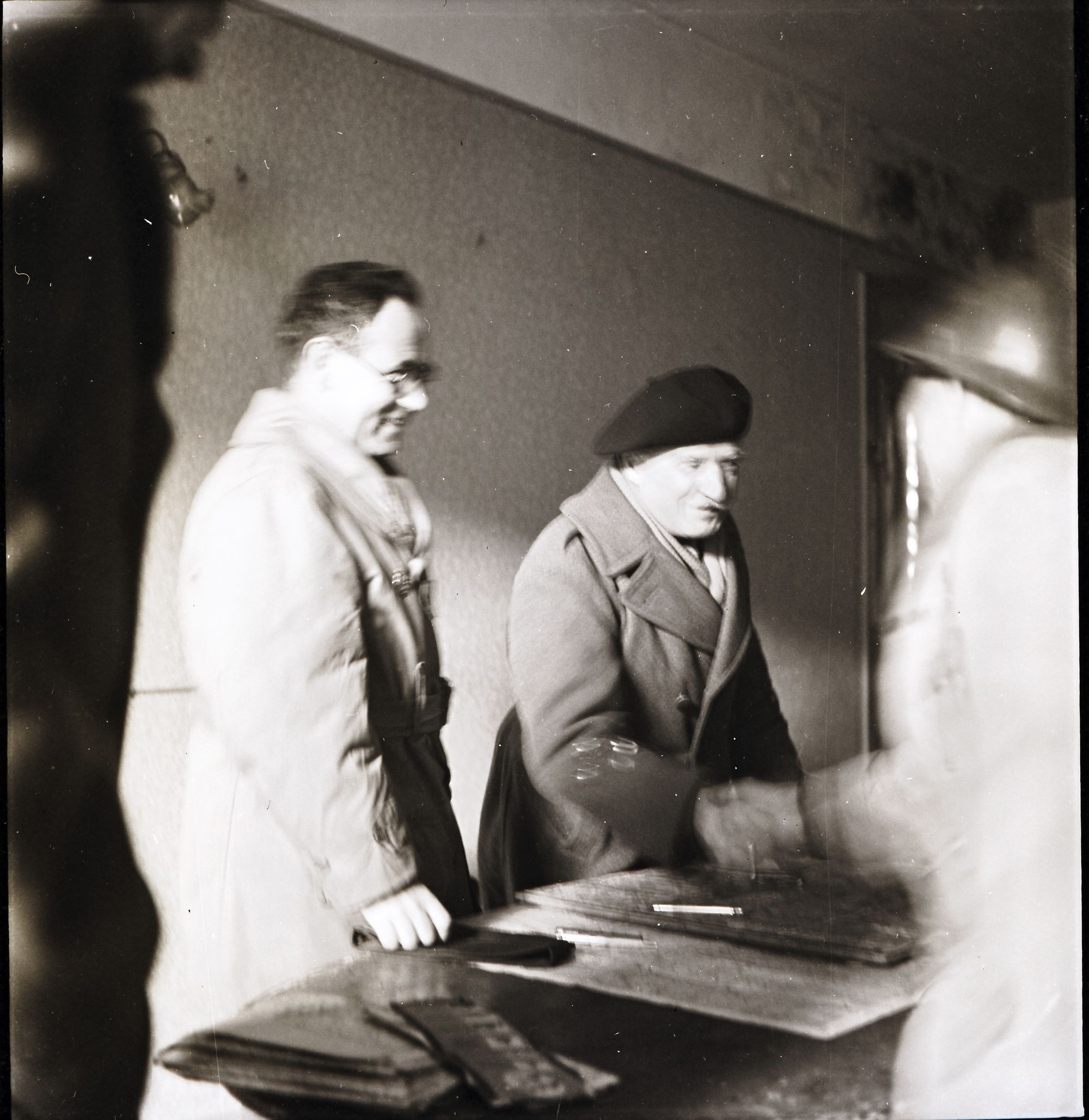
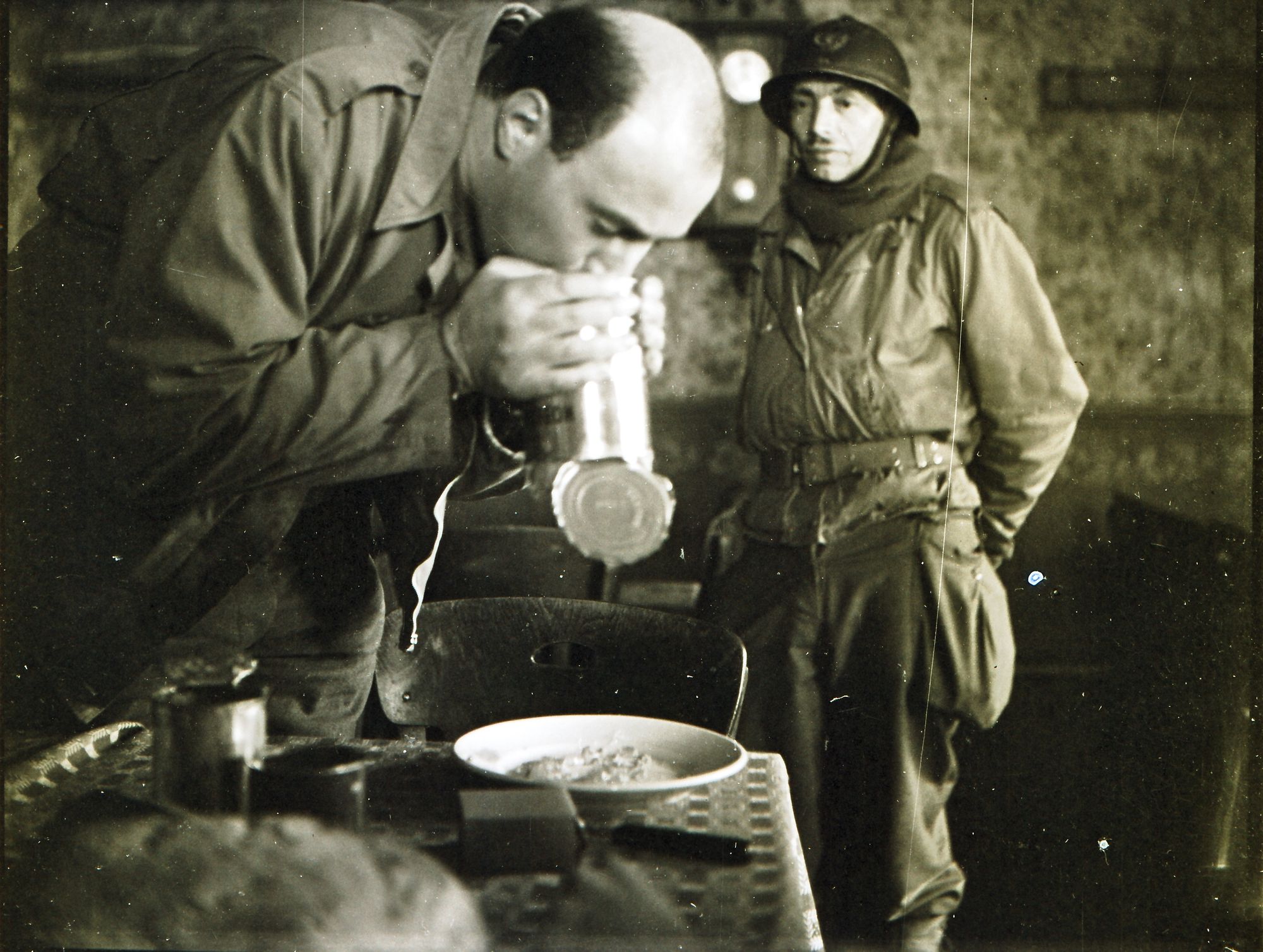
E2-E10. The Egérie command post set up inside the Urbeis town hall. In the two-star képi, General Jean de Lattre de Tassigny, leader of the First Army. The officer in a béret remains unidentified. Le PC Egérie s'est installé dans la mairie d'Urbeis. Sous le képi, le général Jean de Lattre de Tassigny, commandant la 1ère Armée. Sous le béret, l'officier reste à identifier.
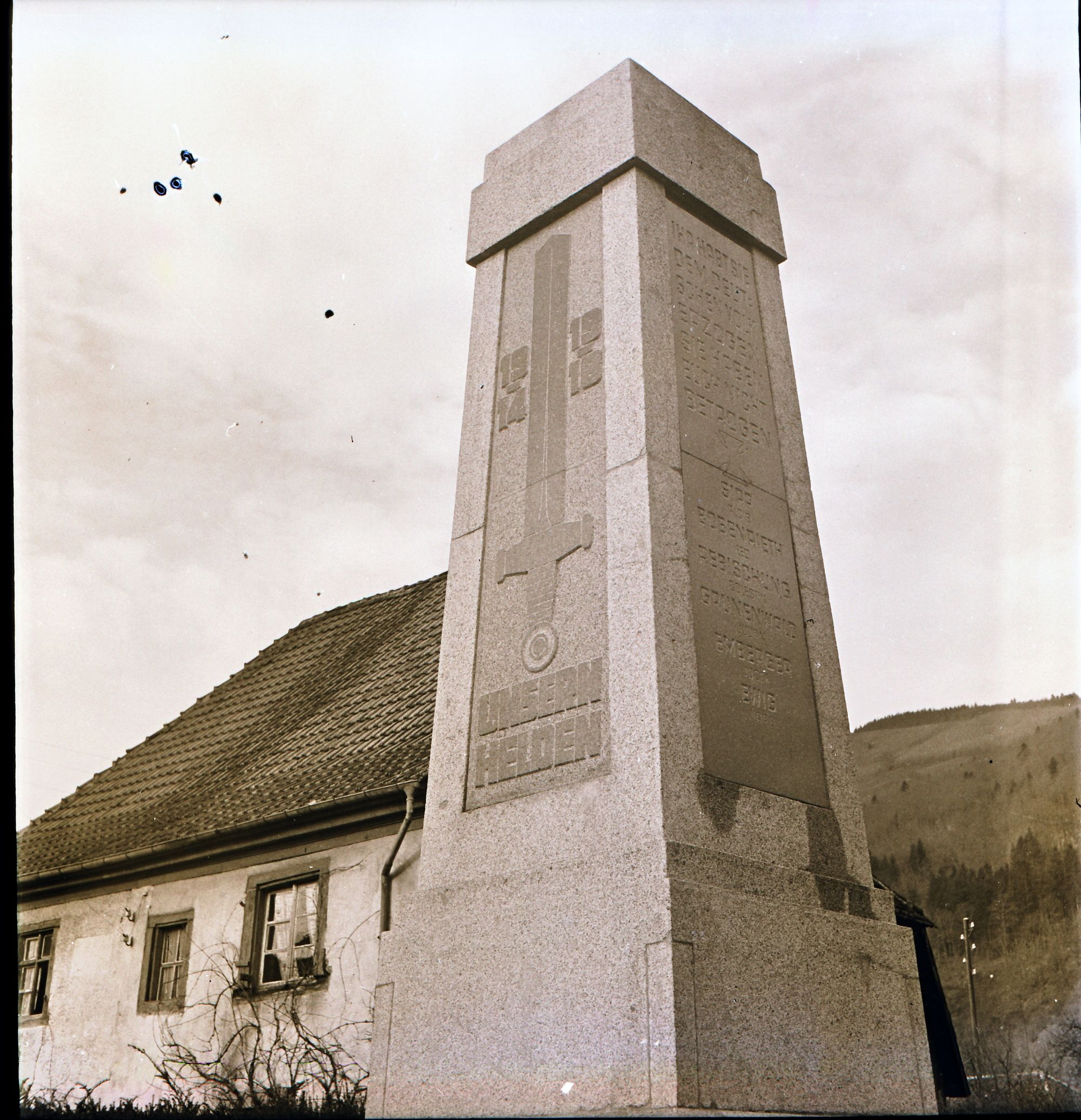
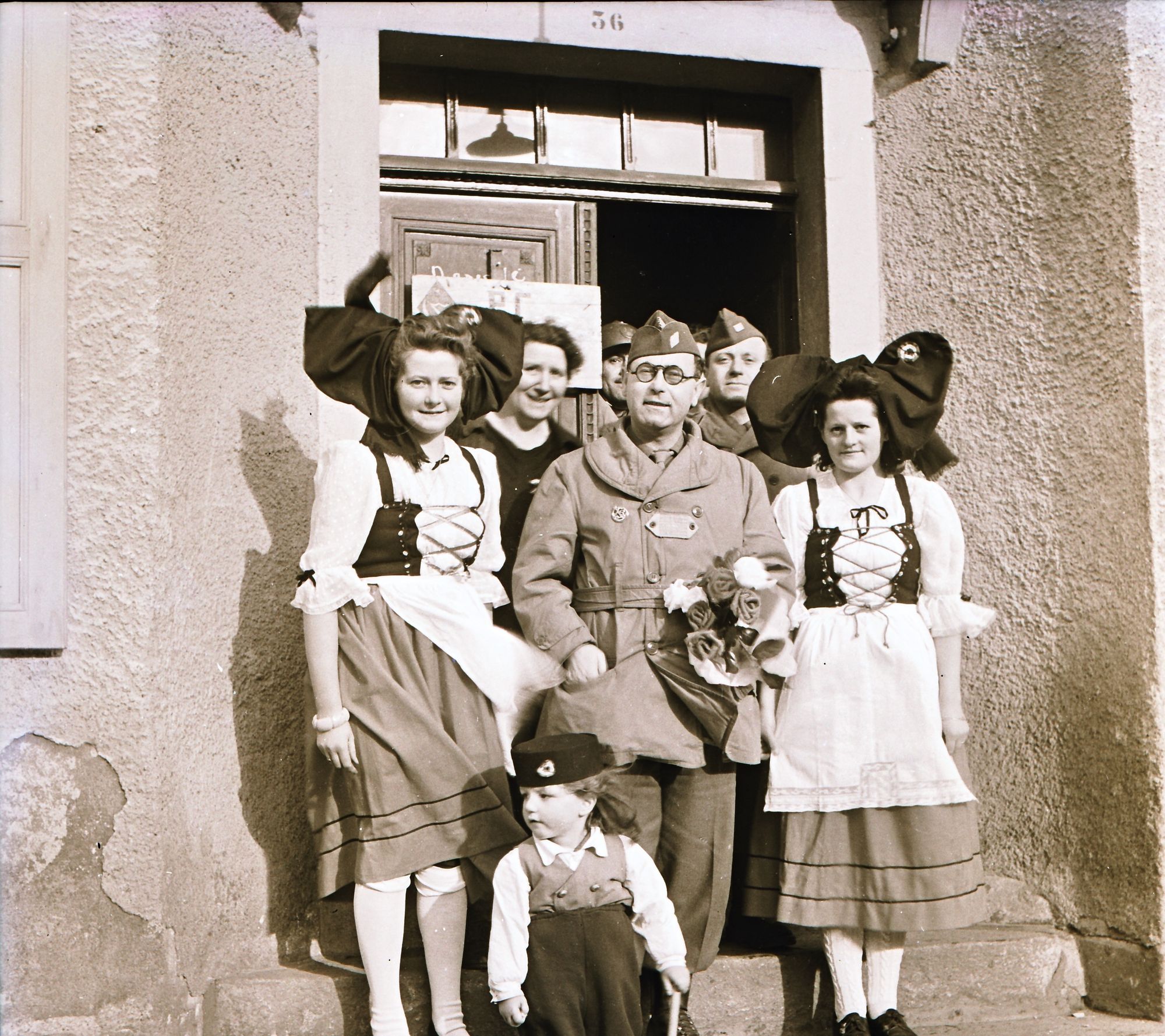
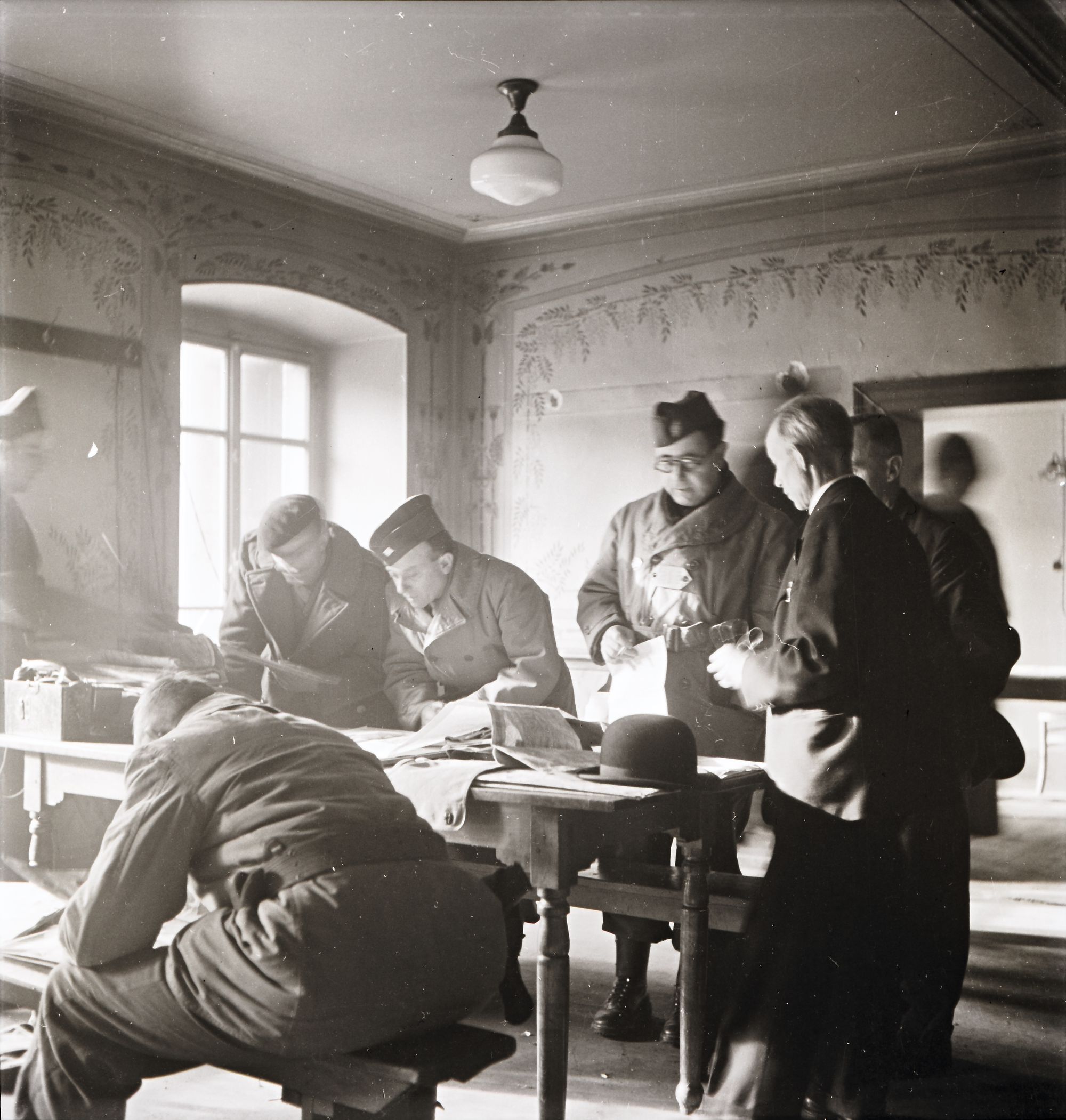
E12. F1. Urbeis town hall. Mairie d'Urbeis.
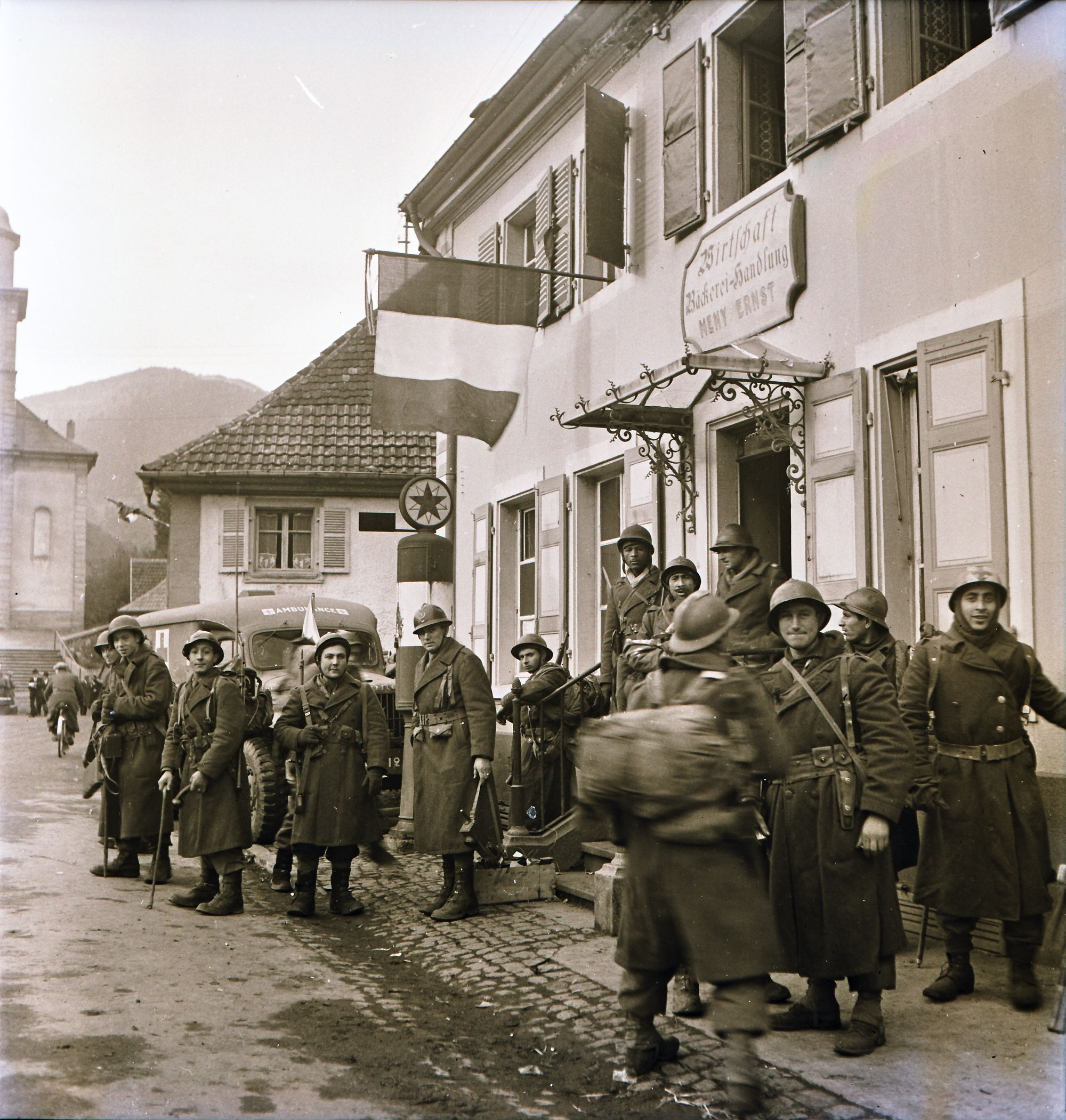
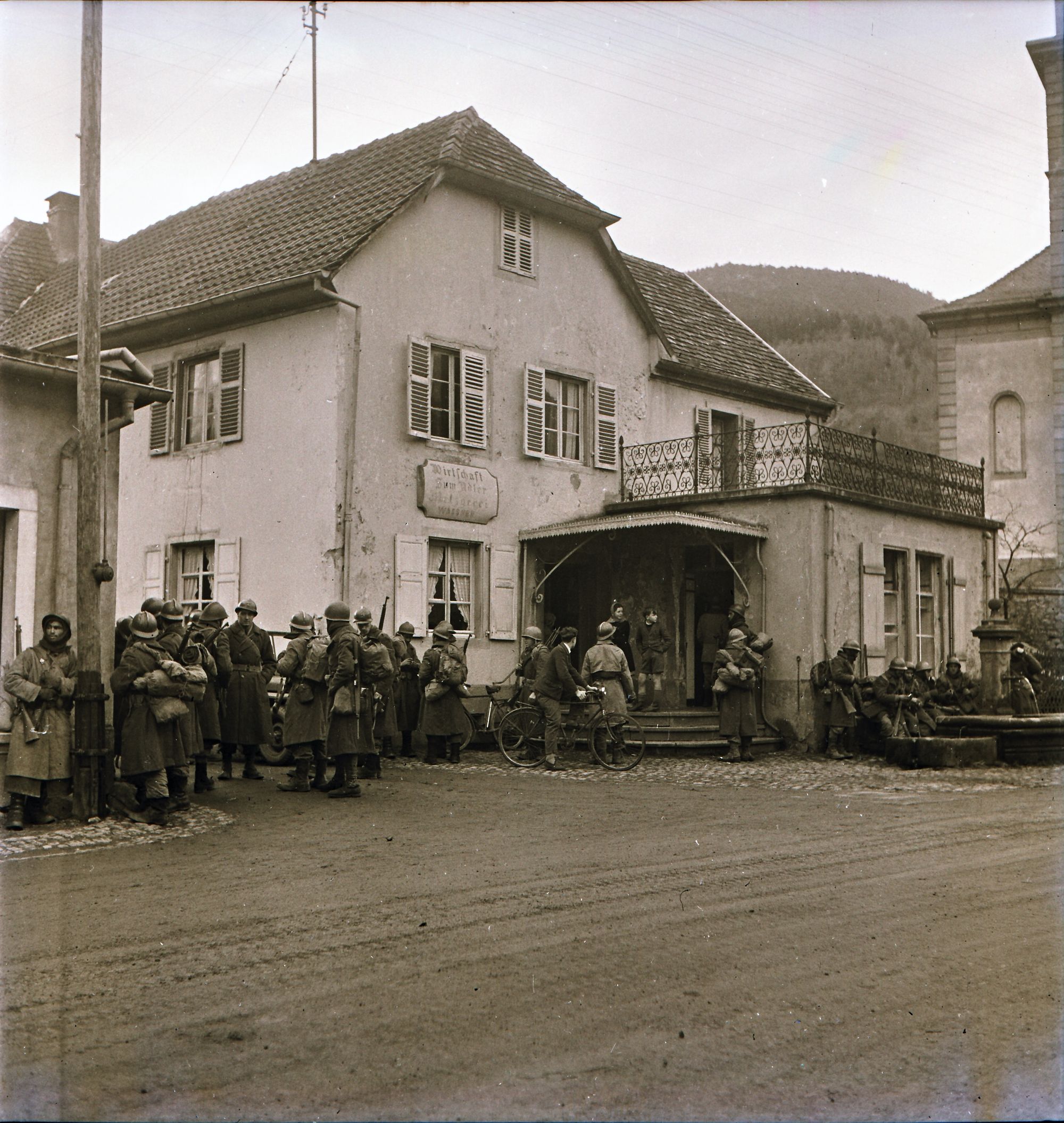
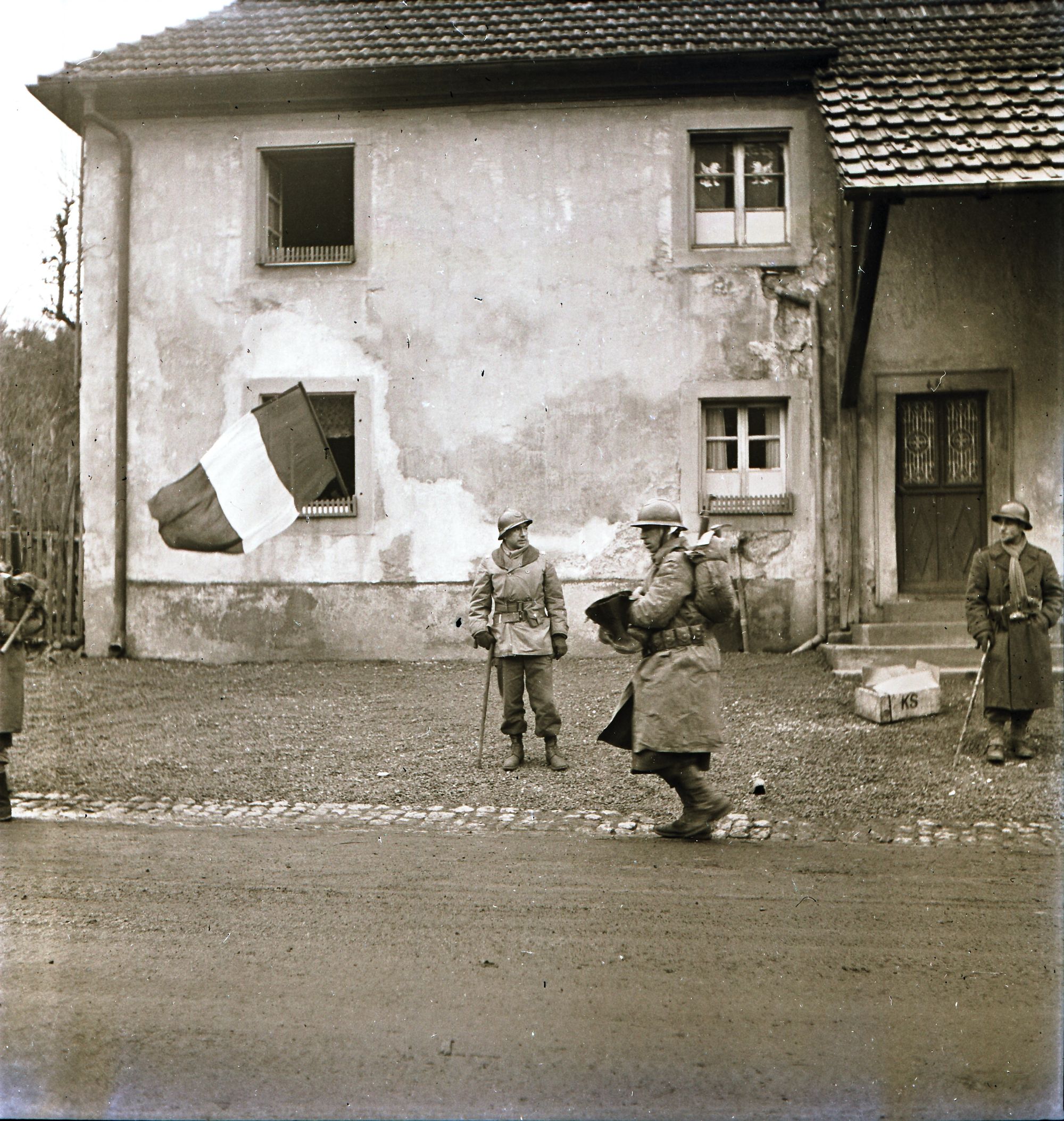
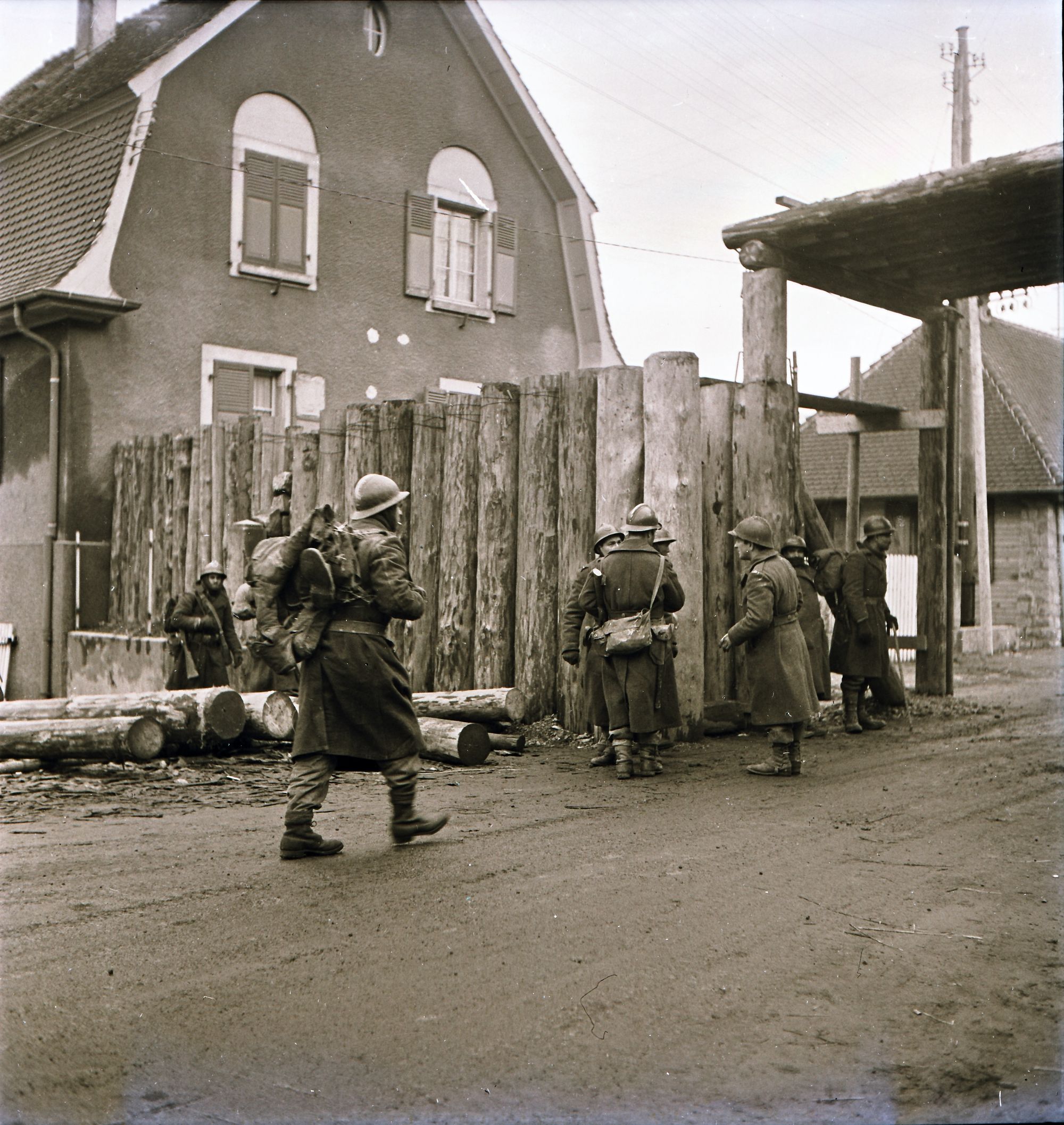
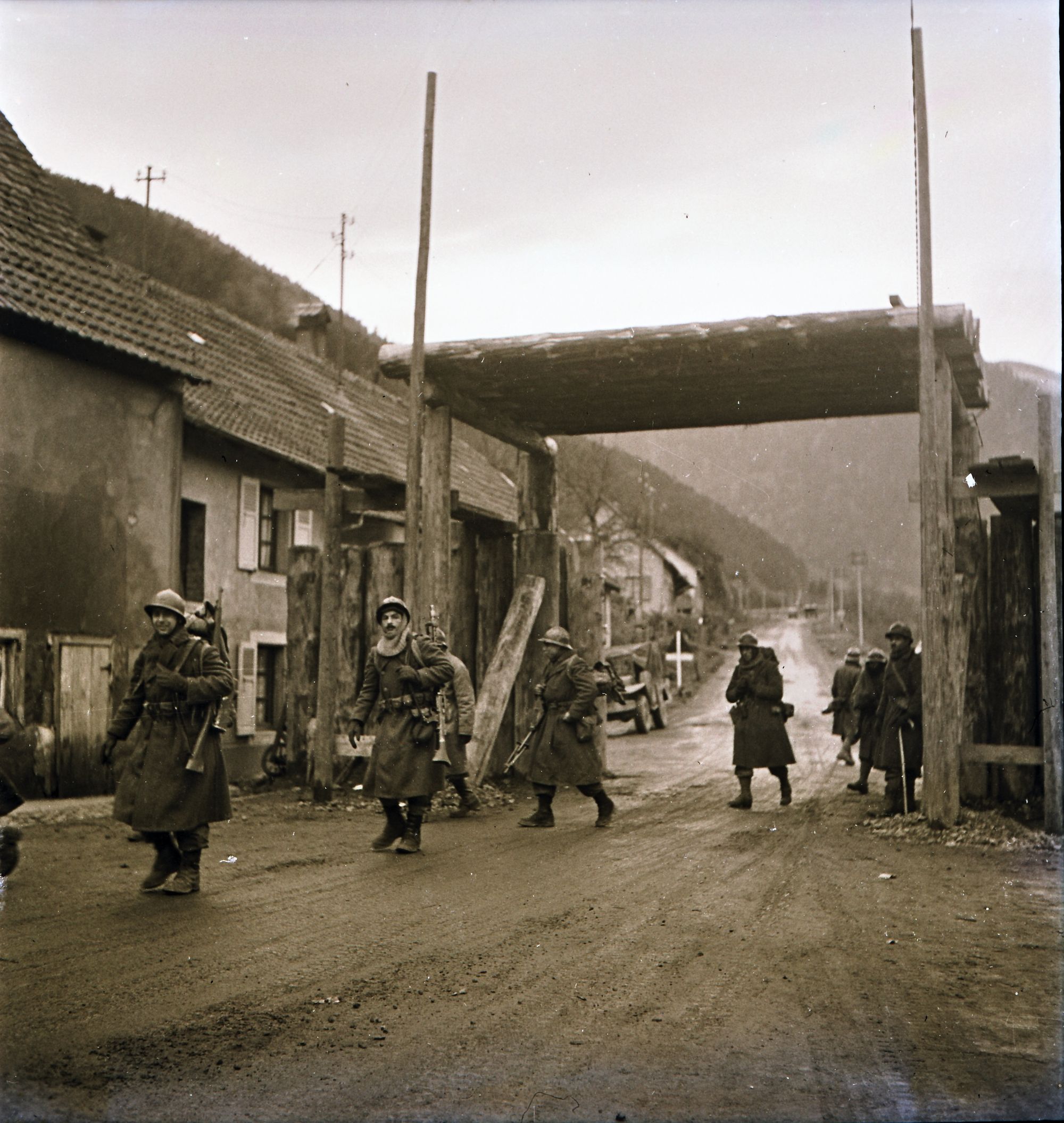
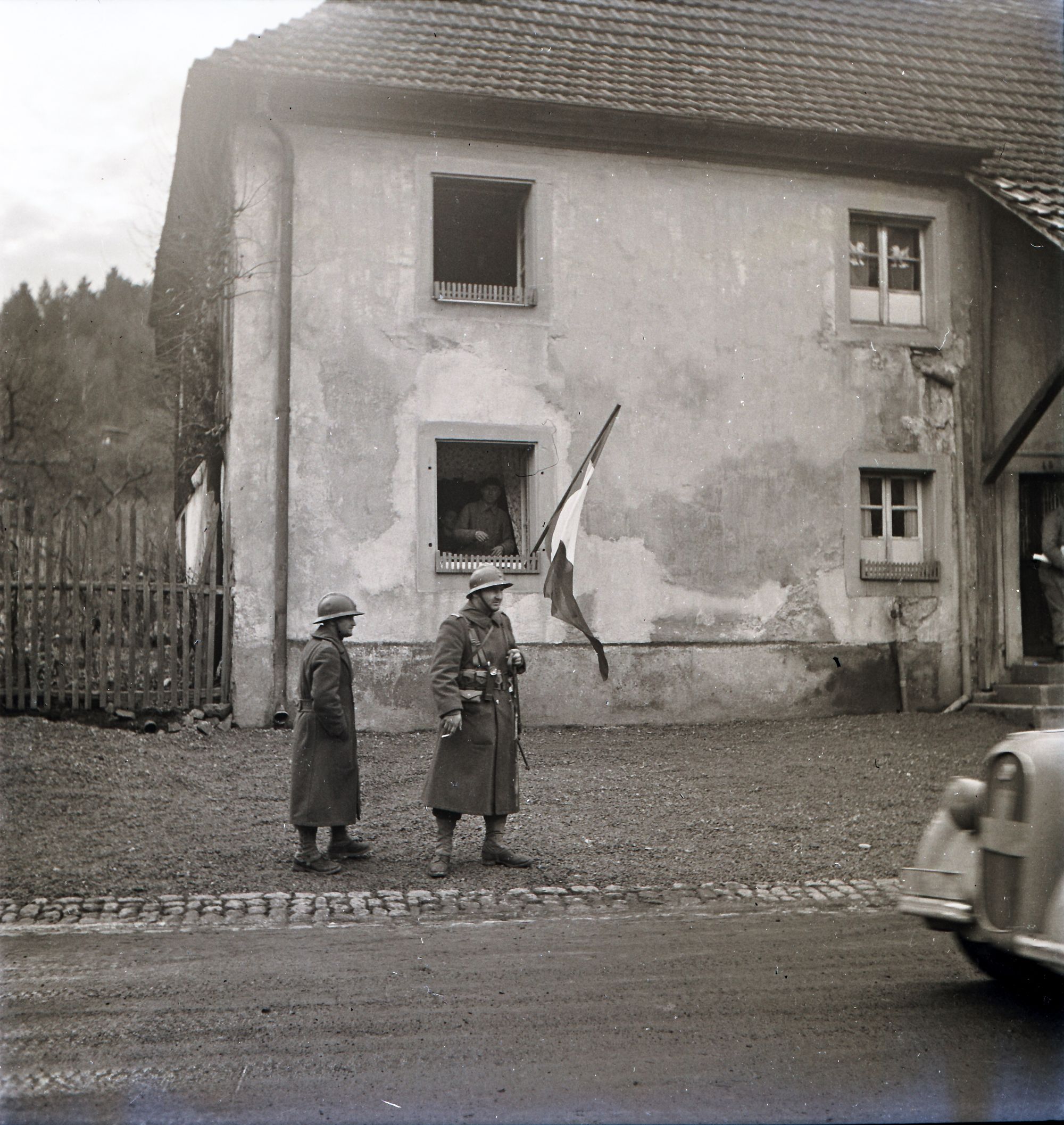
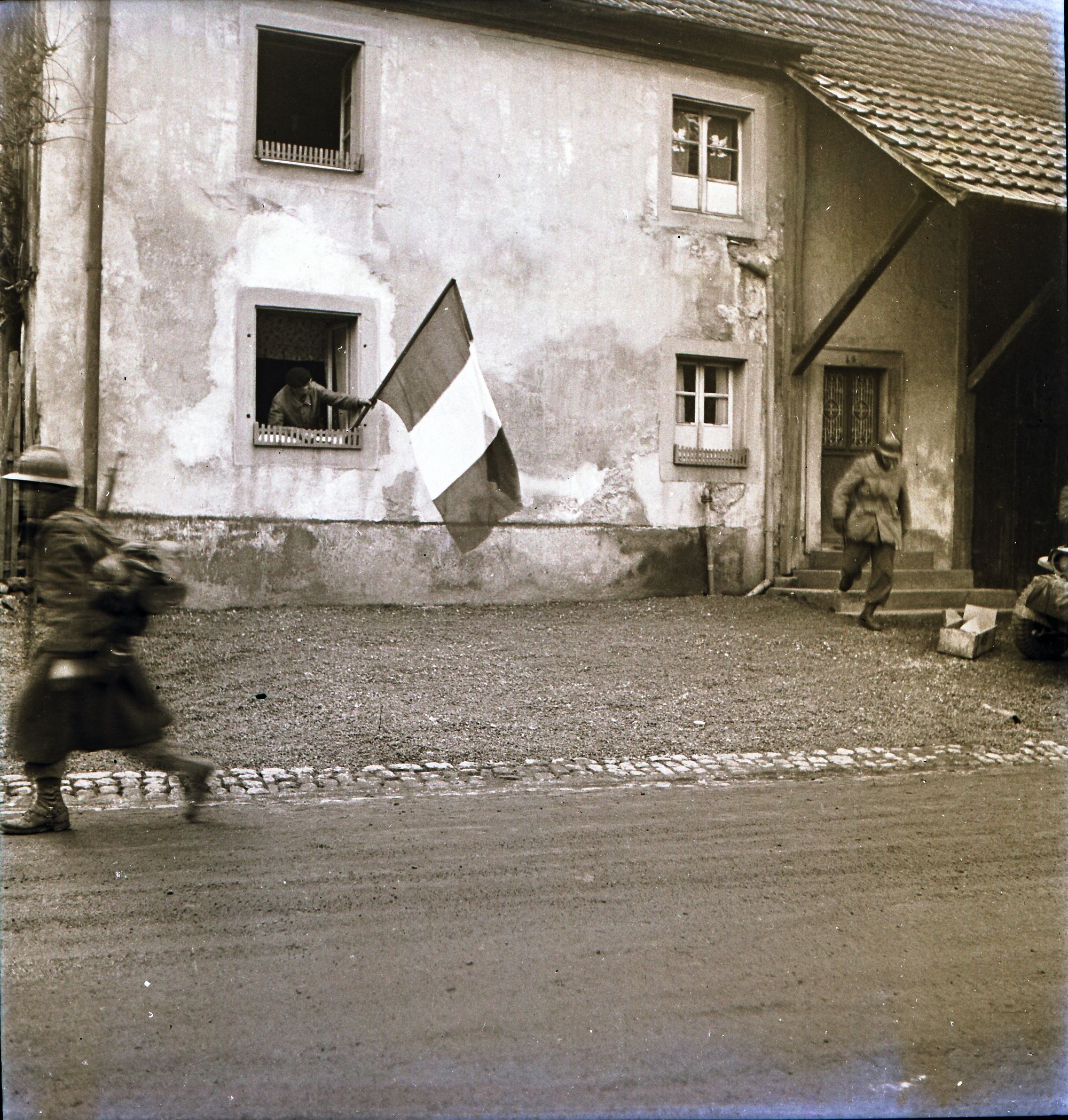
F3-F8. French soldiers enter Urbeis. L’entrée des français à Urbeis
Belfort
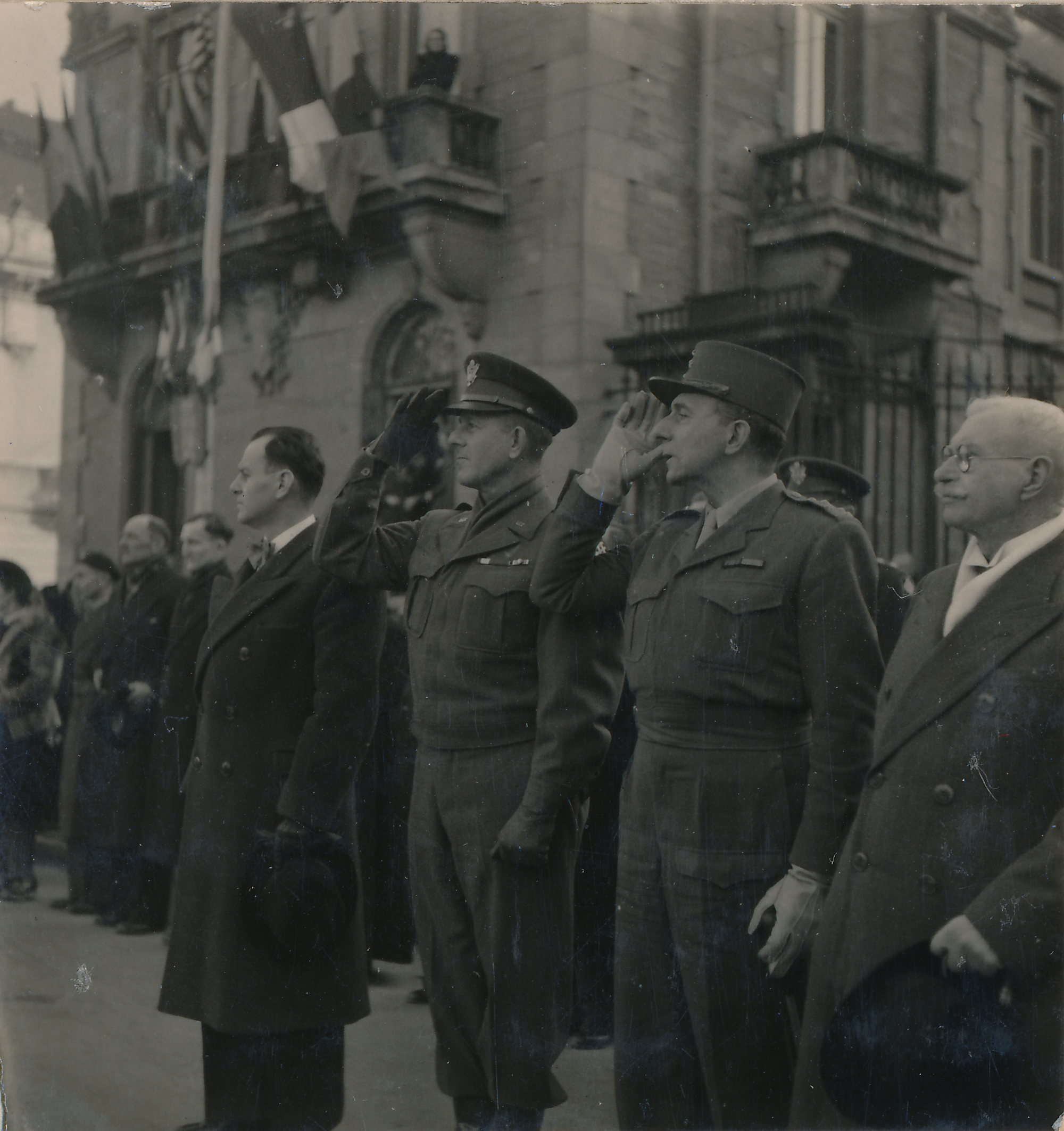
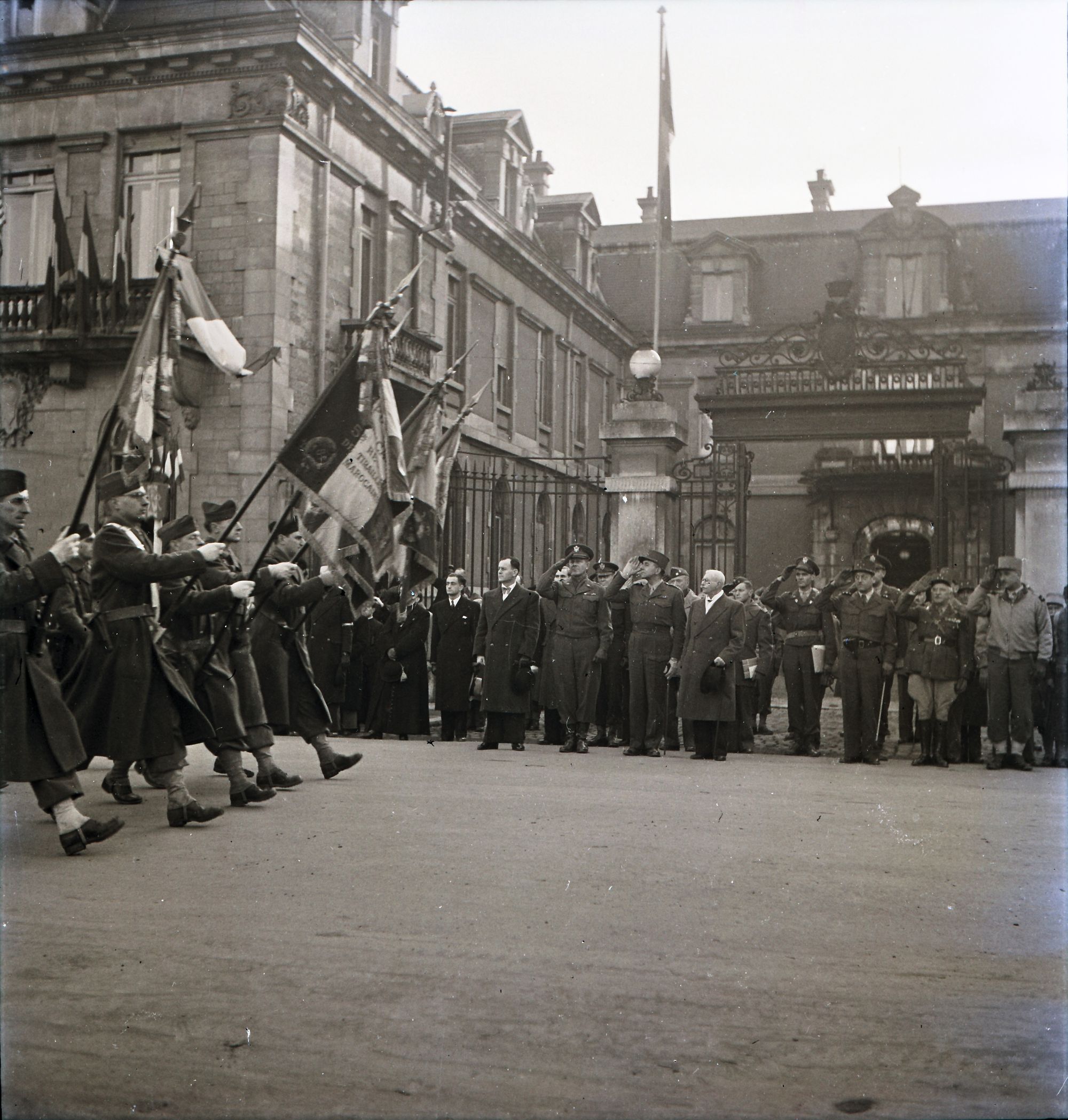
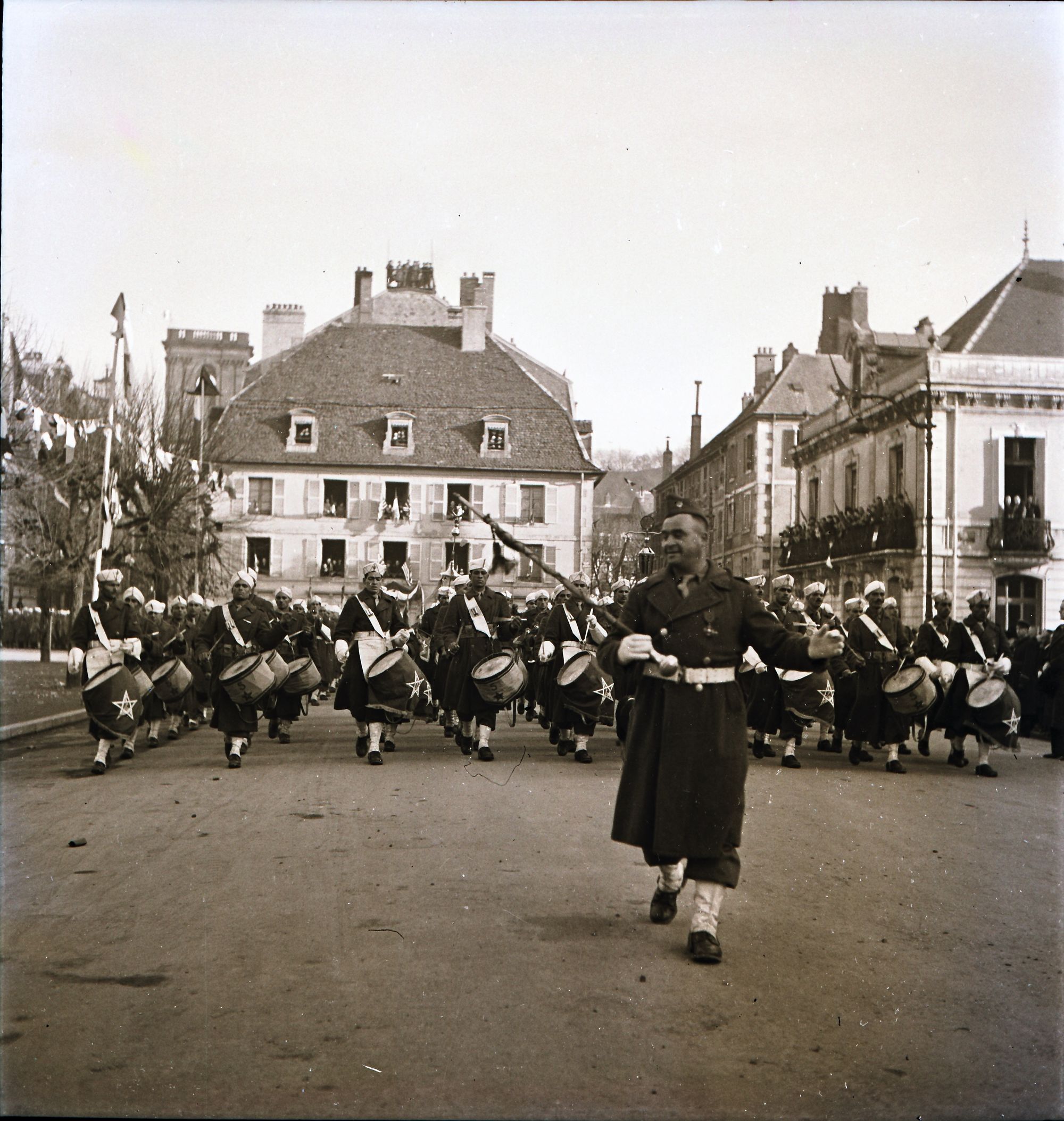
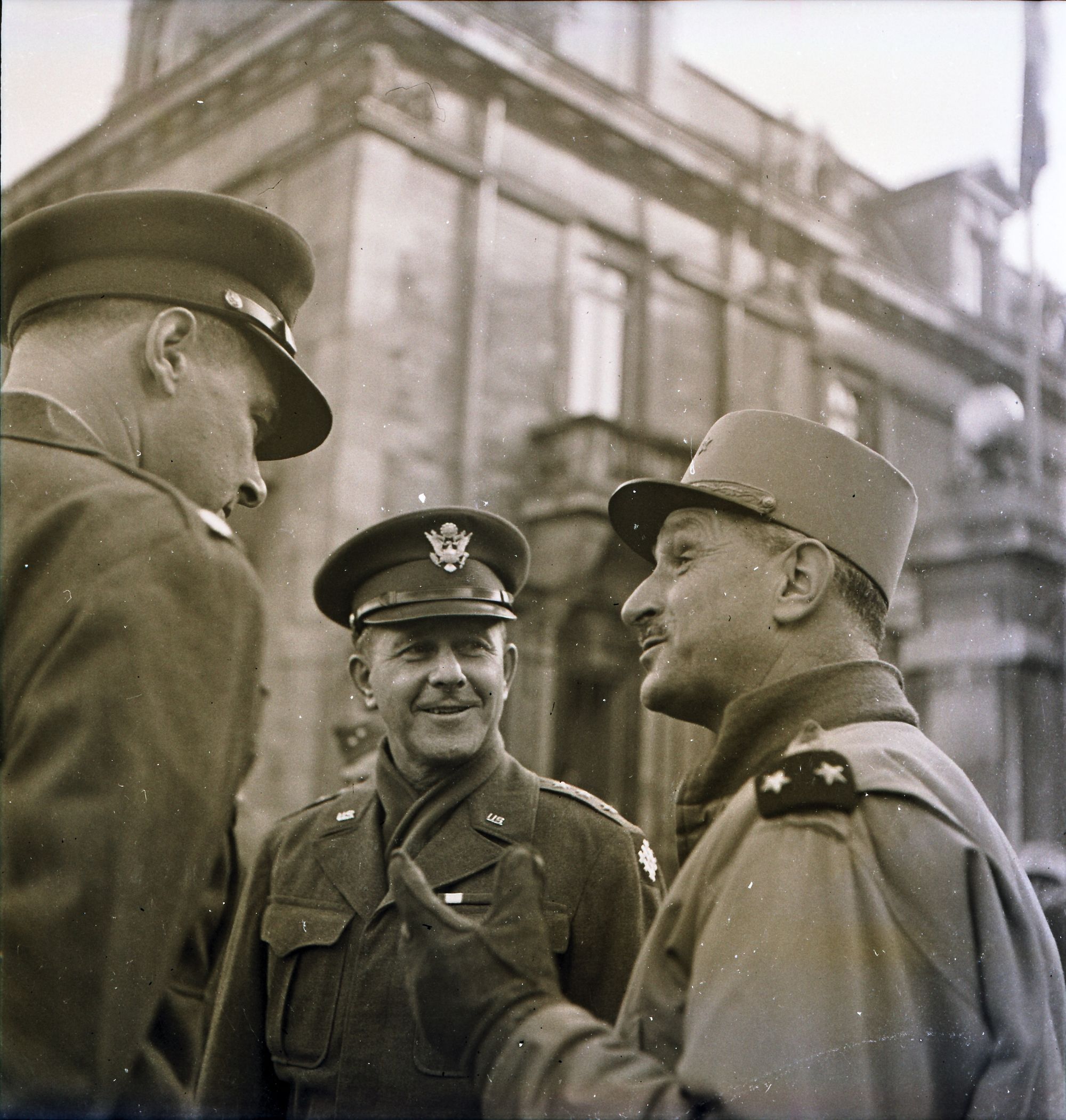
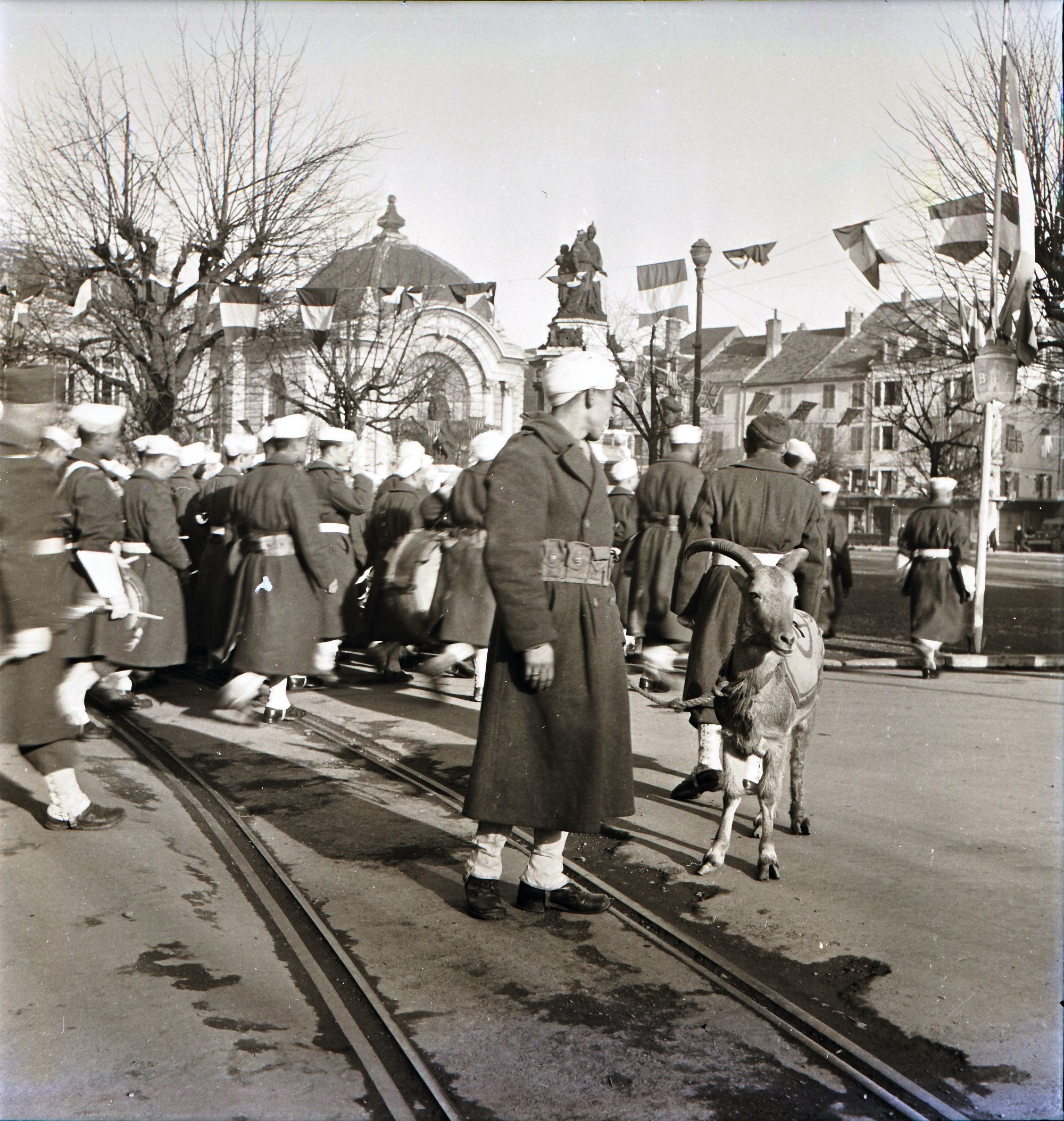
F9-F12. G1. General De Lattre and General Jacob L. Devers at a parade in Belfort. G.al Delattre – G.al Devers lors d’une prise d’armes à Belfort.
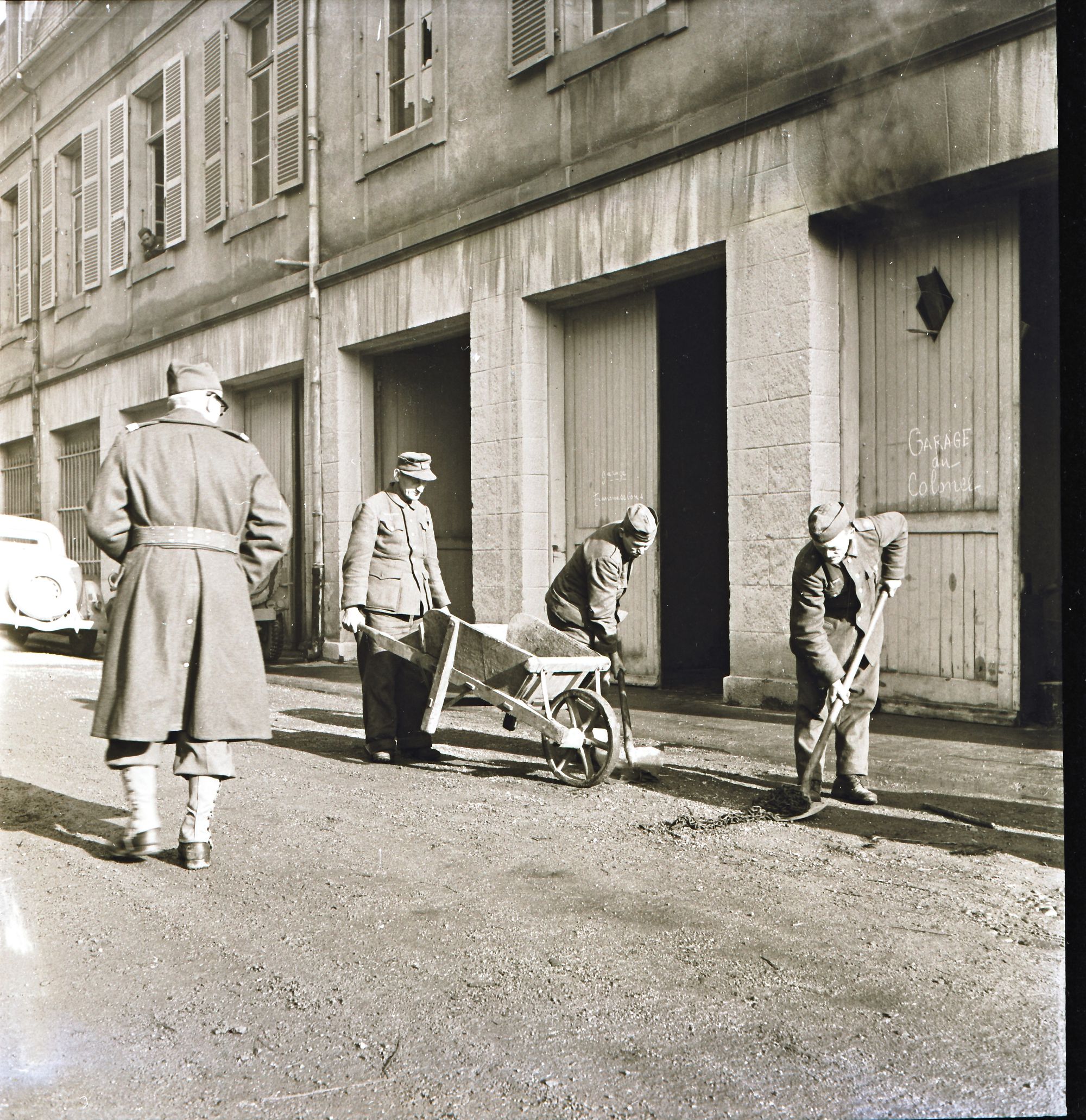
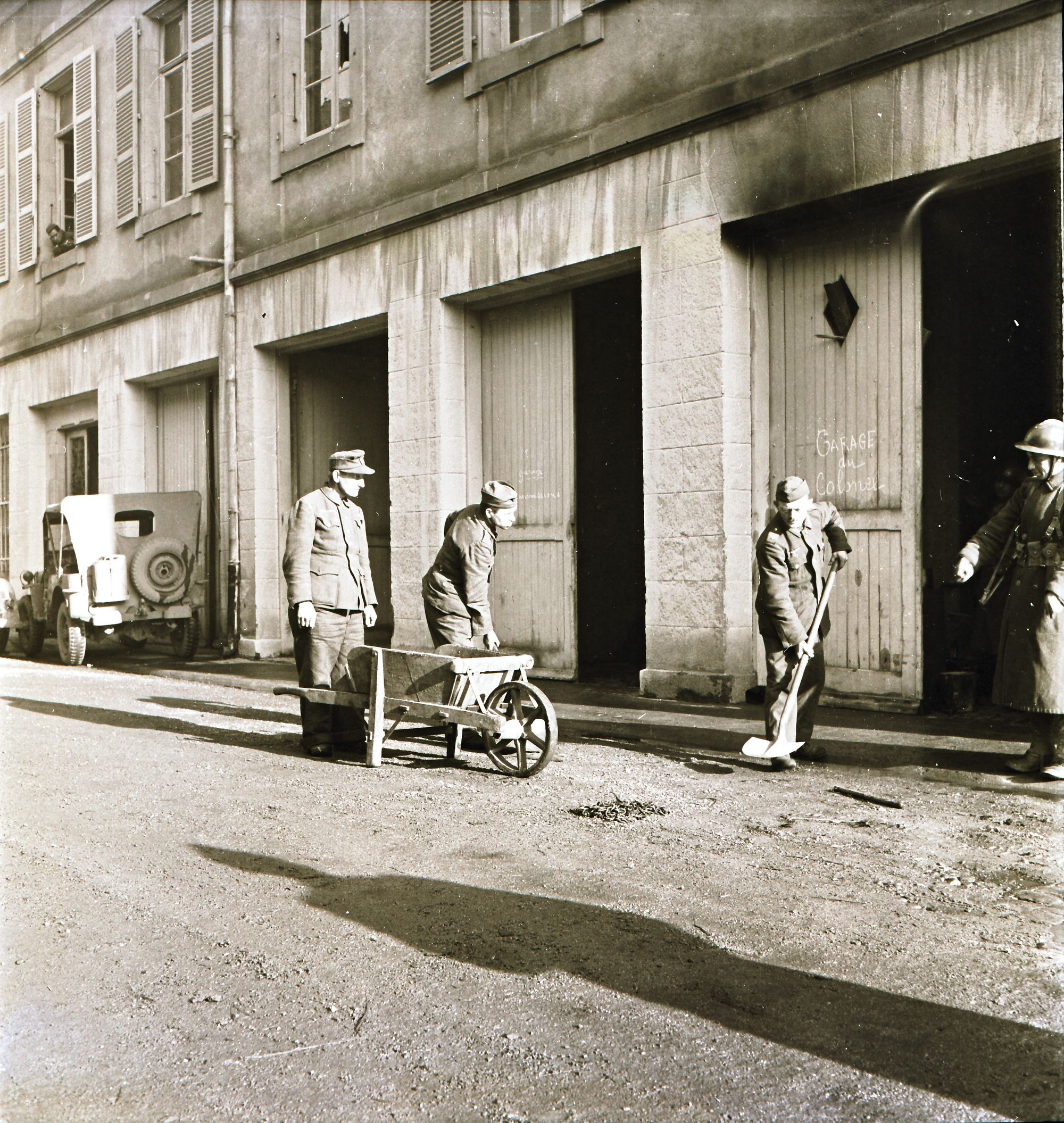
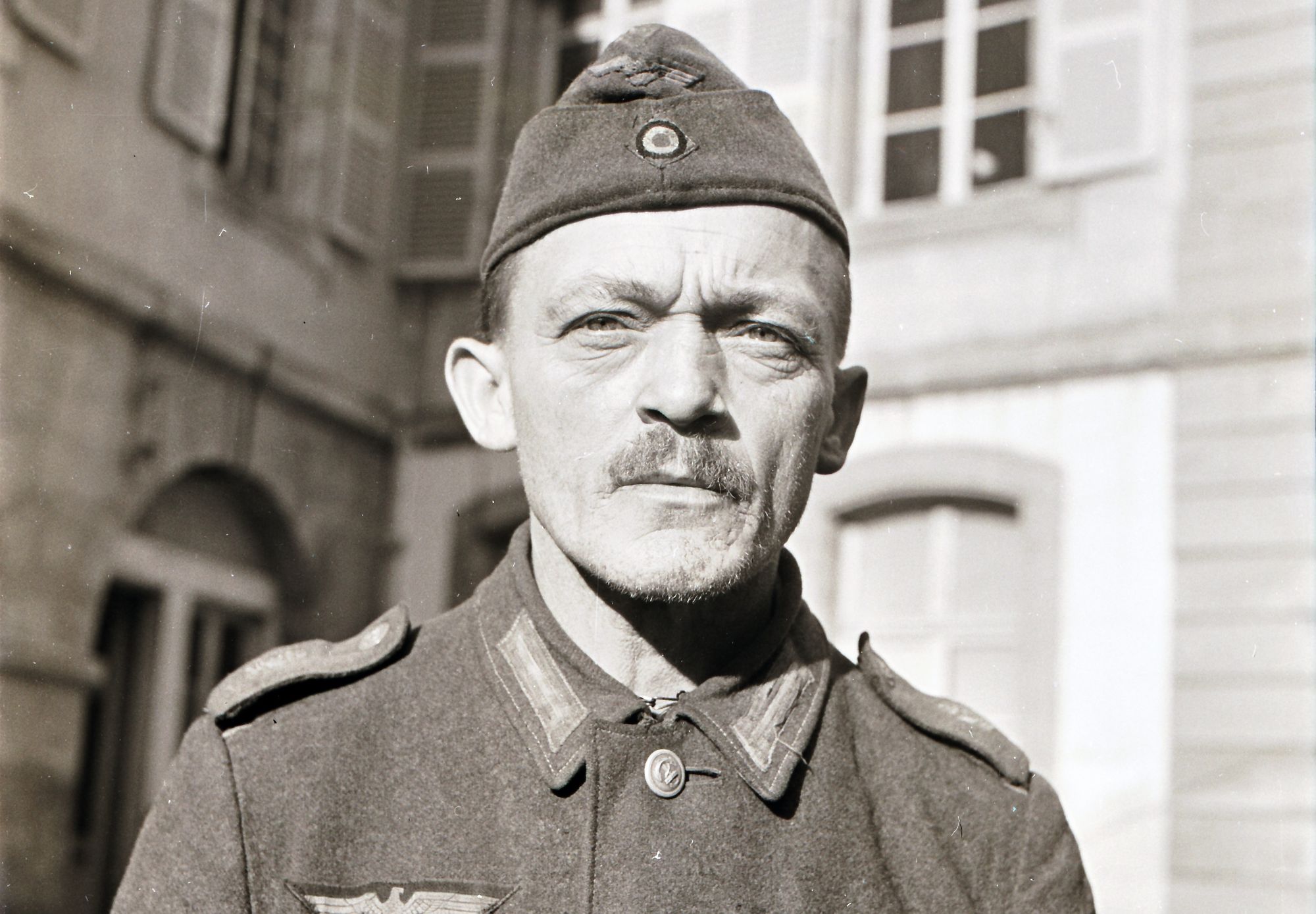
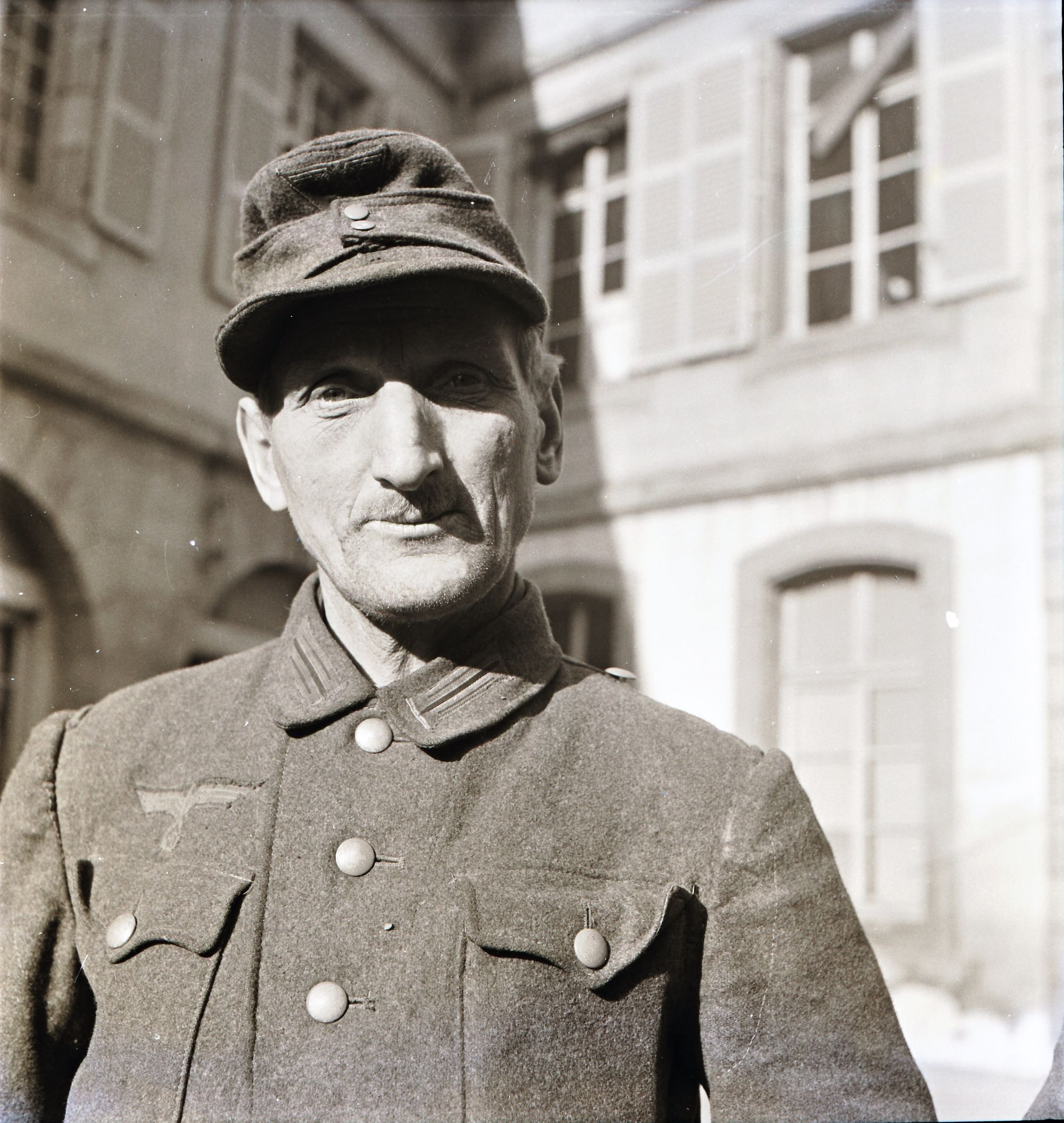
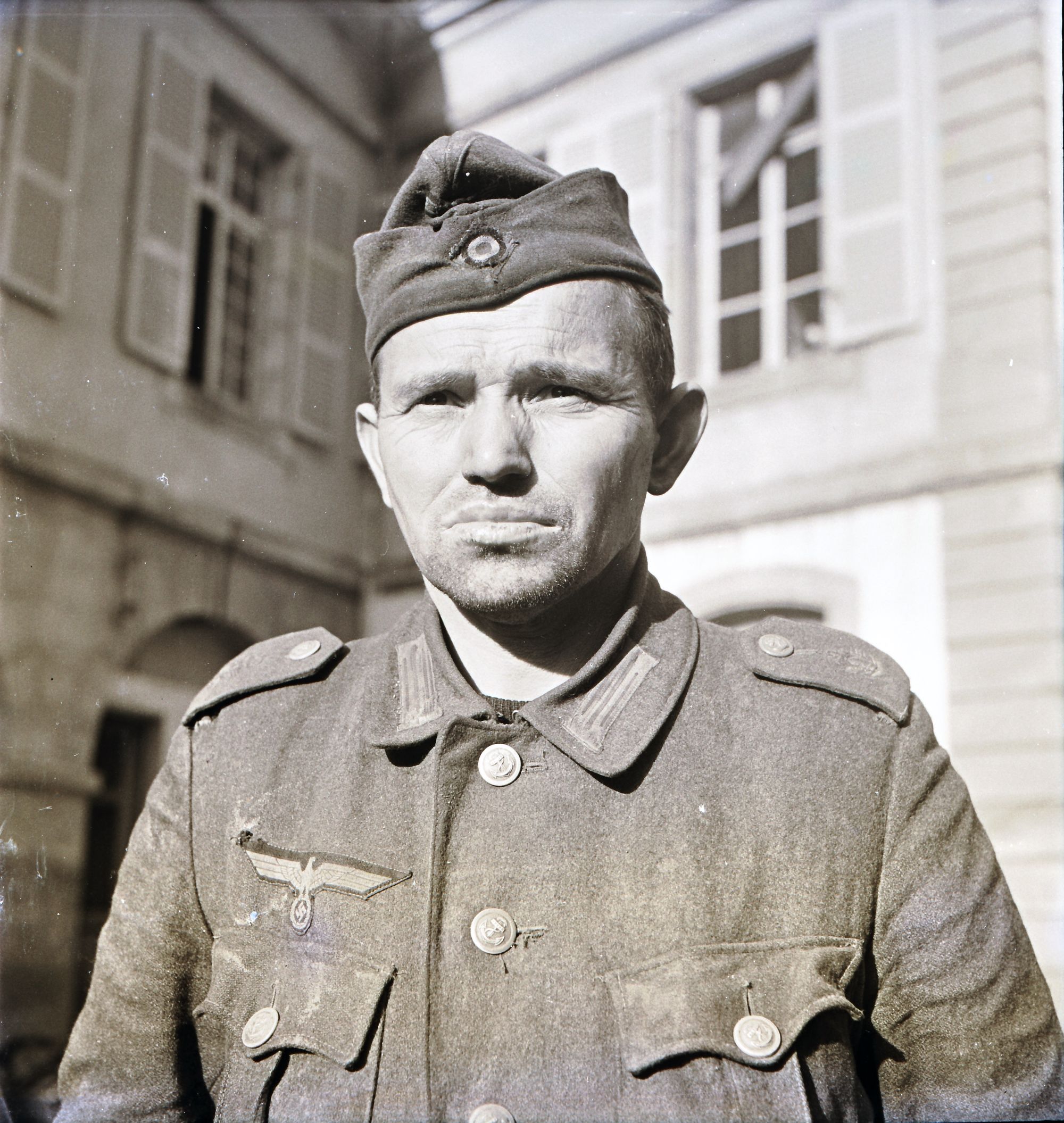
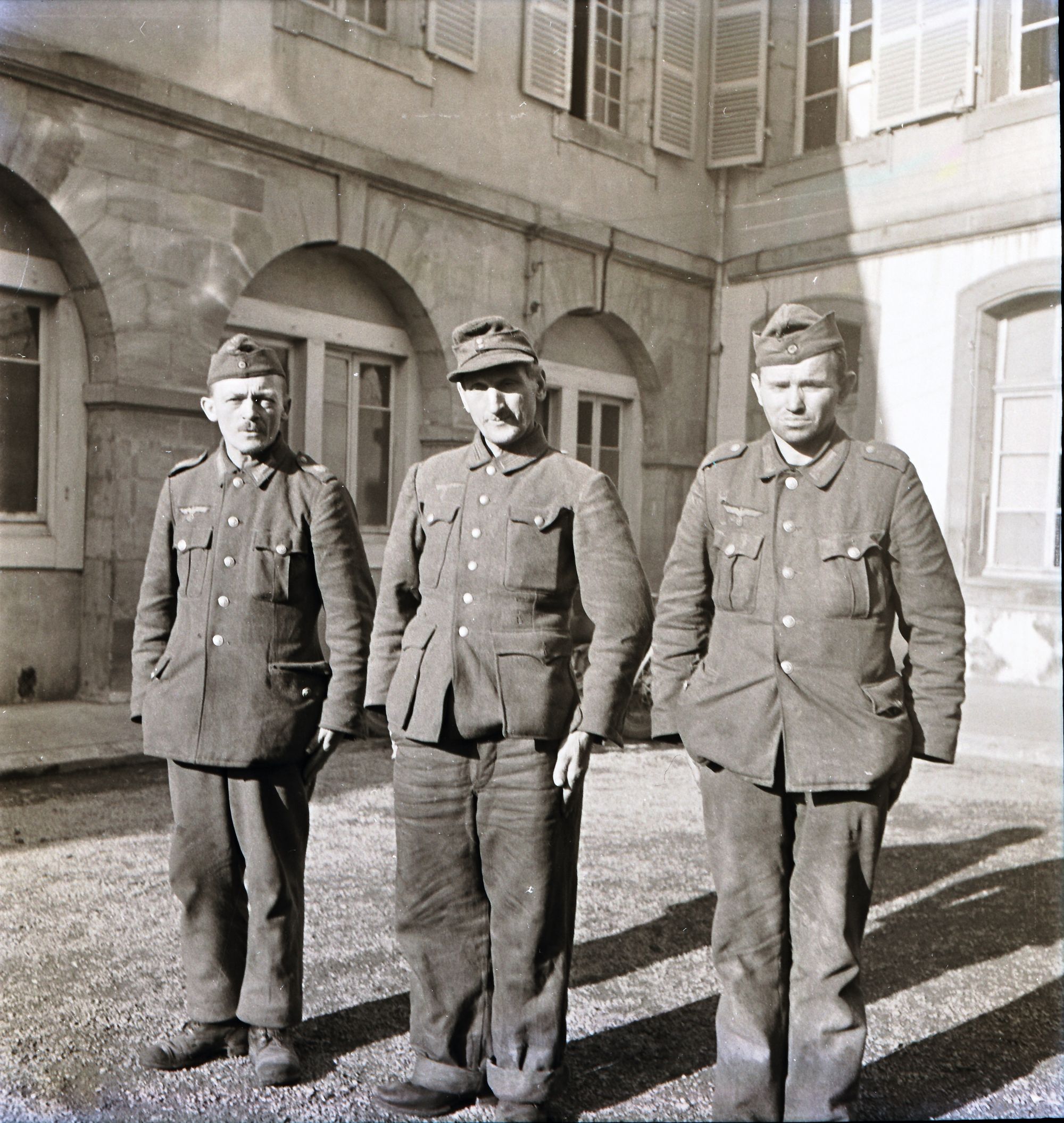
G2-G7. German prisoners working in the courtyard of a military barracks in Belfort. Prisonniers allemands travaillant dans la cour du quartier d’une caserne de Belfort.
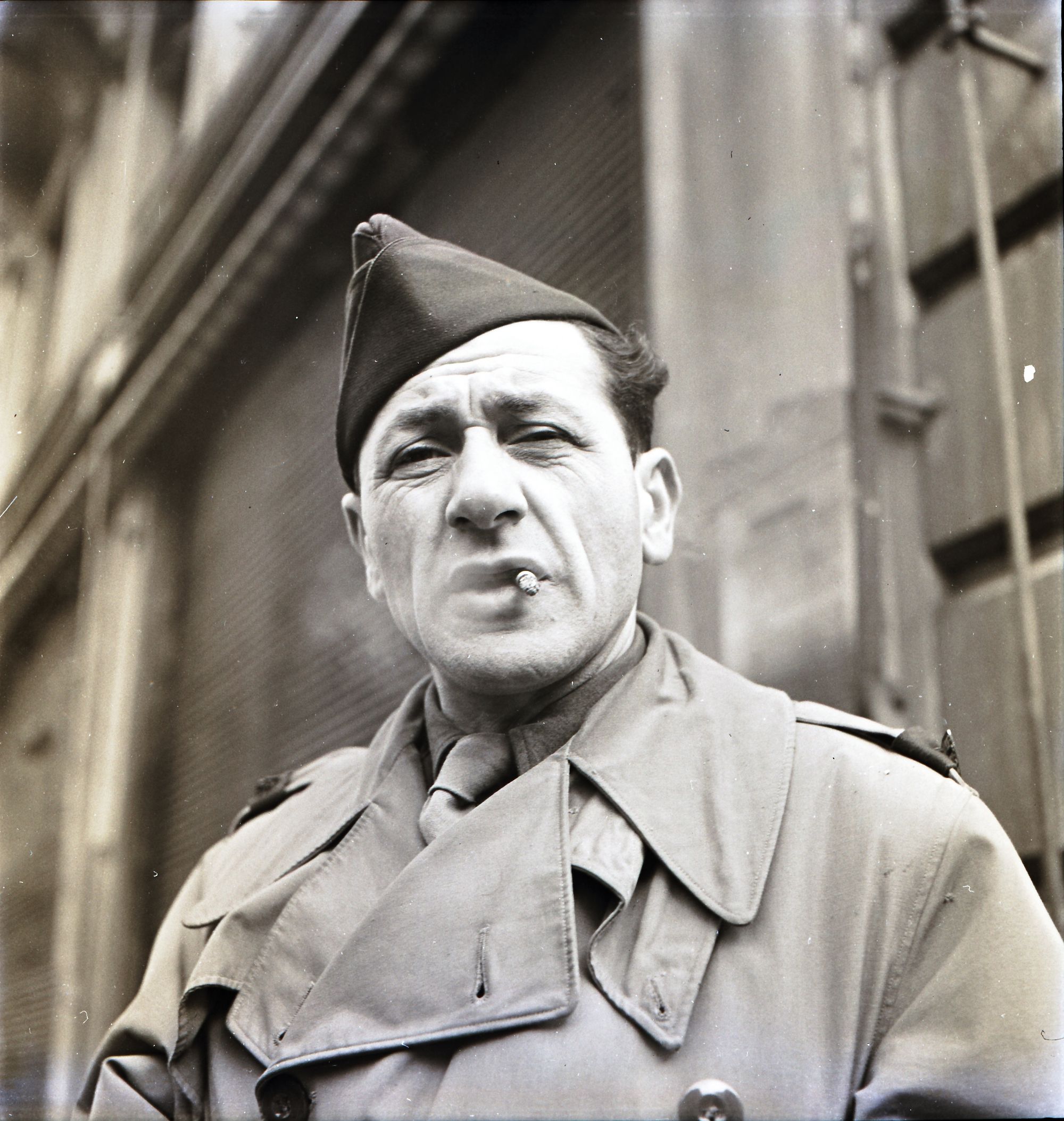
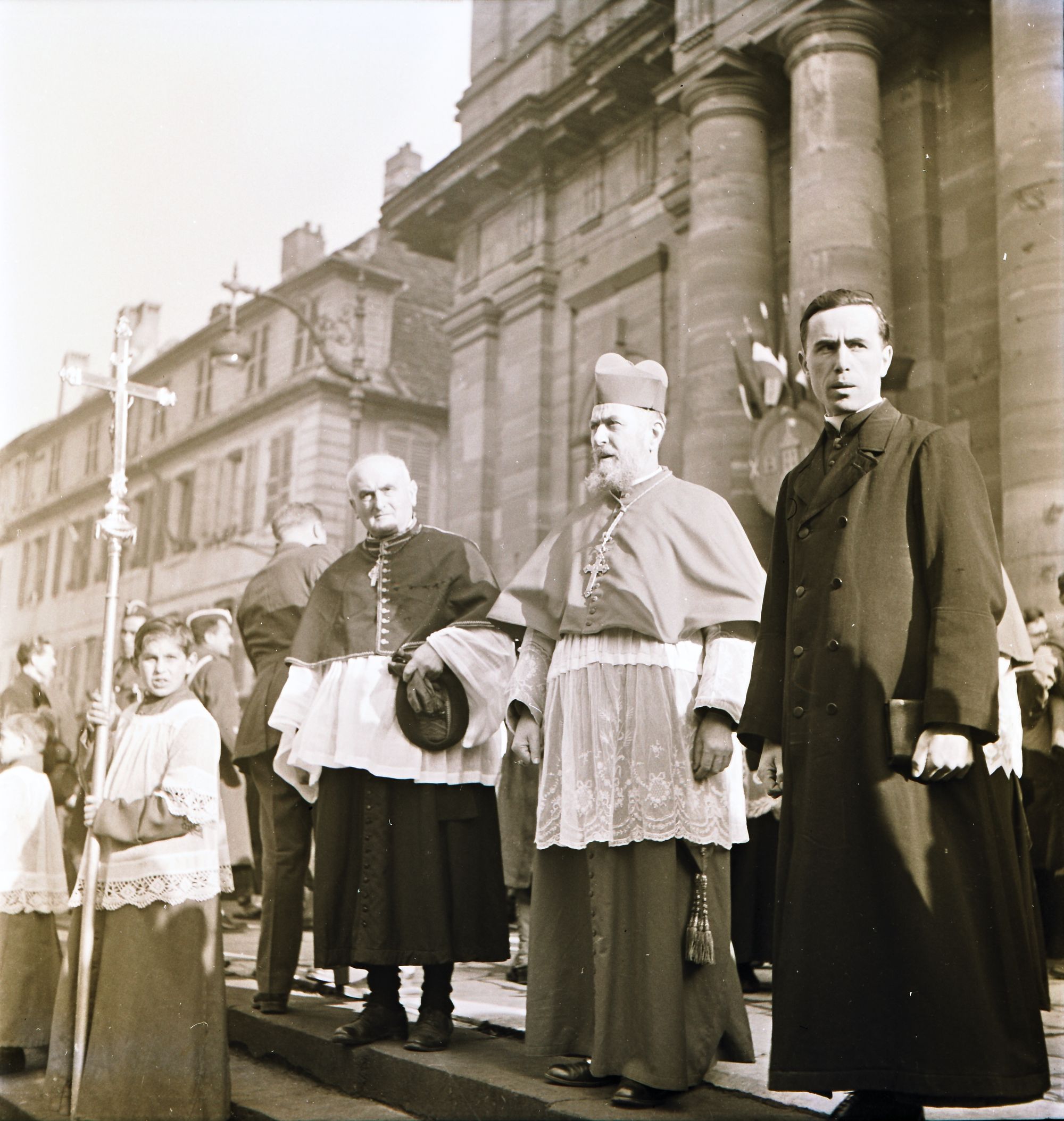
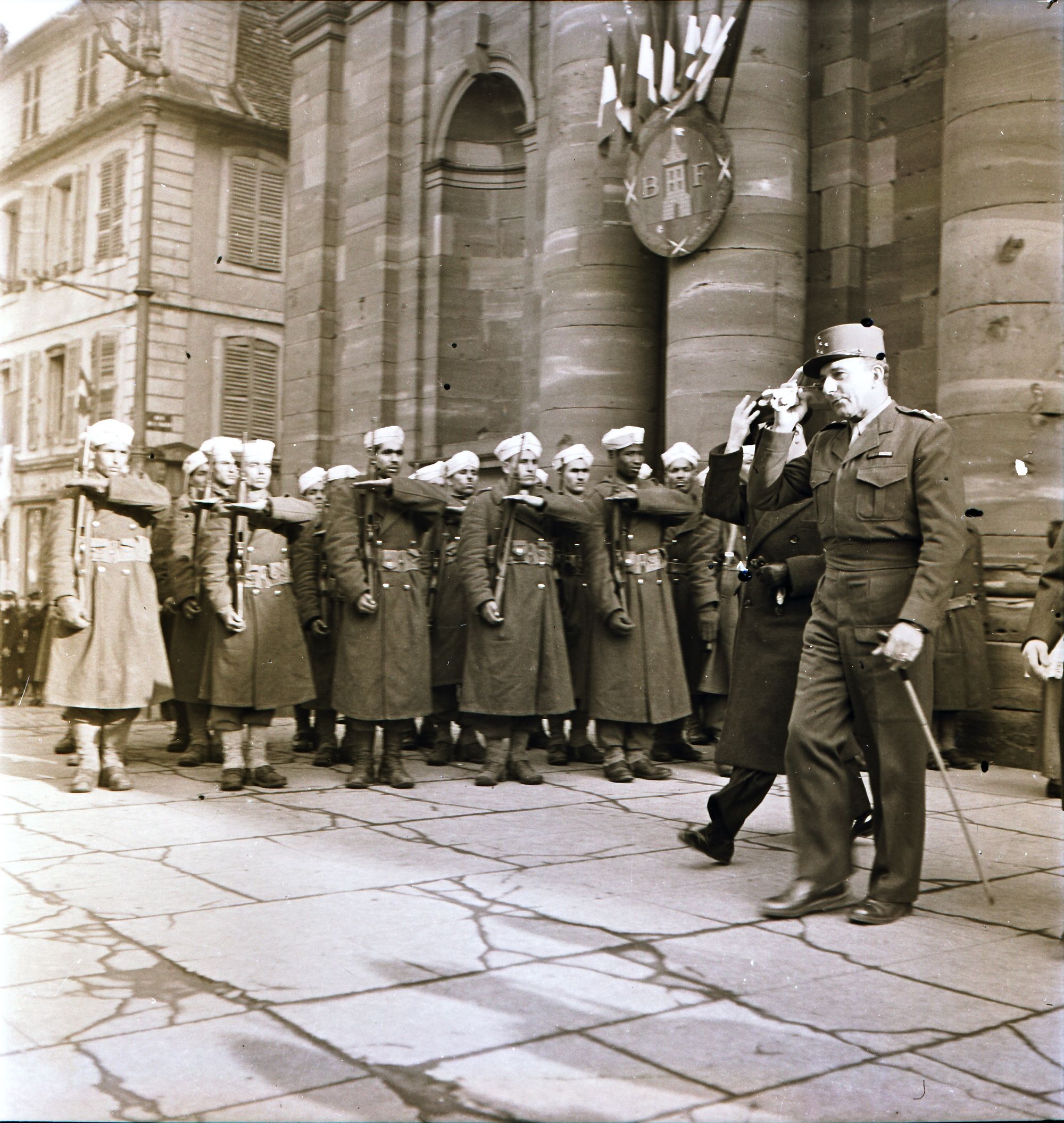
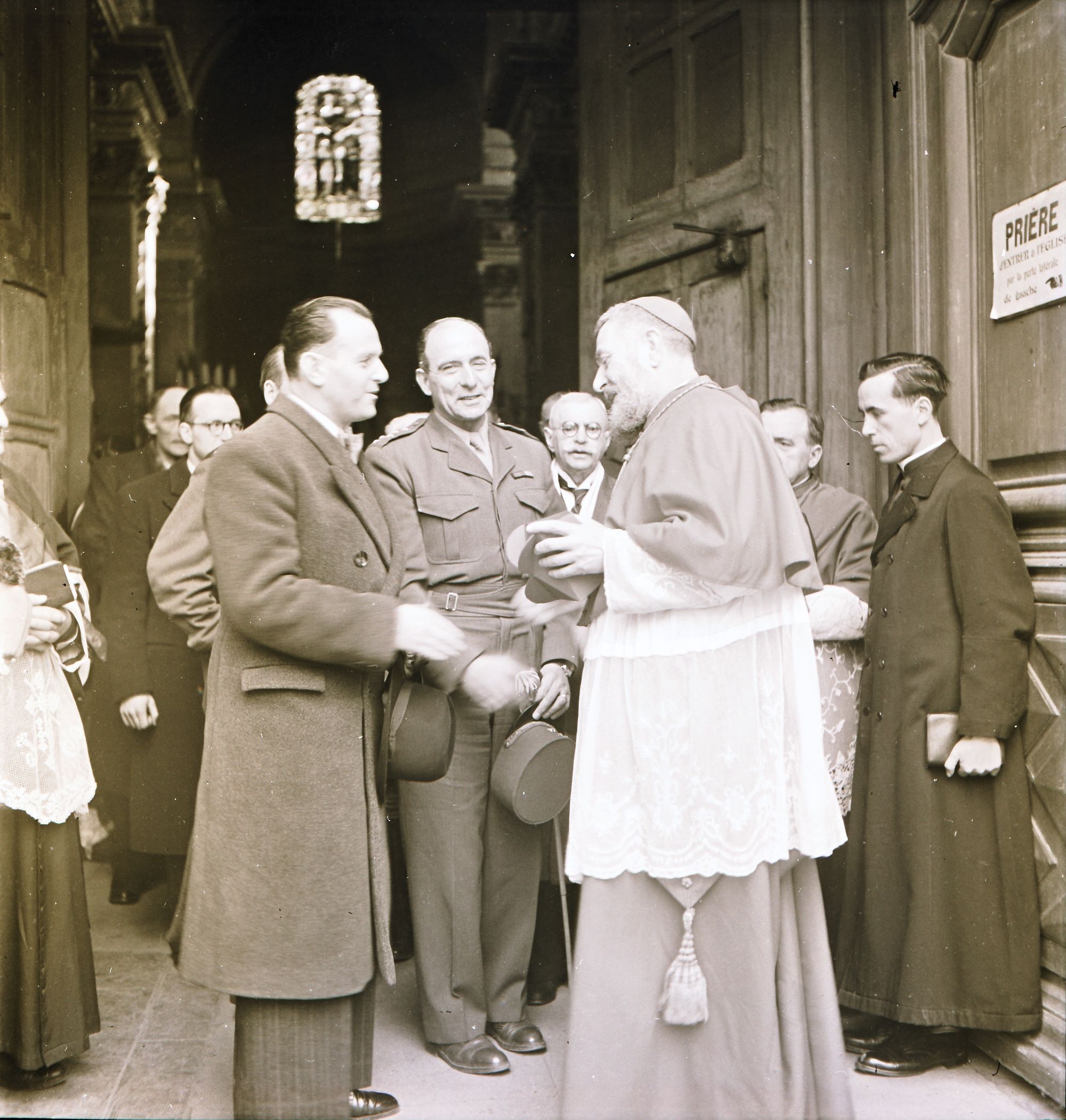
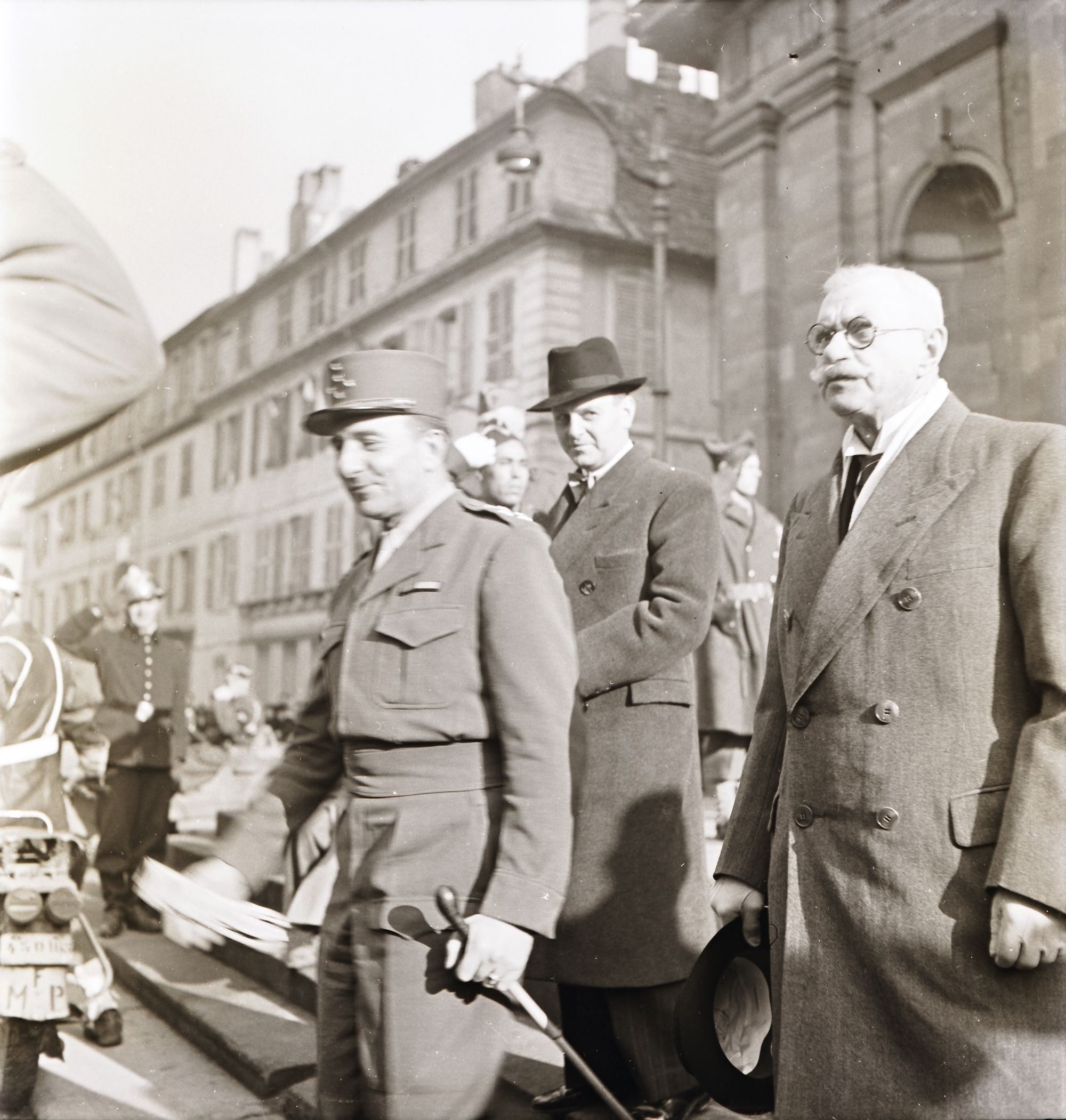
G9-G12. Religious ceremony for general De Lattre's entry into Belfort, with the bishop, Monseigneur Tisserand. Cérémonie religieuse lors de l’entrée du général De Lattre de Tassigny à Belfort avec l’évêque de Belfort, Mgr Tisserand.
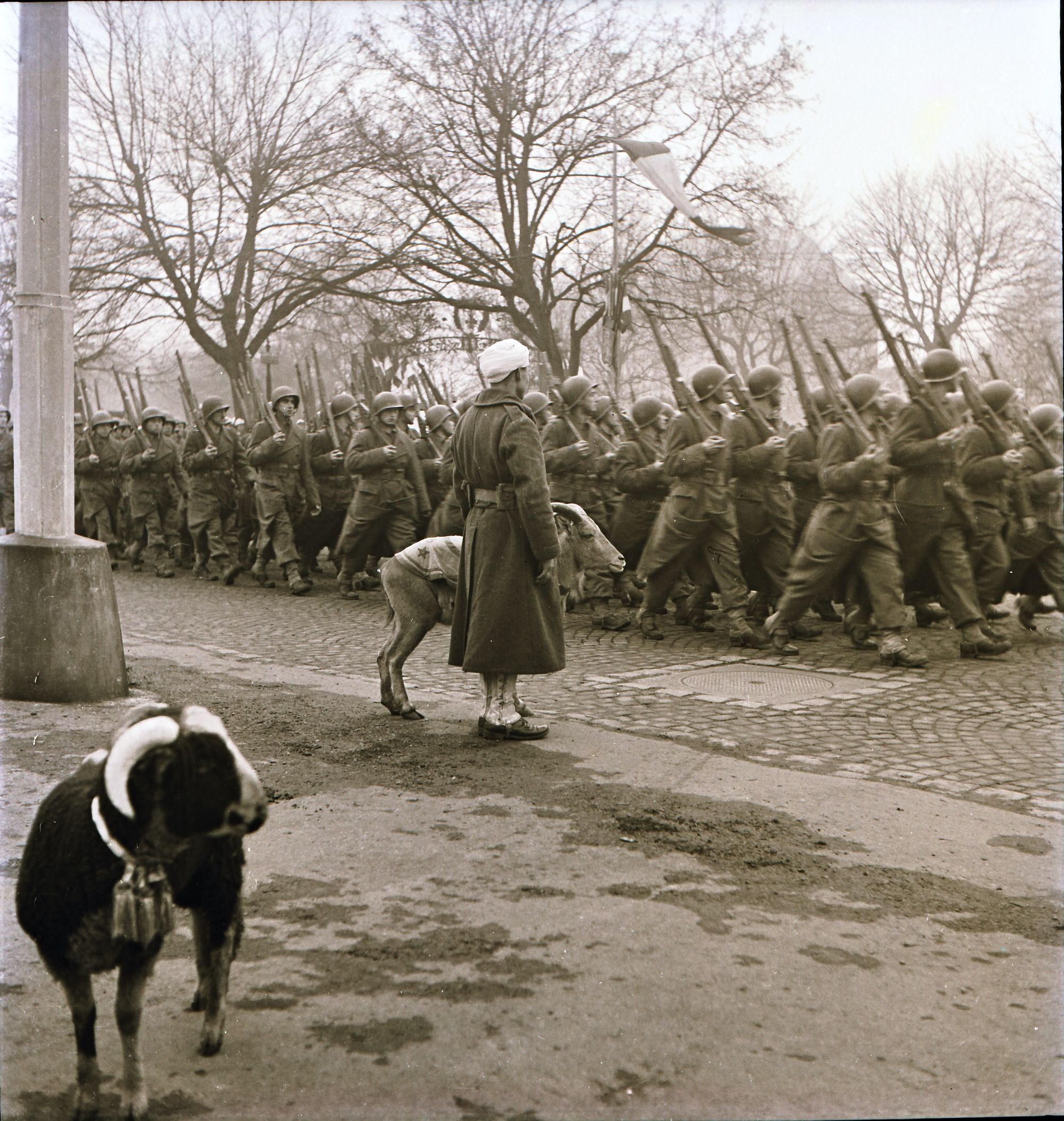
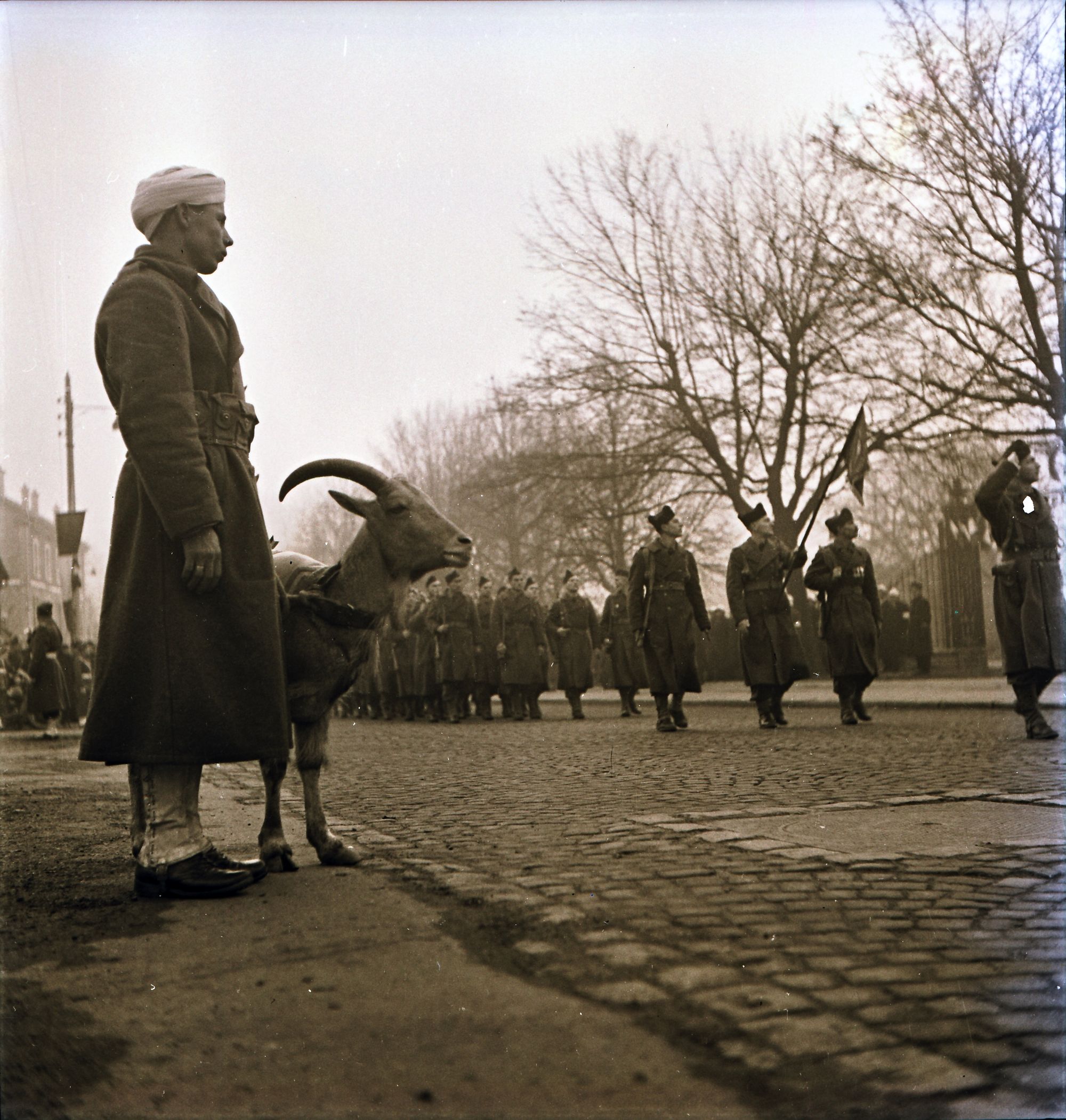
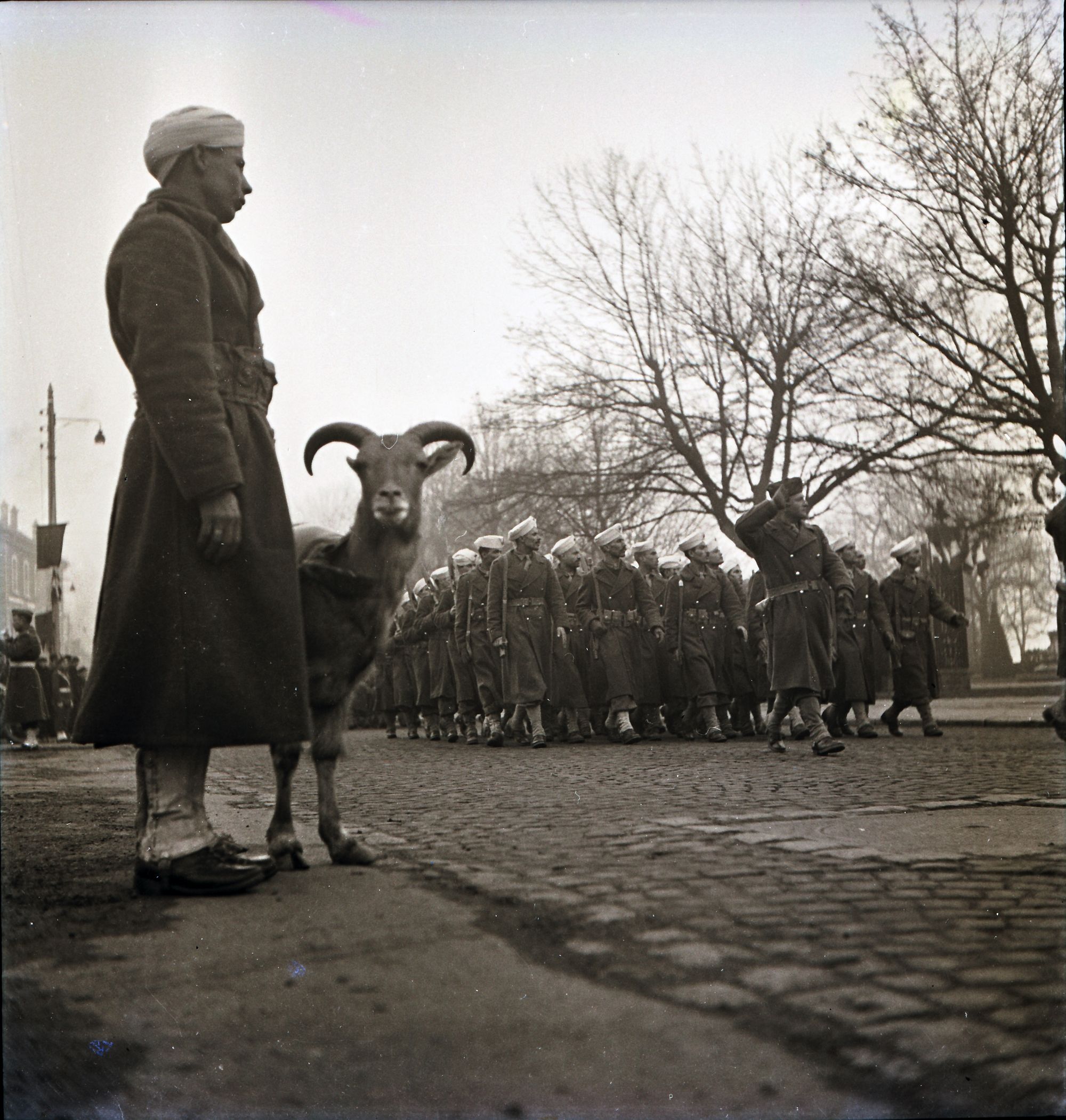
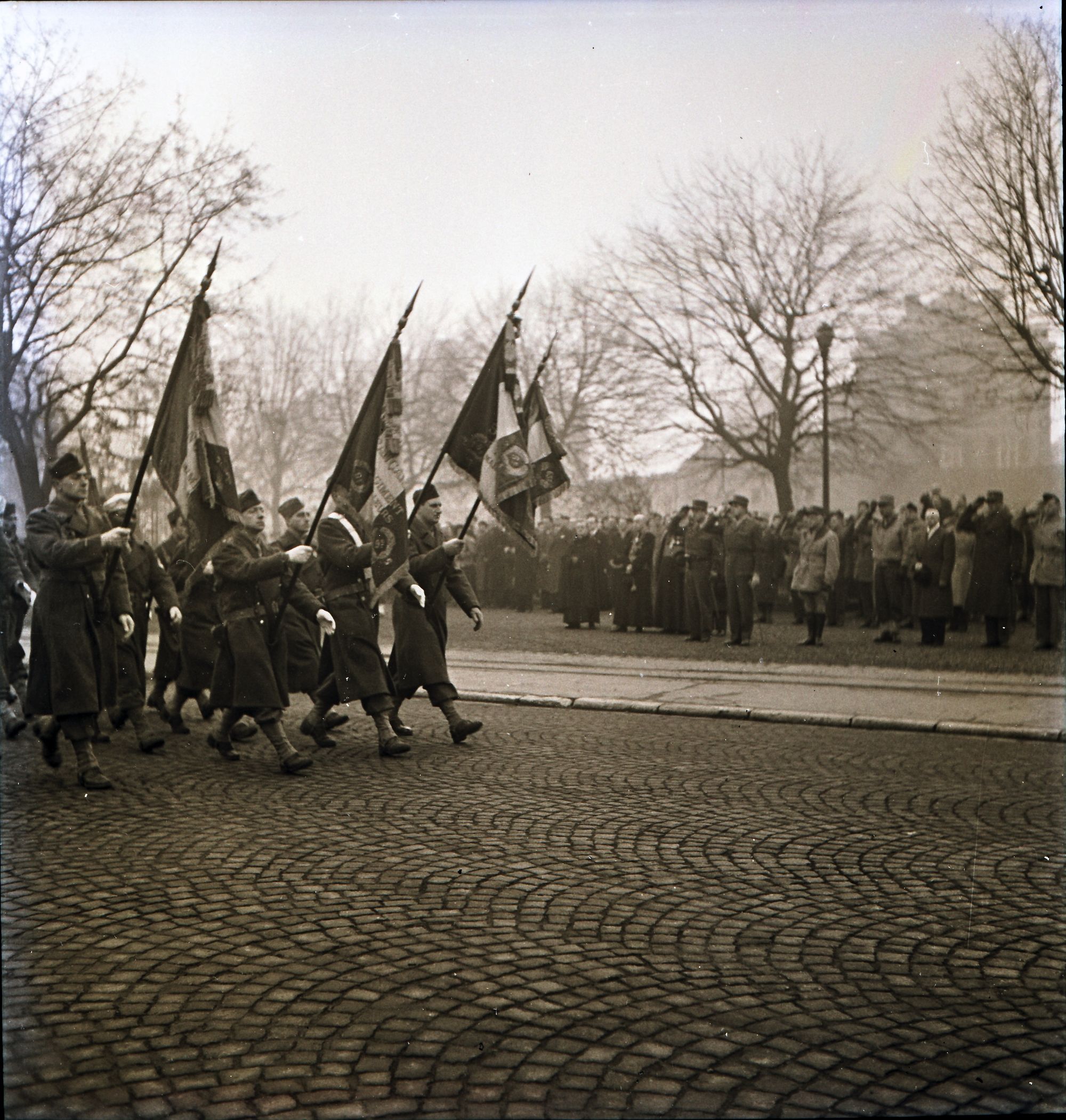

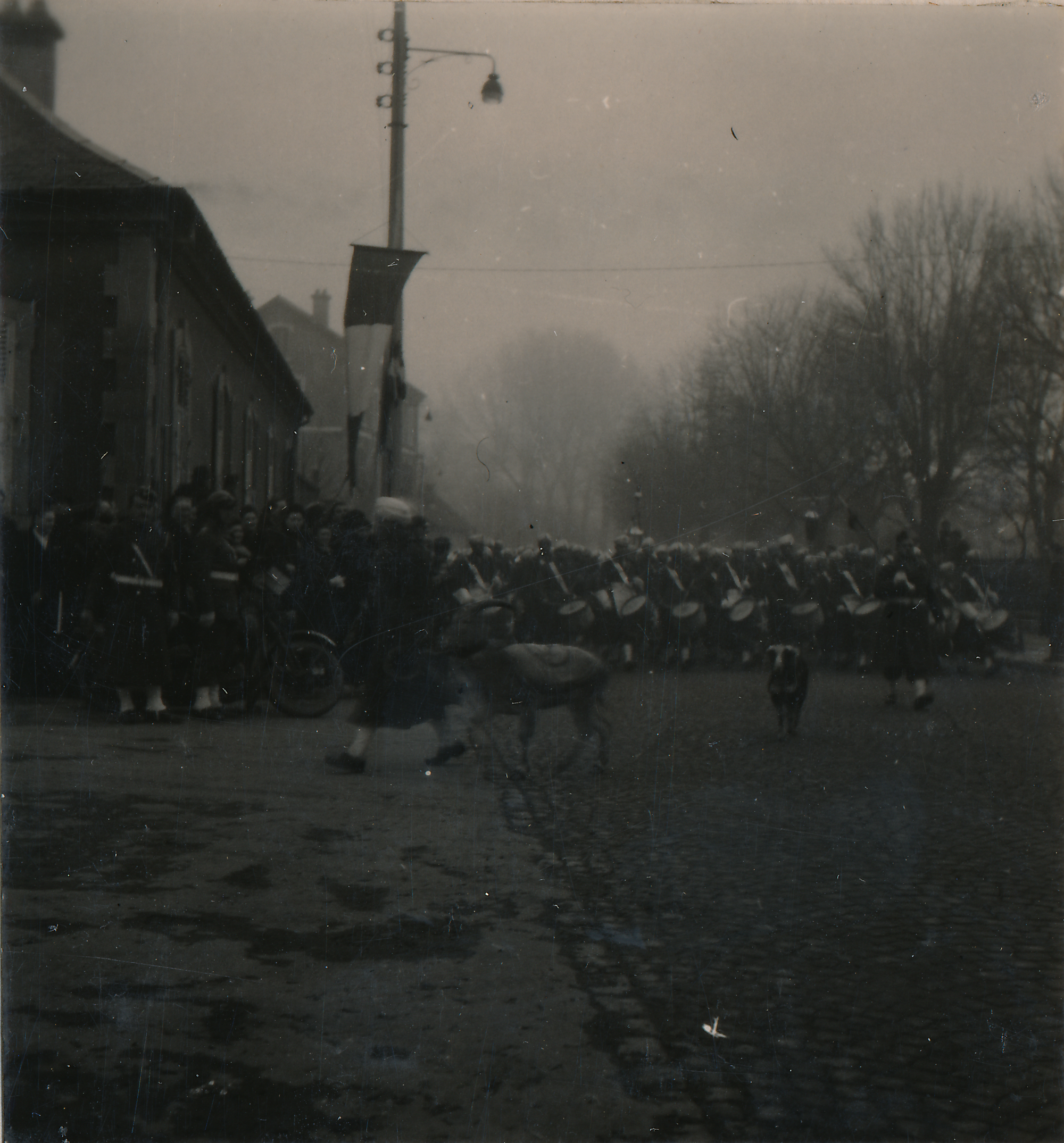
H1-H6. Troups parade in Belfort with their mouflon mascot. (Note: The mouflon is a European and North African bighorn sheep. This is the 7th Algerian Tirailleurs regiment.) Le défilé des troupes à Belfort. Le mouflon mascotte. (Note: Il s'agit du 7e régiment de tirailleurs algériens.)
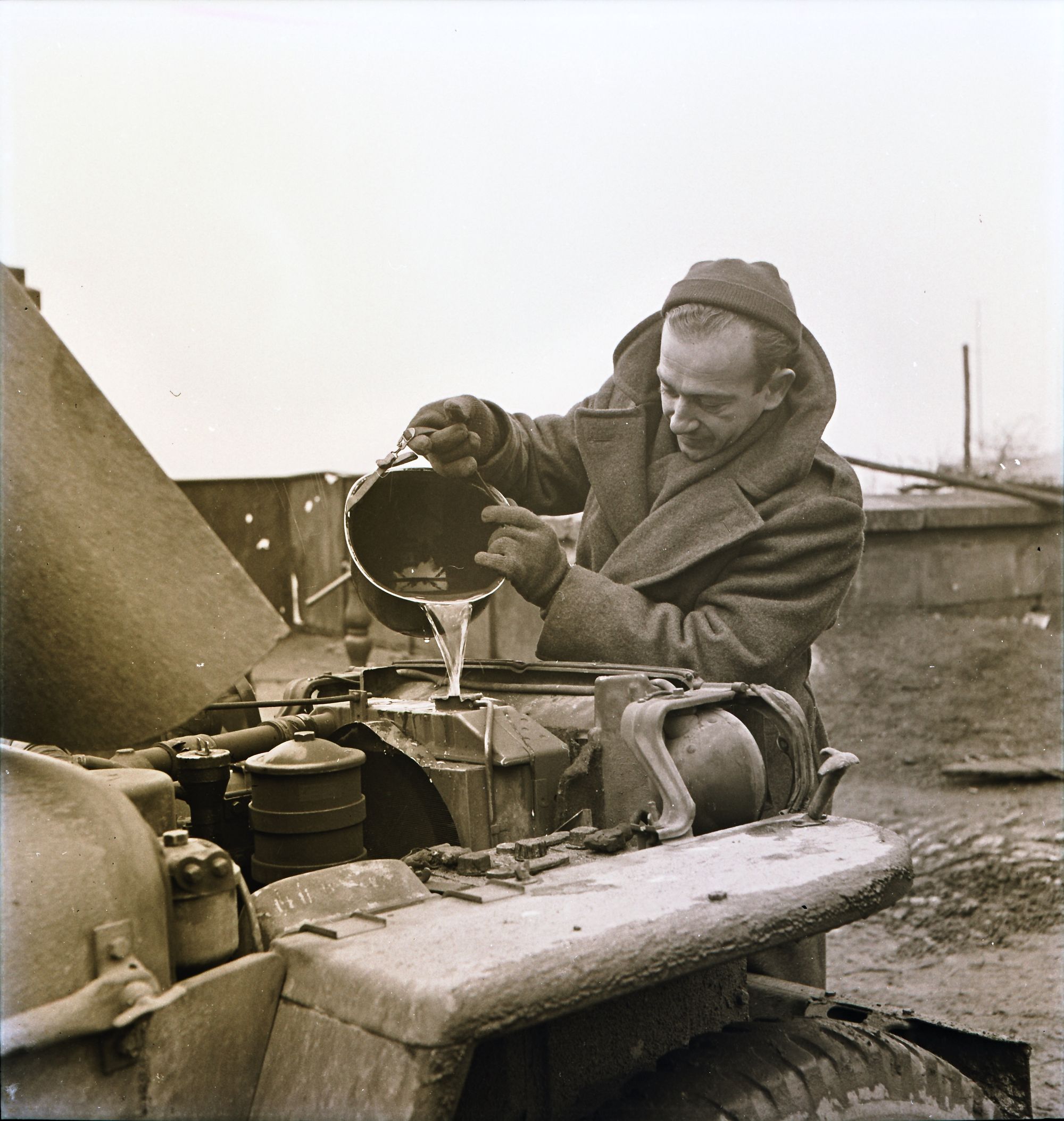
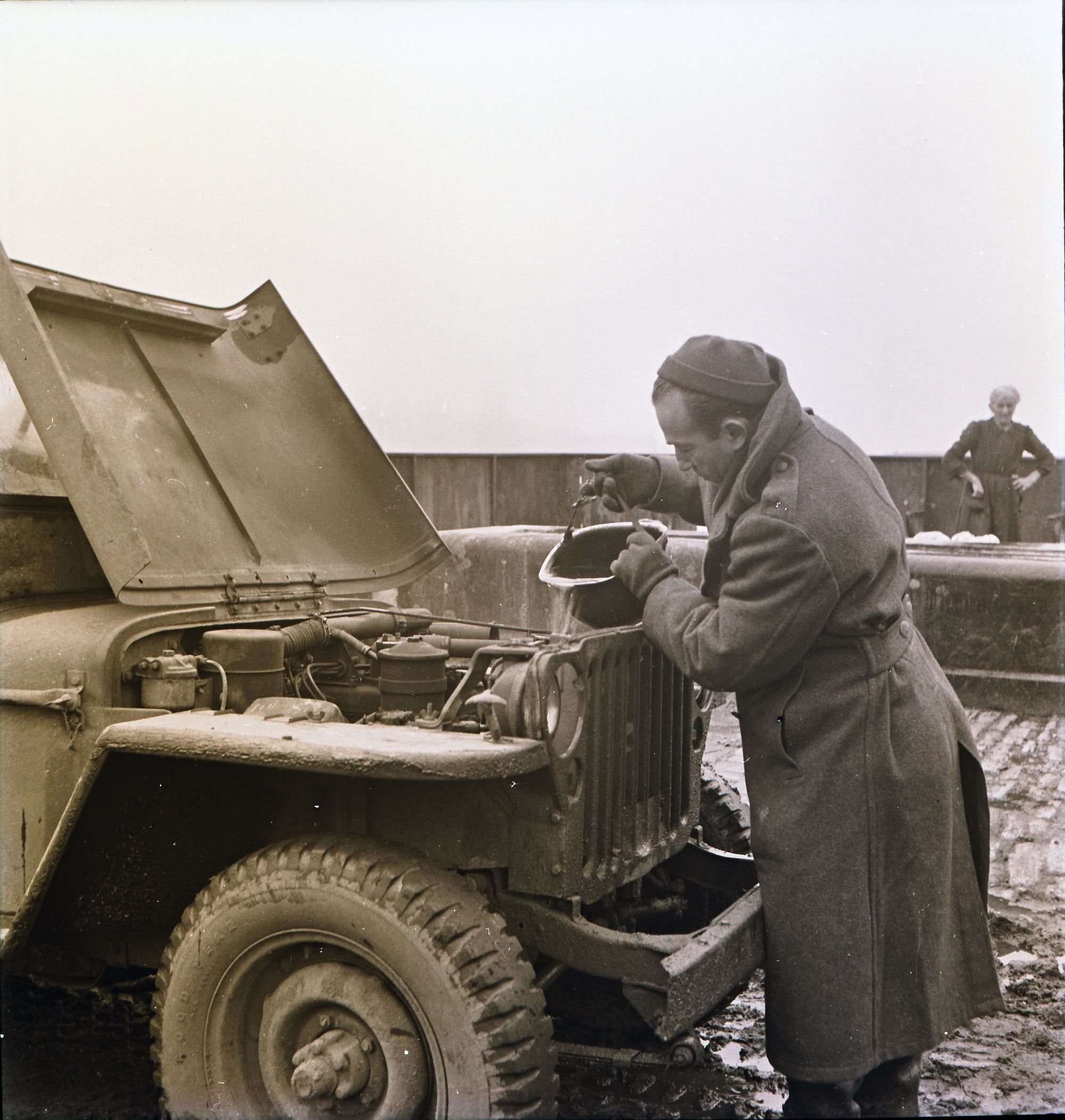
H7. H8. The US helmet usually serves as a water carrier. Le casque américain sert généralement de récipient à eau.
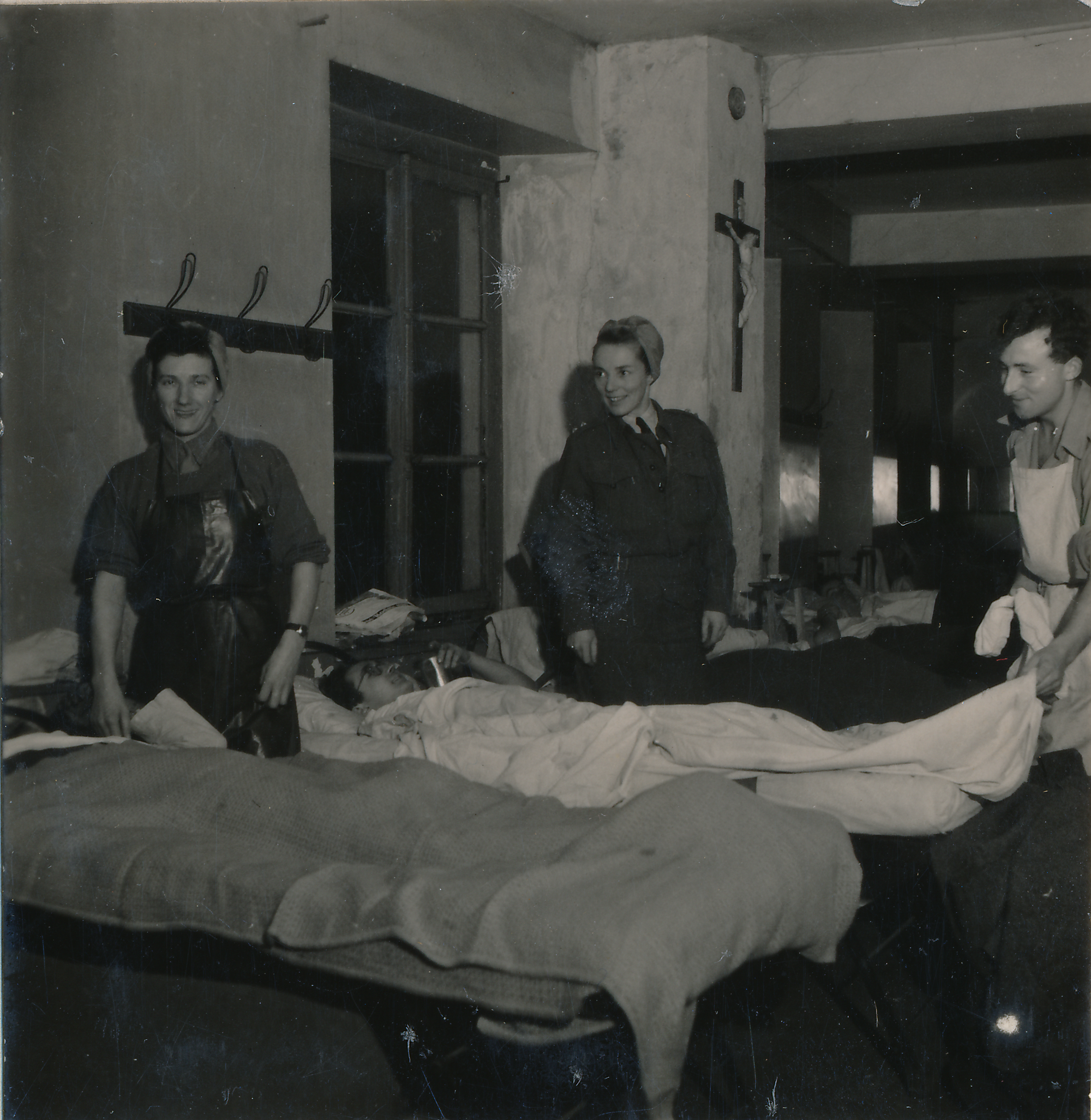
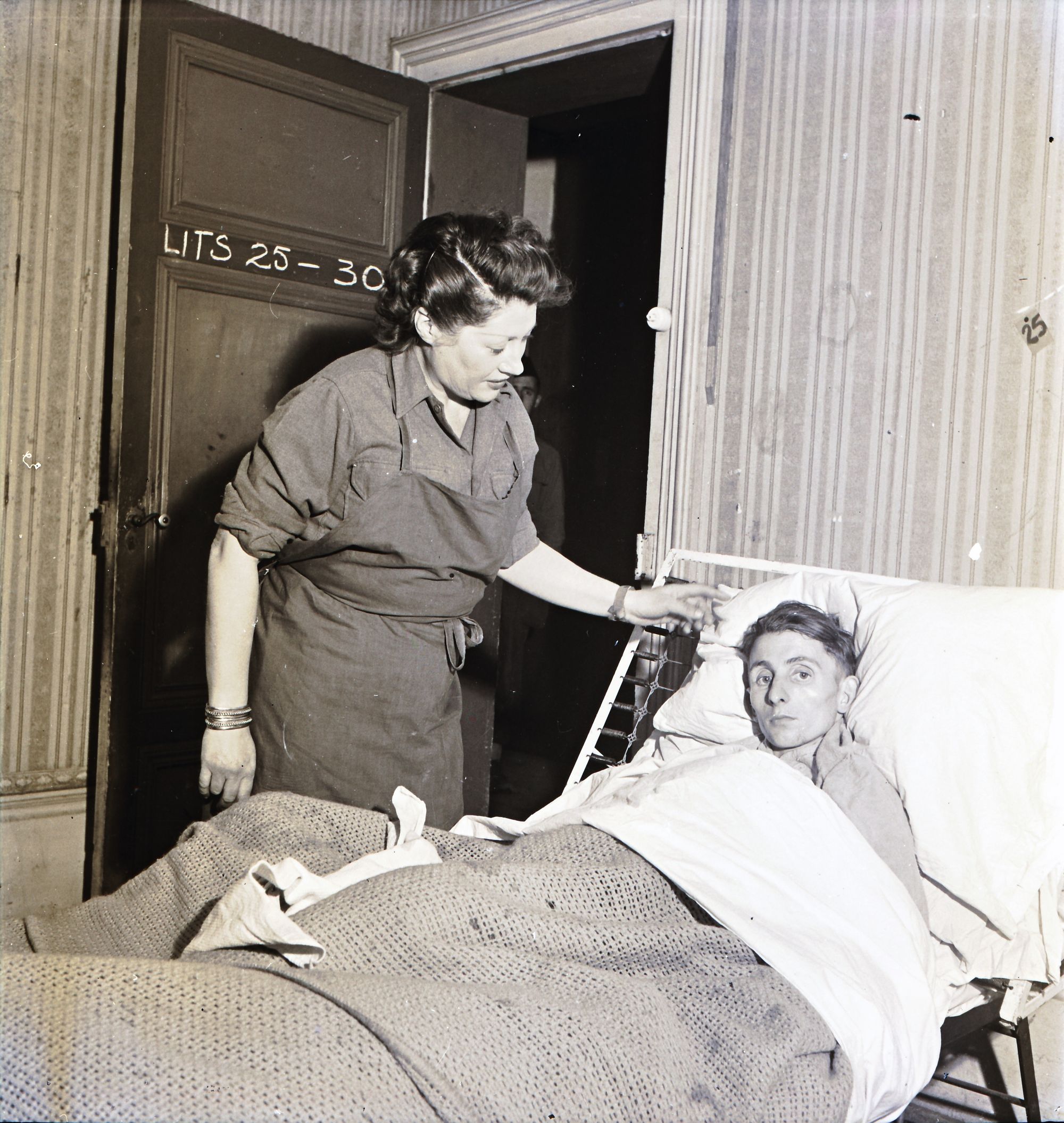
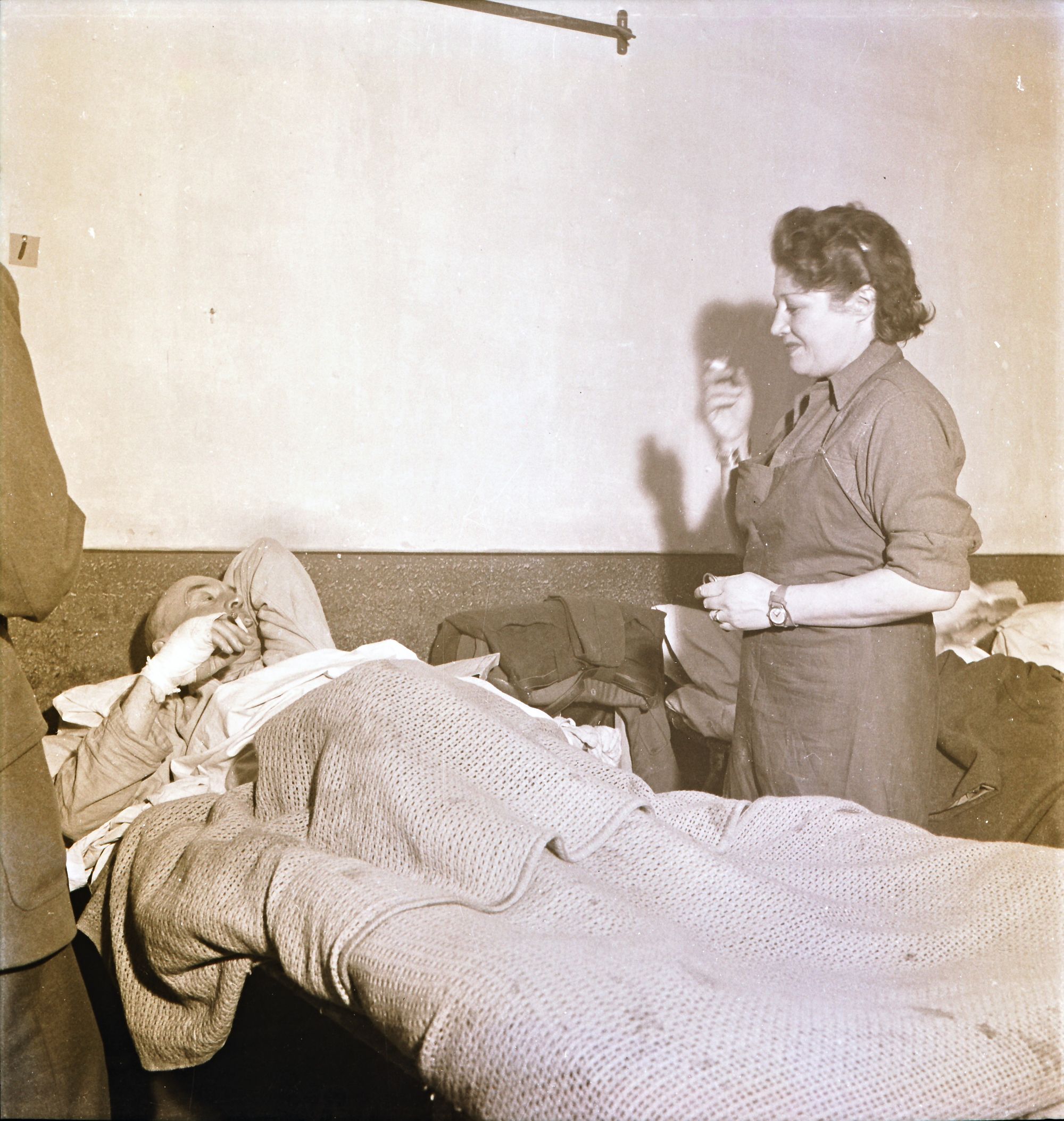
H9. No caption. H10. H11. Germaine Sublon (sp?), nurse in the Speere formation. Germaine Sublon (ou Sablon ?) infirmière de la formation Speere.
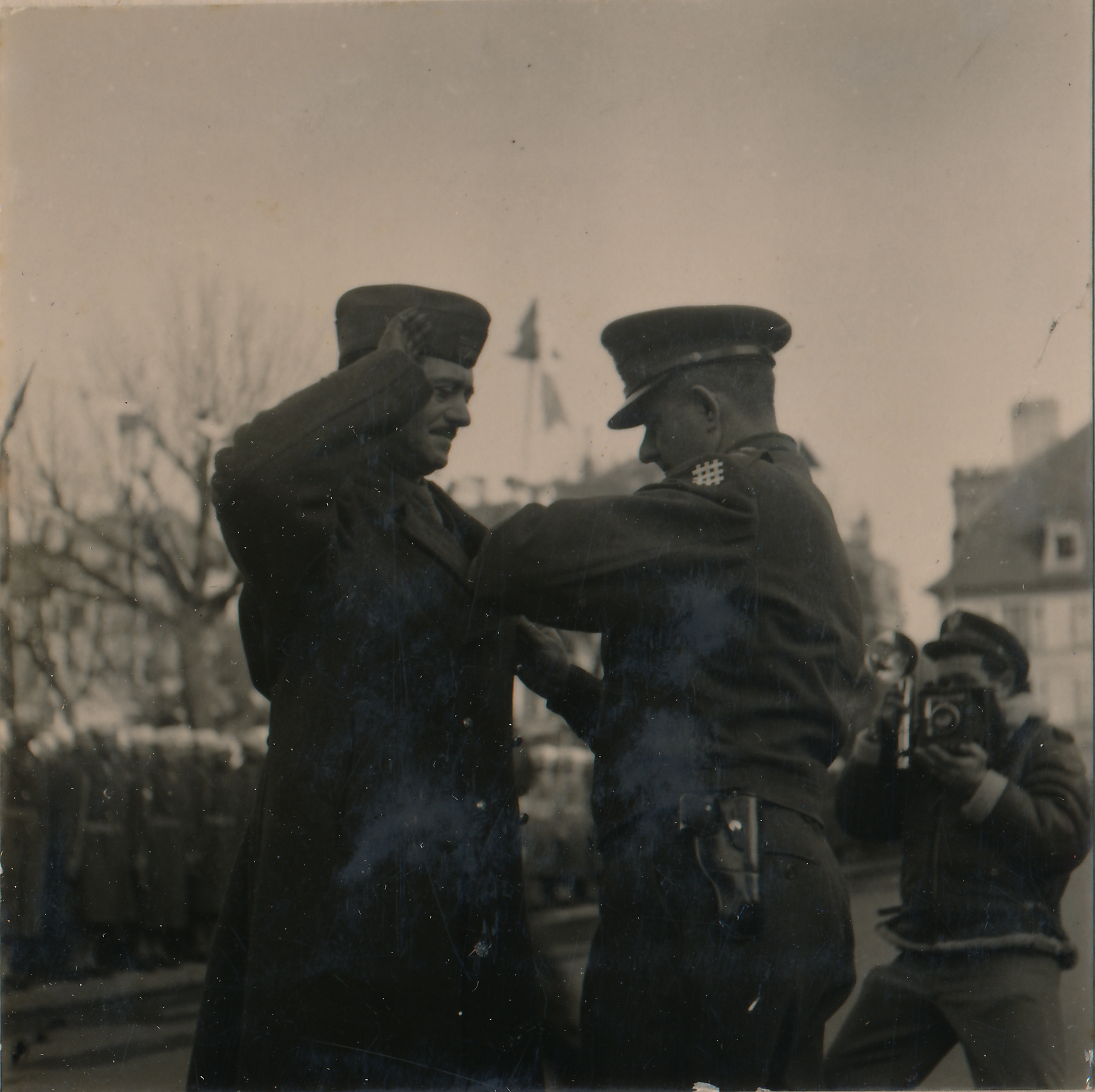
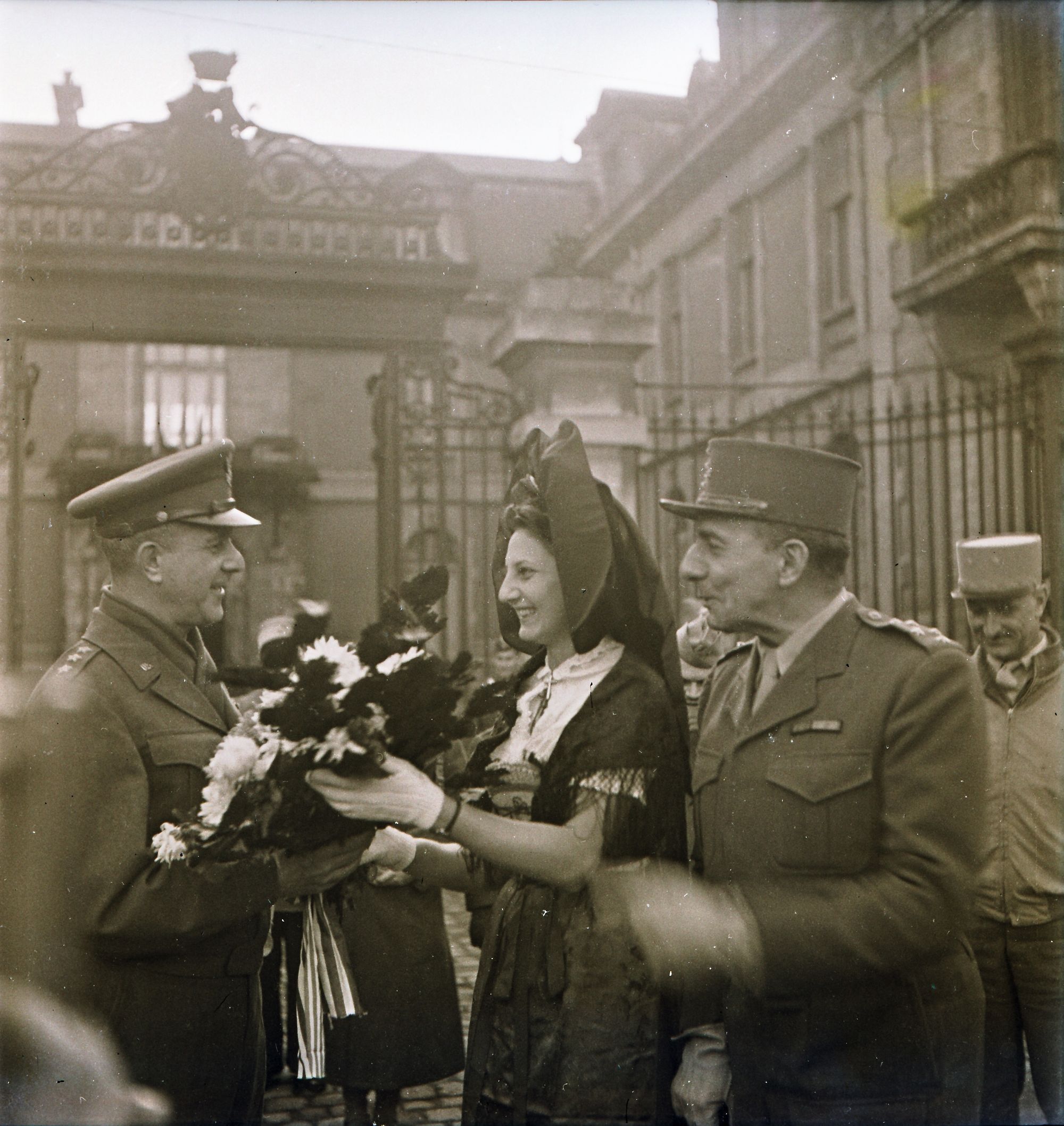
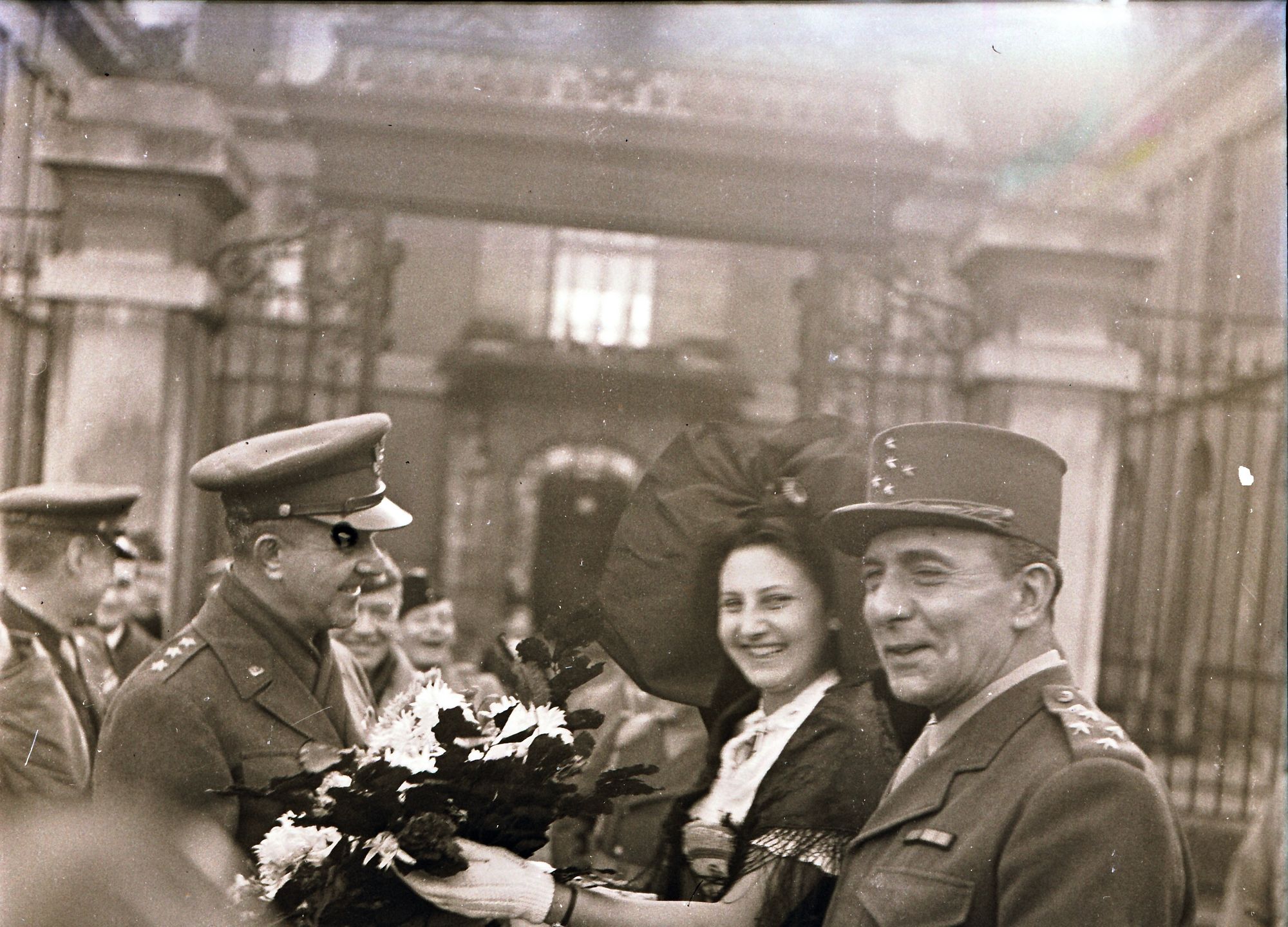
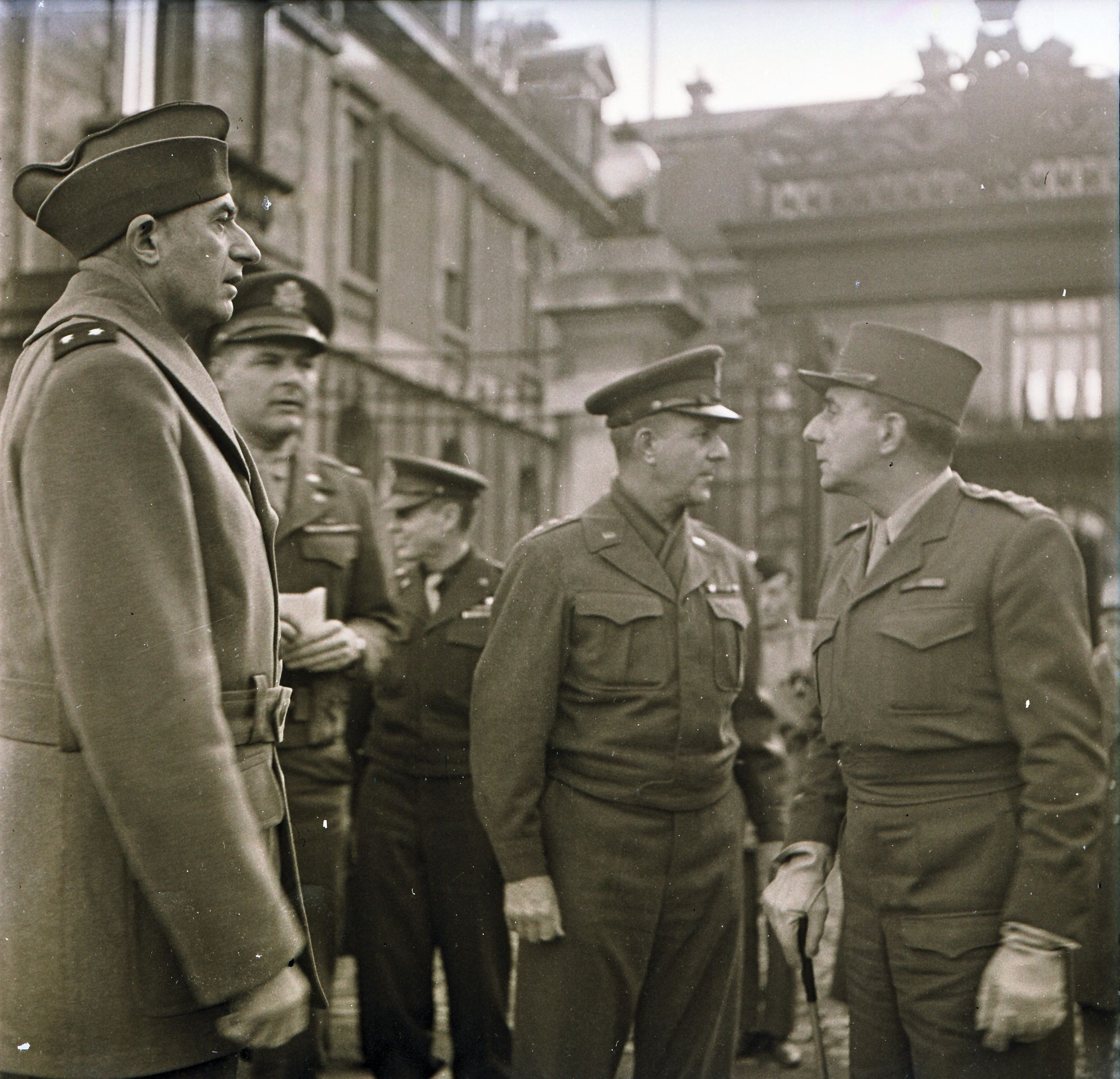
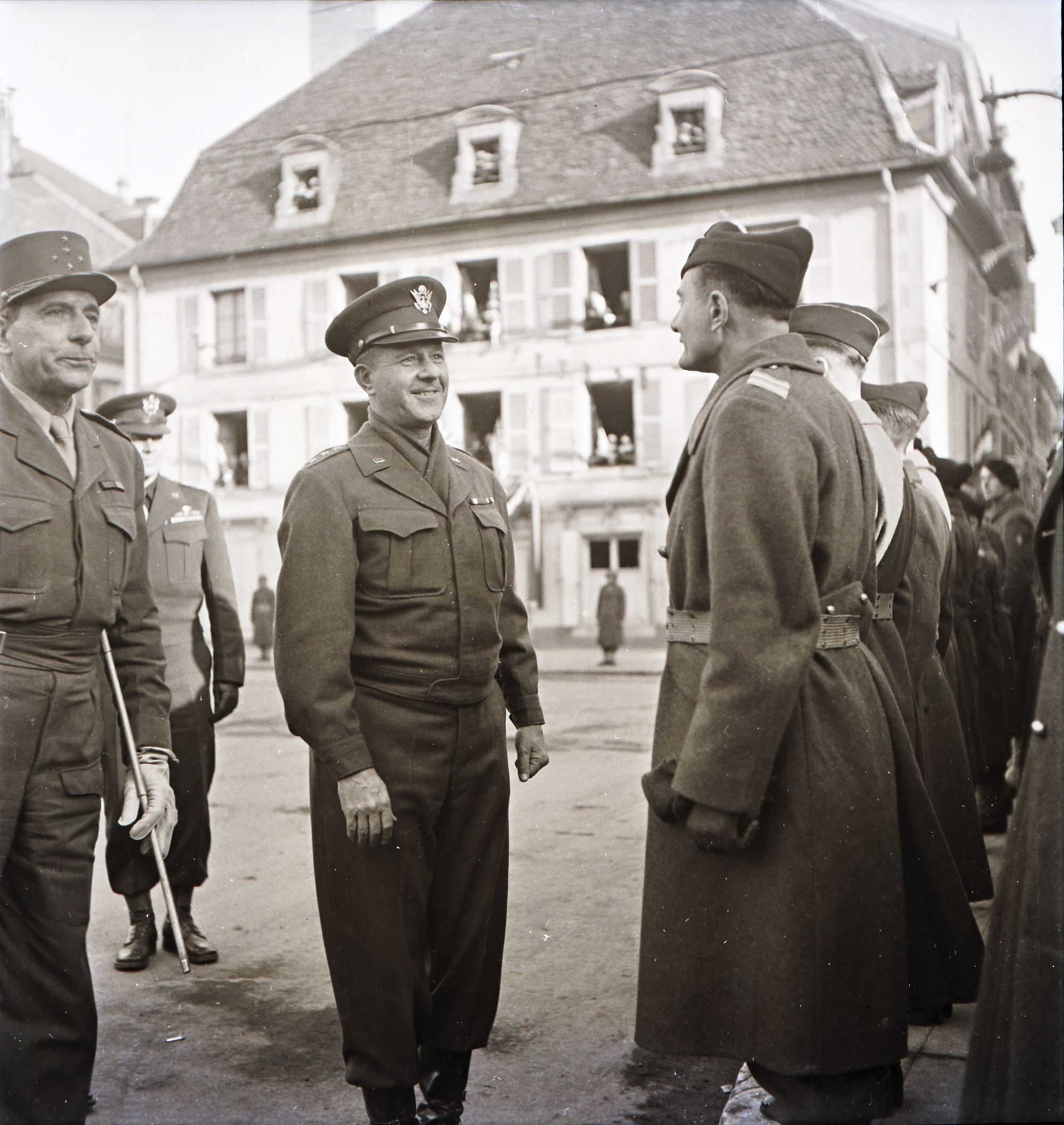
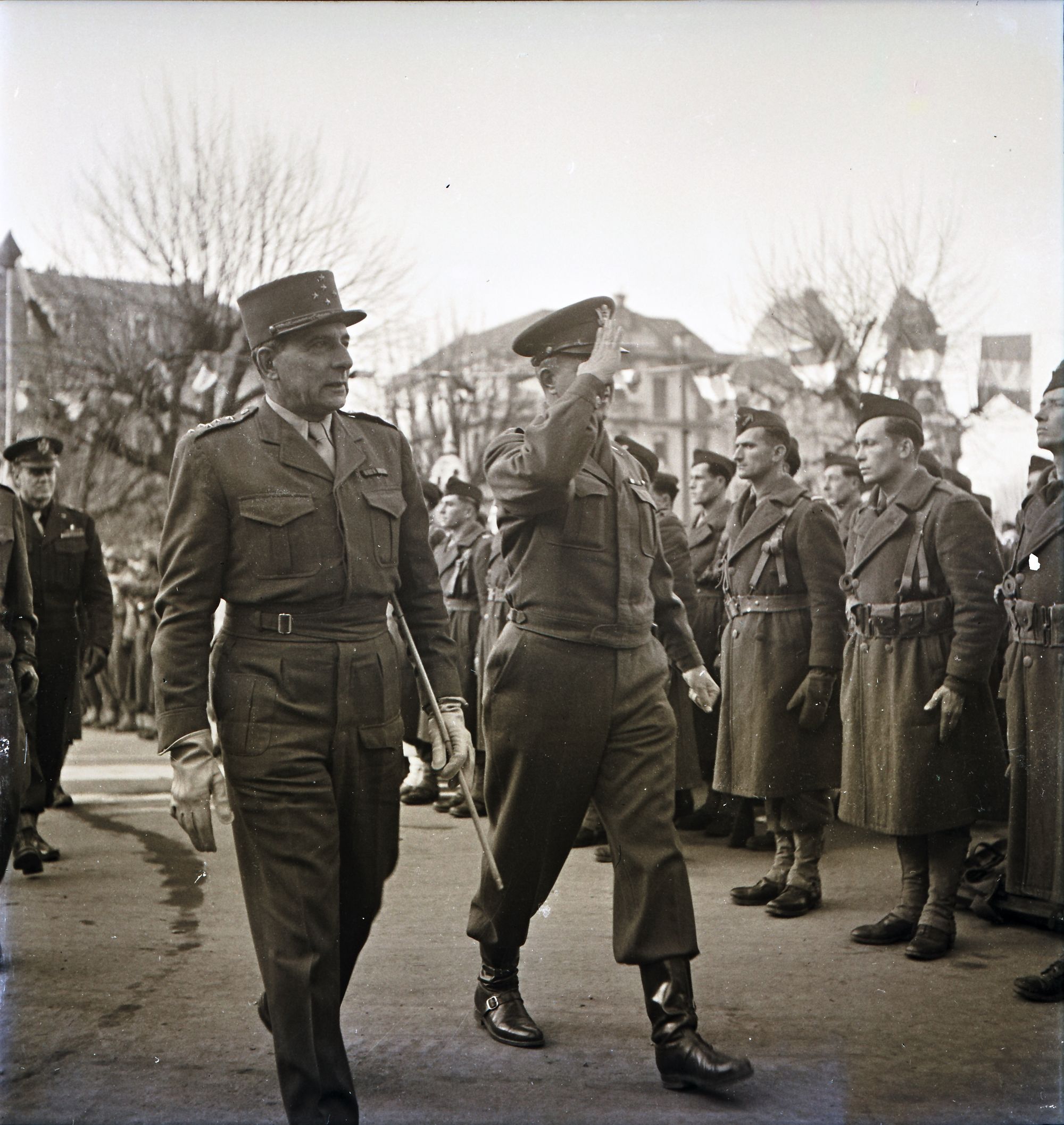
I1- General Devers decorates a French colonel. Le général Devers décore un colonel français. I2 An Alsatian woman hands a bouquet to General Devers in Belfort. Une alsacienne remet une gerbe au général Devers à Belfort. I3-I6. General De Lattre, General Devers and troops in Belfort. Les généraux De Lattre et Devers et leurs troupes à Belfort.
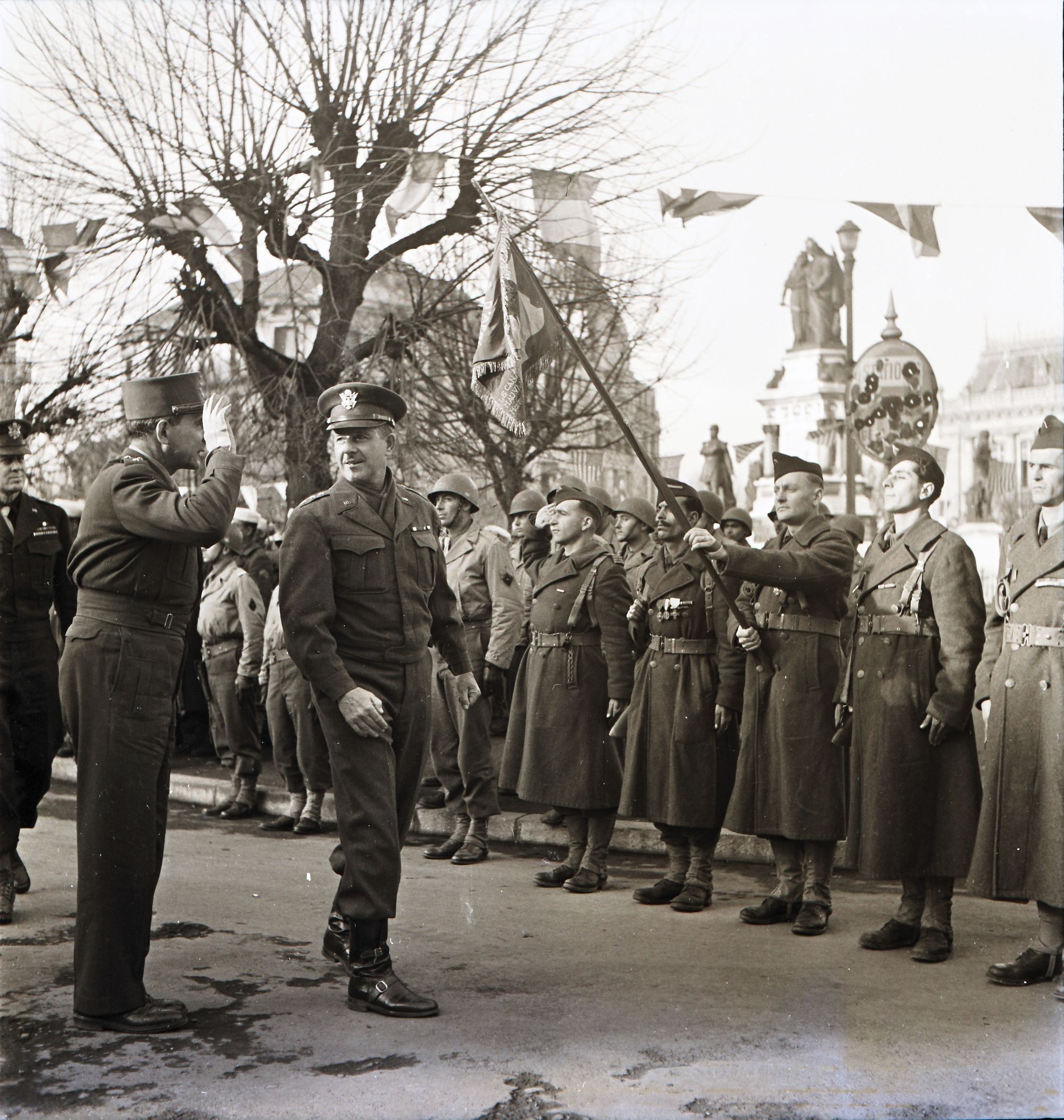
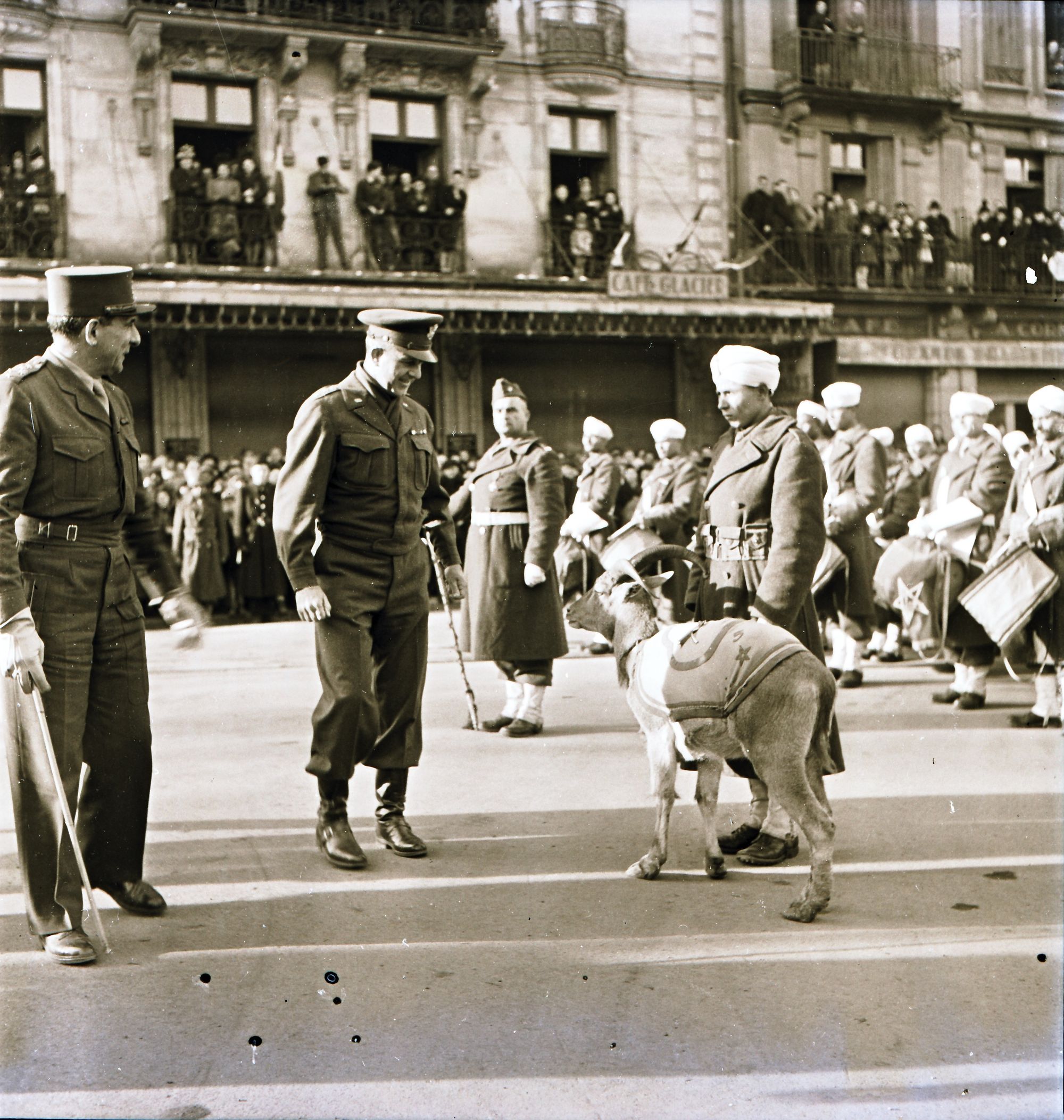
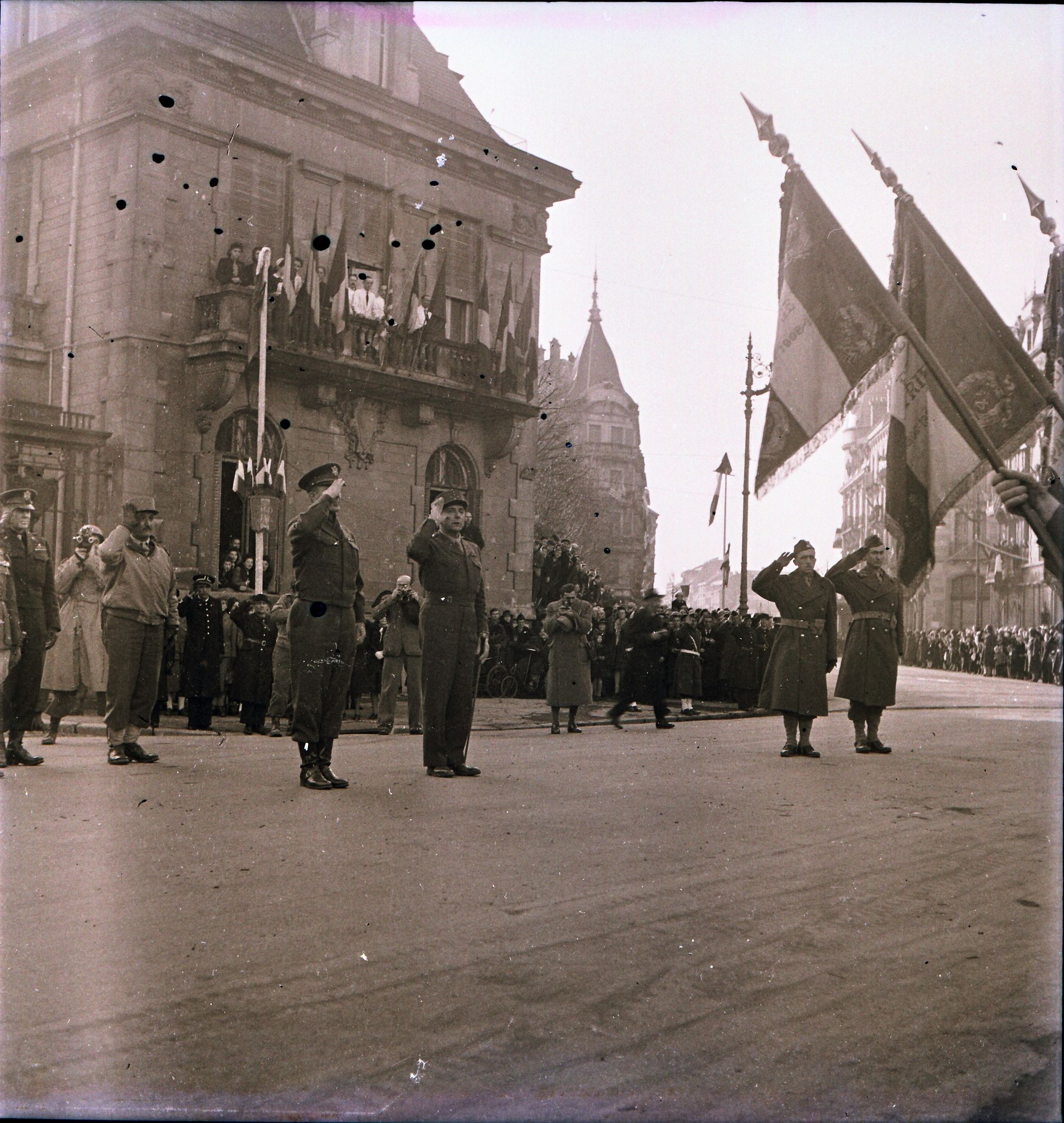
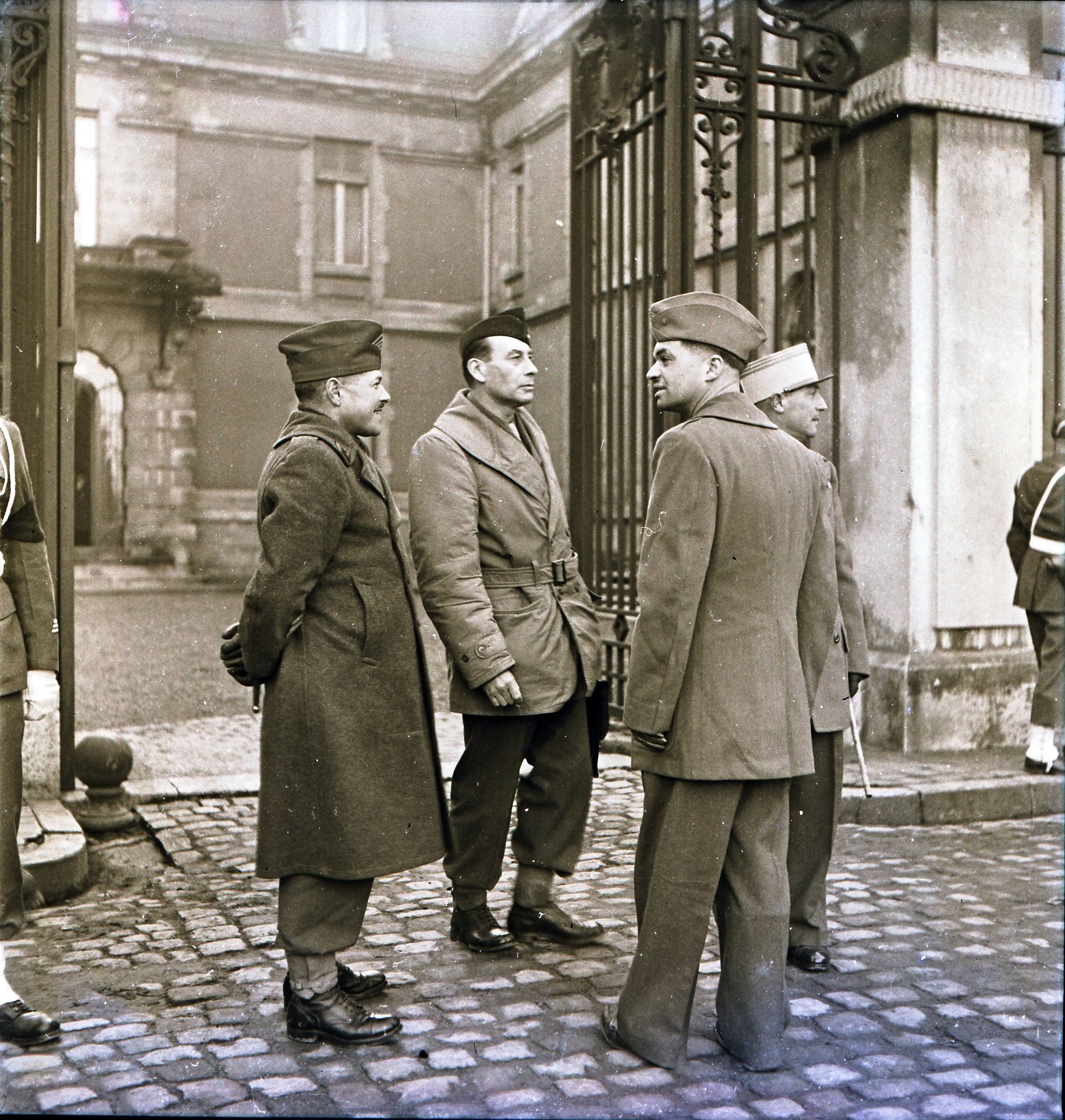
I7. I10-I12.
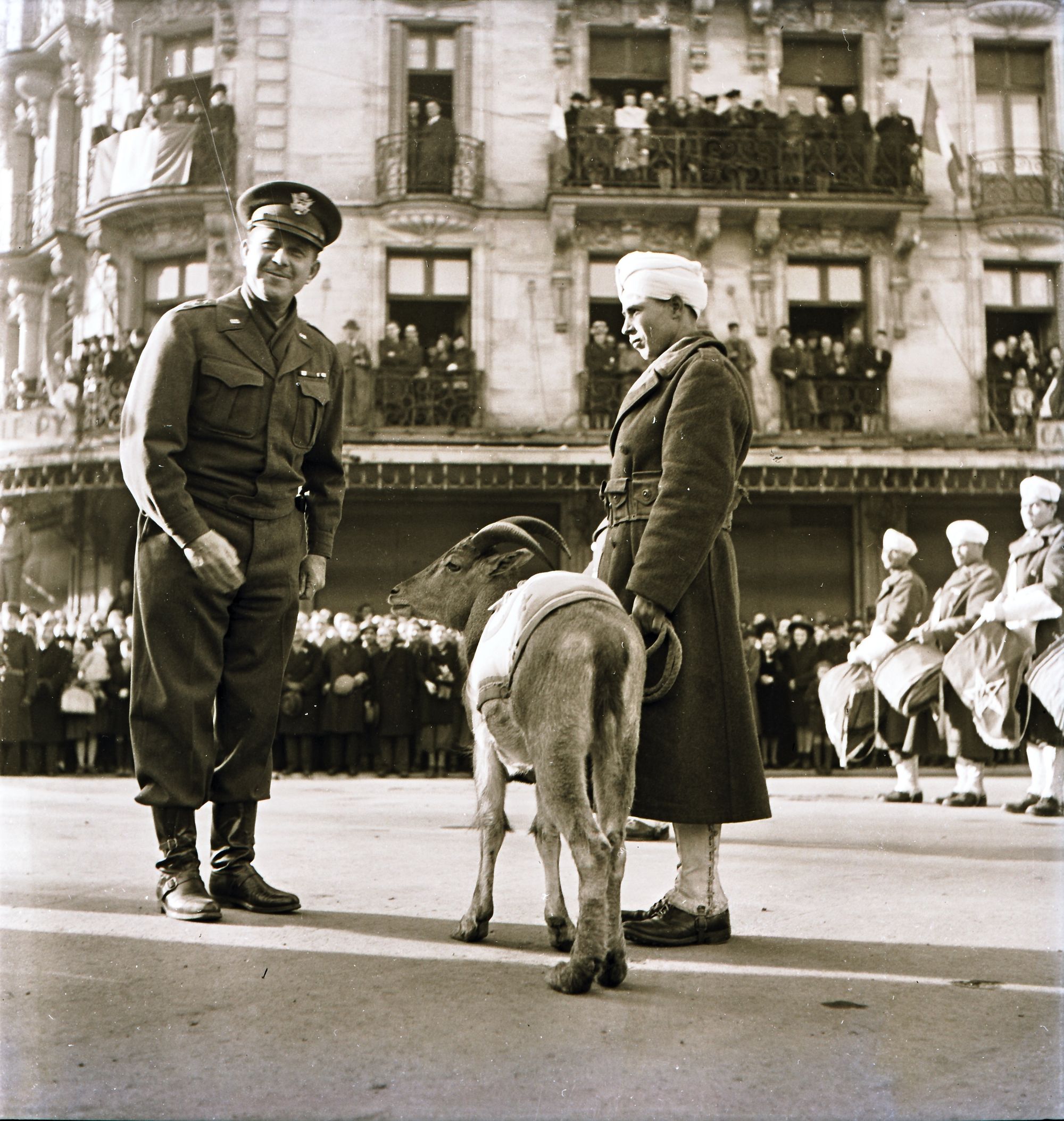
Ranspach
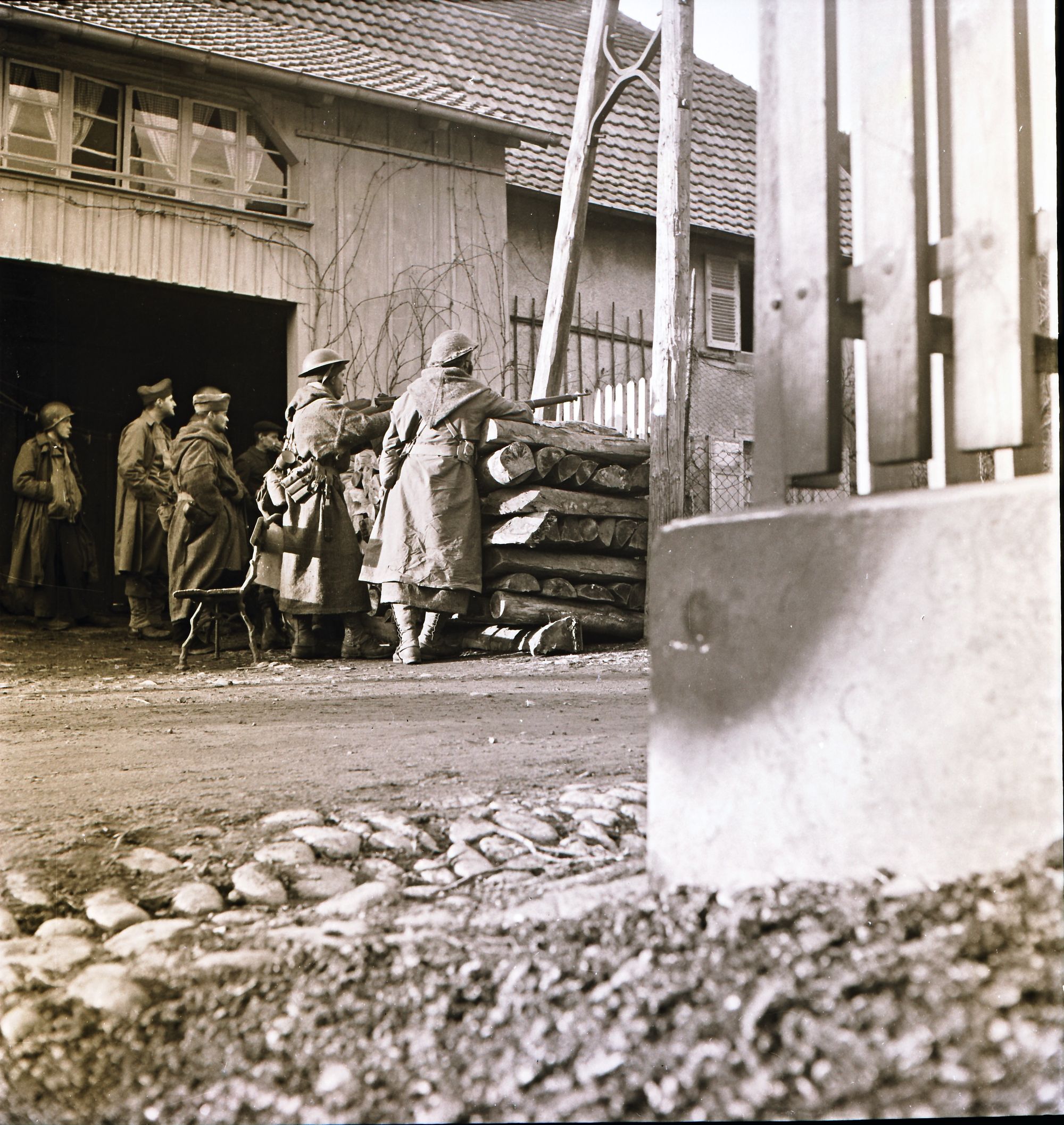
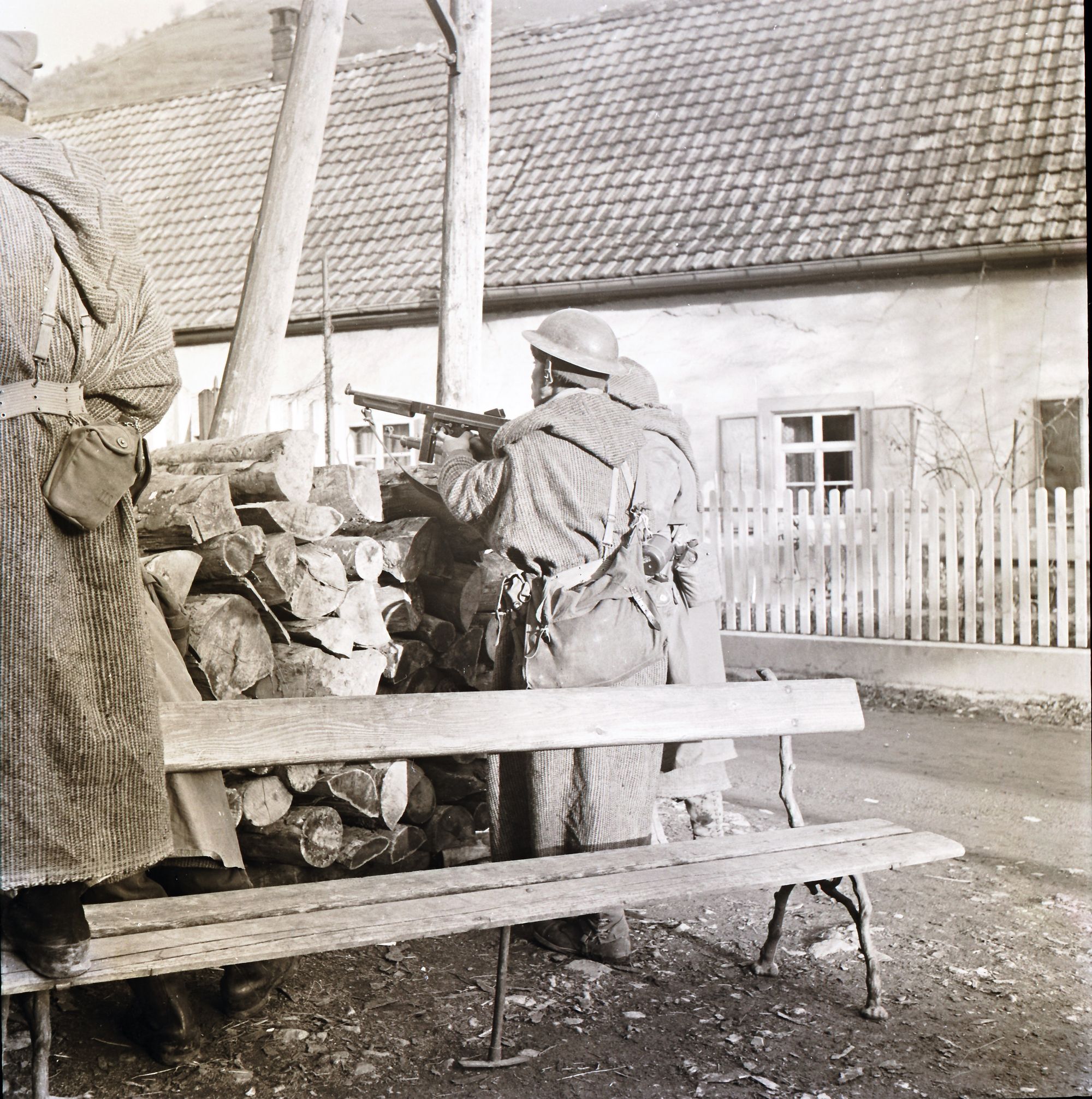
J1. J2. At an outpost in Ranspach, goumiers keep watch on a factory held by the Germans. (Note: Goumiers were Moroccan soldiers.) Aux avant-postes à Ranspach, les goumiers montent la garde devant une usine tenue par les Allemands.
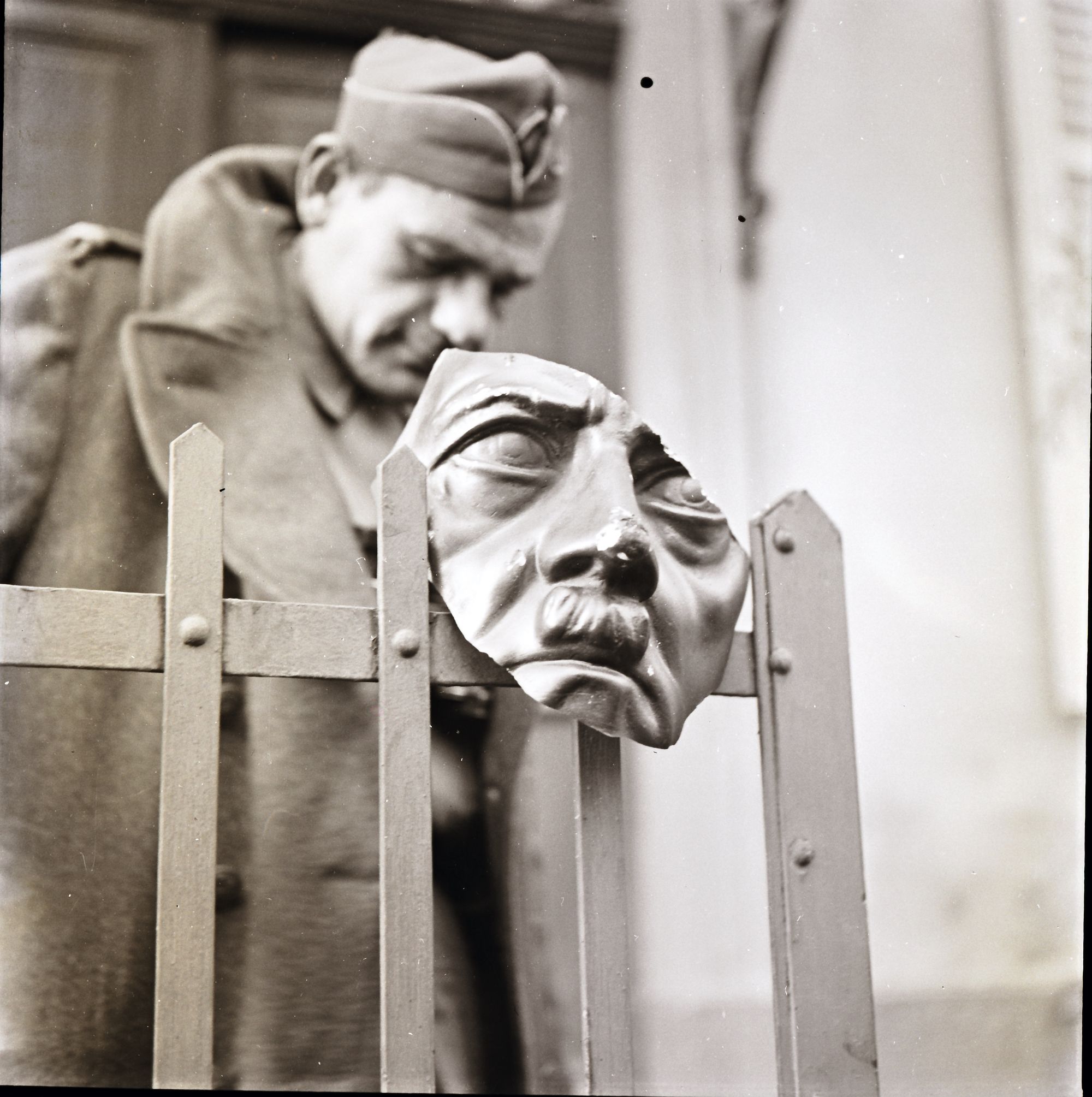
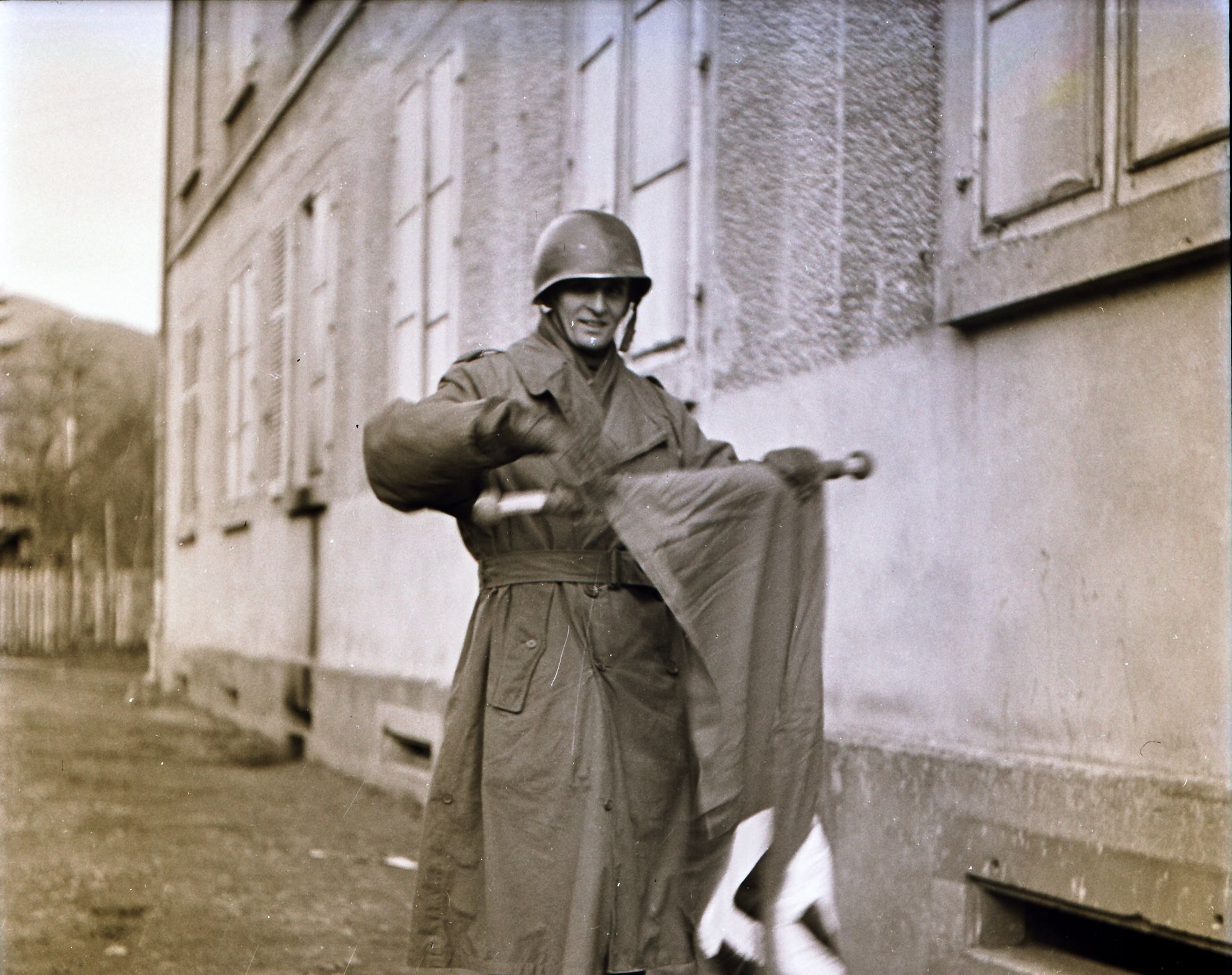
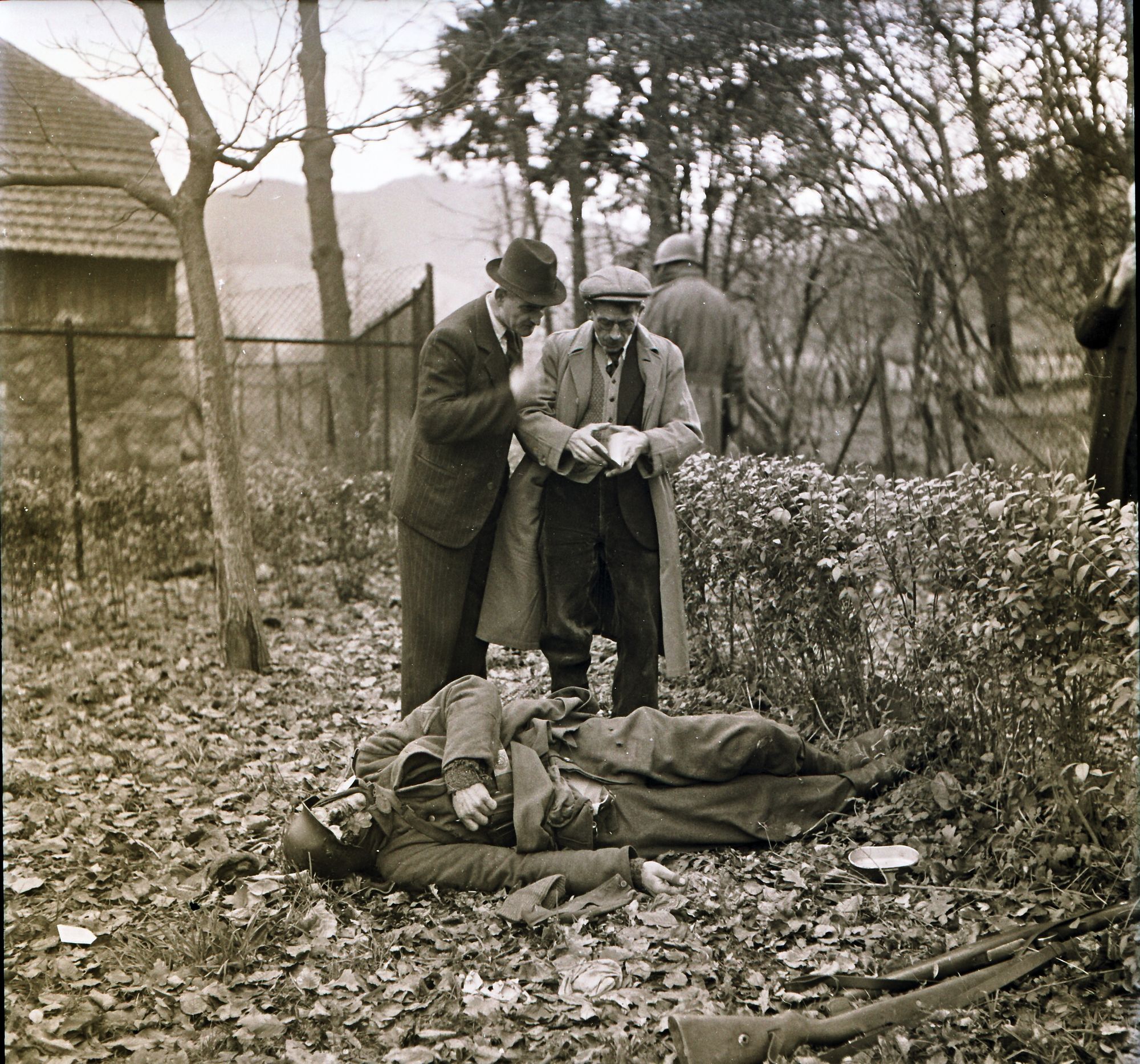
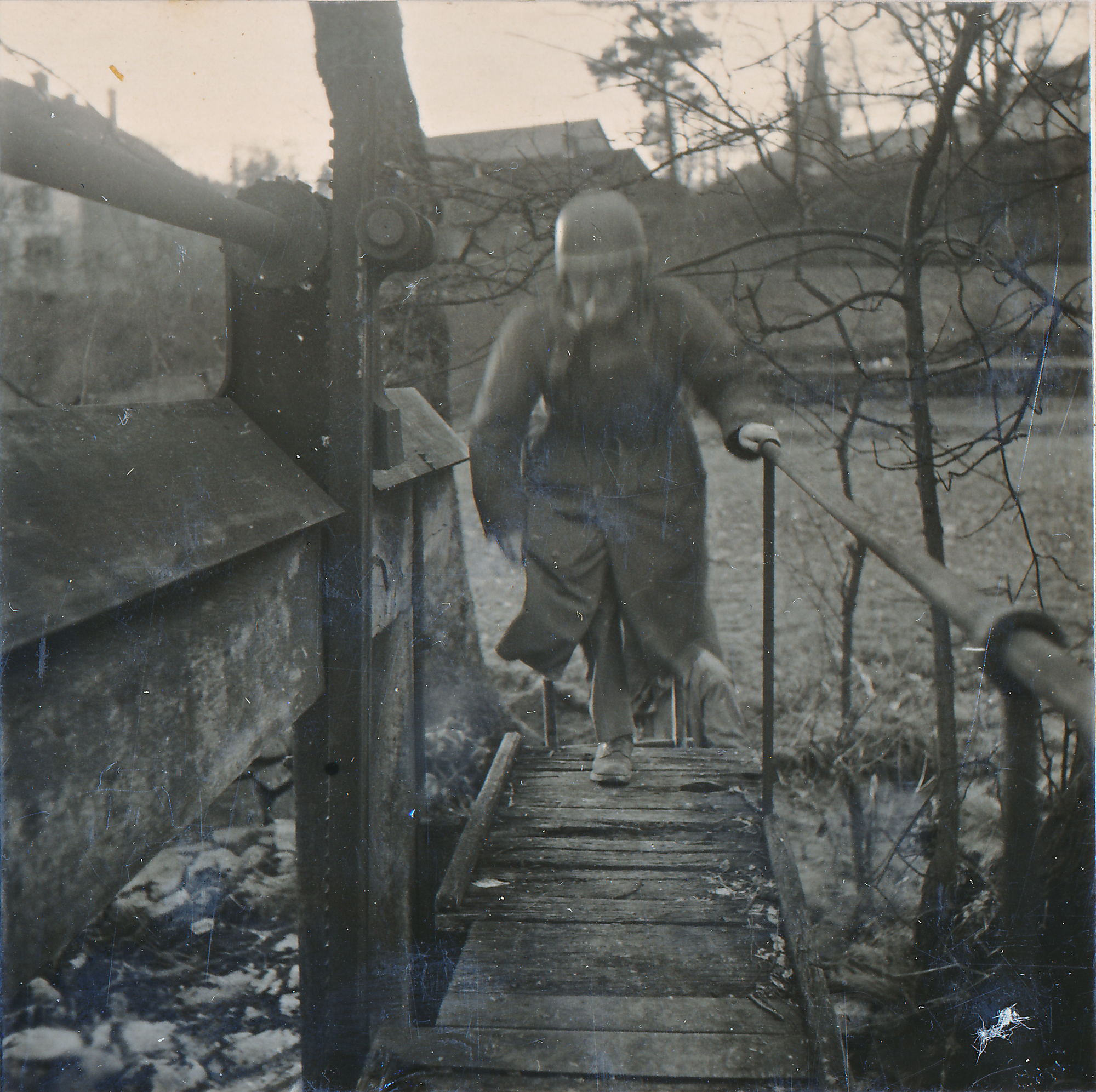
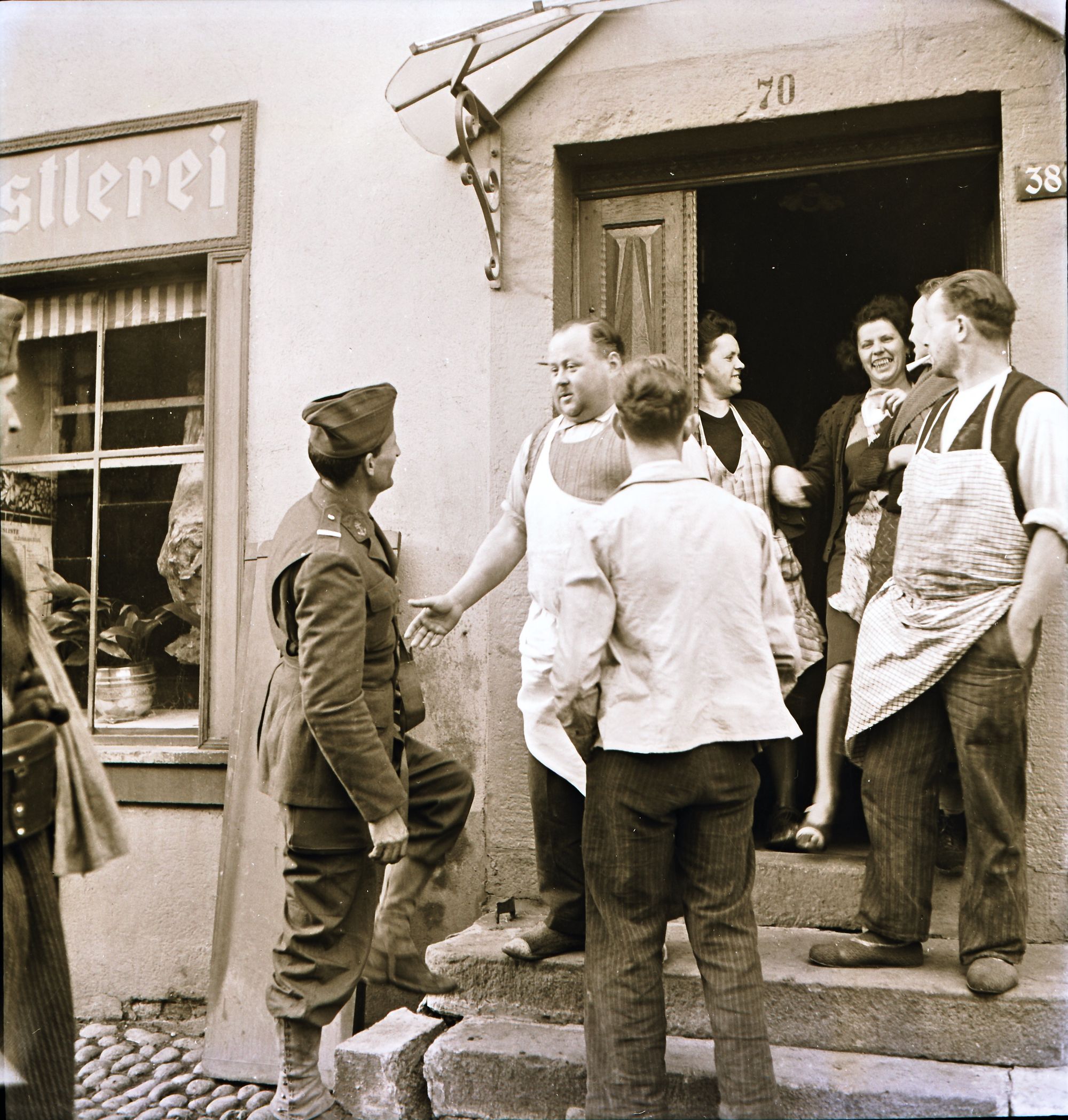
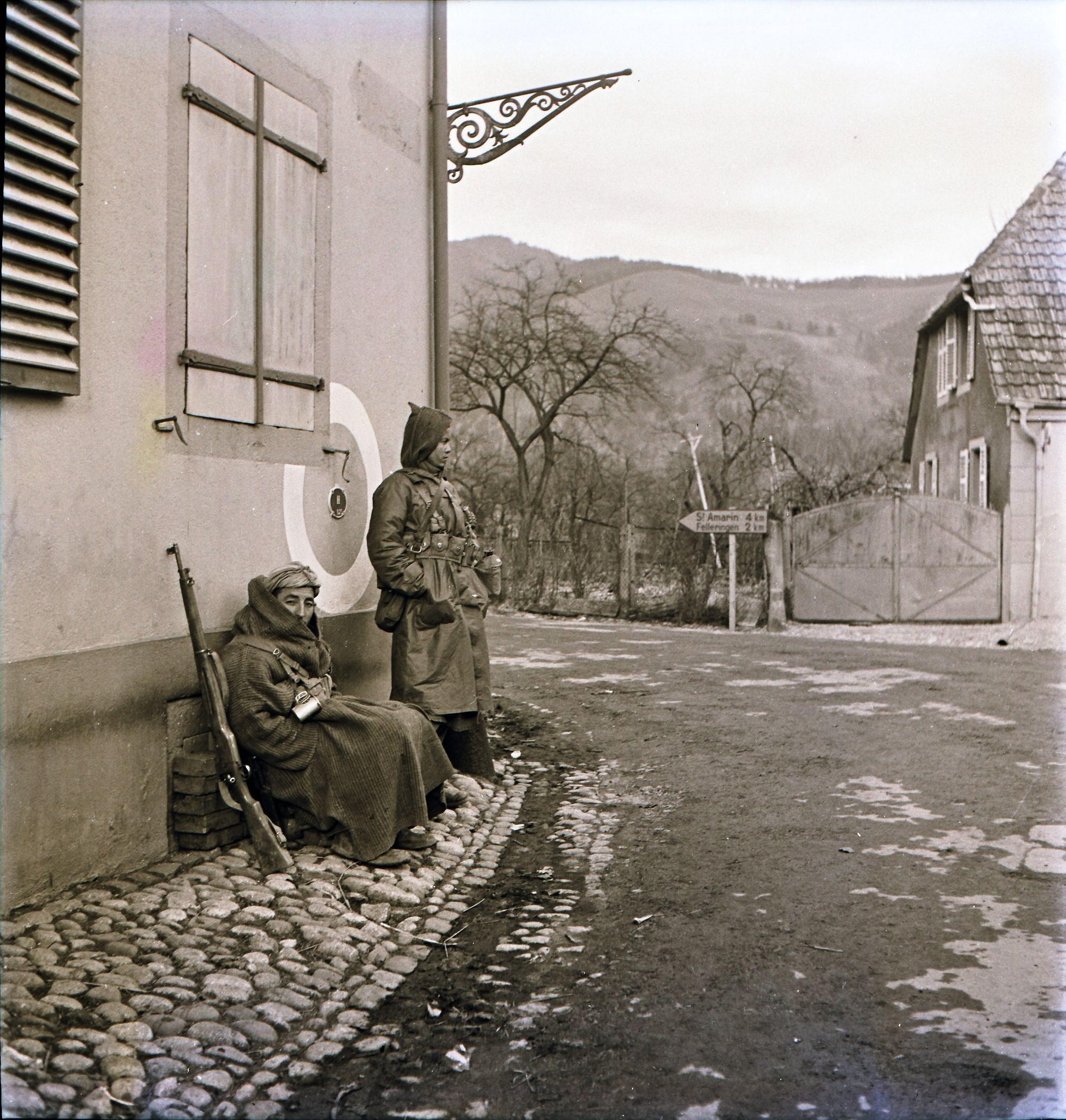
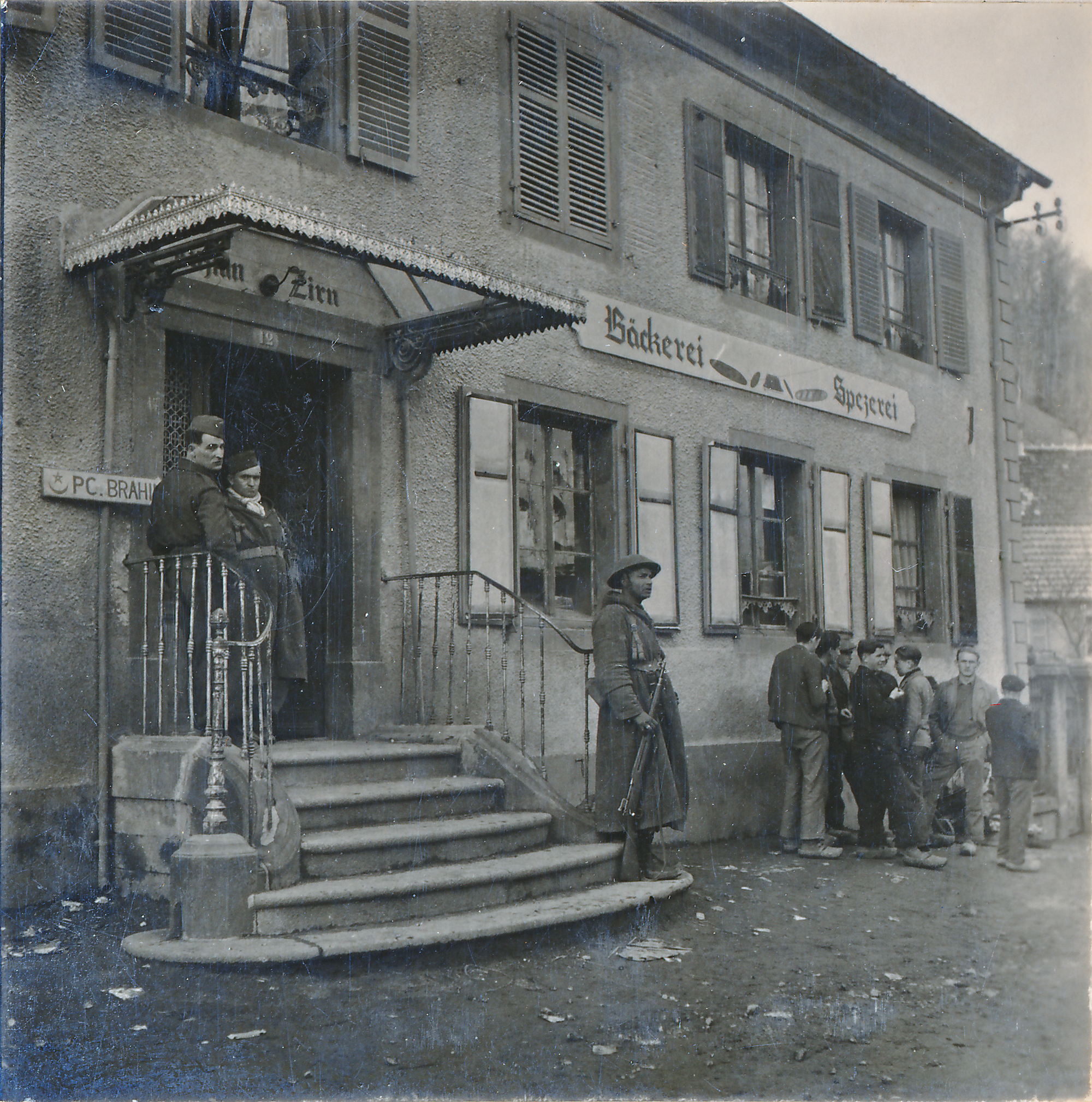
J9. The Goumiers' HQ in Mollau. Le PC des goumiers à Mollau.
Mollau
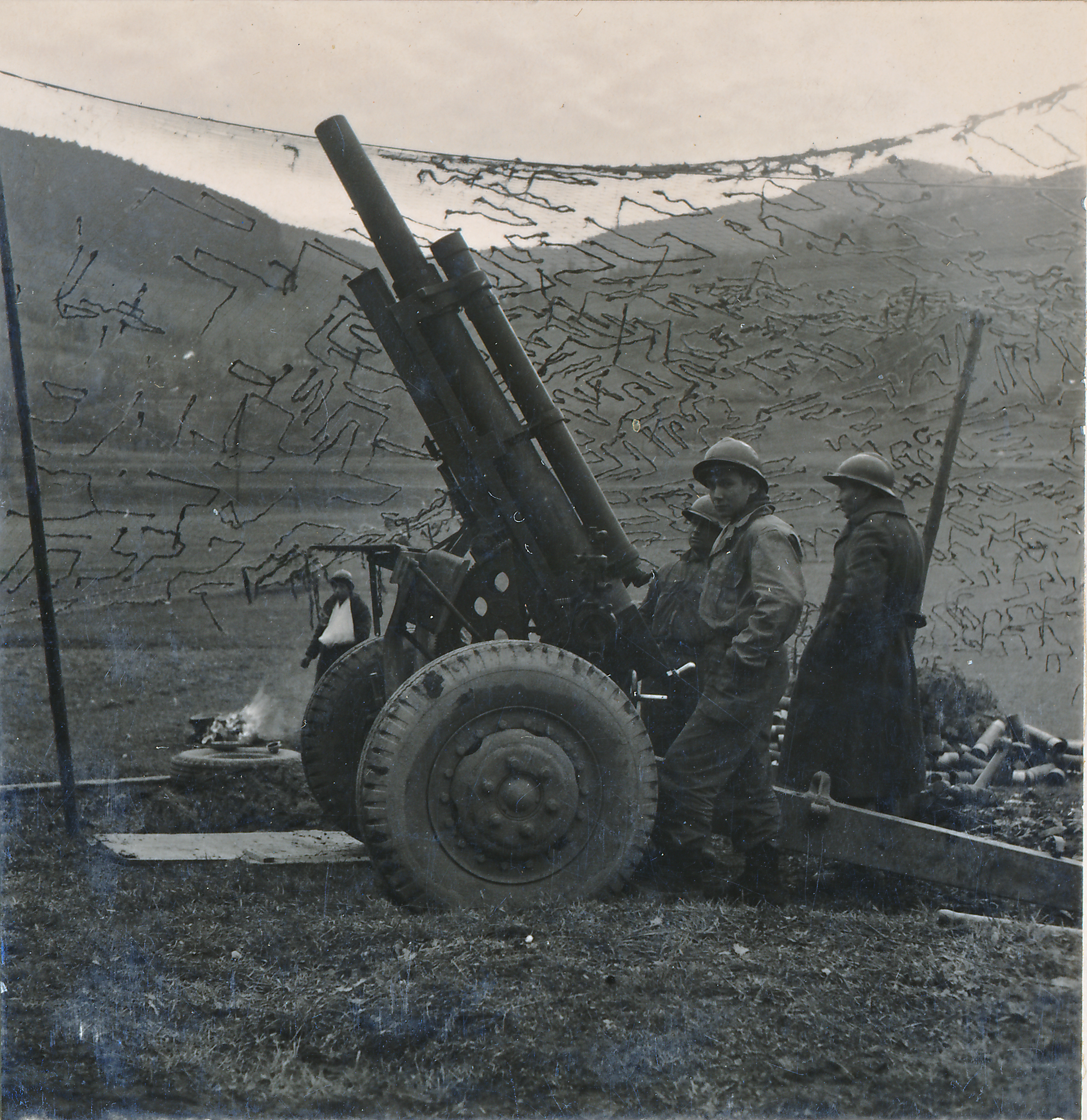
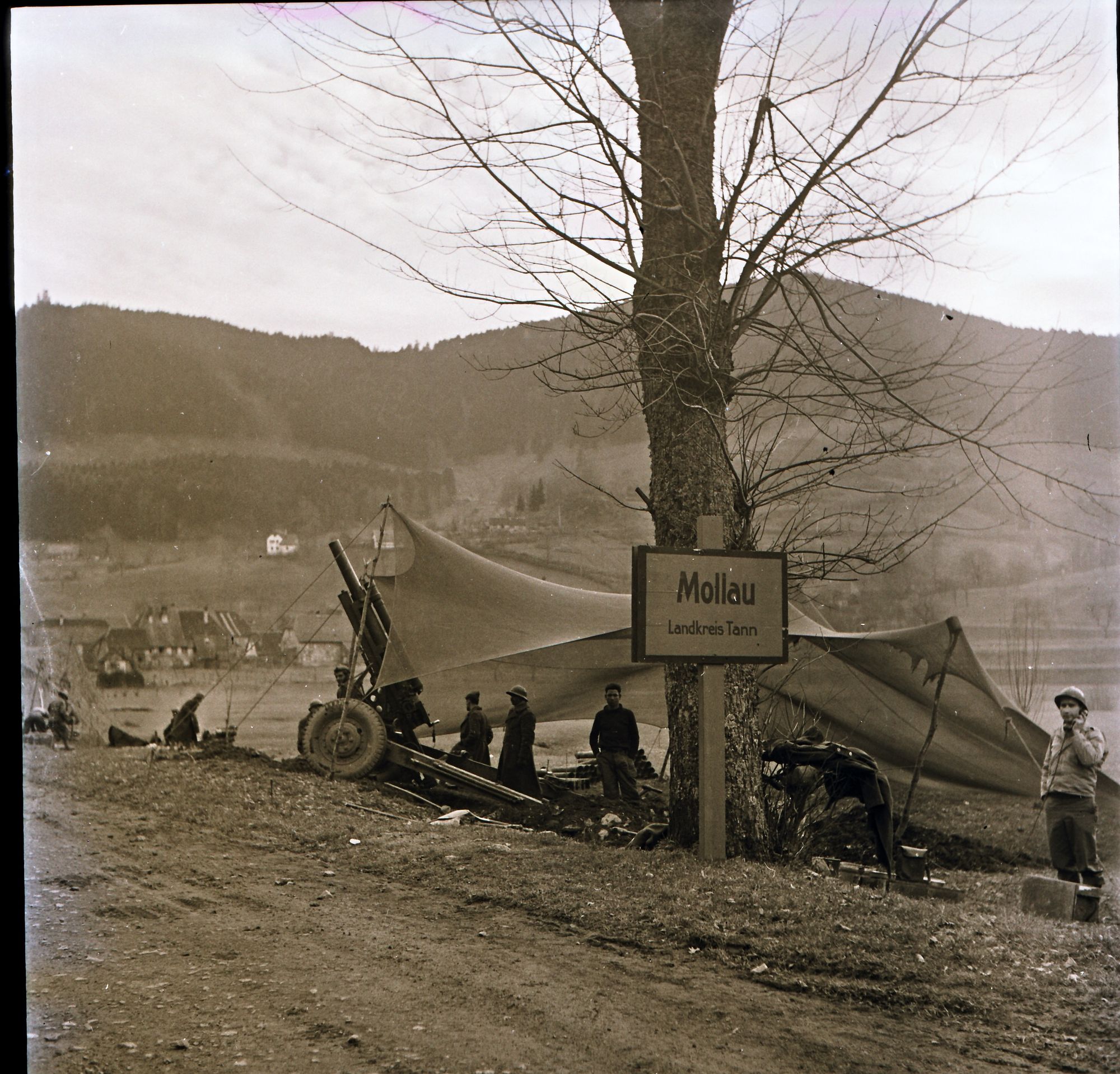
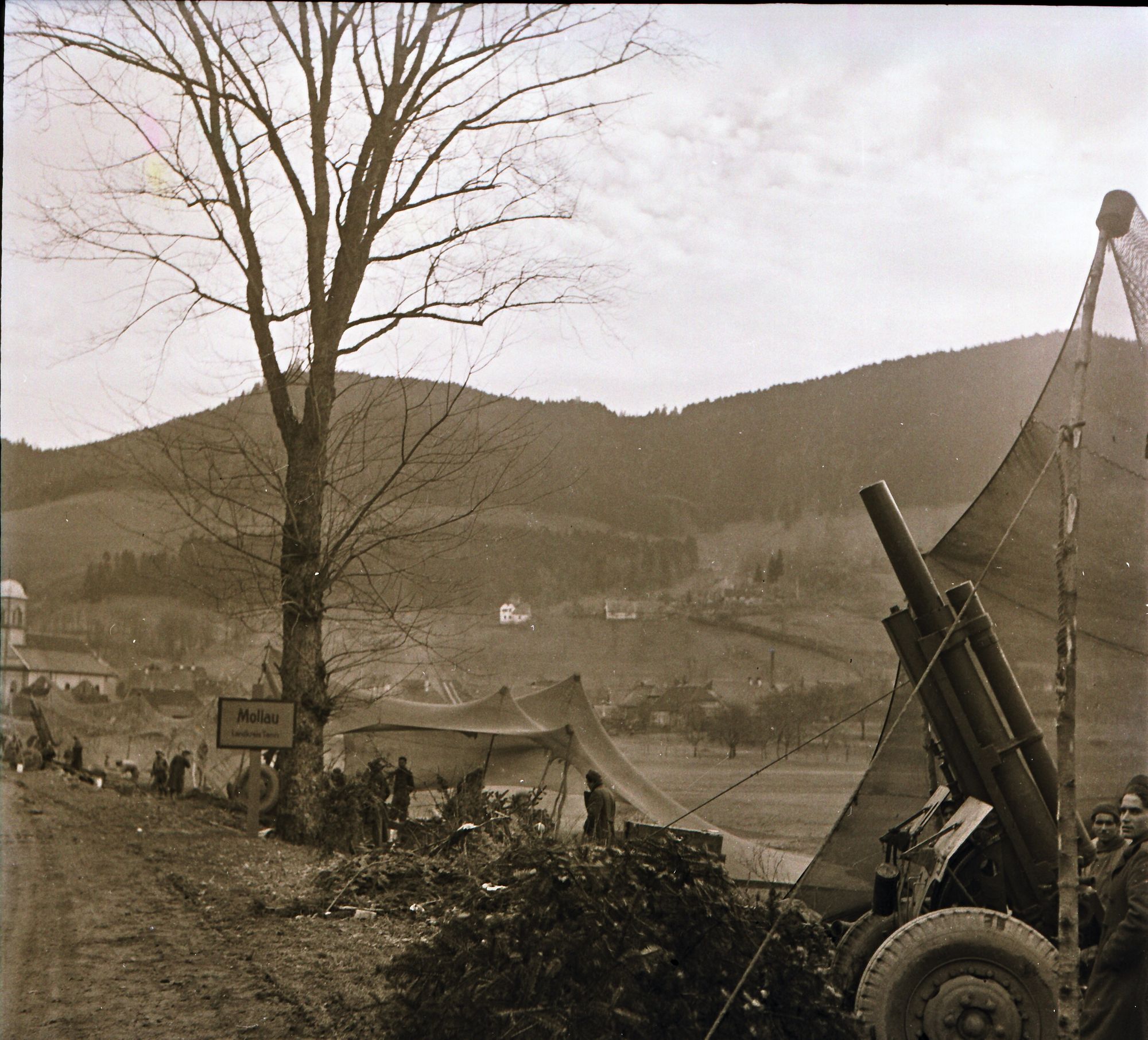
J10-J12. French artillery in position around Mollau. Artillerie française en position autour de Mollau.
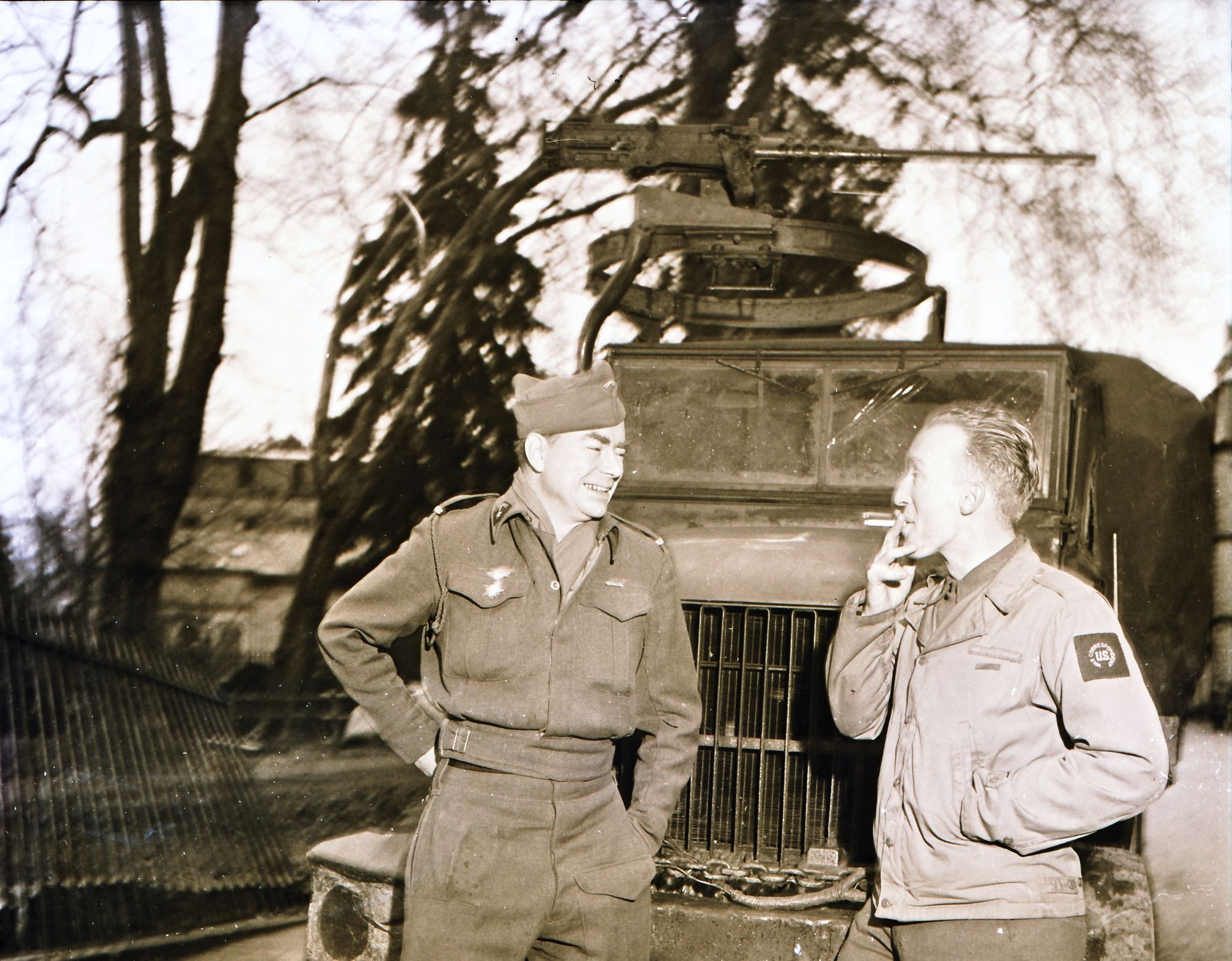
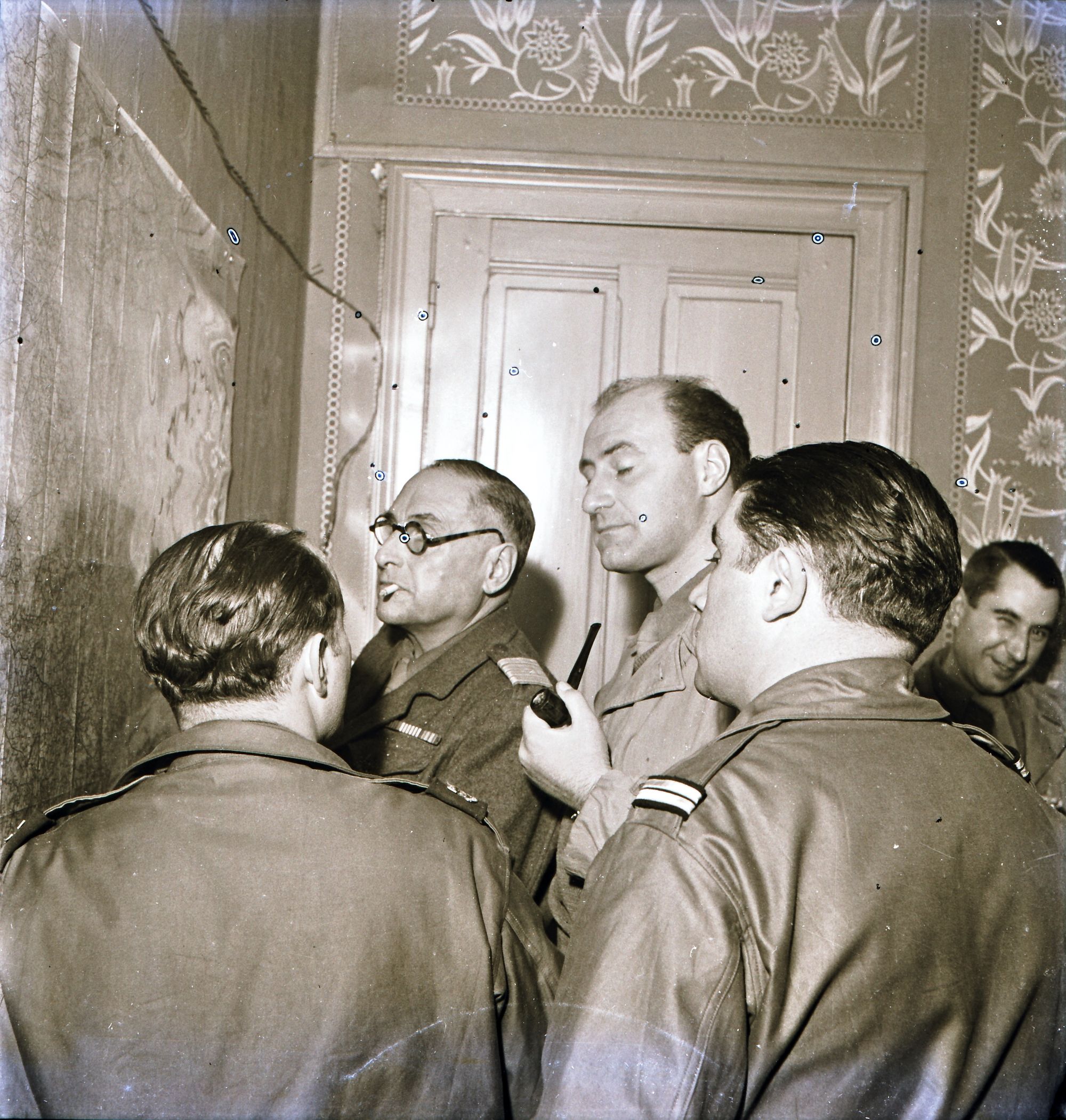
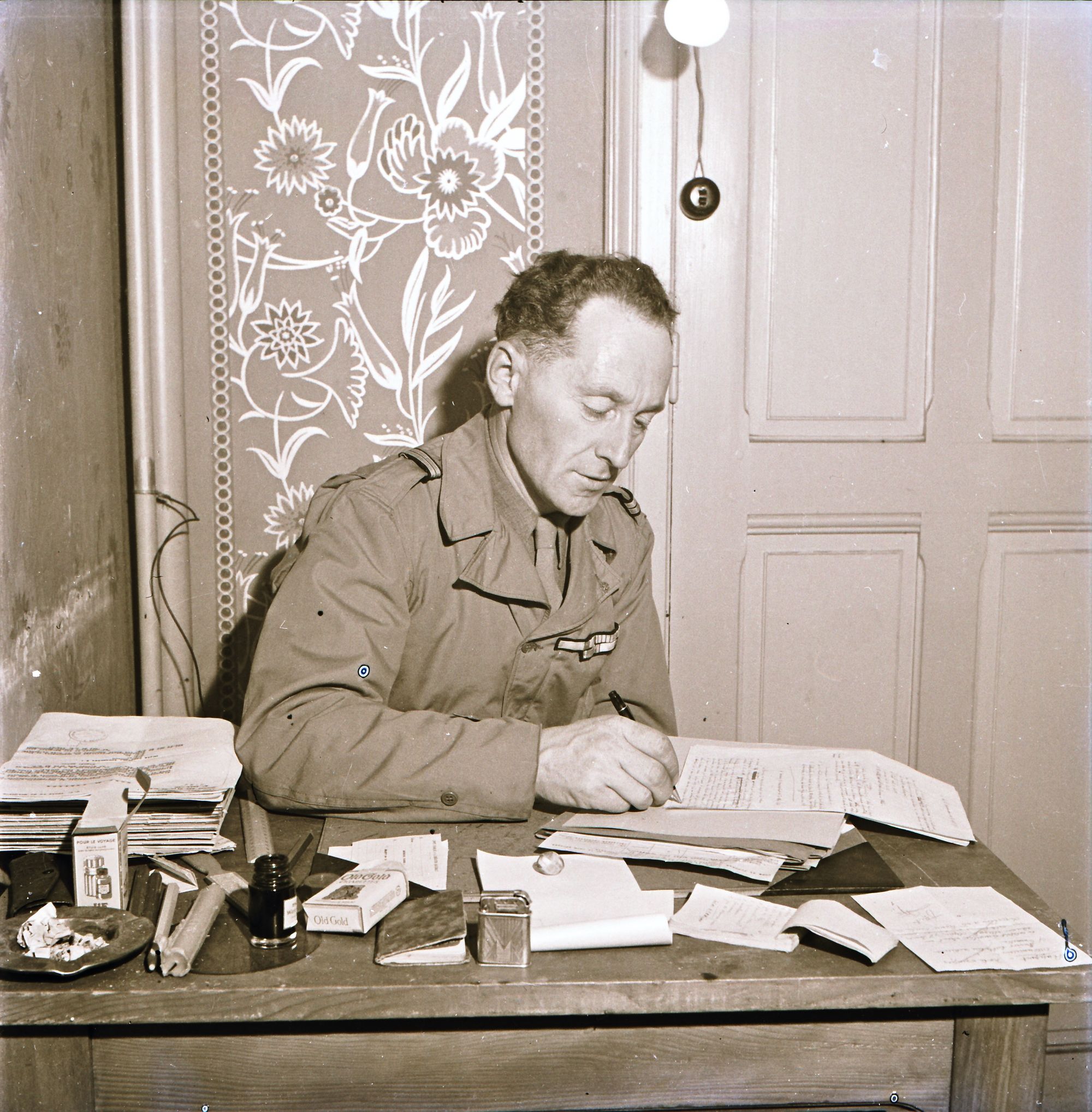
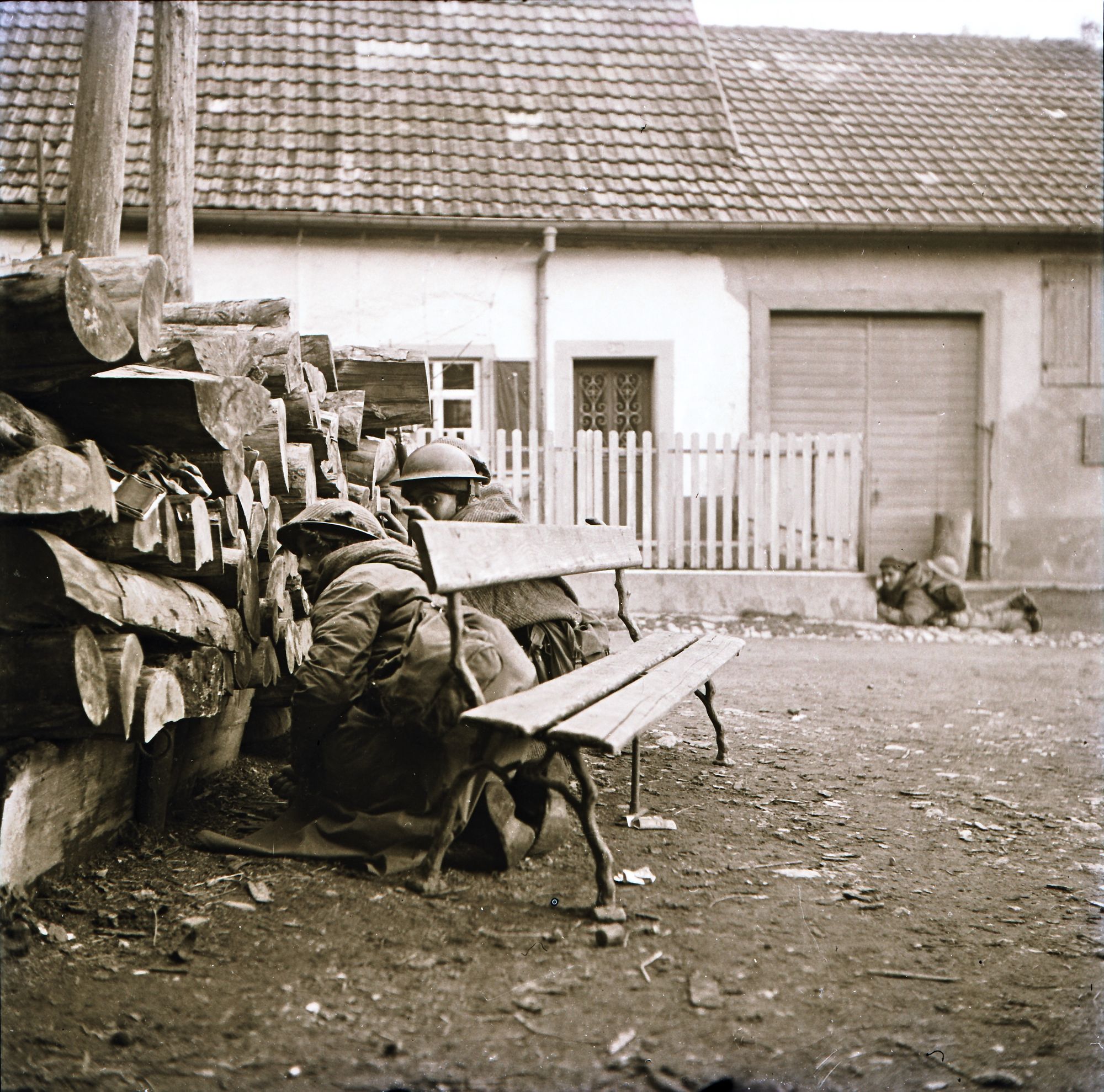
K roll. Eight negatives and all captions missing. Pellicule K. Pas de légendes et 8 négatifs manquants.
Sainte-Marie-aux-Mines
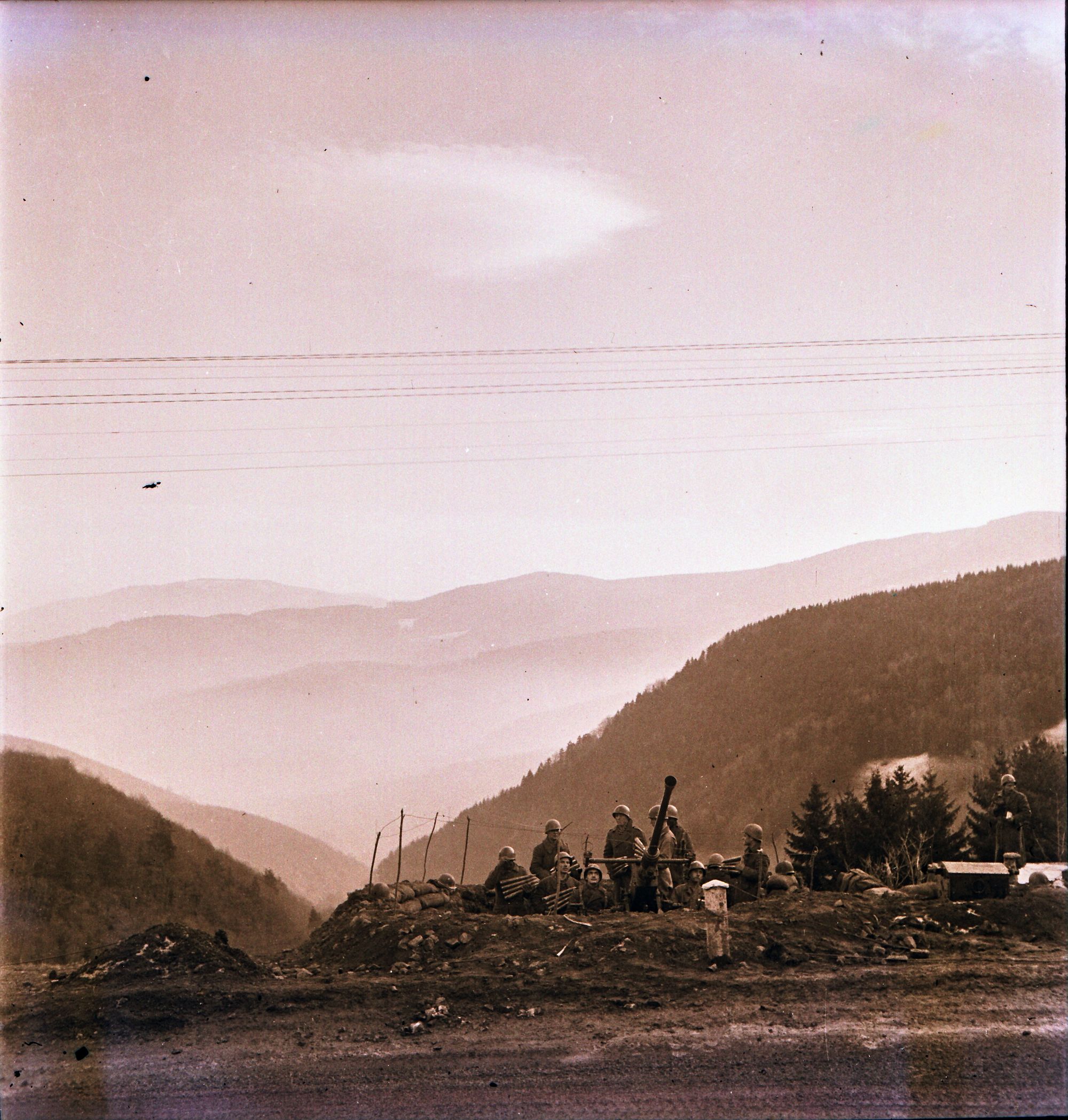
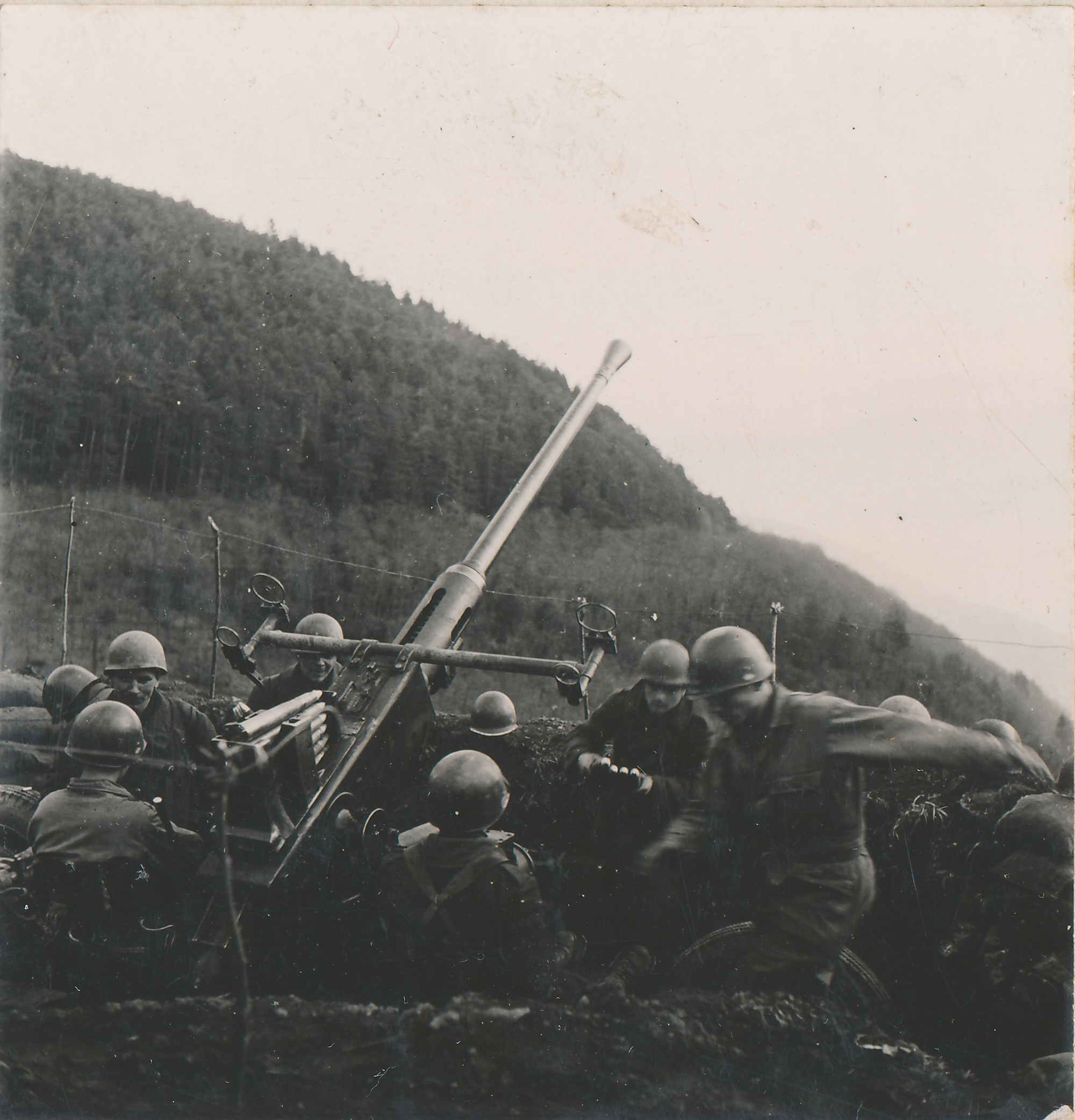
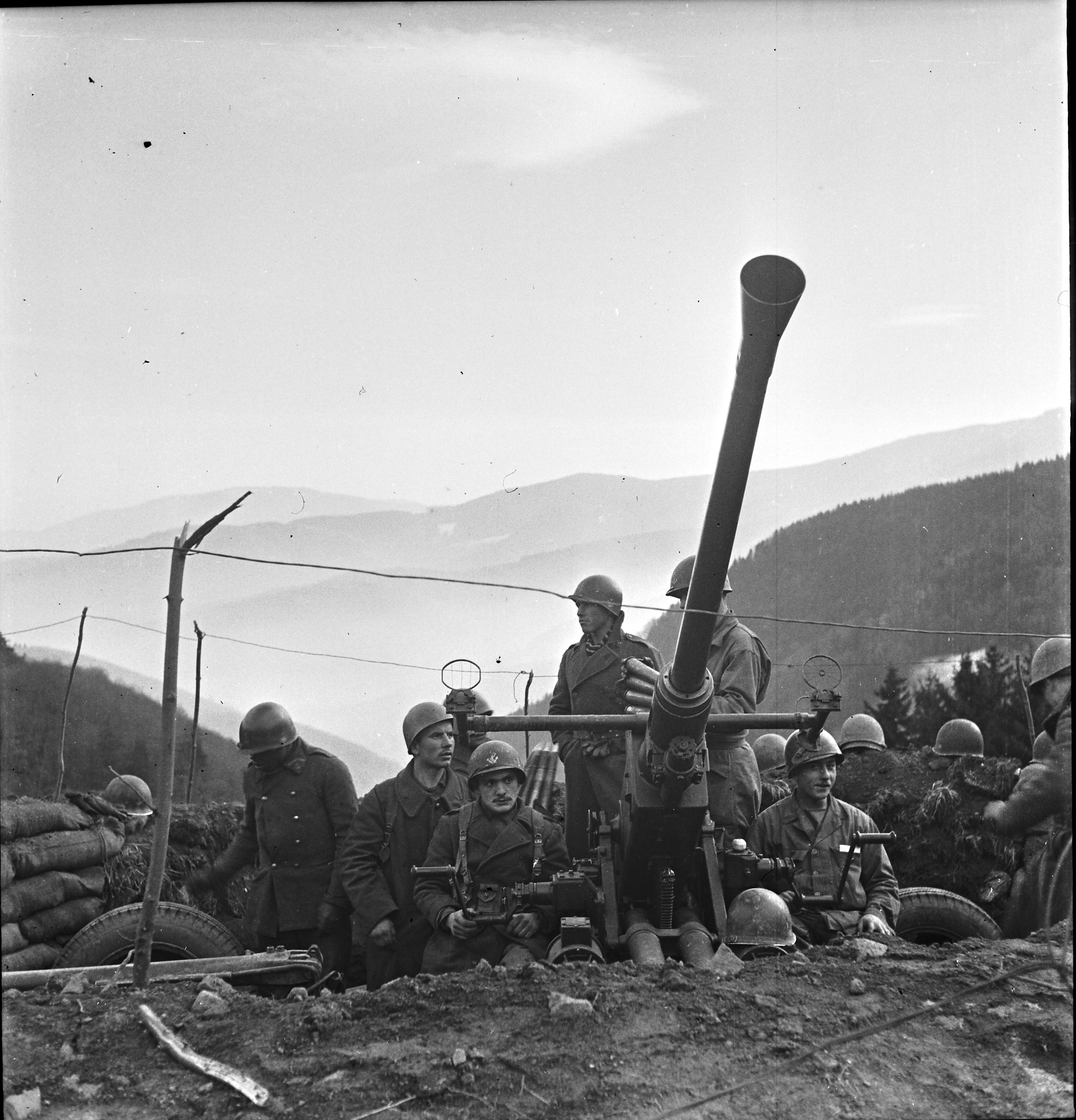
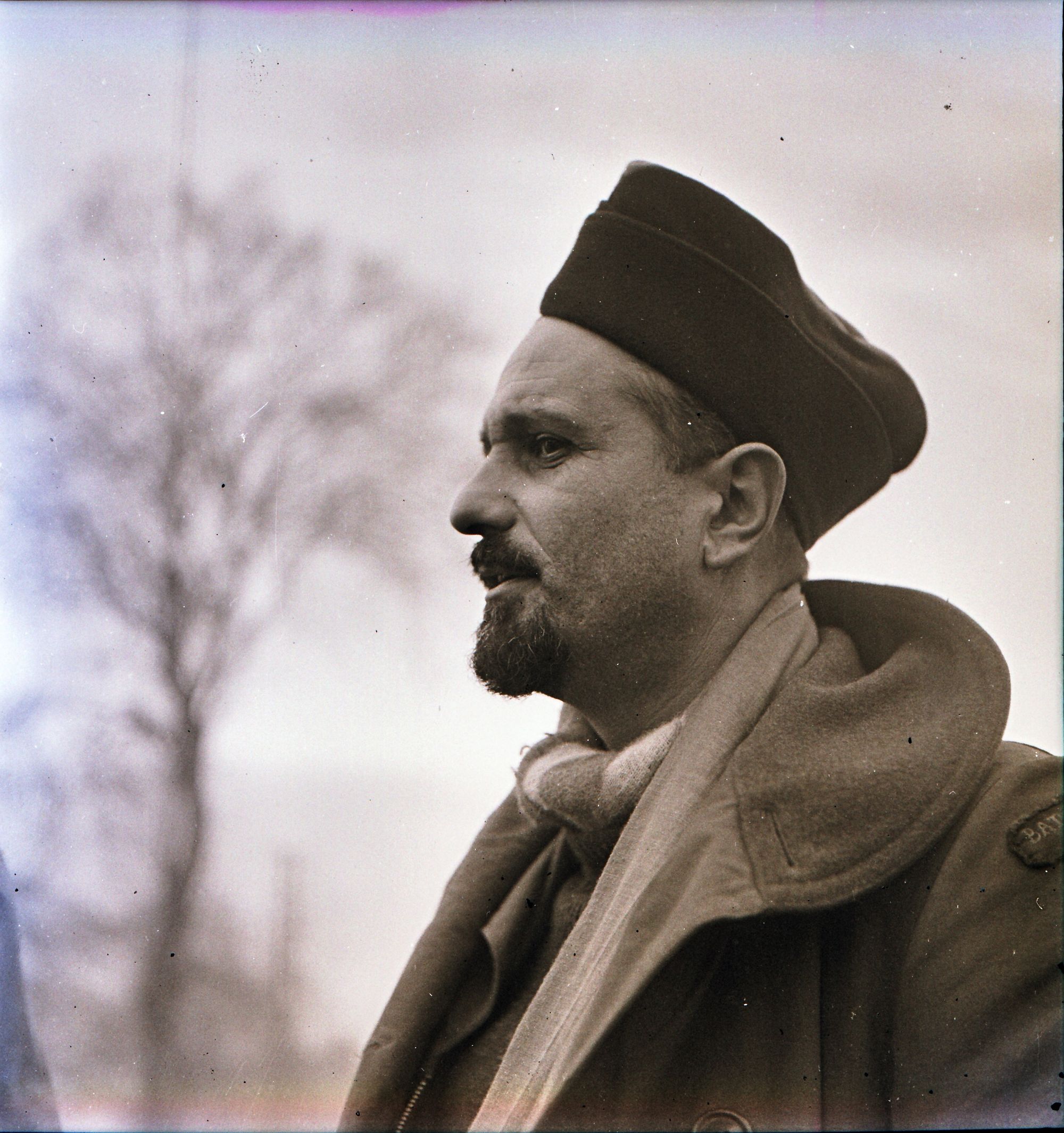
L1-L4. Anti aircraft defense at the Sainte-Marie-aux-Mines pass. D.C.A. au col de Ste Marie aux Mines
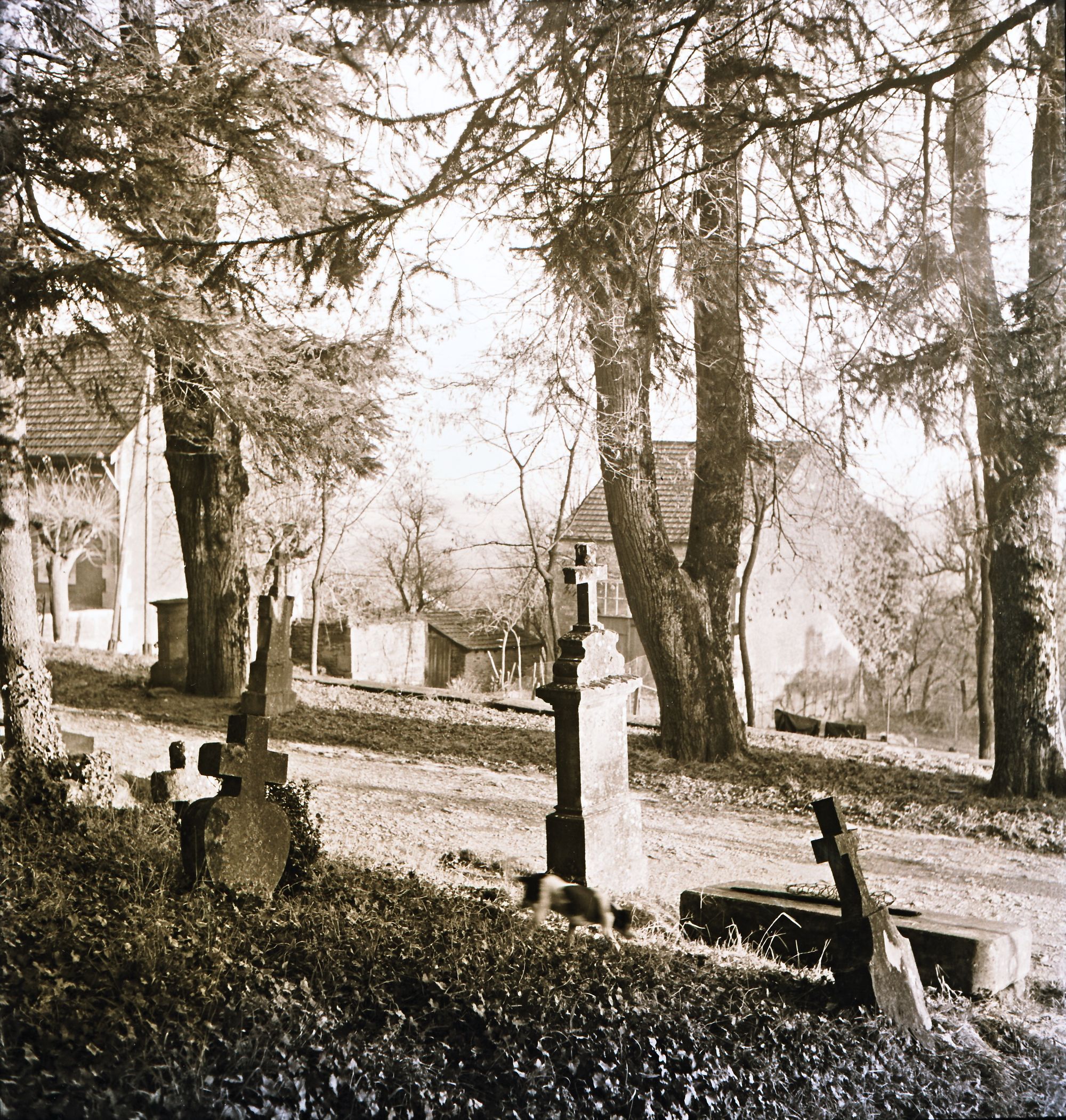
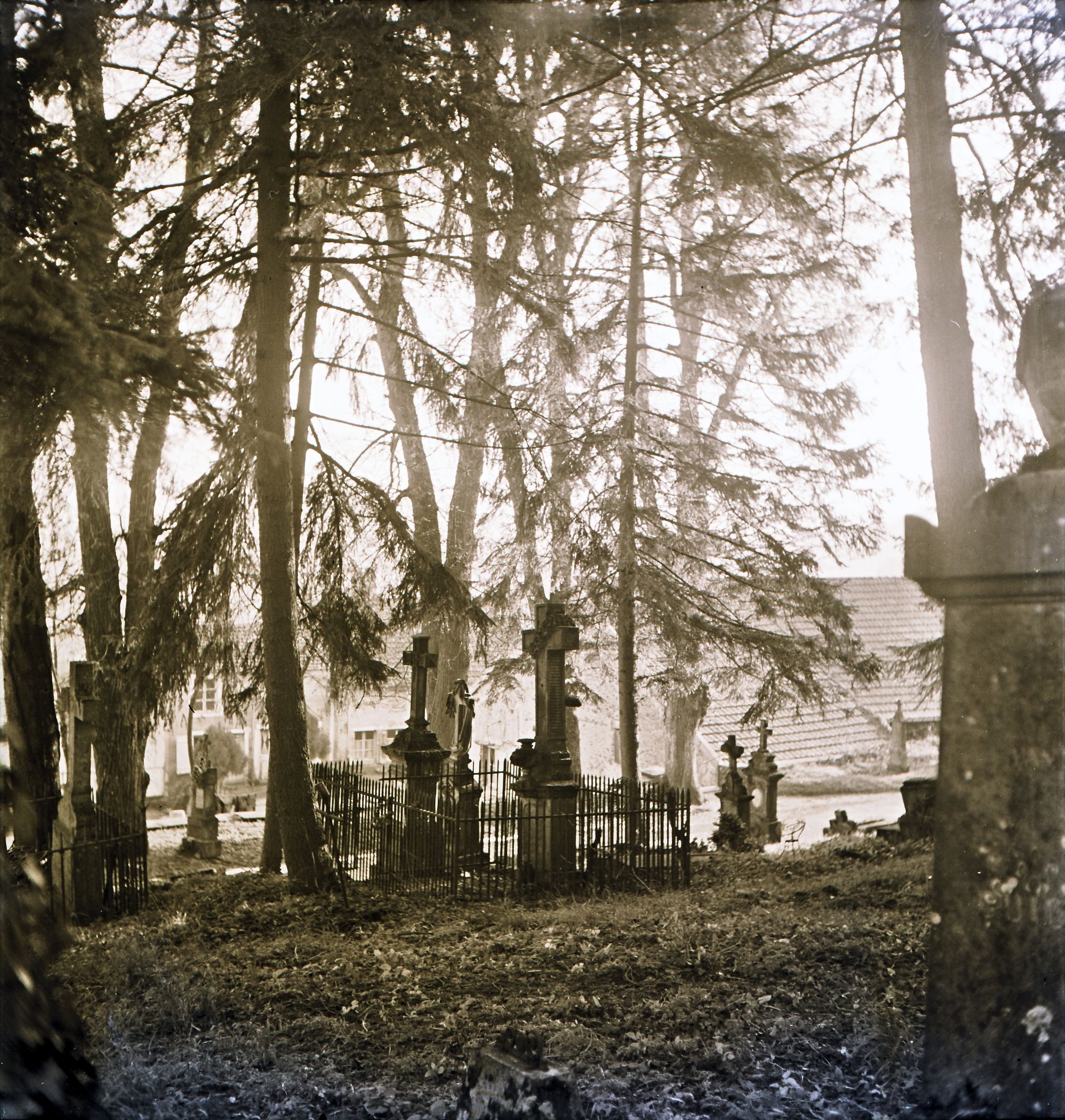
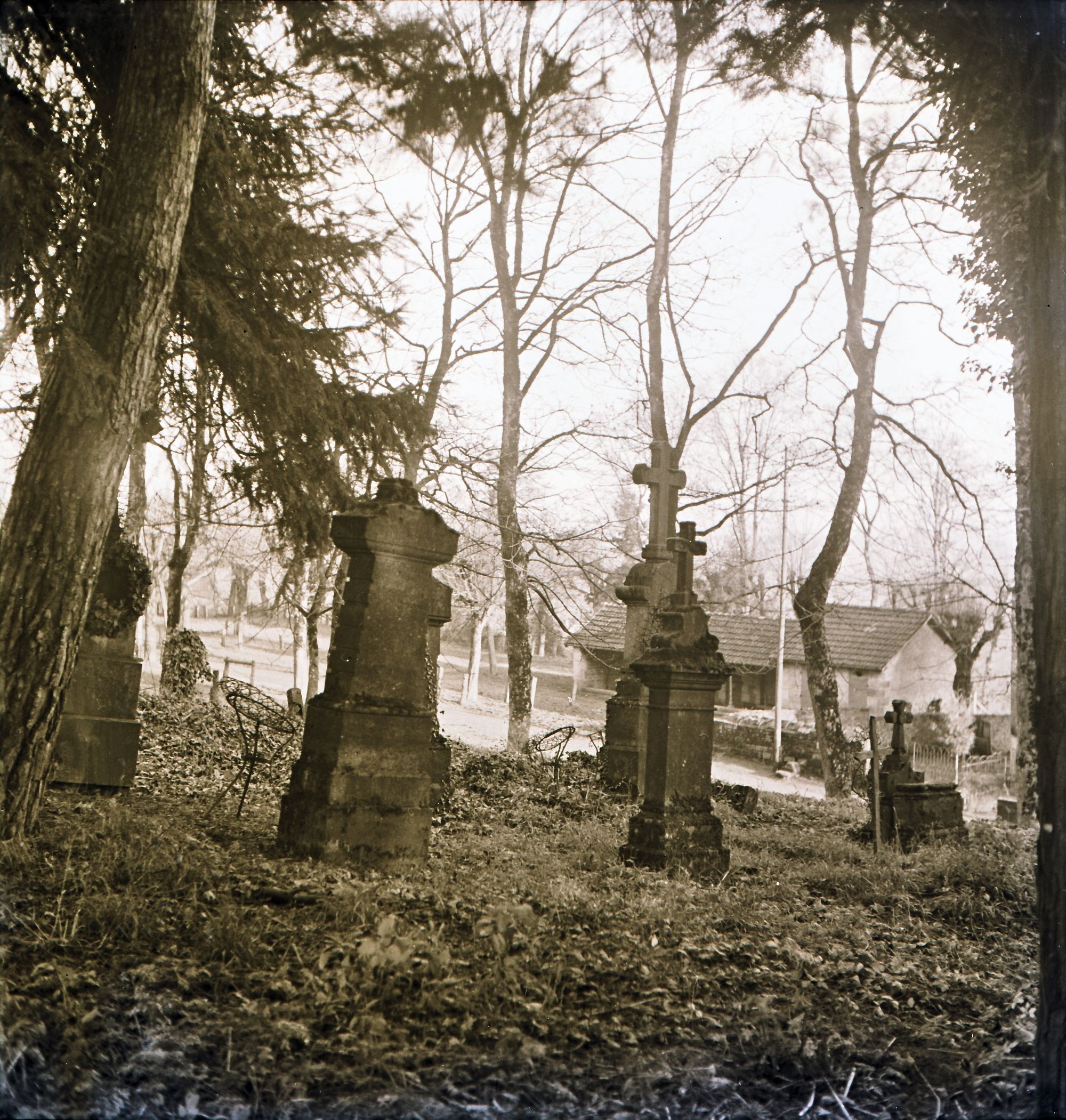
L5-L7. A cemetery in Alsace. Cimetière en Alsace
Mittelwihr
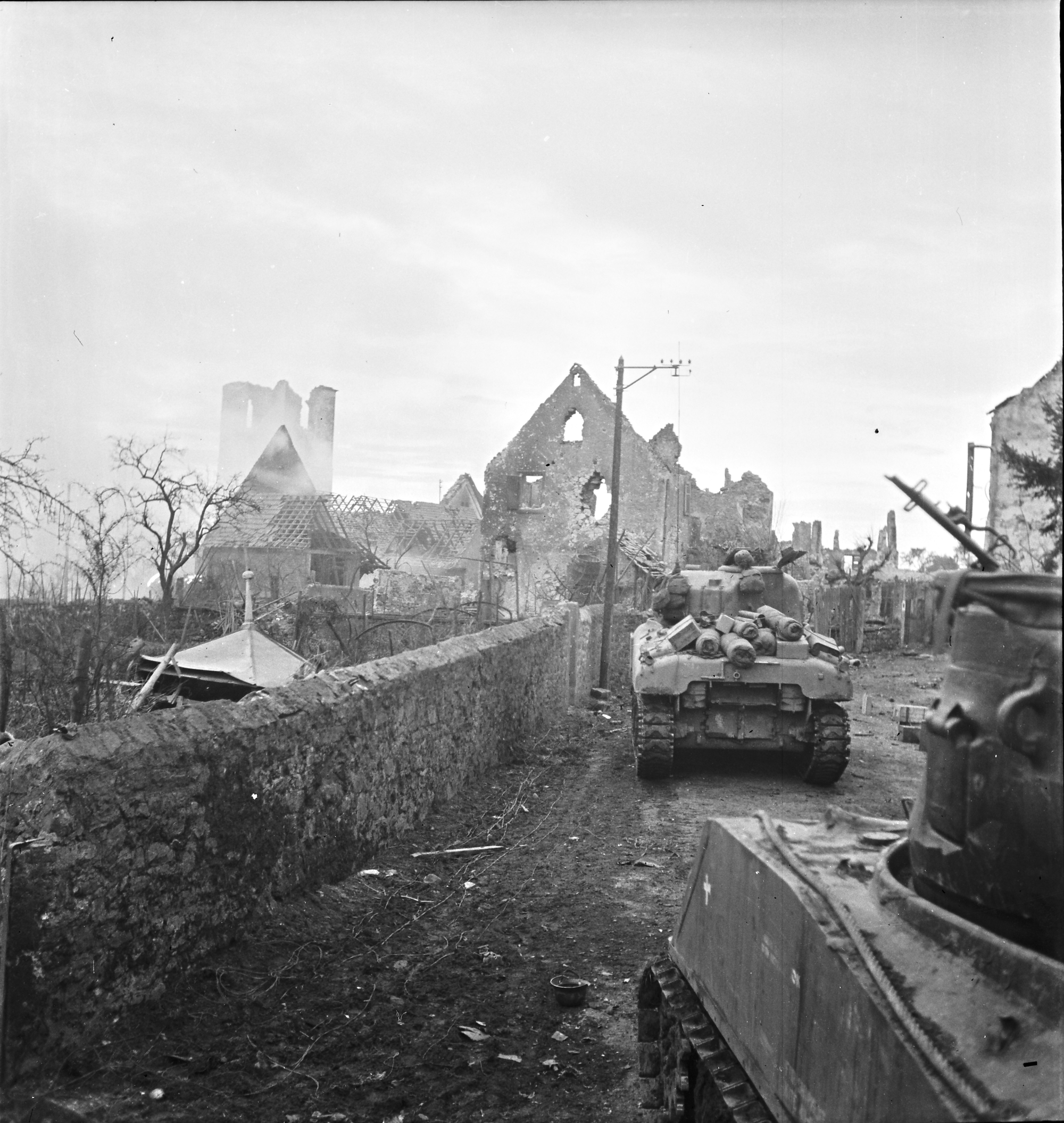
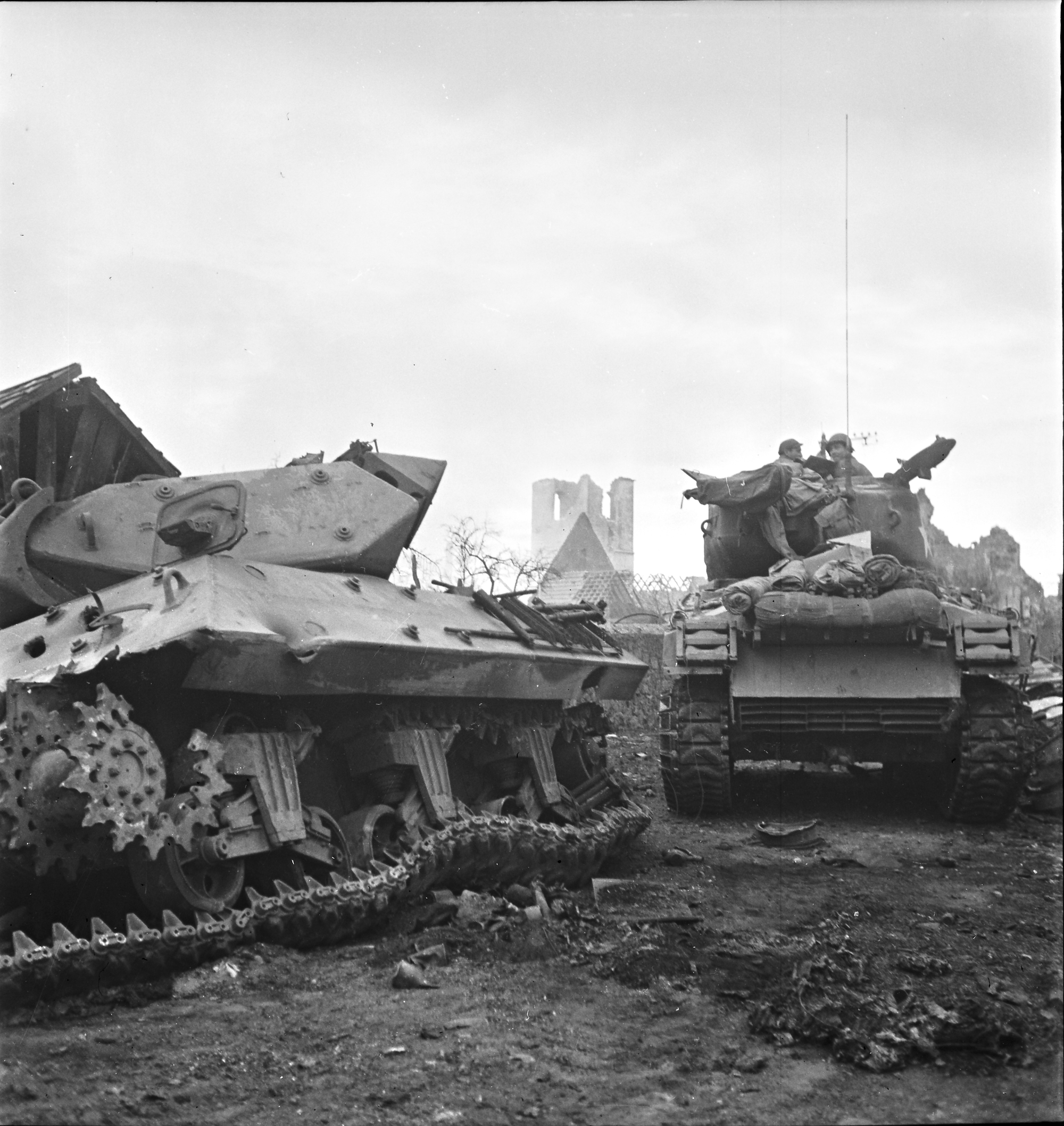
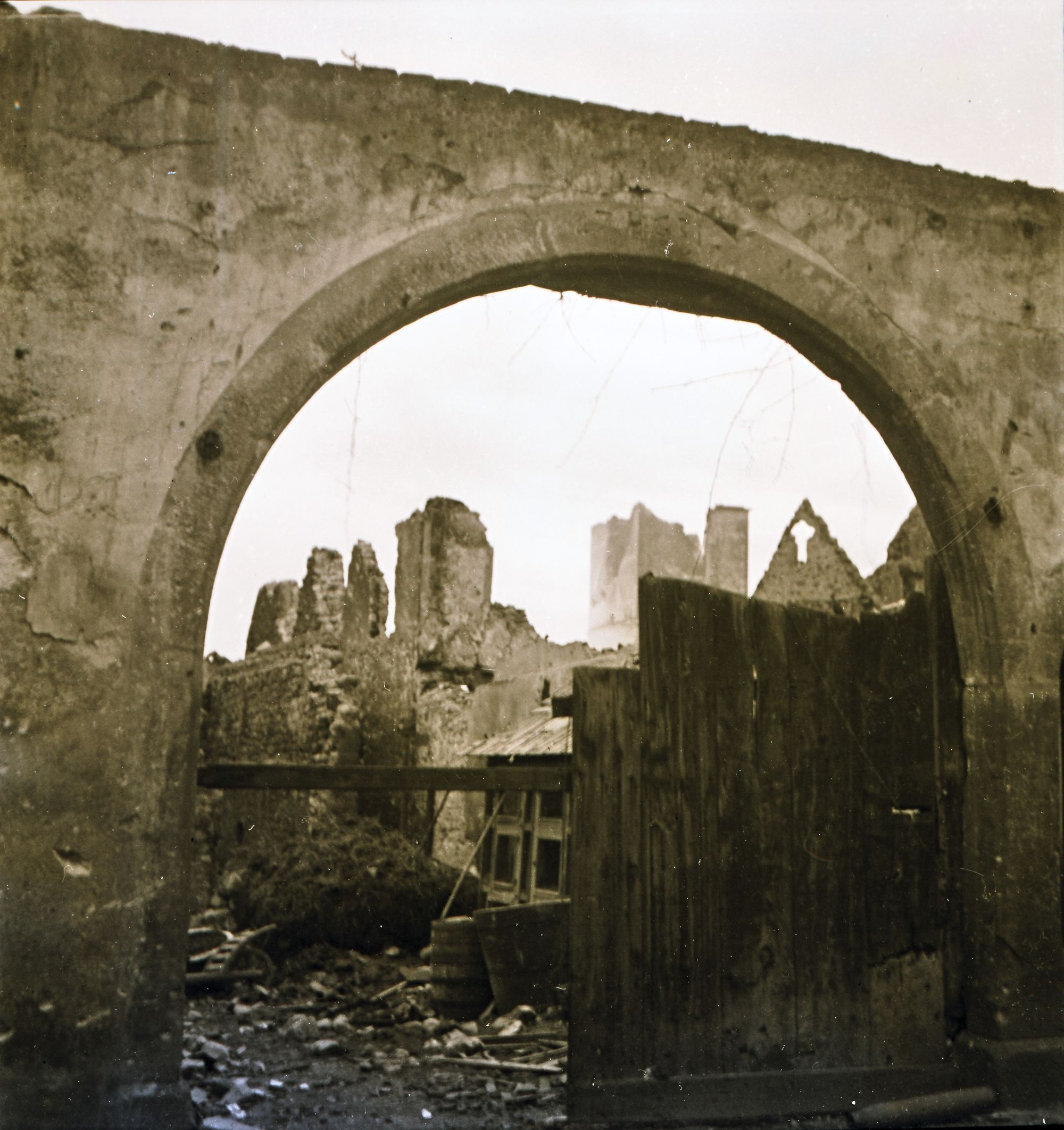
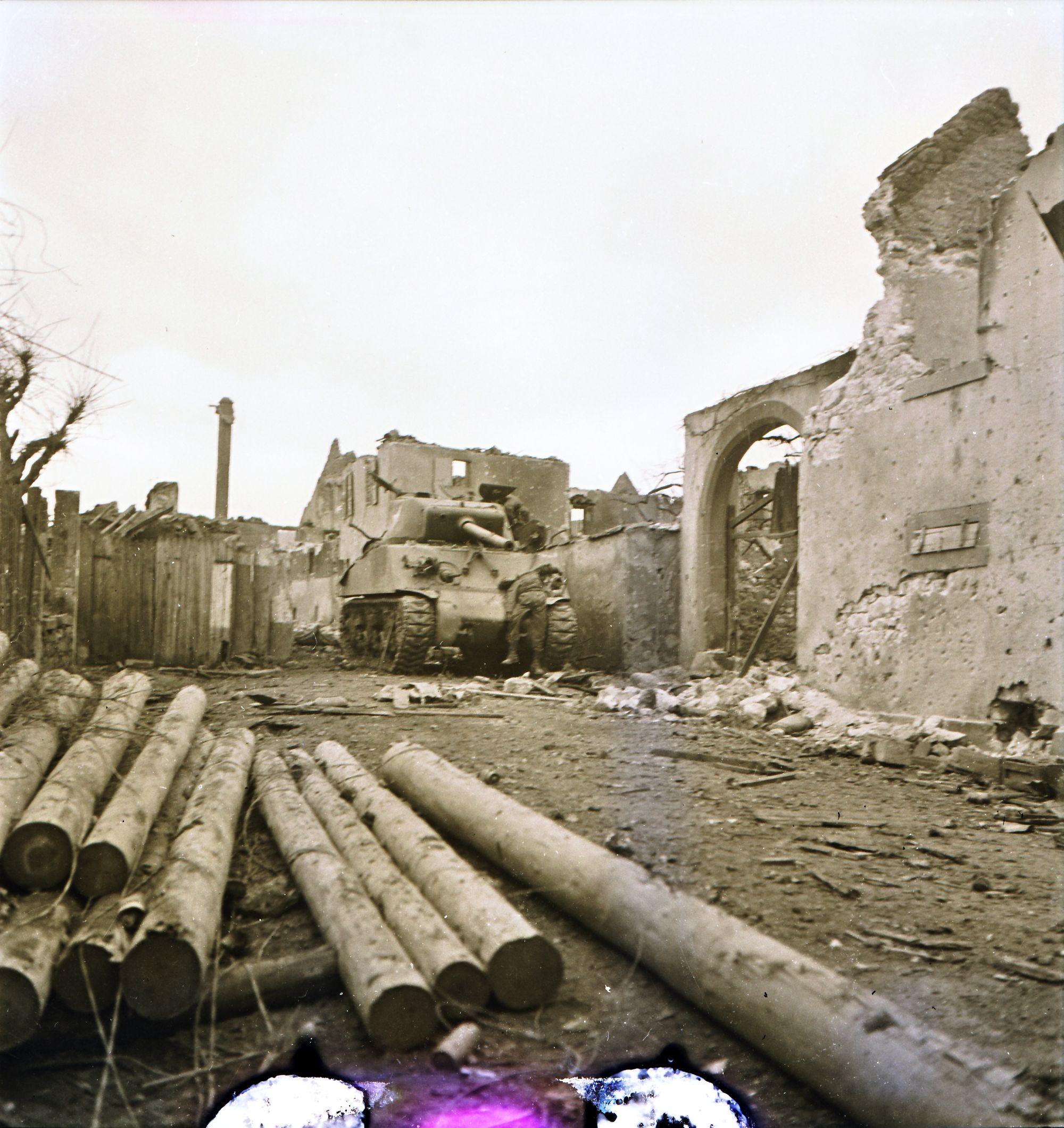
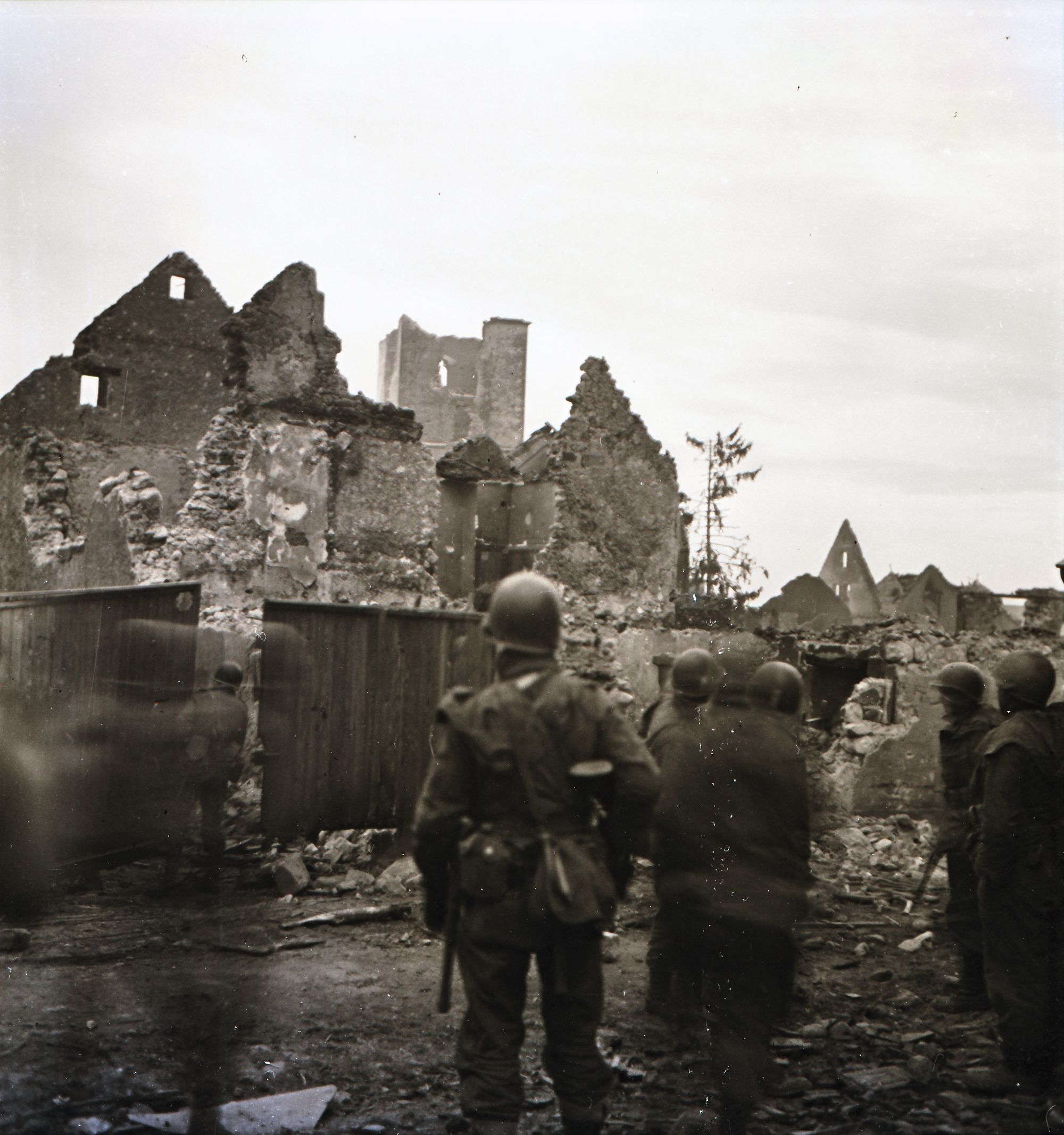
L9-L12. Fighting and patrols in the ruins of Mittelwihr. Combat et patrouilles dans les ruines de Mittelwihr.
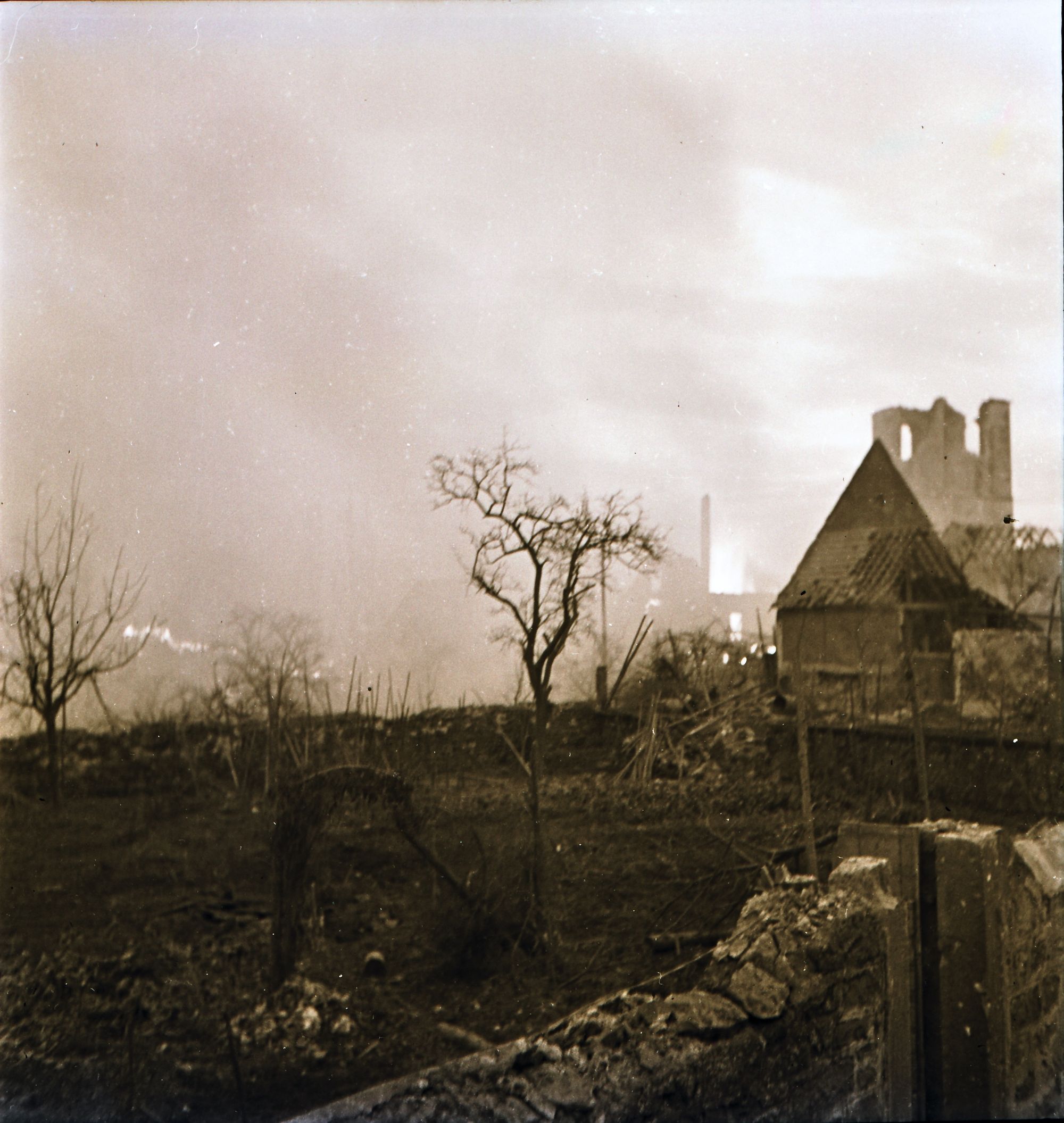
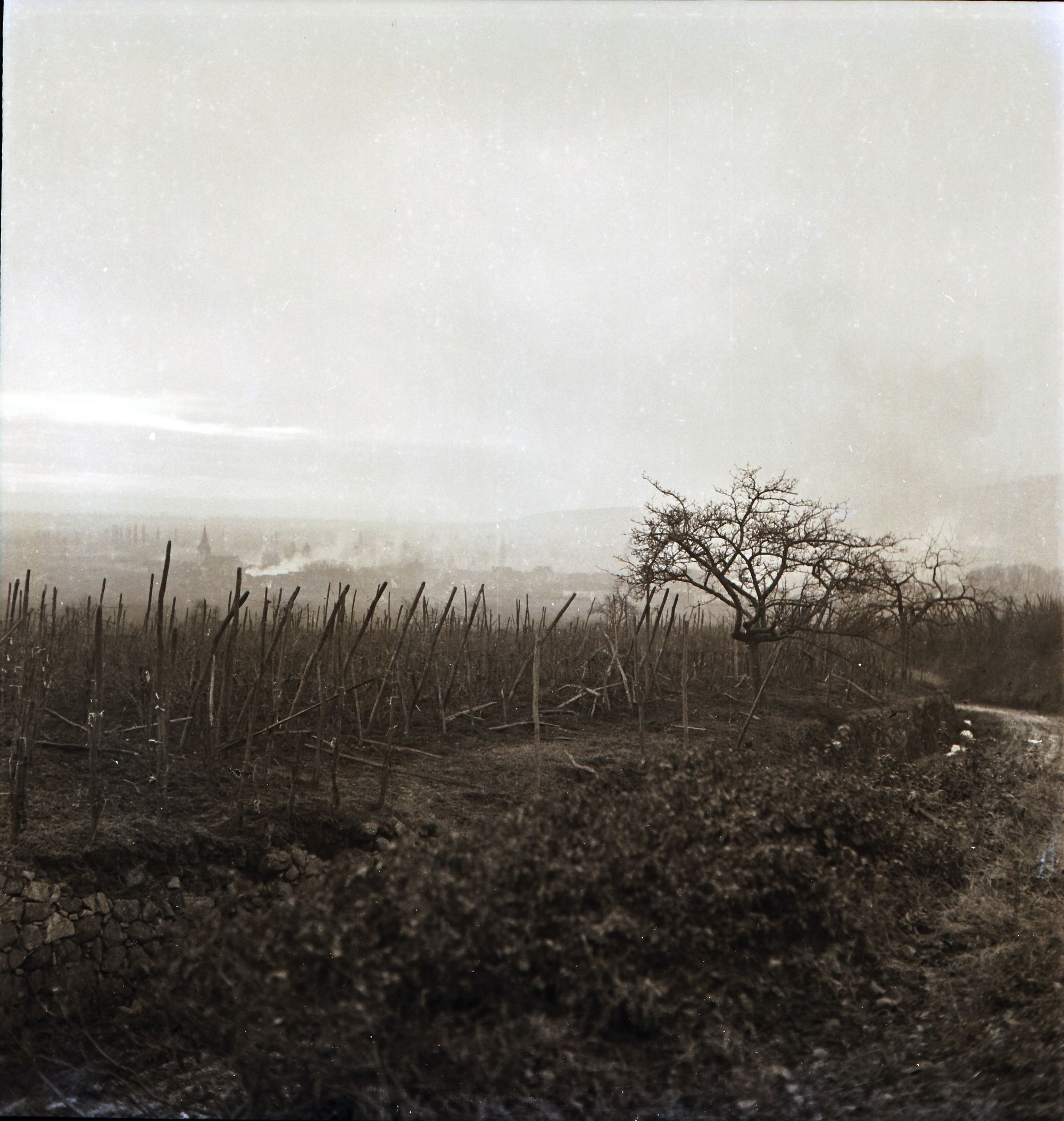
M1. M2. At night battle continues in Mittelwihr. A la nuit la bataille continue dans Mittelwihr.
Riquewihr
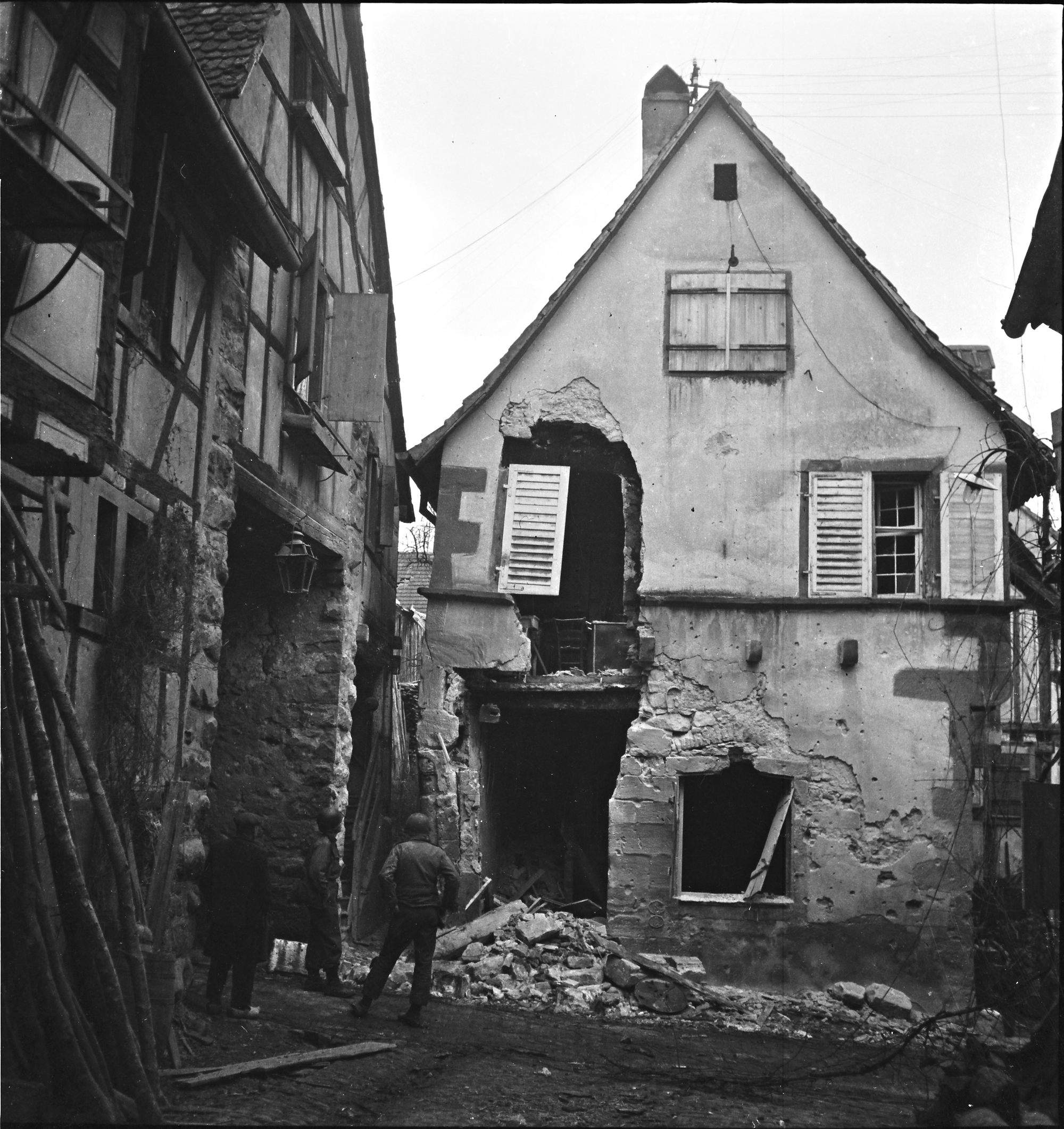
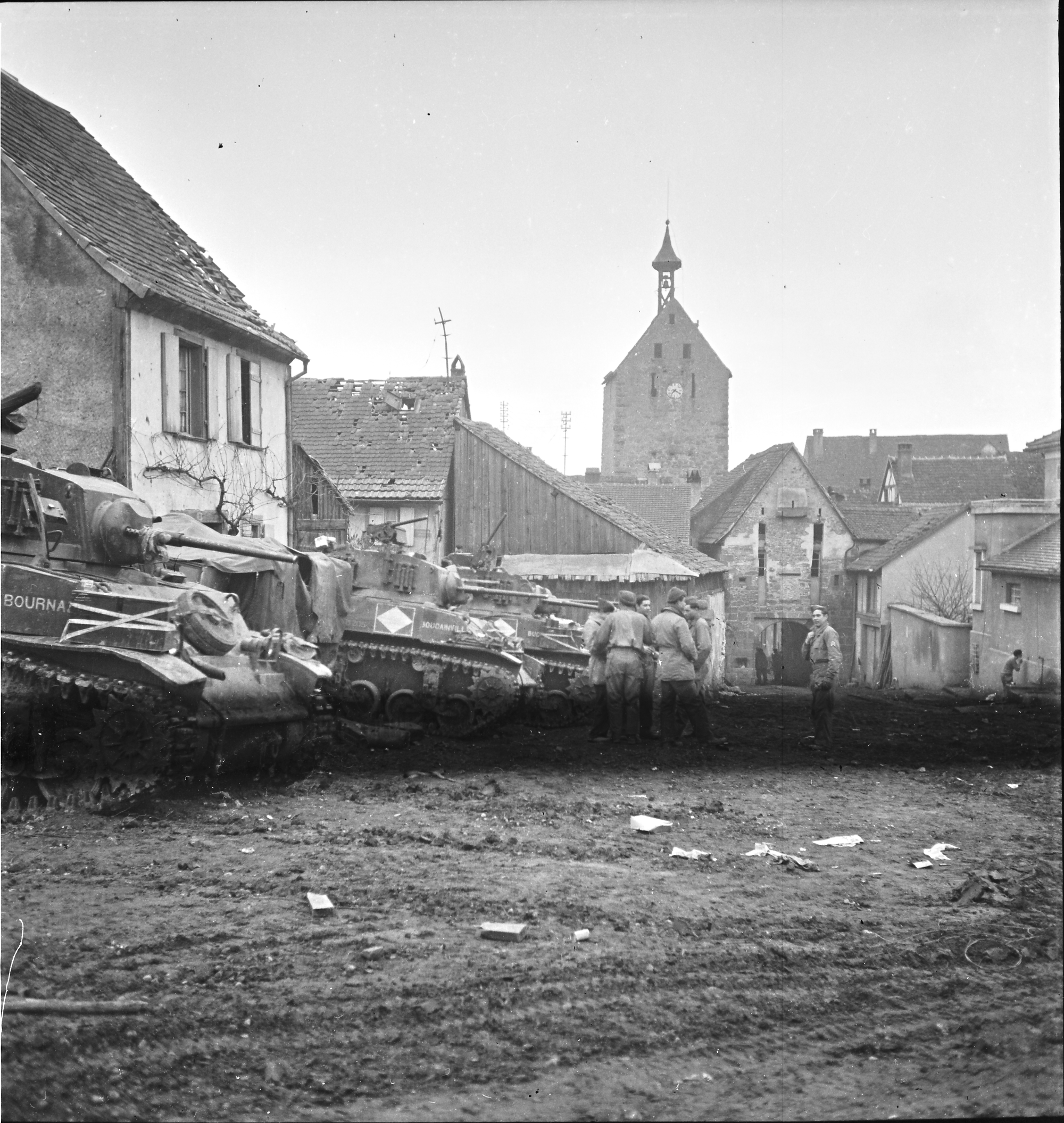
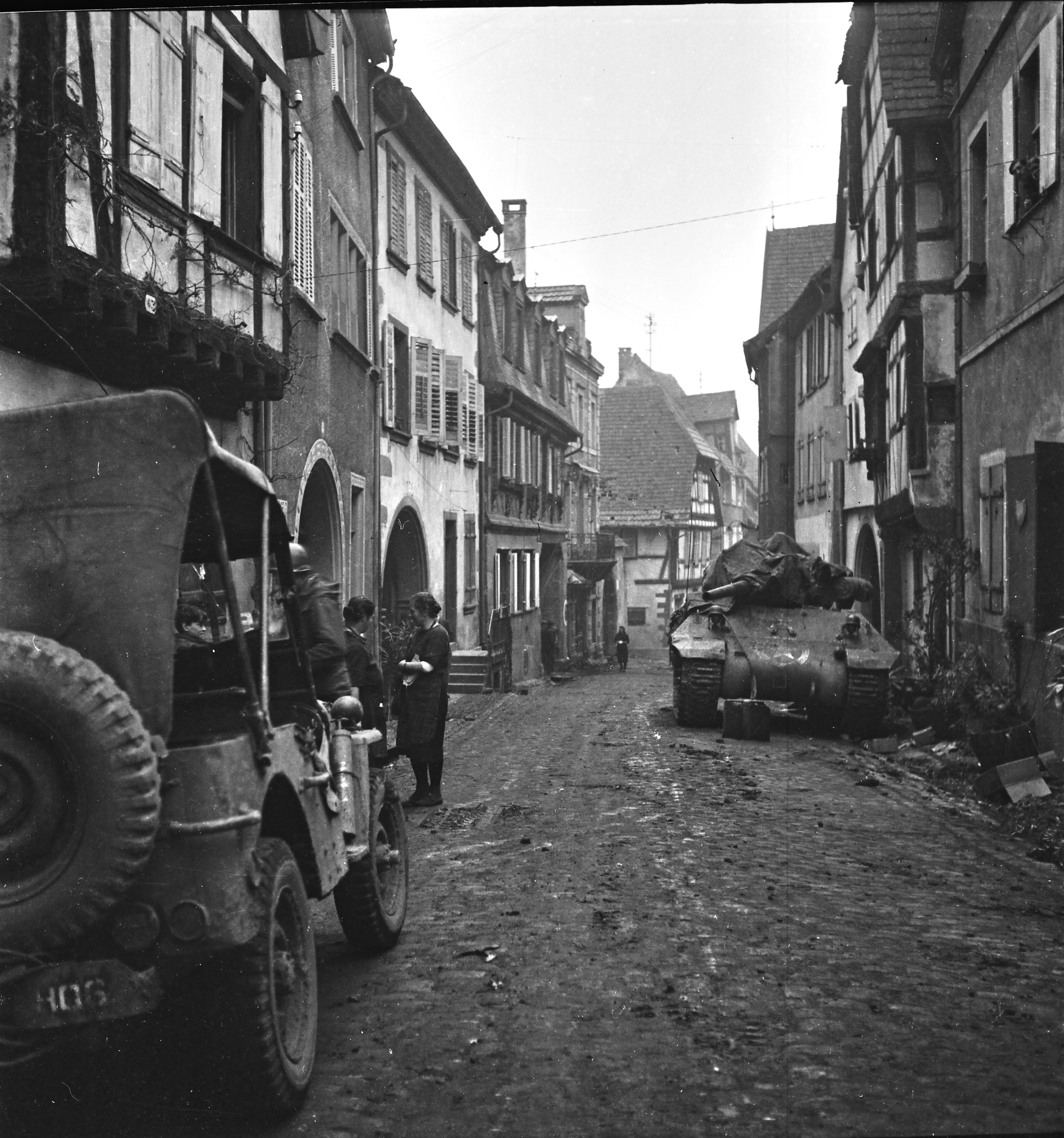
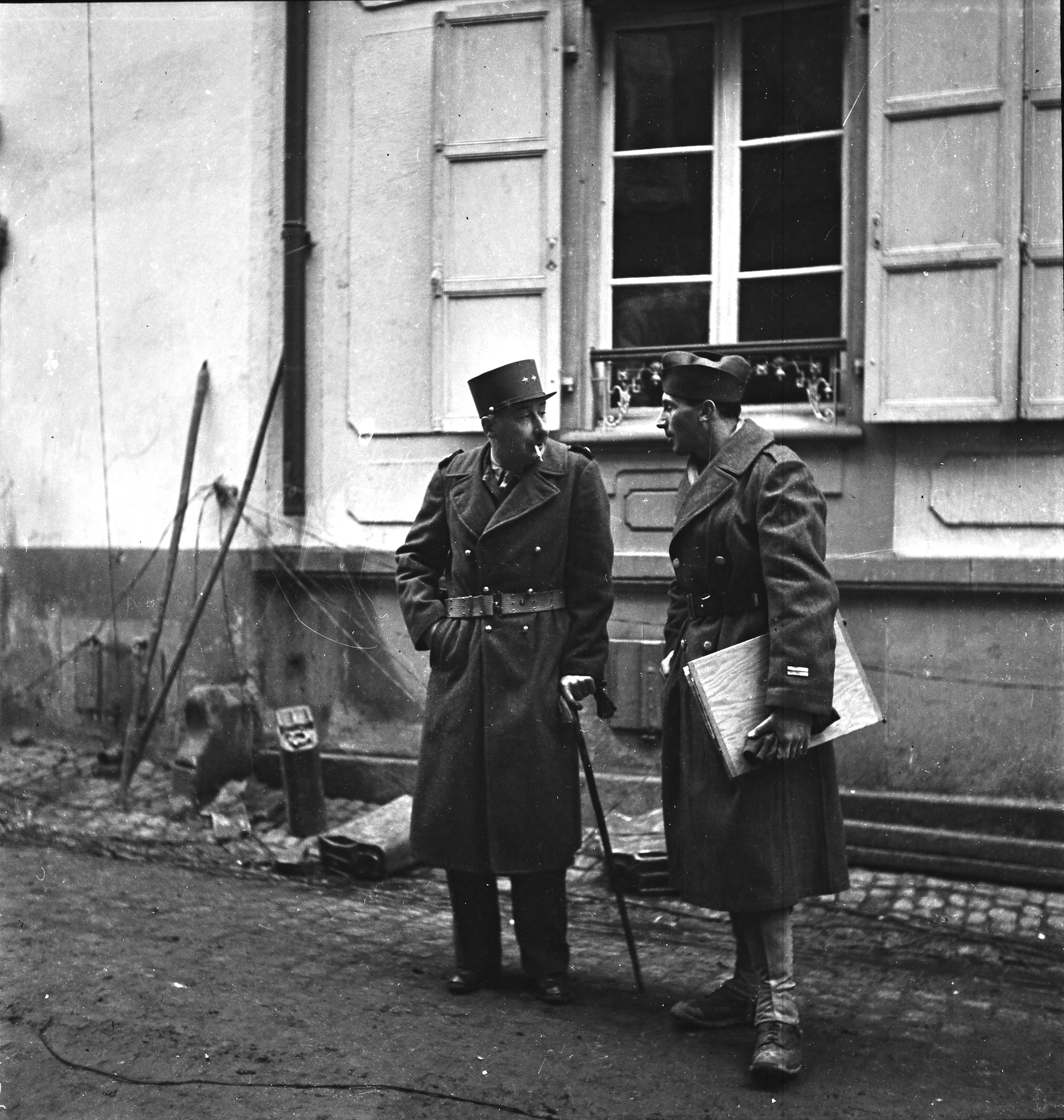
M3. M4. M6. Riquewihr
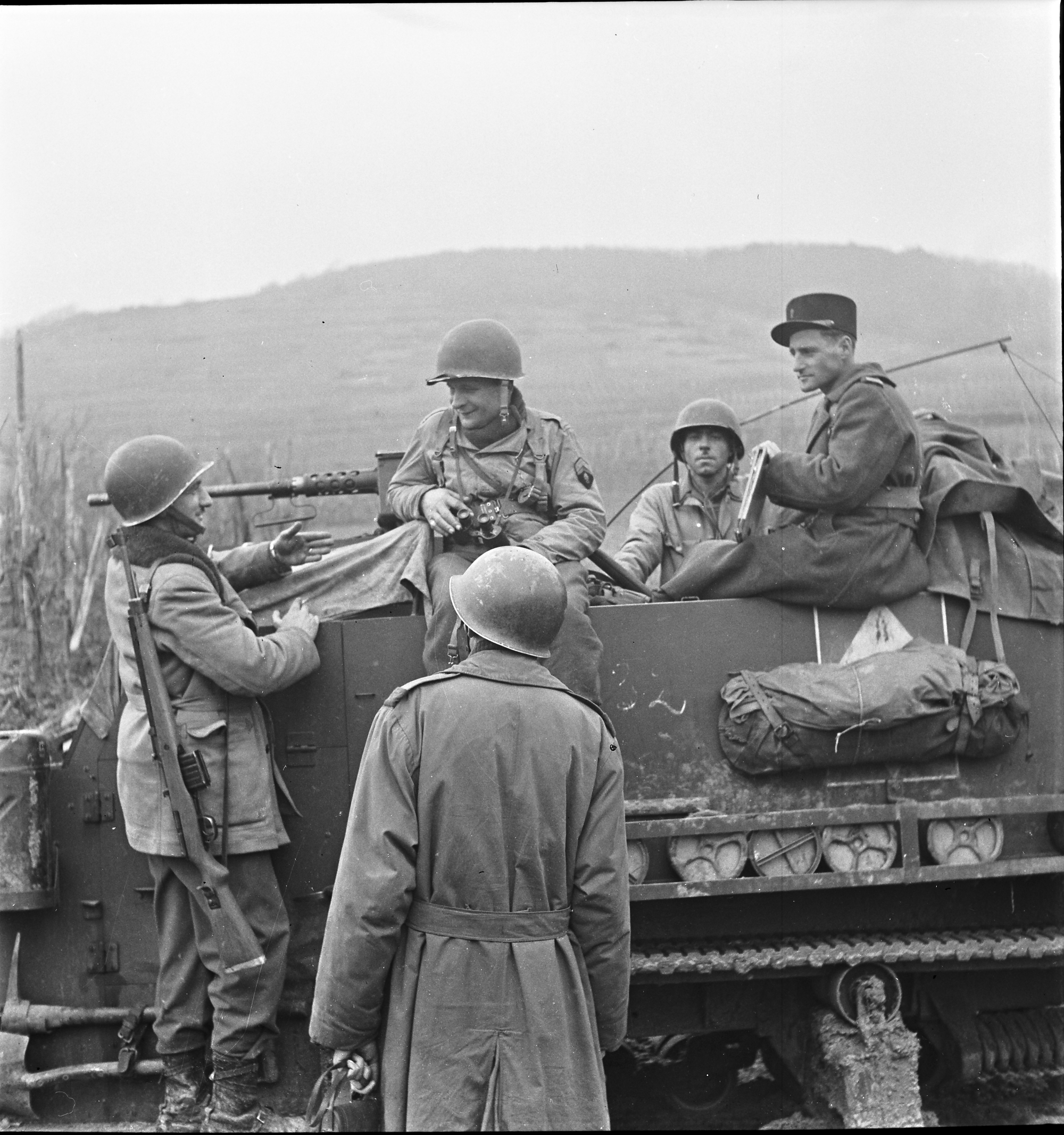
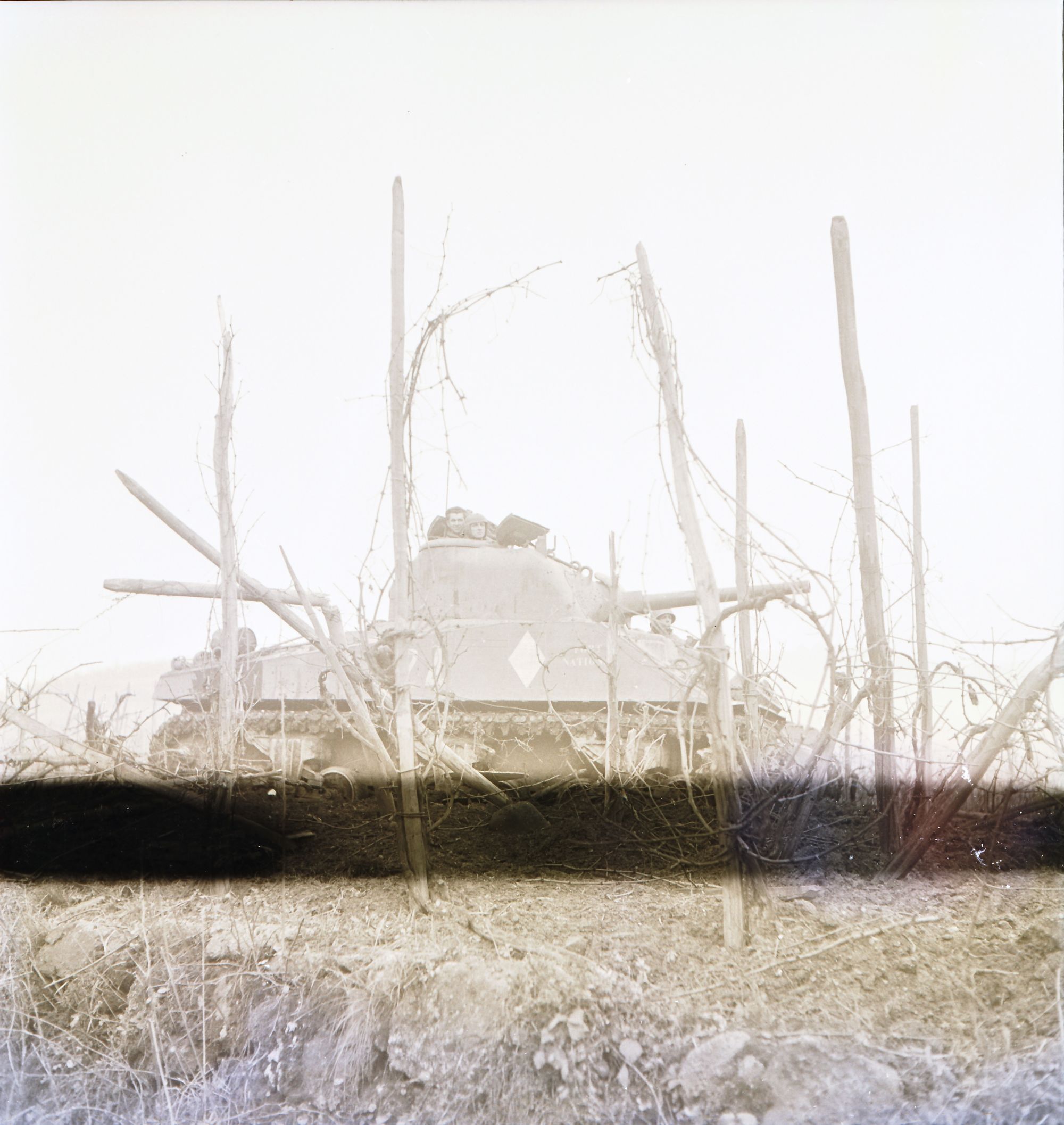
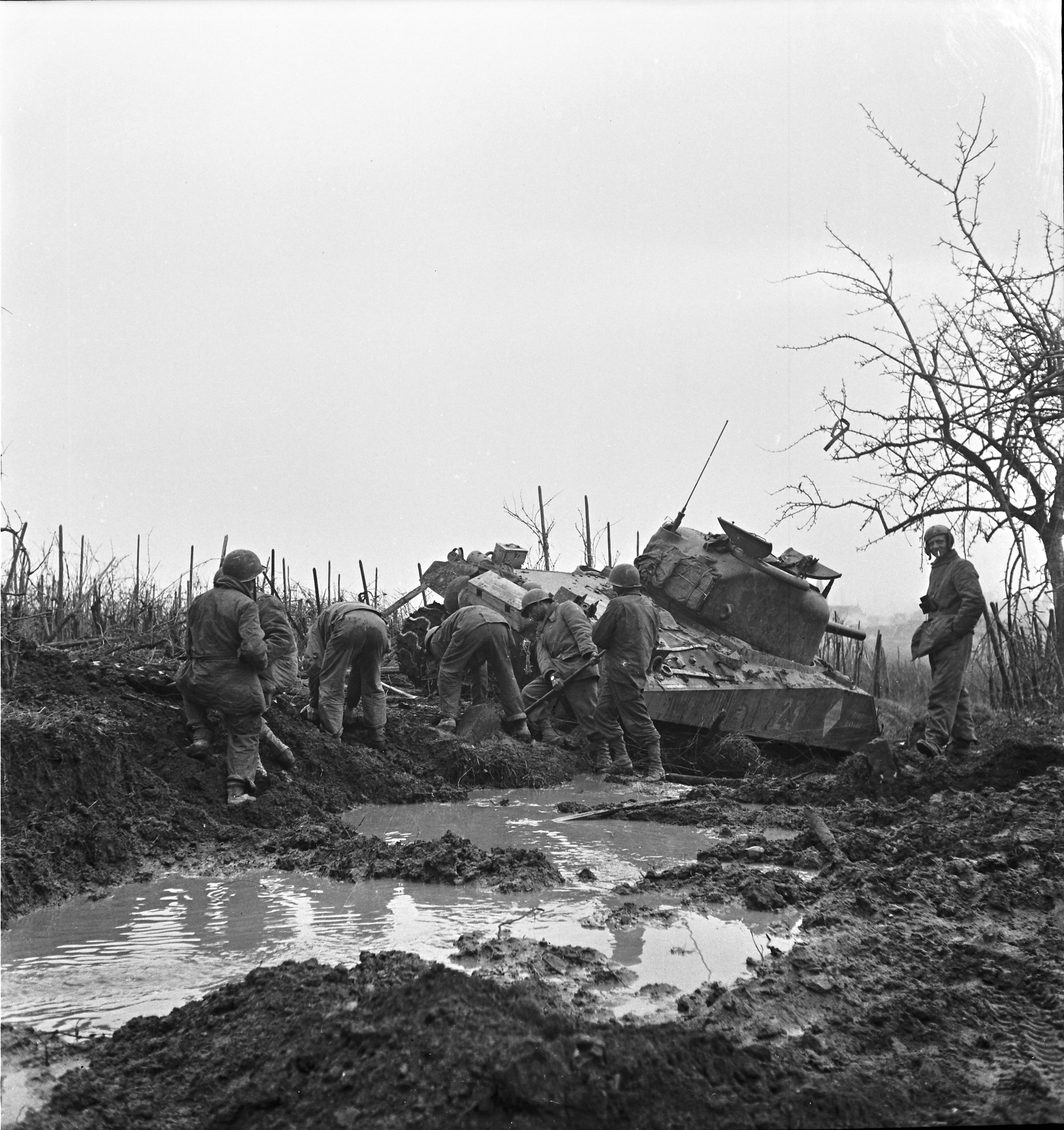
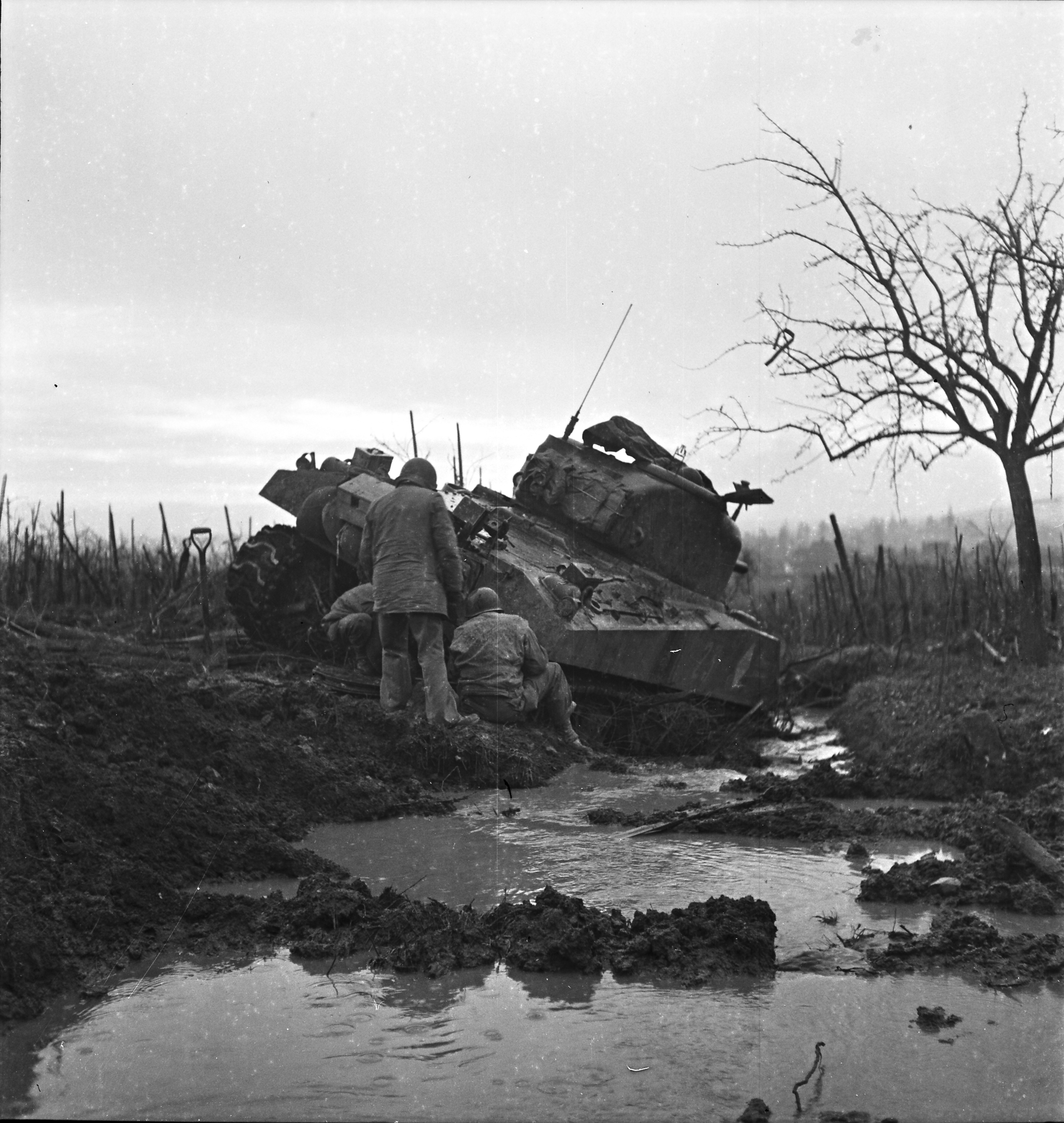
M8. A French tank in the vines. Un char français dans les vignes. M9. M10. Bogged down tanks. Chars embourbés.
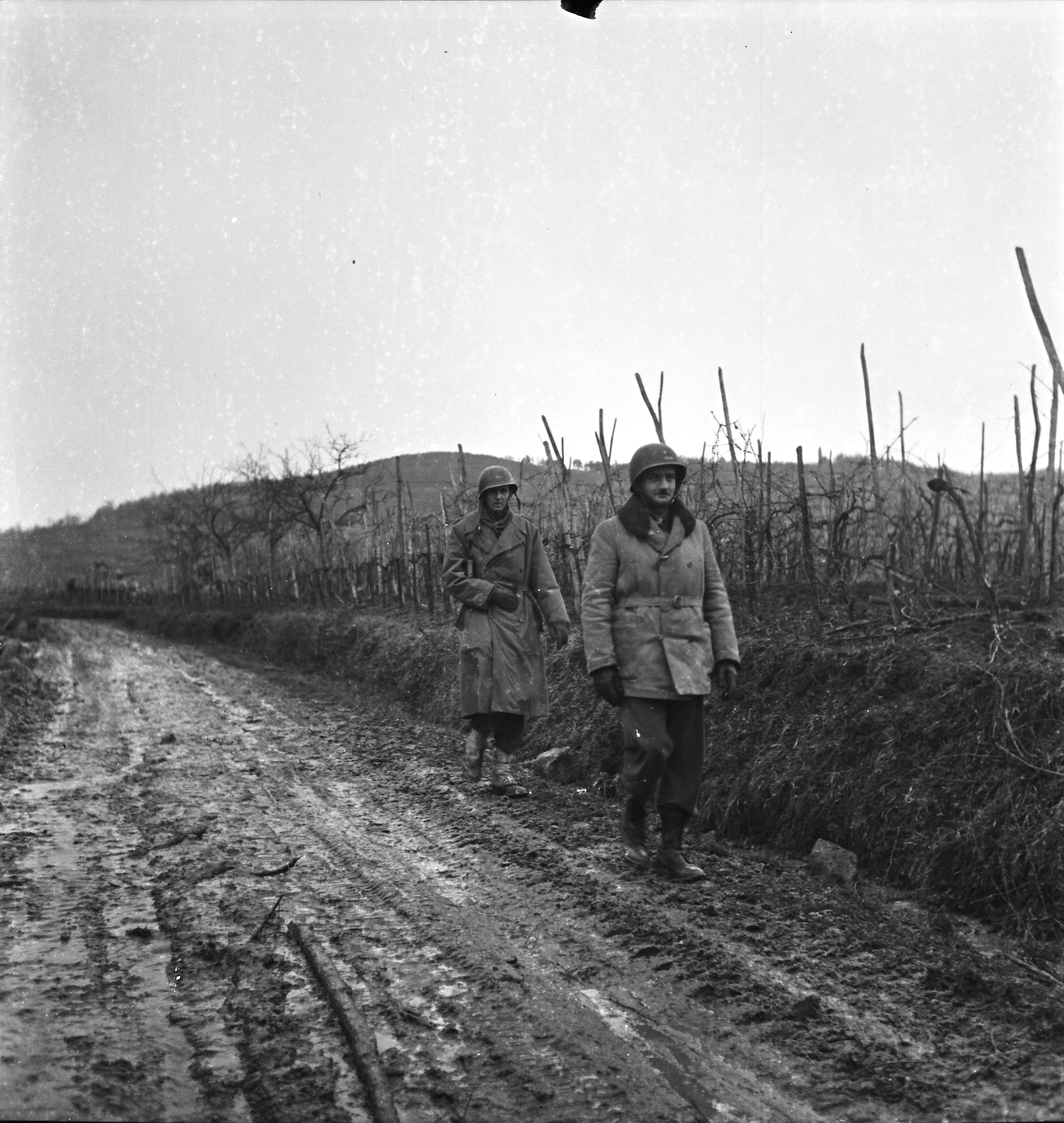
Kienzheim
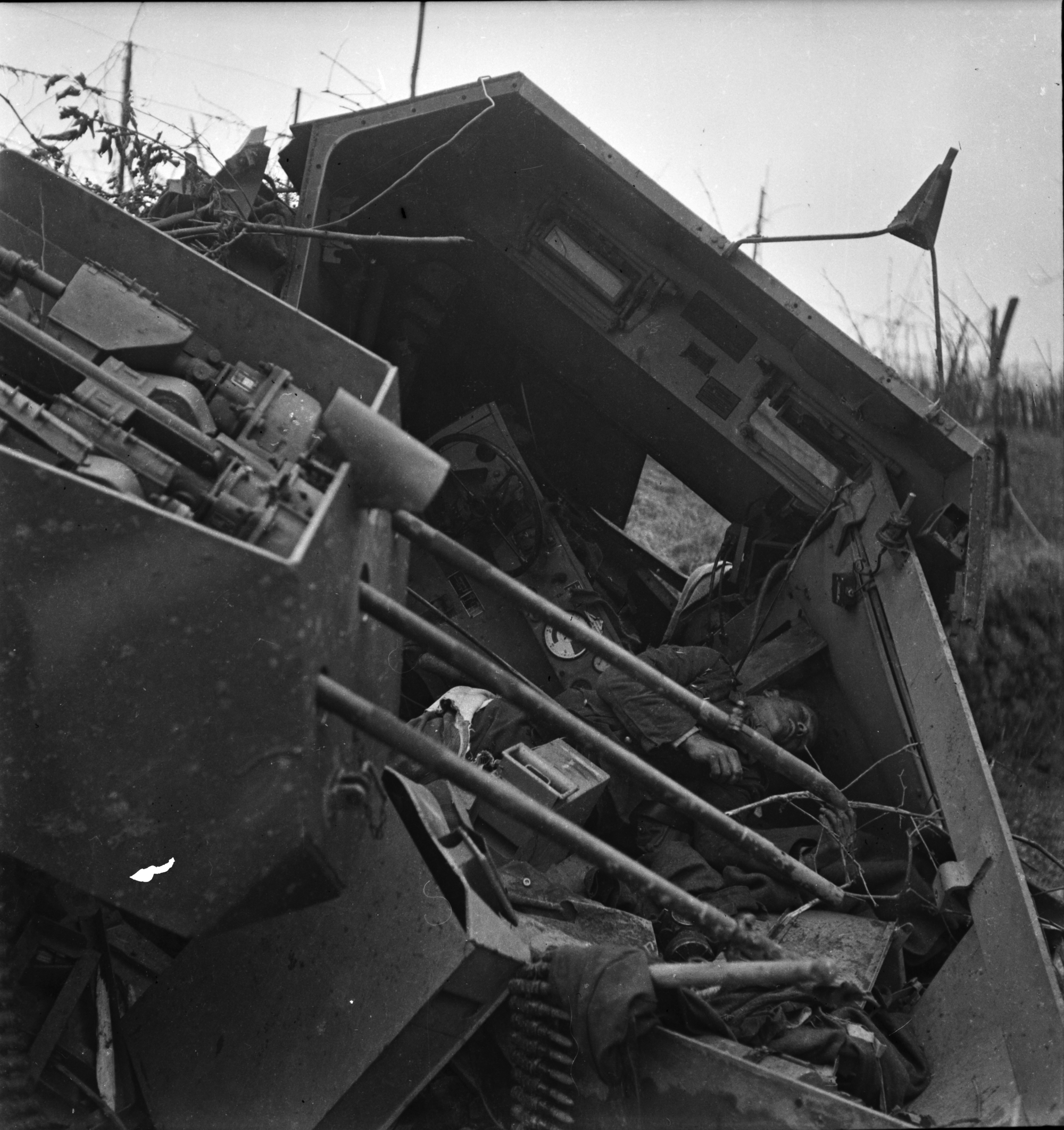
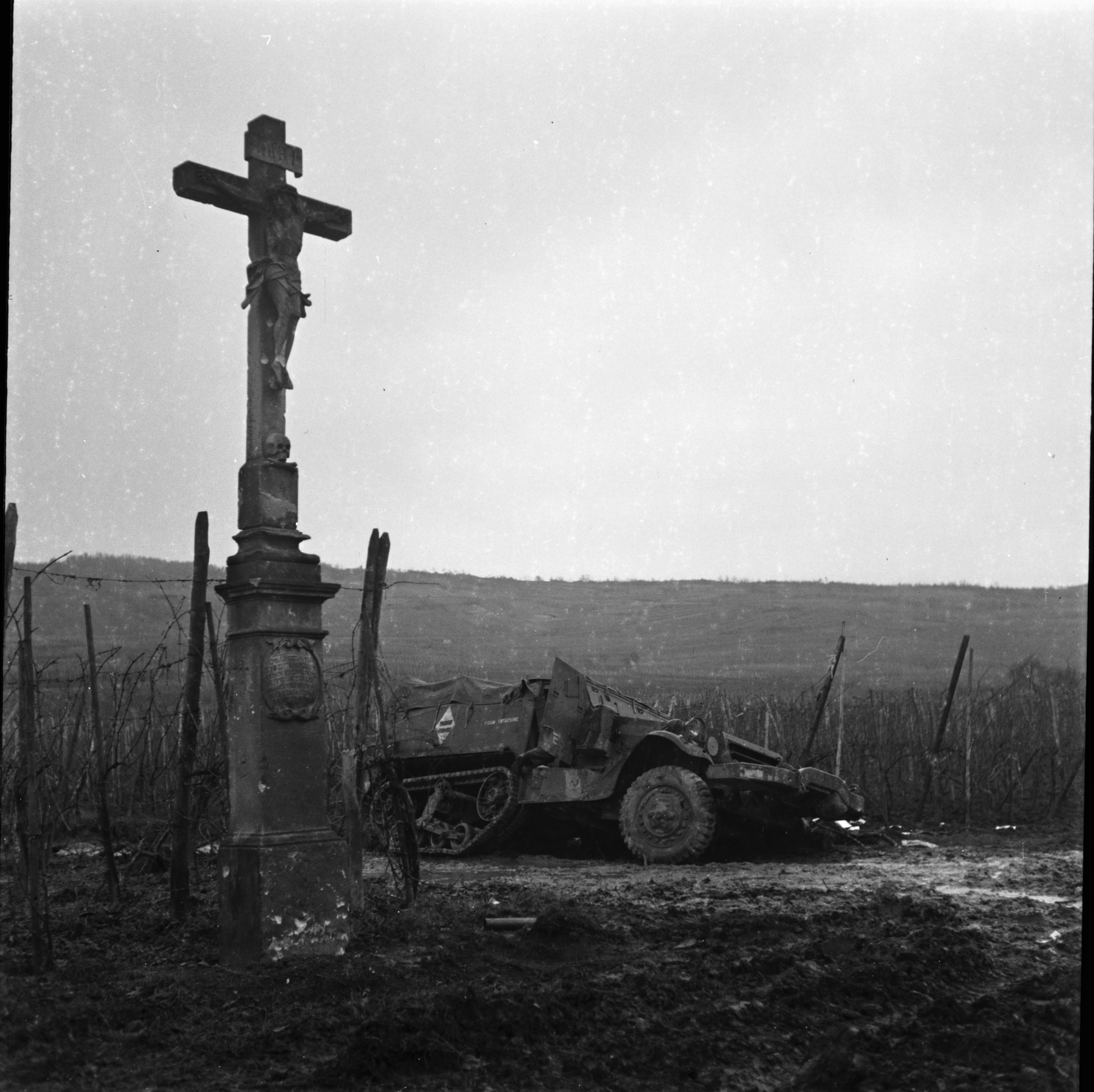
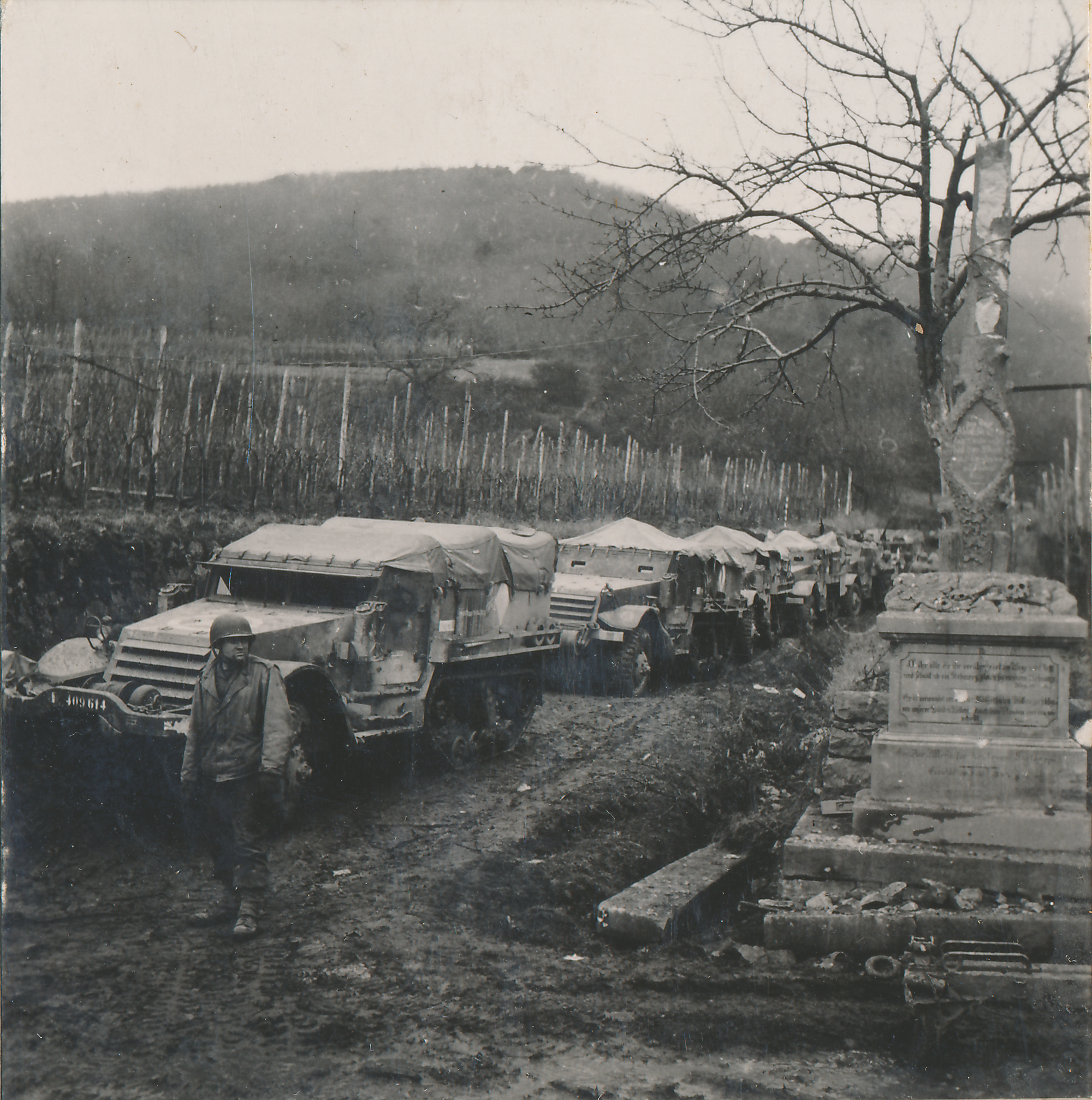
M12. A destroyed German armoured vehicle. Une auto mitrailleuse allemande démolie. N1. At the entrance of Kienzheim, an armoured vehicle on duty. A l’entrée de Kienzheim une auto mitrailleuse en faction. N2. More await behind it. Derrière, d'autres attendent.
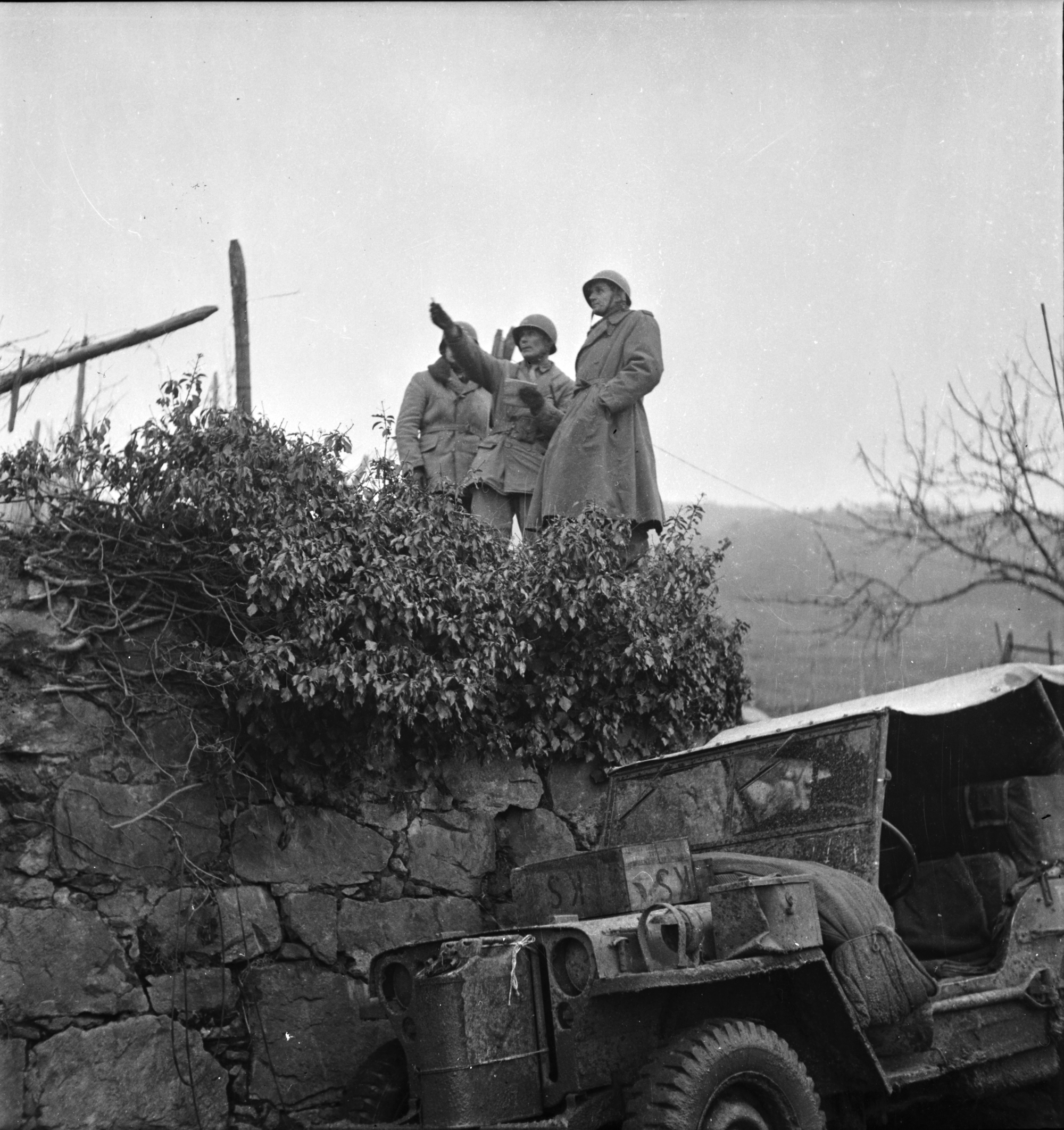
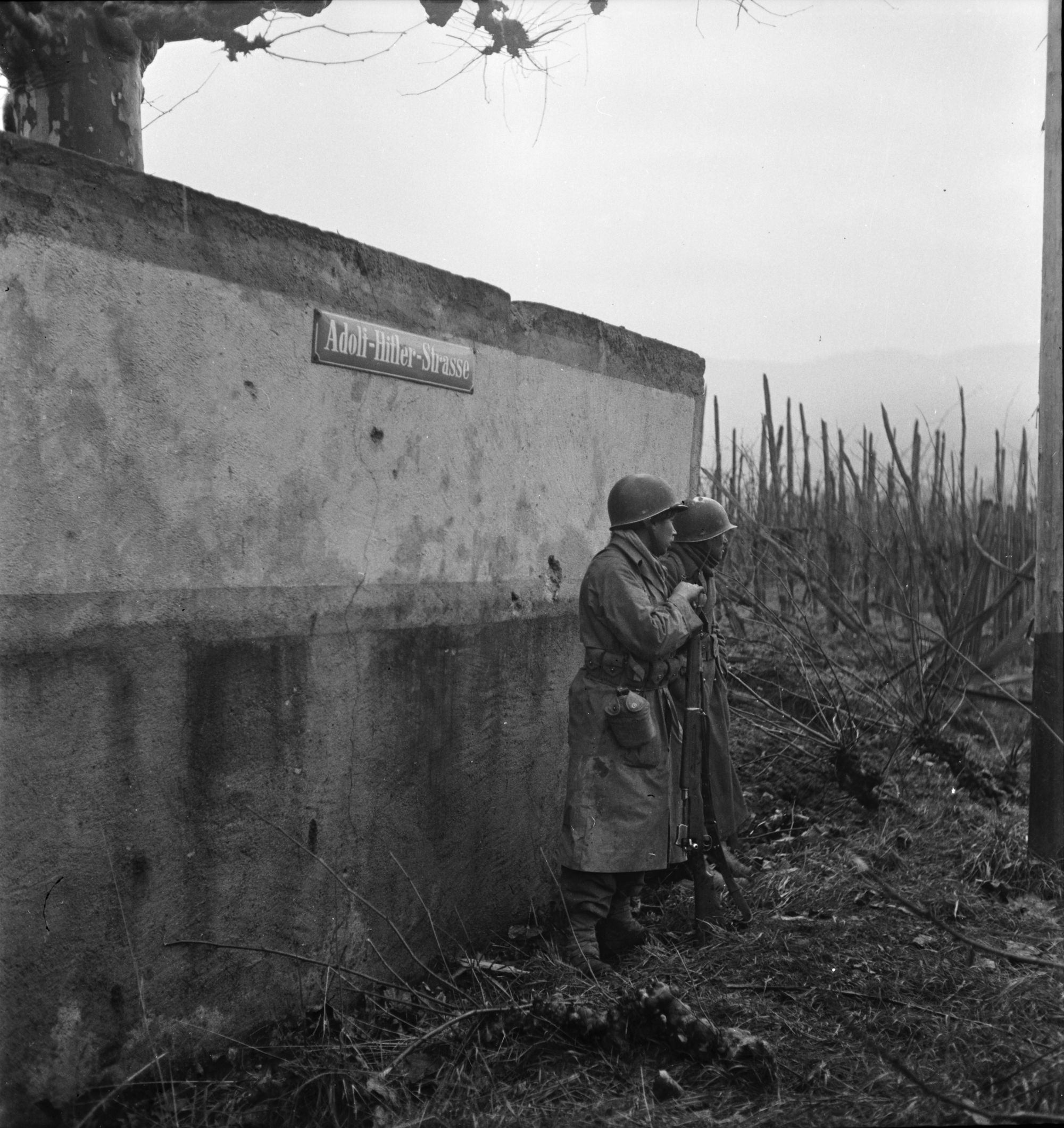
N3. A captain surveils the village from an elevate vineyard. Du haut d’une vigne surélevée un capitaine examine le village. N4. Where you find like everywhere an Adolf Hitler Street, which will change, and a vineyard, which will stay. Où l’on trouve comme partout la rue A. Hitler qui changera et les vignes qui resteront.
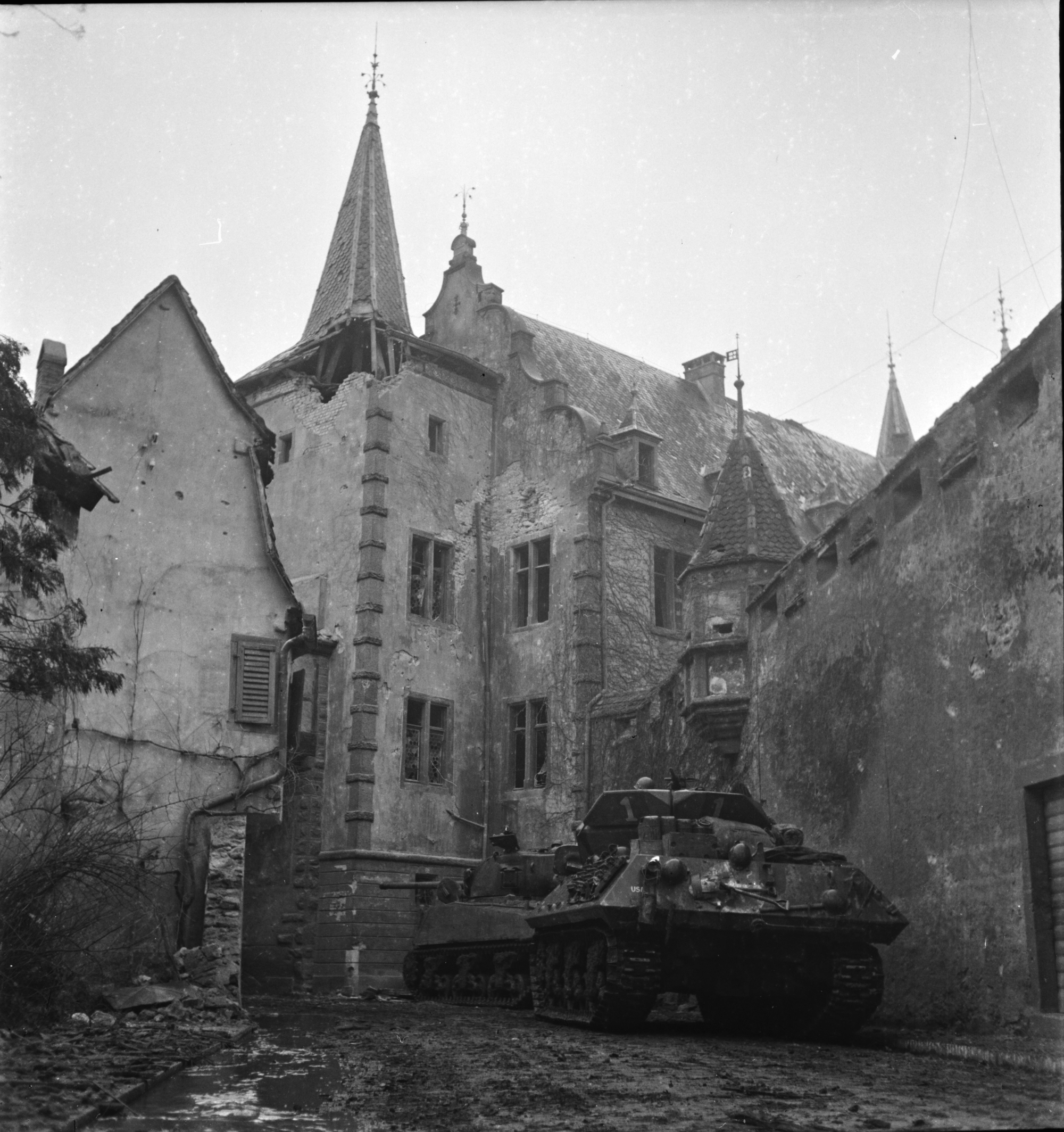
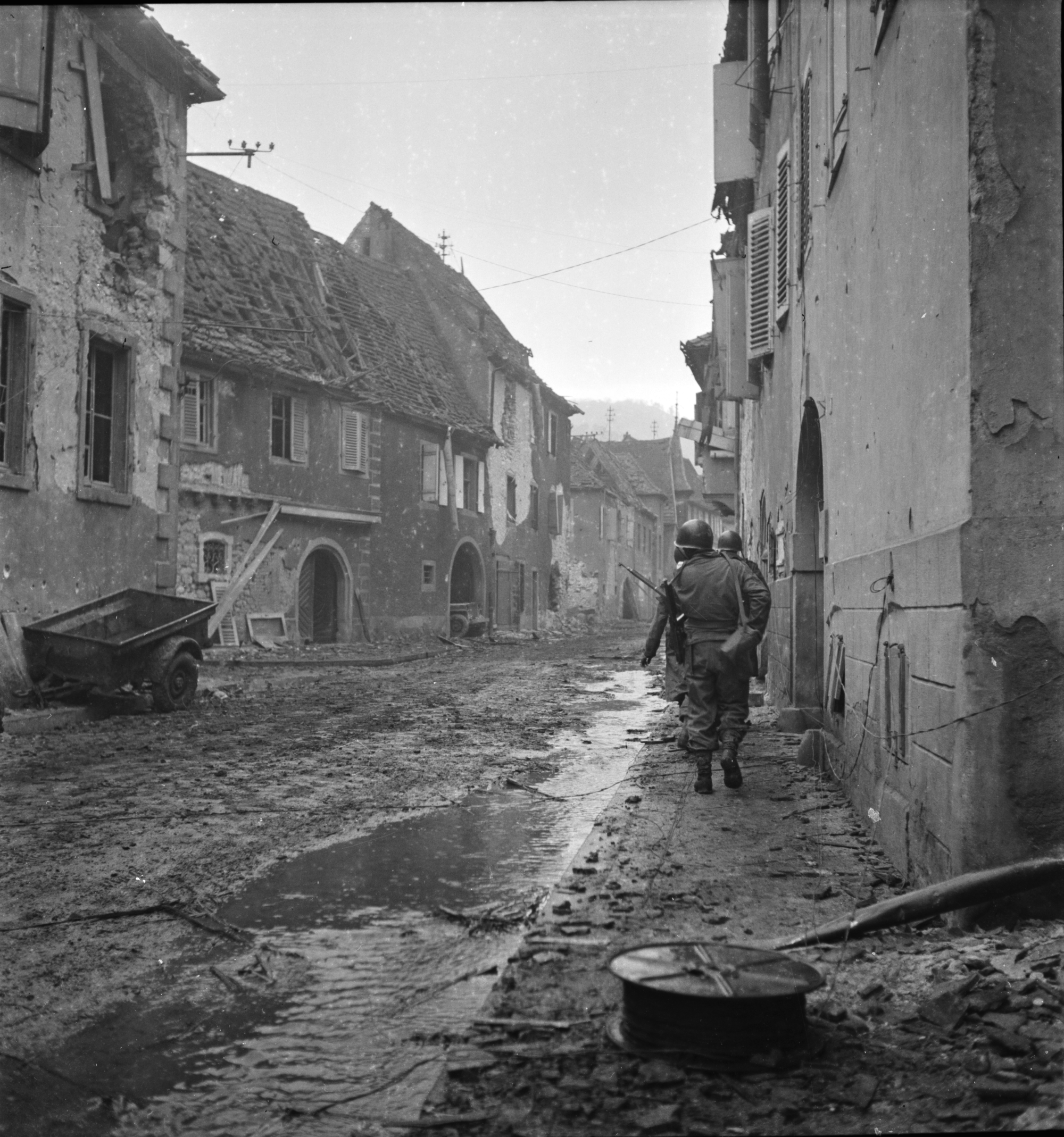
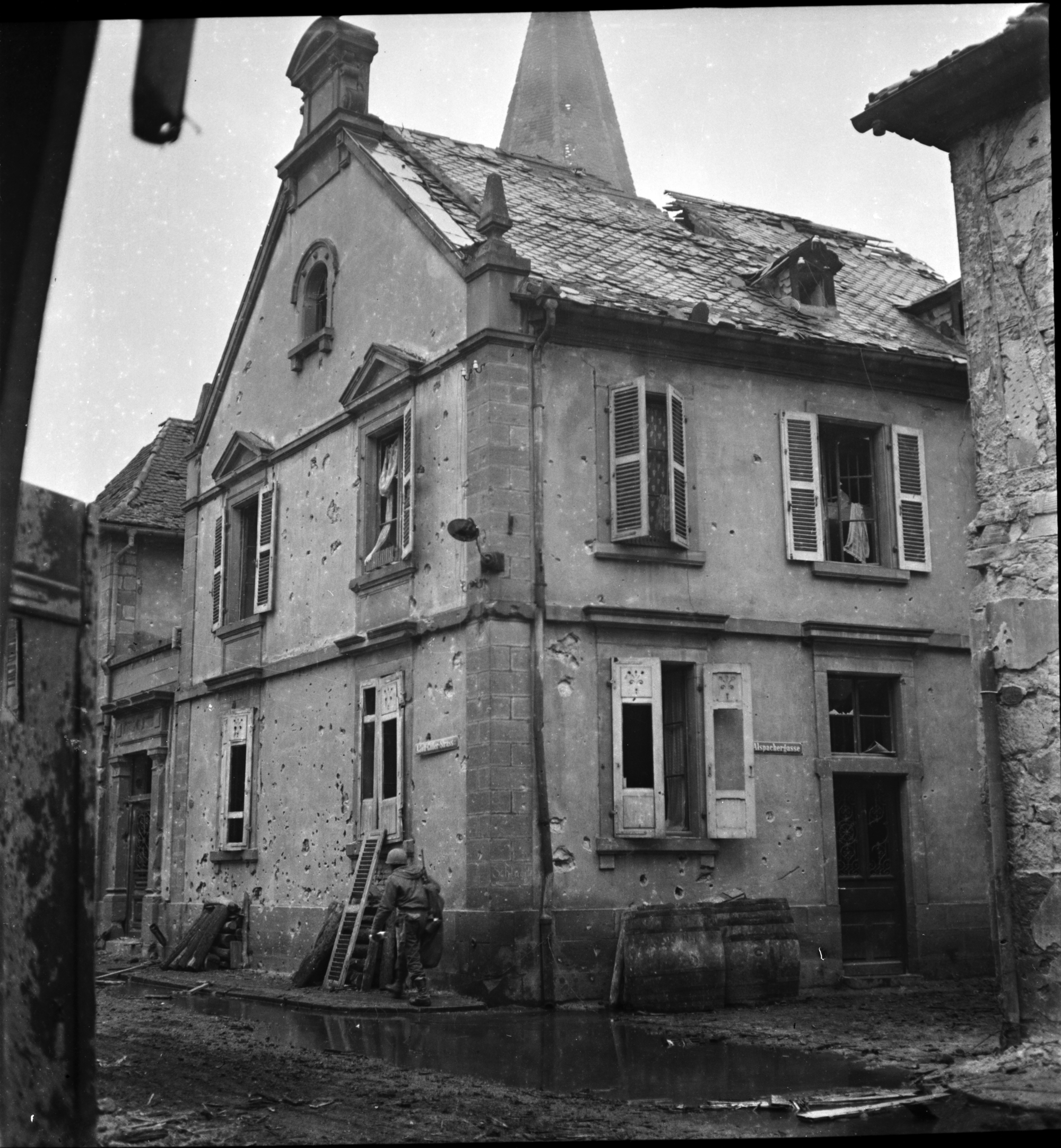
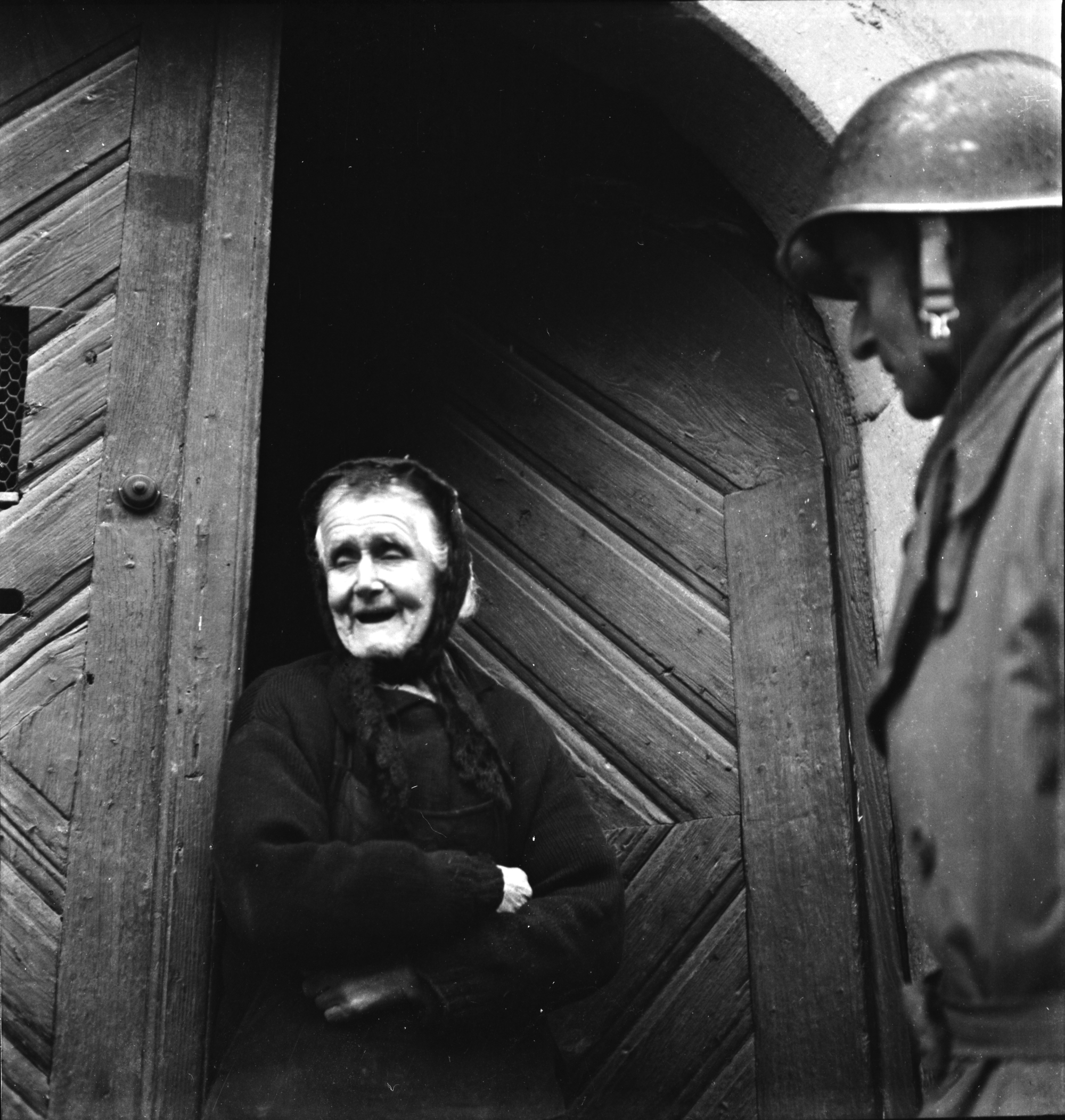
N7. We check houses. On visite les maisons. N8. And civilians come out of cellars. Et les civils sortent des caves.
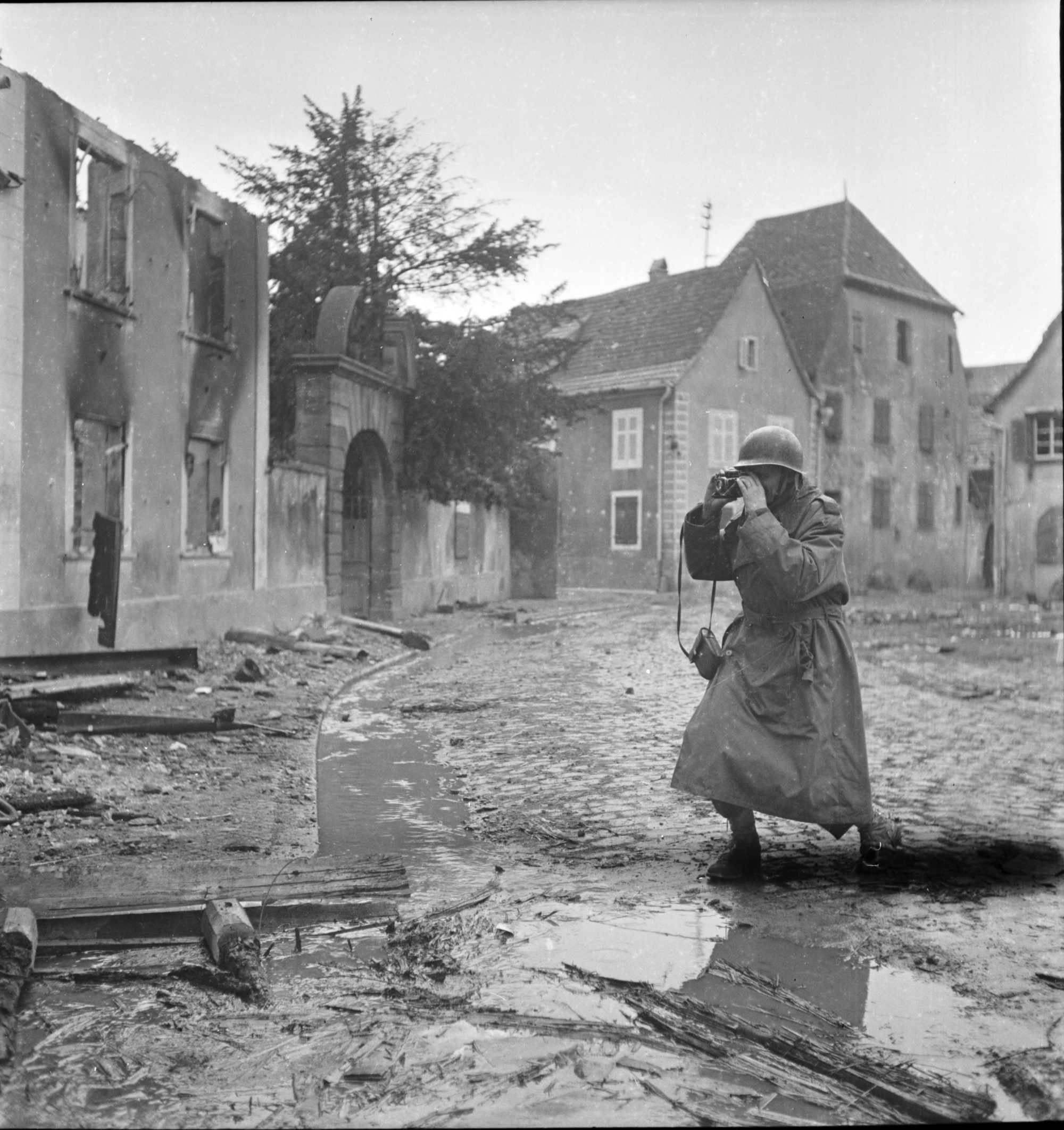
N9. N10. (panorama) Kienzheim town square has suffered. The car on the right was crushed by a tank. (panoramique) La place de Kienzheim a souffert. La voiture de droite a été écrasée par un char.
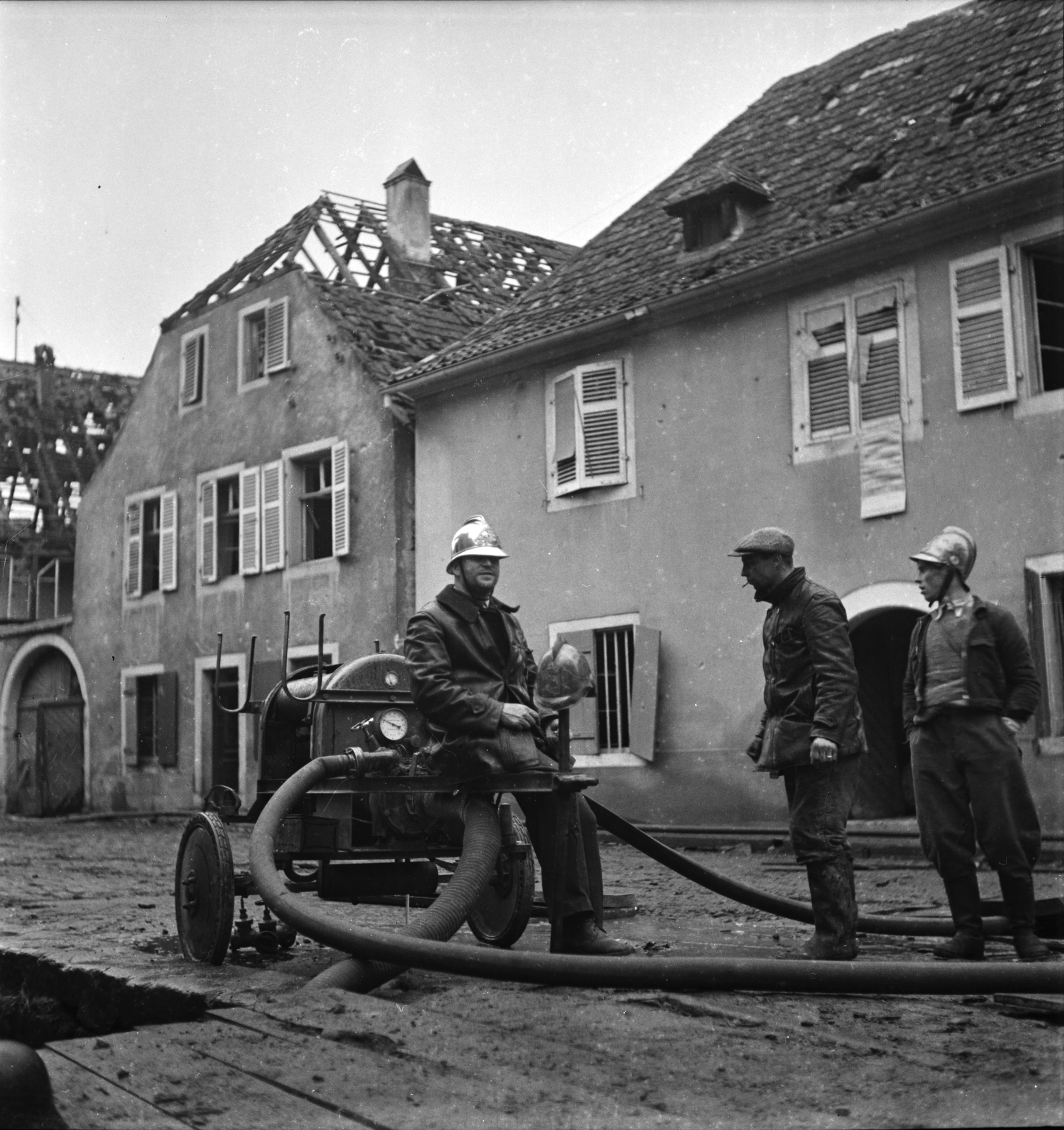
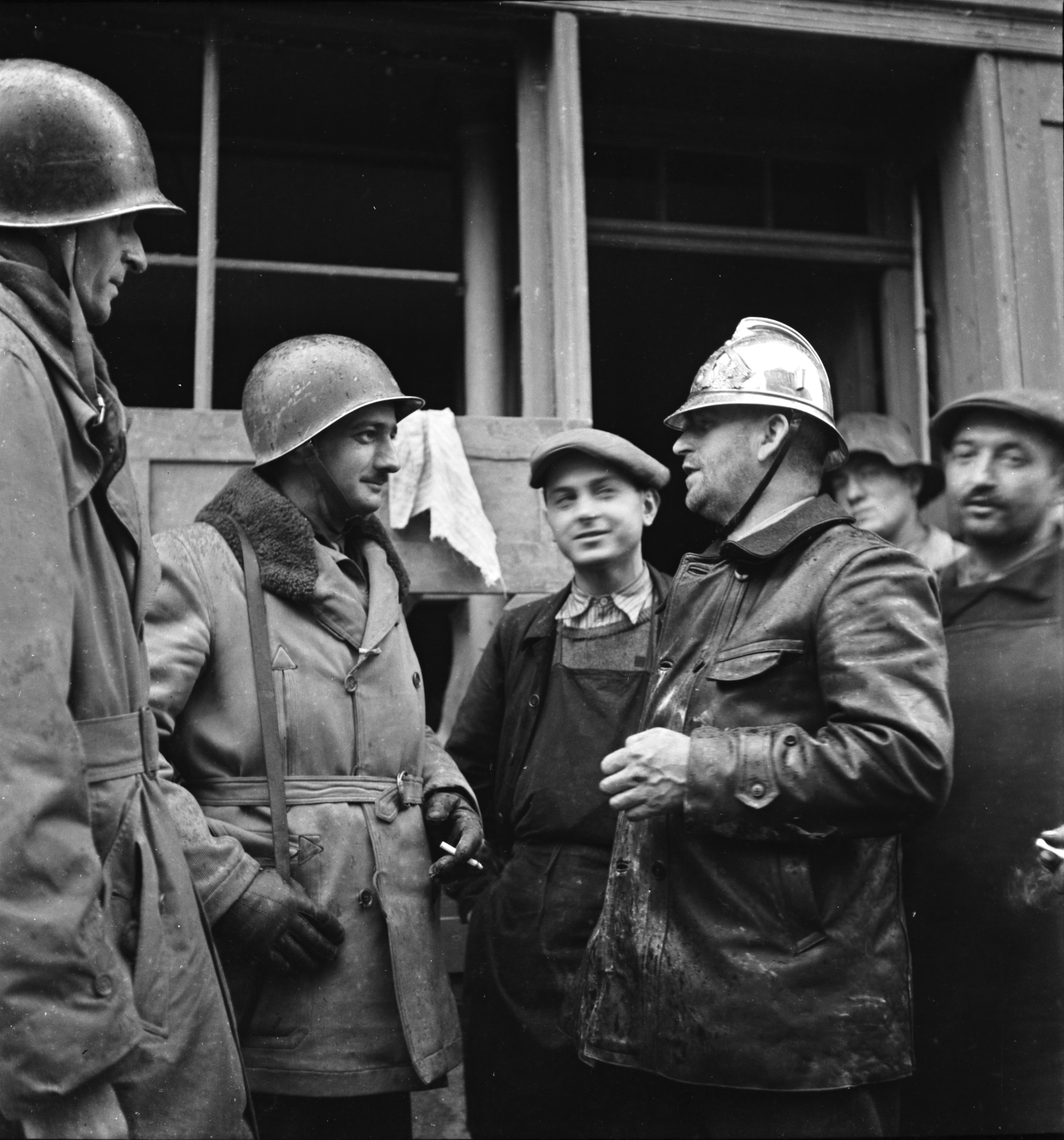
N11. N12. For three days bombs fell more or less continuously. Firefighters never ceased protecting their village. They wear the old French helmet again, once prohibited. Pendant trois jours les bombes sont tombées plus ou moins denses. Les pompiers n’ont pas cessé de protéger leur village de l’incendie. Ils ont aussi récupéré le vieux casque français, interdit !
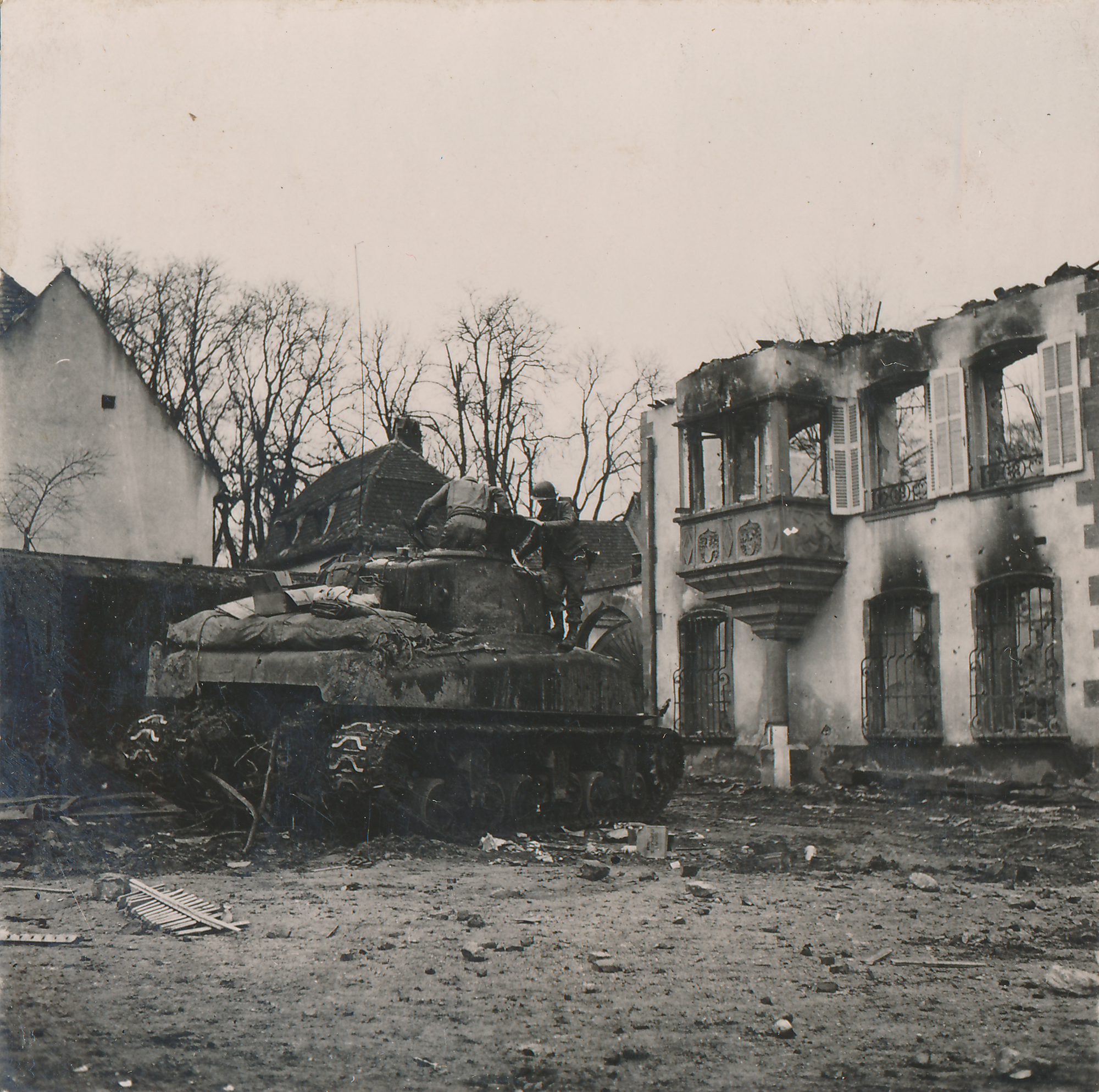
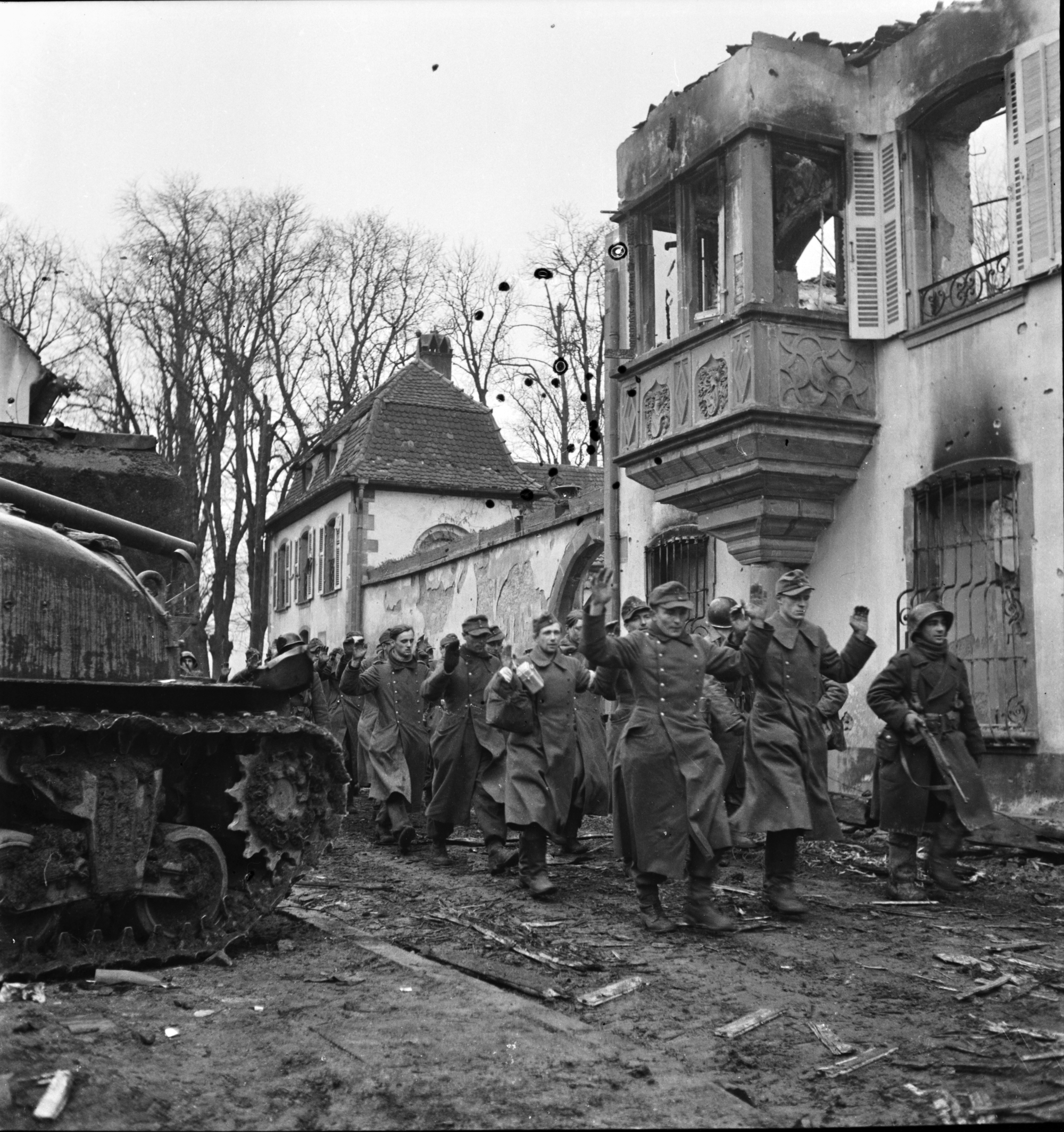
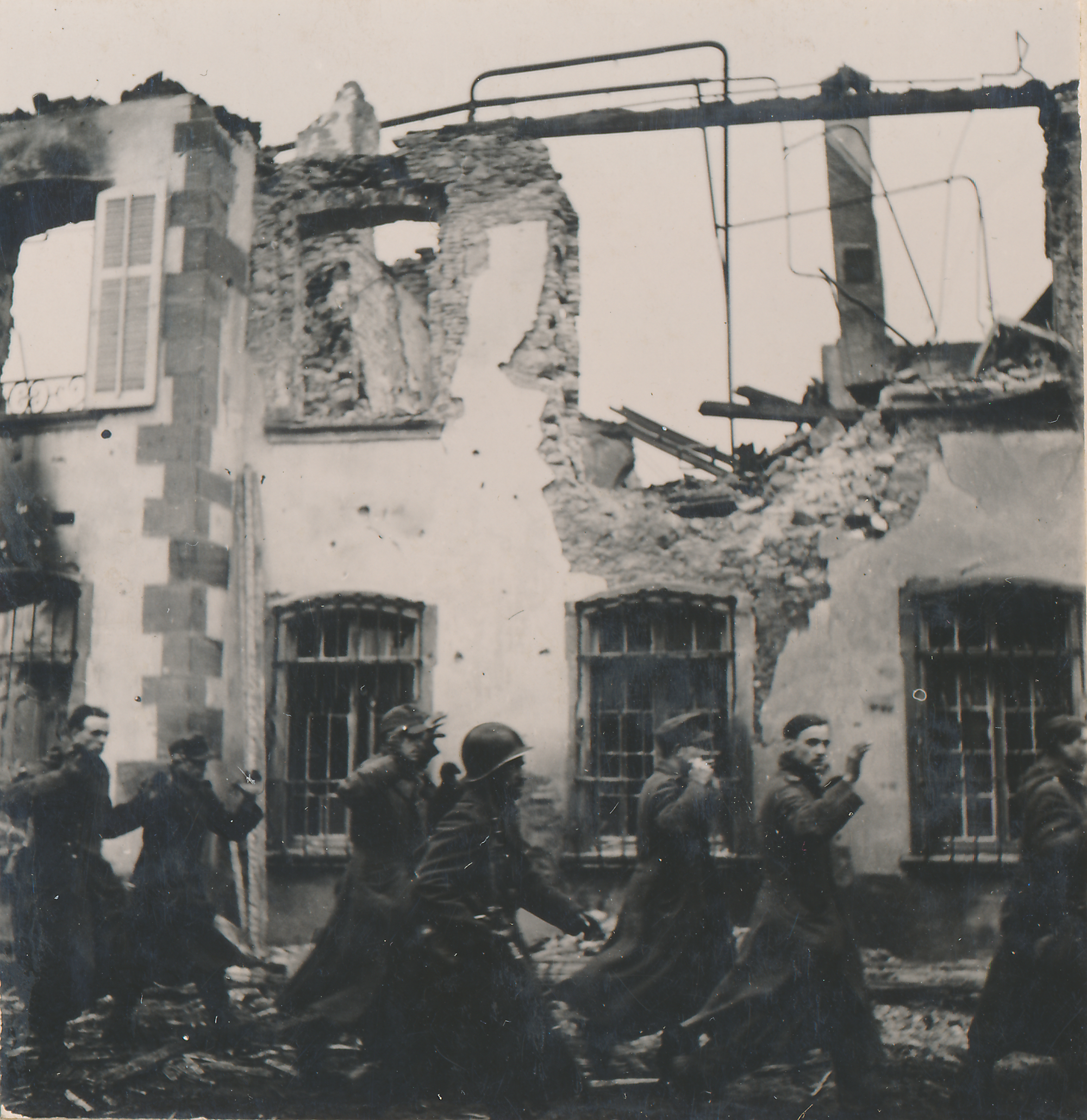
O1. A French Shermann tank reaches the village's exit toward Kaisersberg. Un char Shermann français atteint la sortie du village vers Kaisersberg. Le château a brulé. O2. In that moment prisoners captured in the last few houses arrive... A ce moment arrivent les prisonniers faits dans les dernières maisons... O3. ... and are paraded in the streets of Kienzheim. ... et défilent dans les rues de Kienzheim.
Kaisersberg
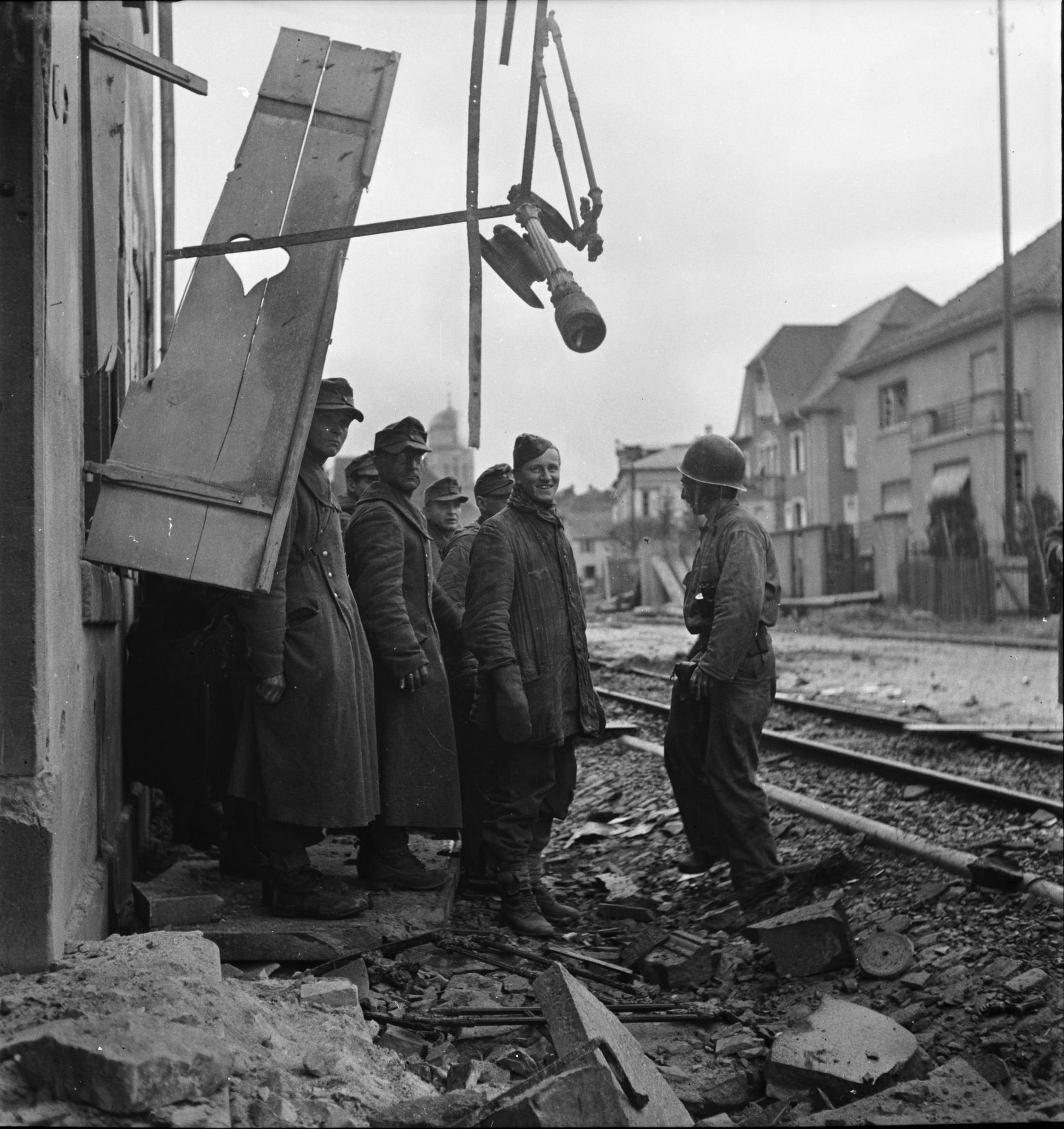
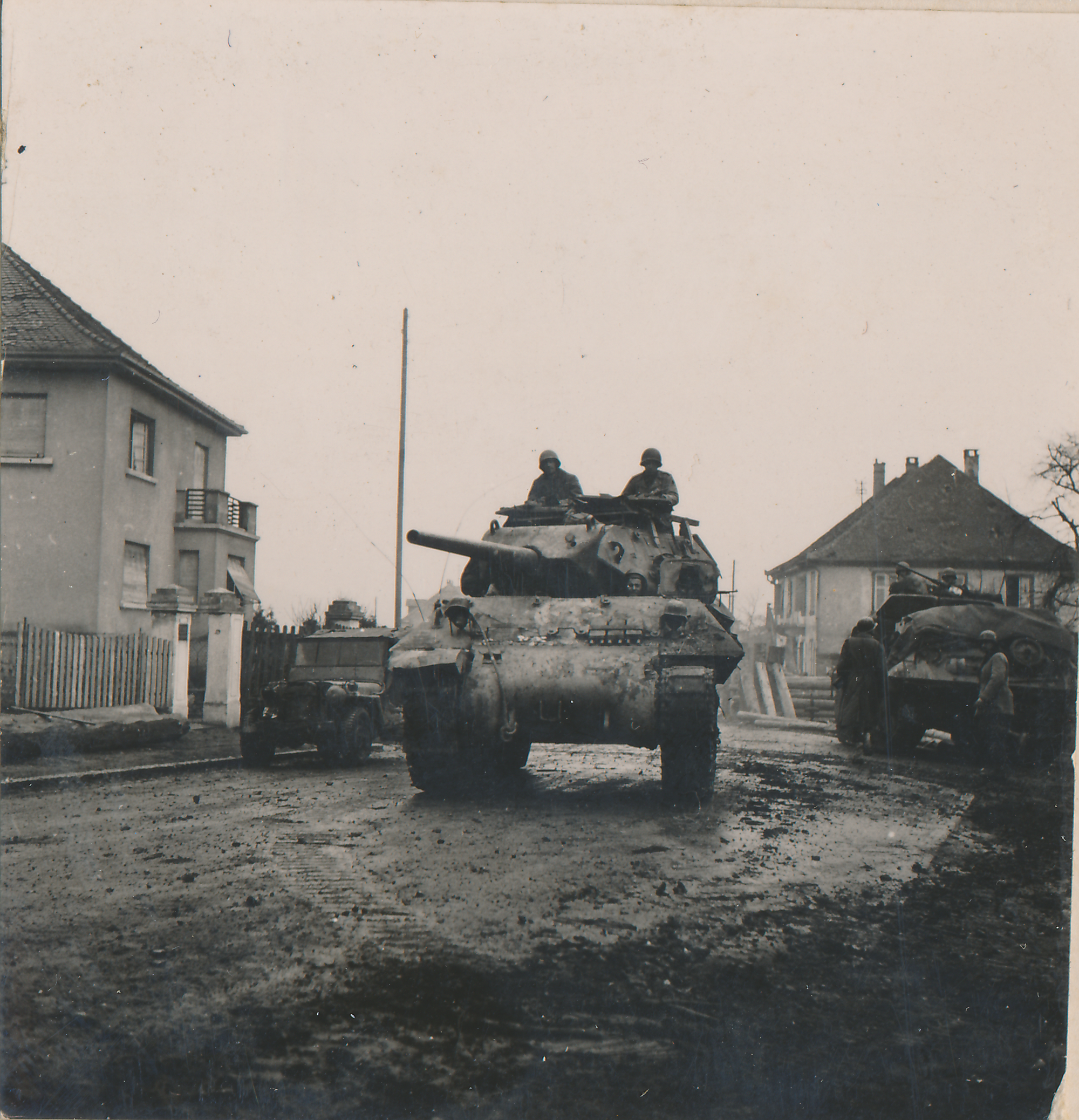
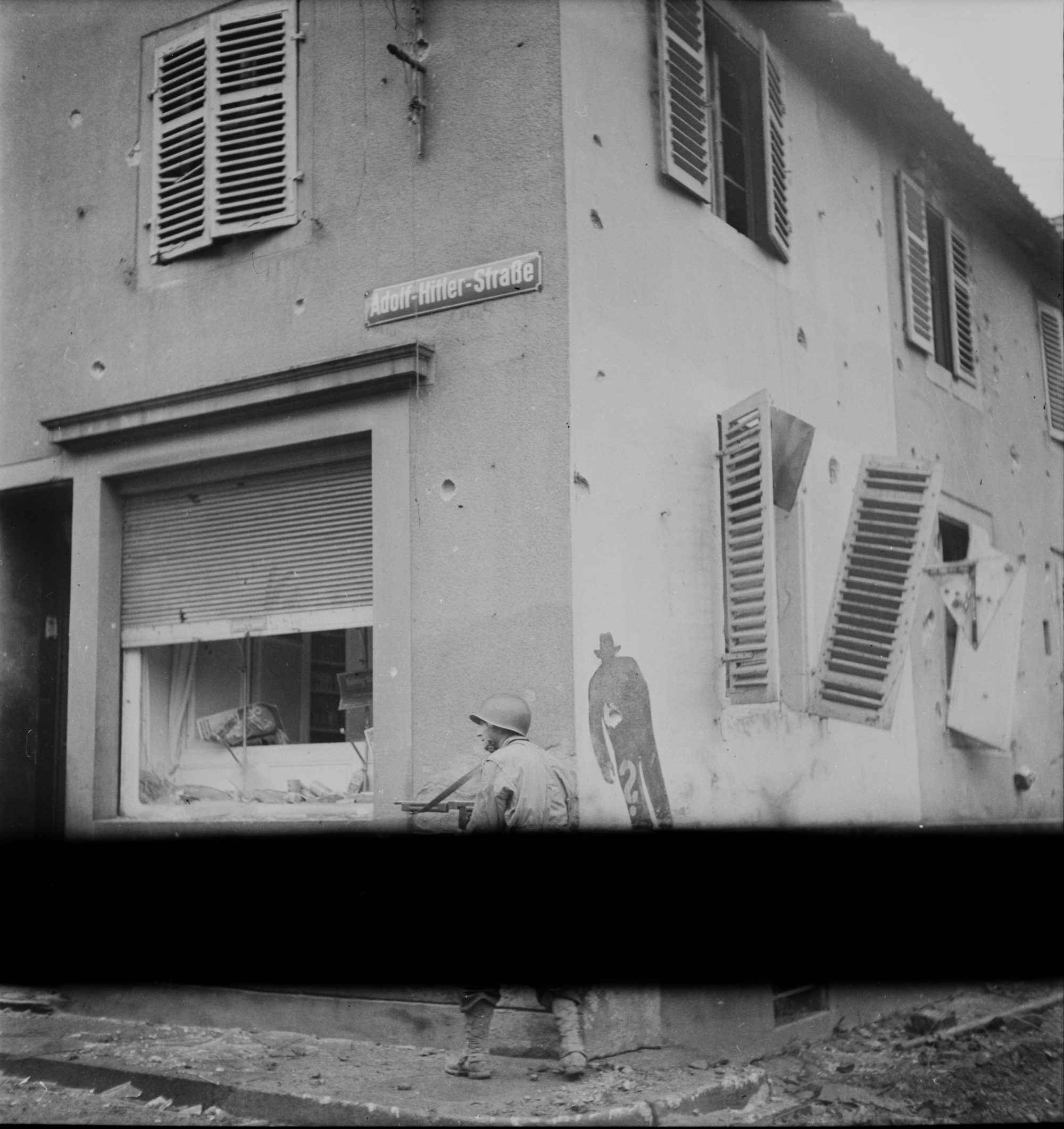
O5. The railroad track leads us to more prisoners. La voie de chemin de fer nous conduit à d’autres prisonniers. O6. Tanks enter Kaisersberg. Les chars entrent dans Kaisersberg. O7. Infantry patrol without disturbing "the man who listens on street corners." L’infanterie patrouille sans déranger « l’homme qui écoute au coin des rues »
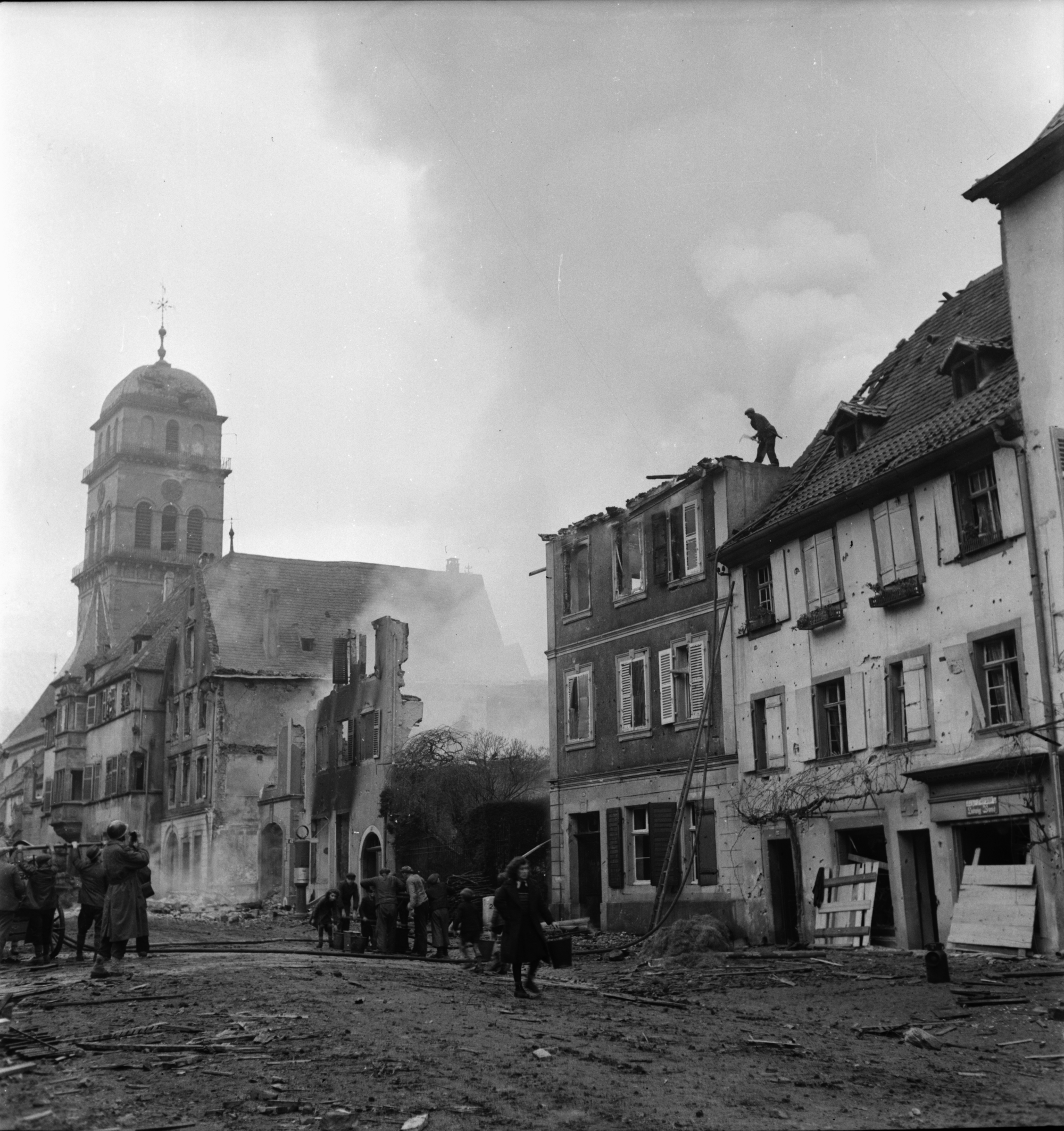
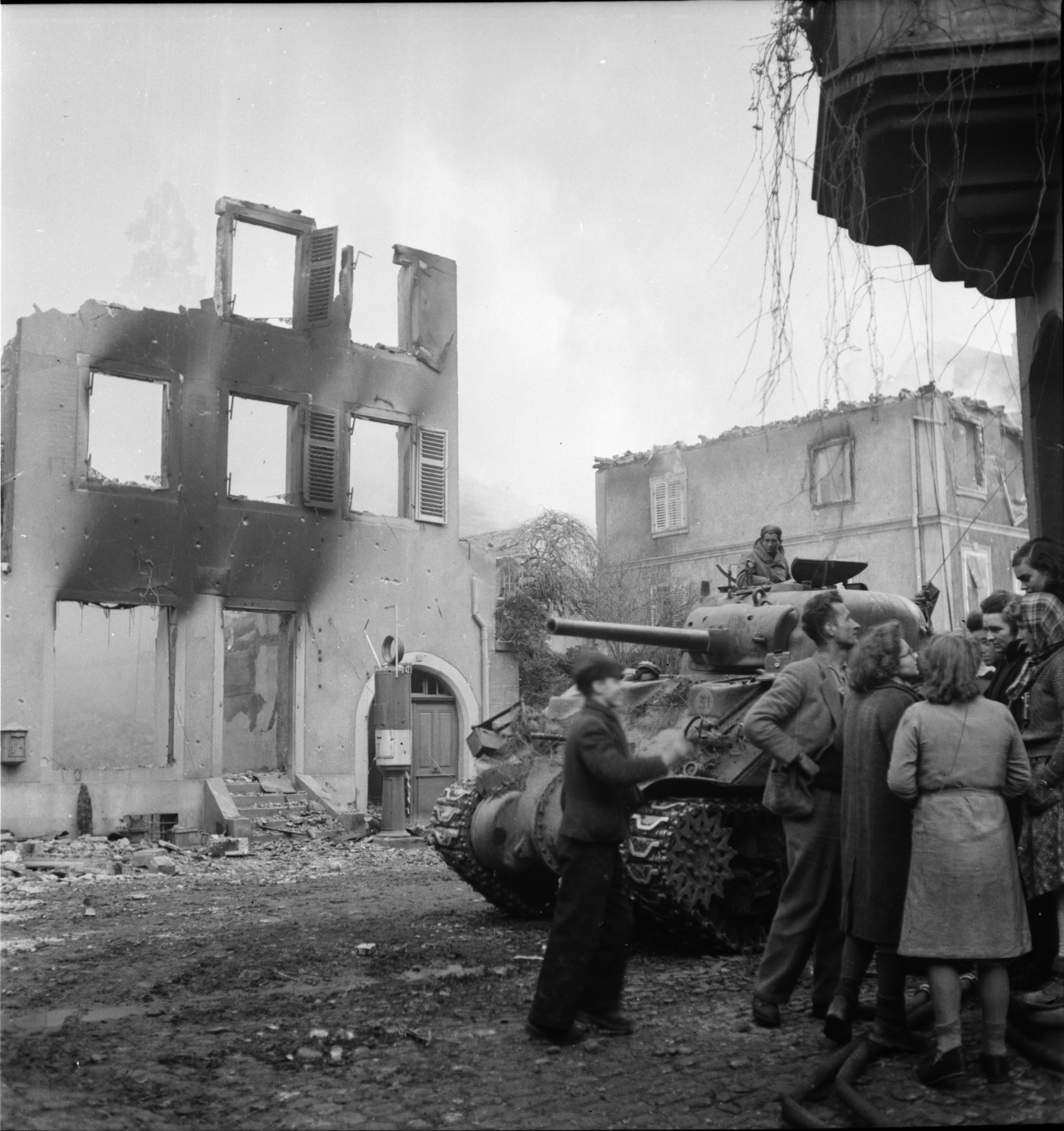
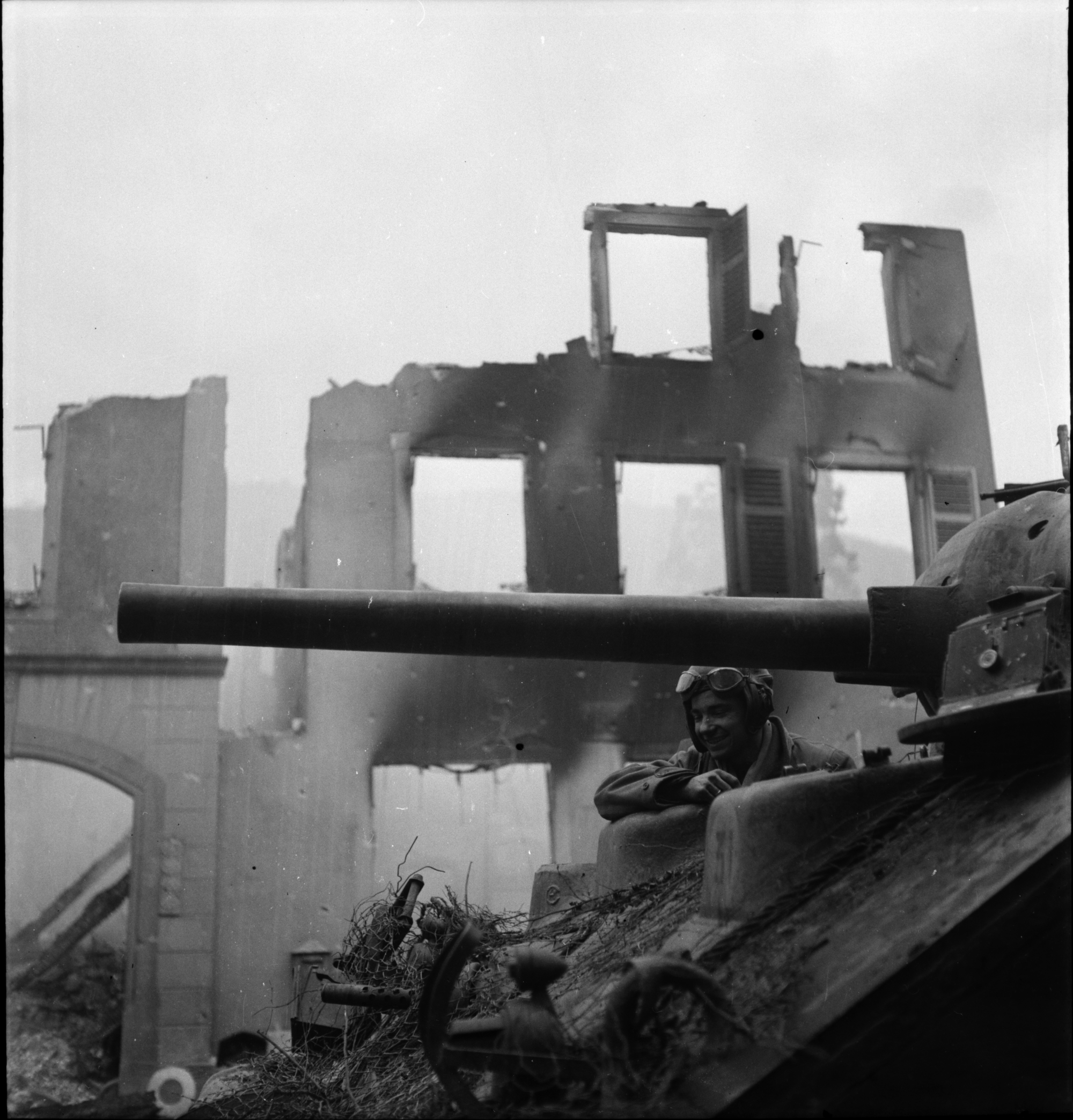
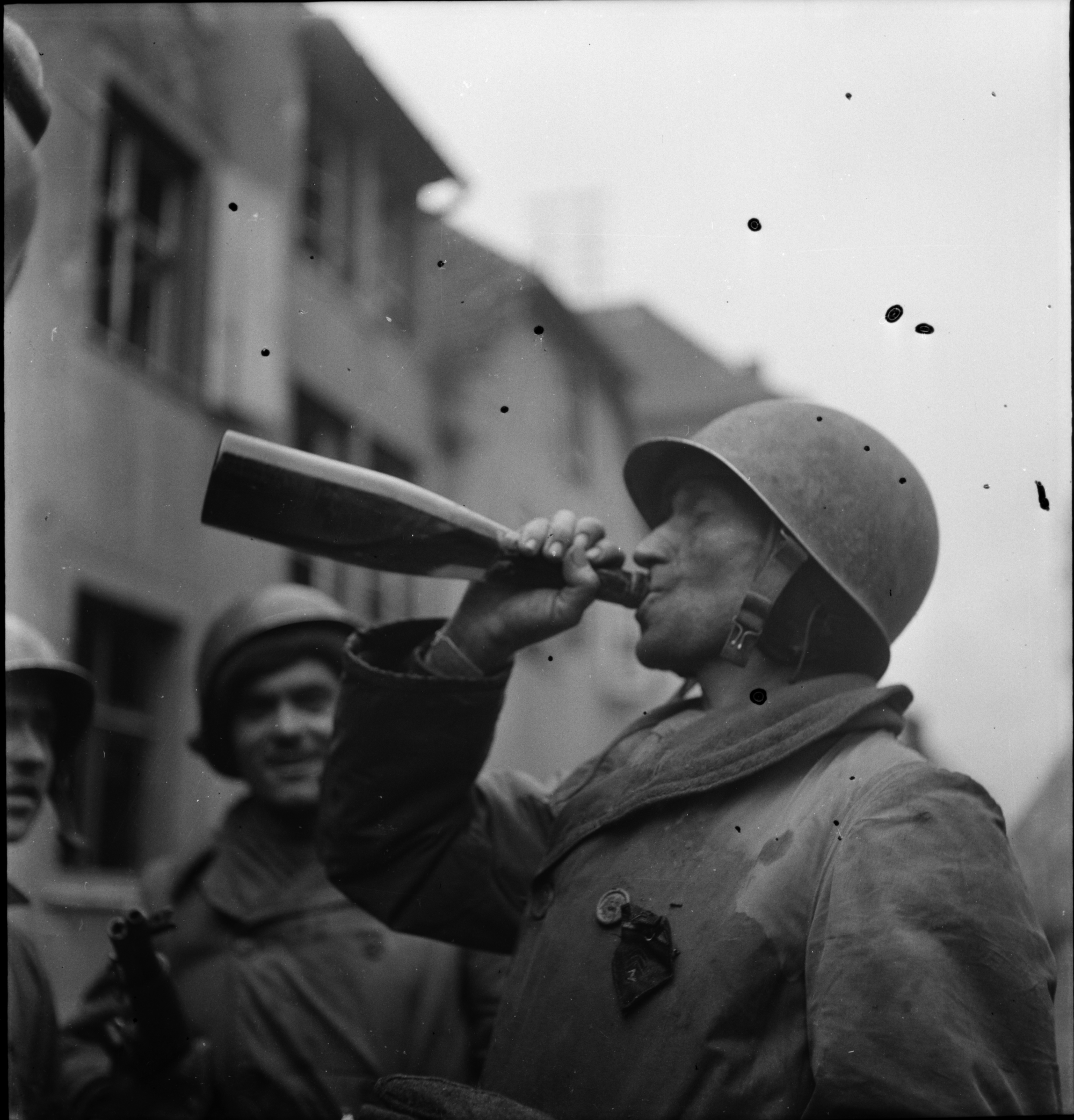
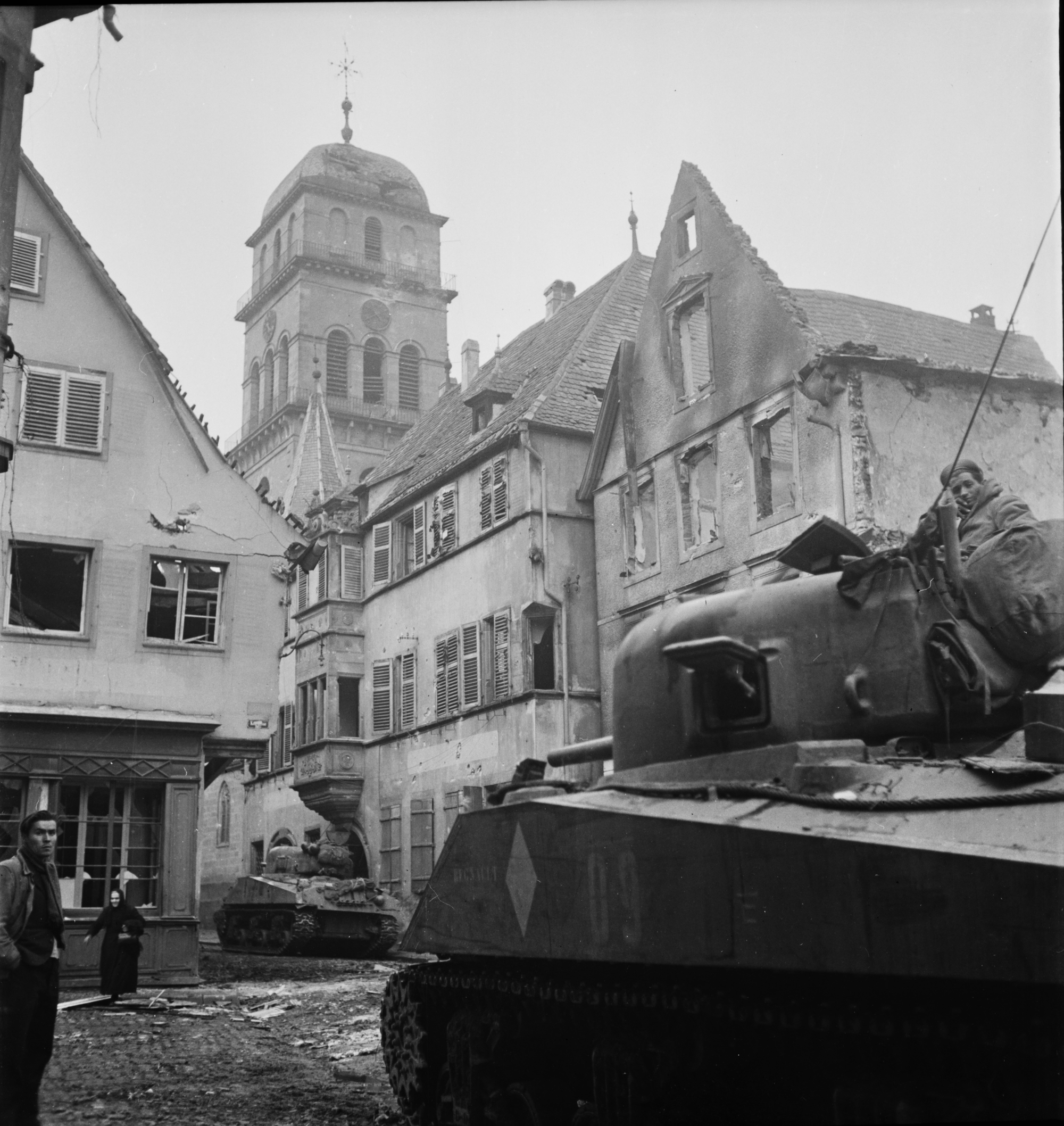
O8. In the town centre houses are burning, but Alsatians fight the fires under artillery fire. Au centre de la ville des maisons brulent mais les Alsaciens, sous les tirs d’artillerie, éteignent. O9. Tanks stop to meet up with firefighters. Civilians come out of the cellars. Les chars s’arrêtent à hauteur des pompiers. Les civils sortent des caves. O10. And they chat in front of the ruins. Et on bavarde devant les ruines. O11. Quick a bottle of Riesling. Vite une bouteille de Riesling. O12. And off on patrol again. Et on repart patrouiller plus loin.
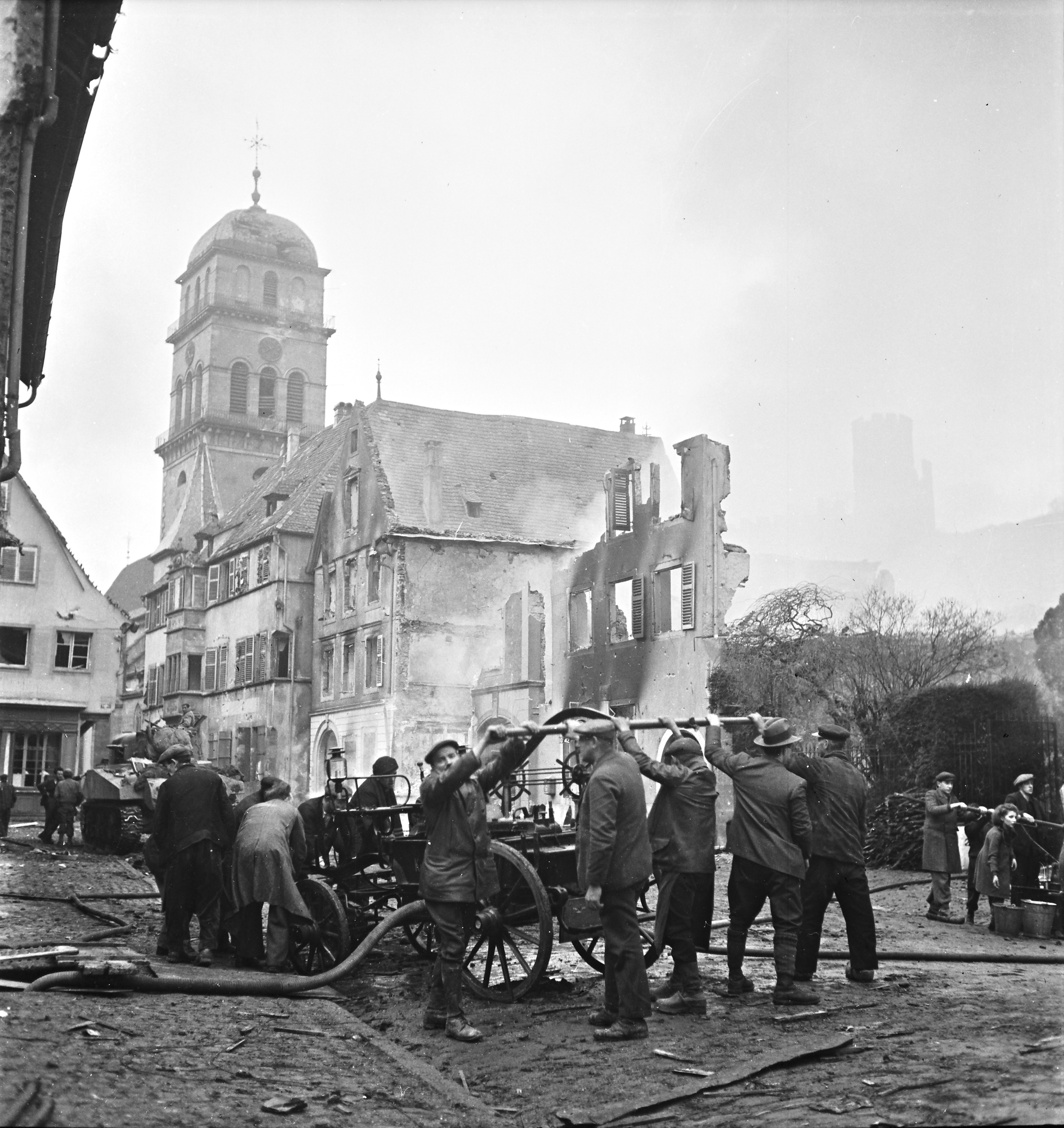
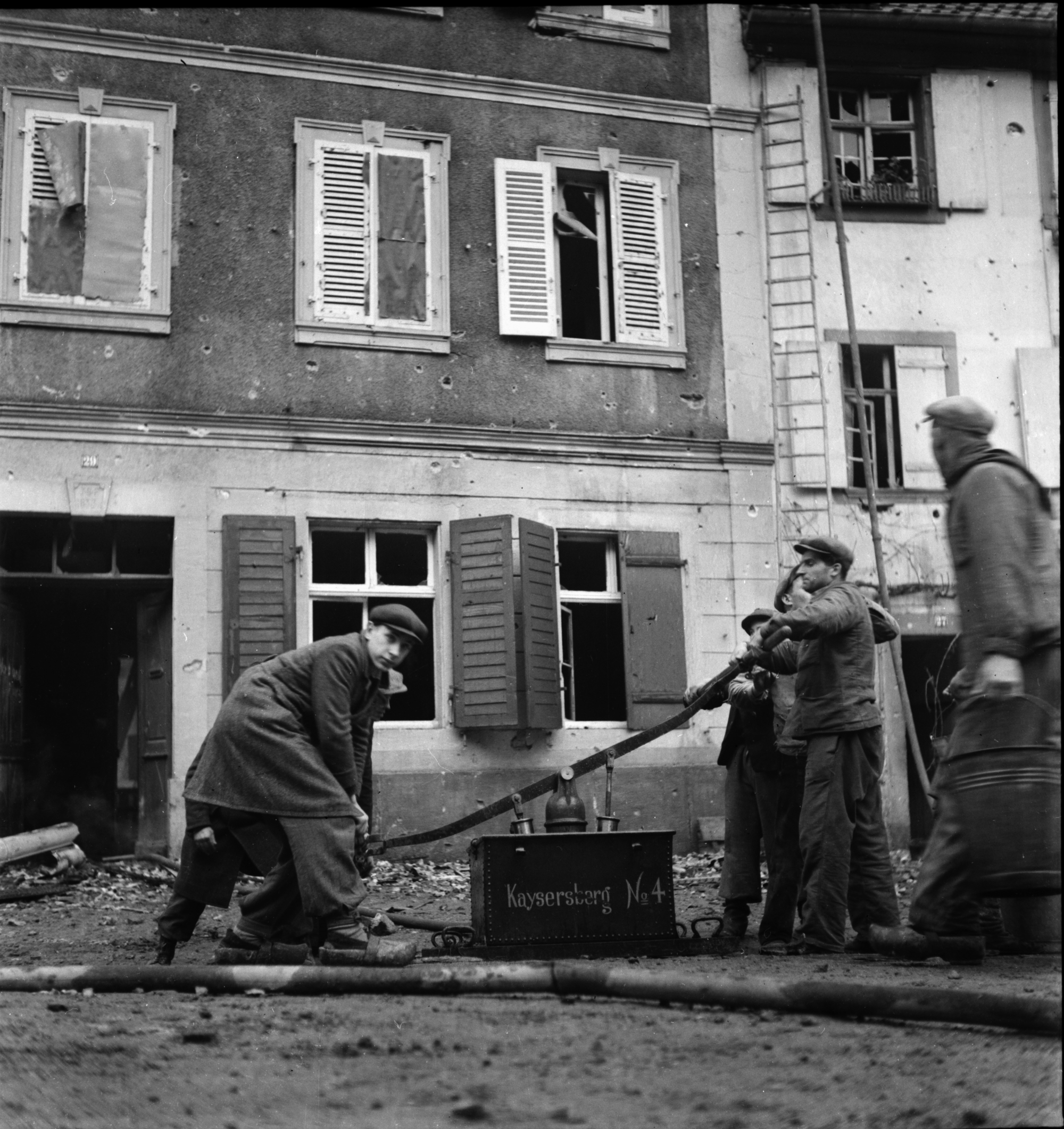
P1. P2. Tanks have moved on, people get back to work. Les chars partis plus loin, les habitants se remettent au travail.
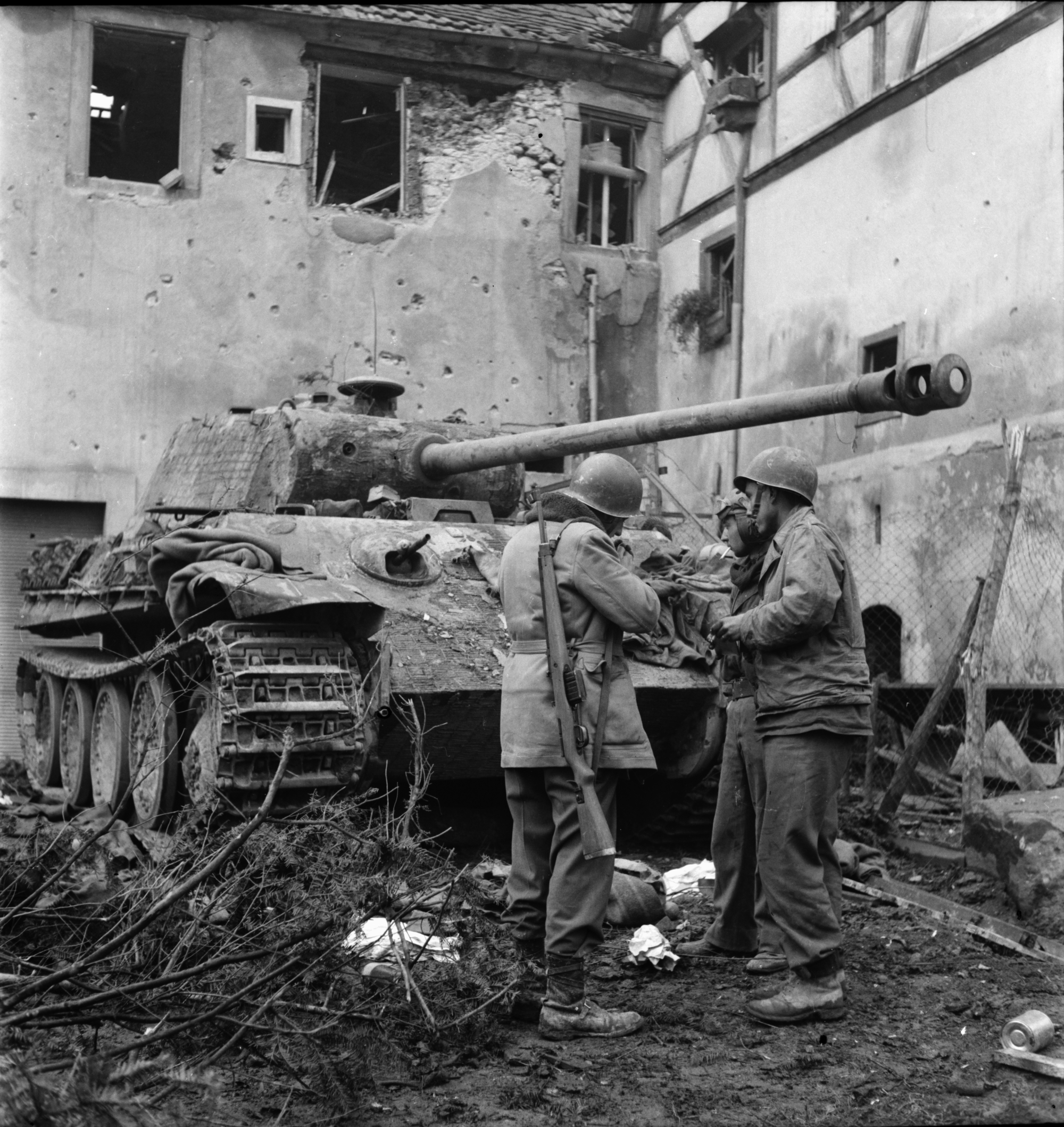
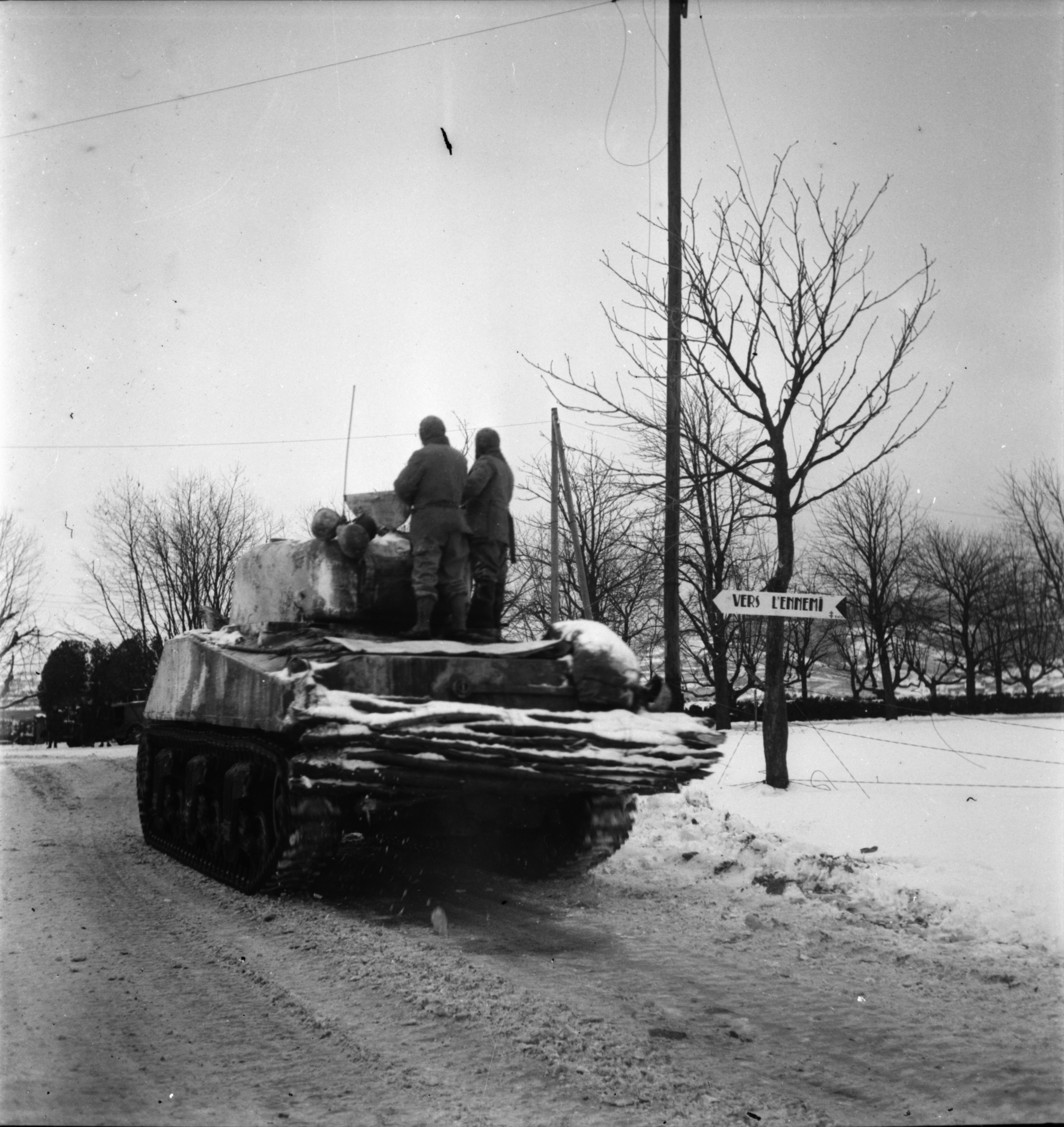
P3. French soldiers take possession of a Panzer tank. Et des soldats français prennent possession d’un char Panthère prisonnier. R1. To the enemy! Vers l'ennemi !
Ilhaeusern & moulin de Ried
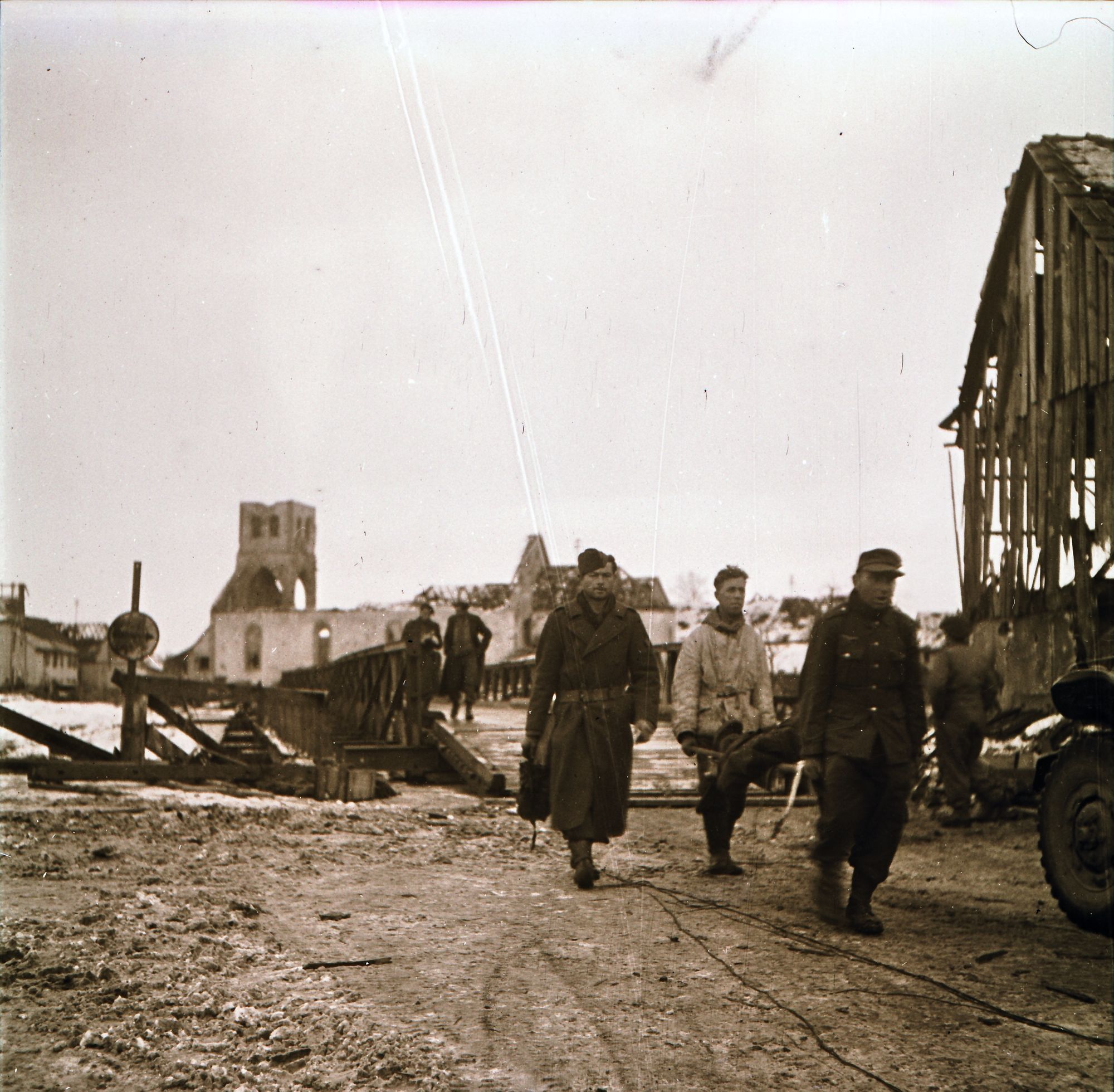
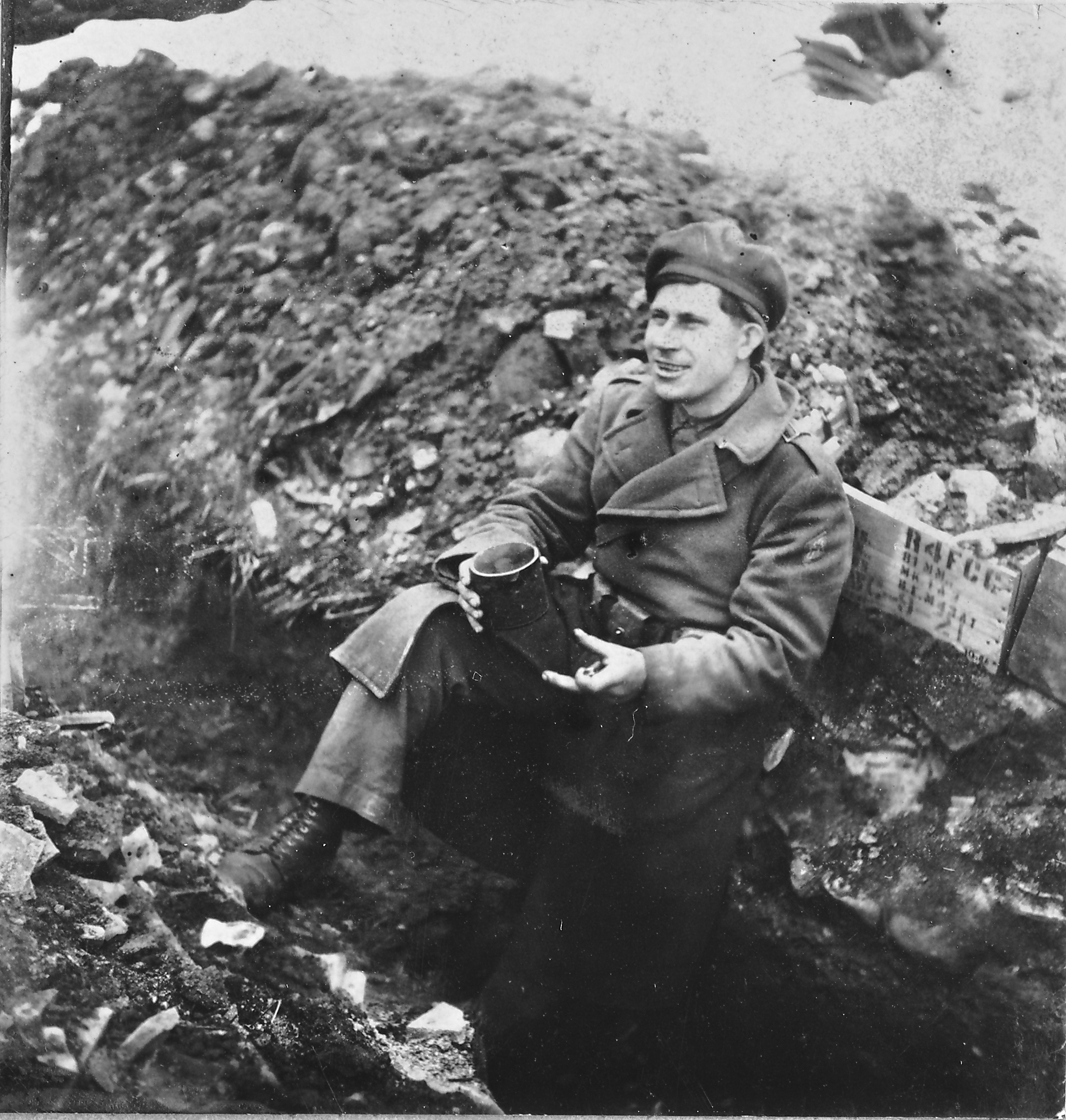
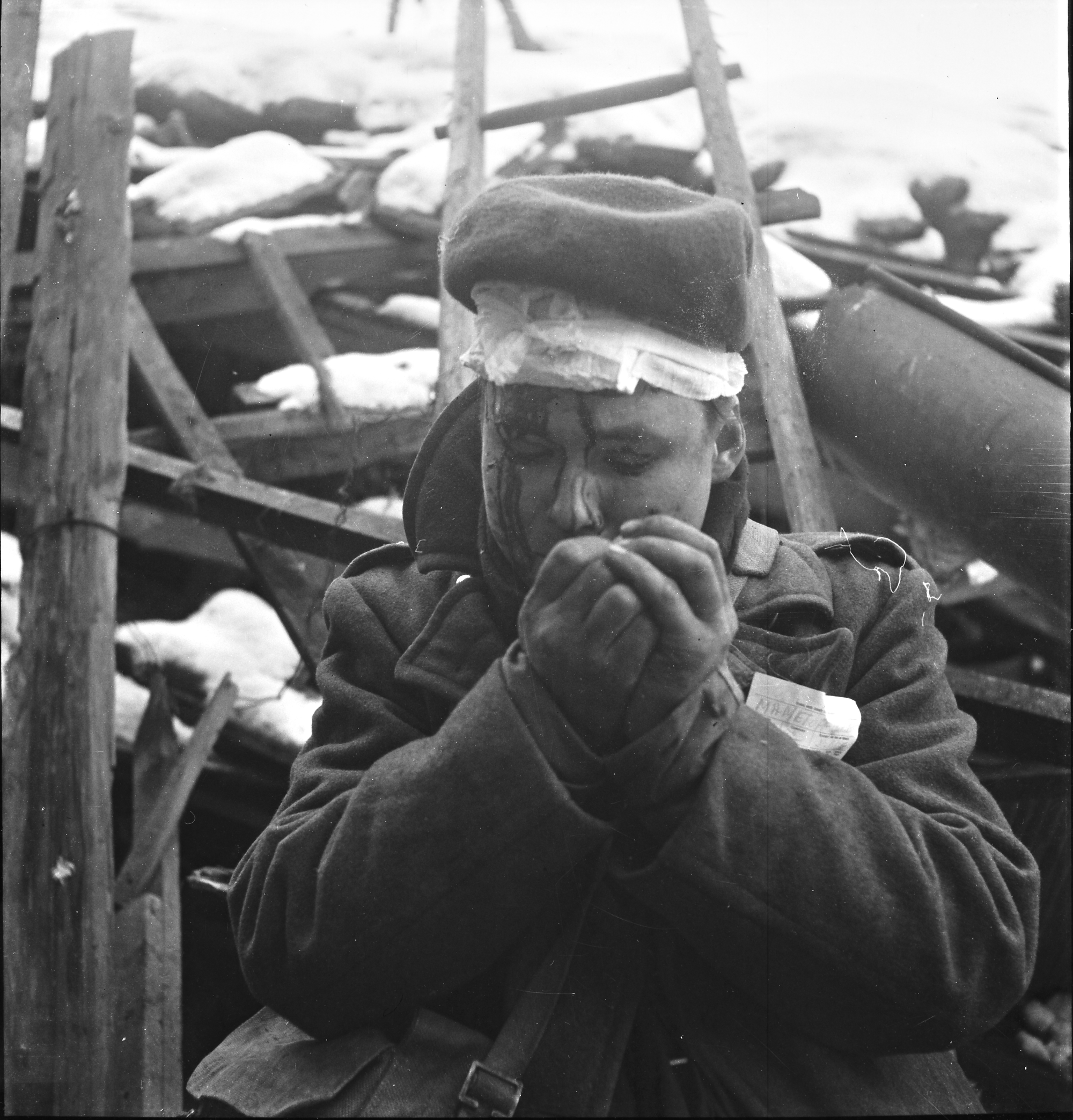
R3. A Russian soldier from the Foreign Legion. Un soldat russe de la Legion. R4. Another, wounded, lights a cigarette. Un autre, blessé, allume une cigarette.
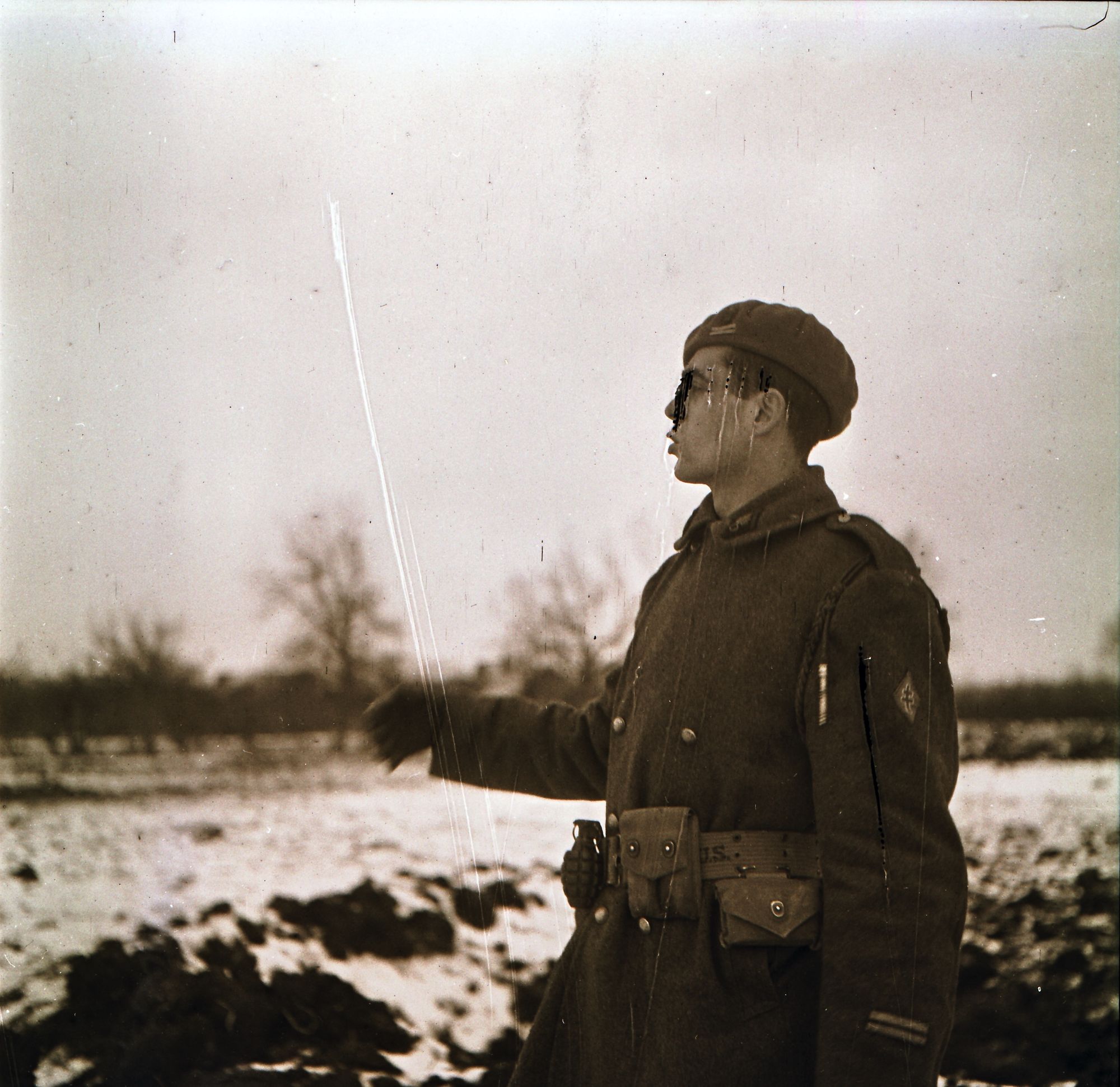
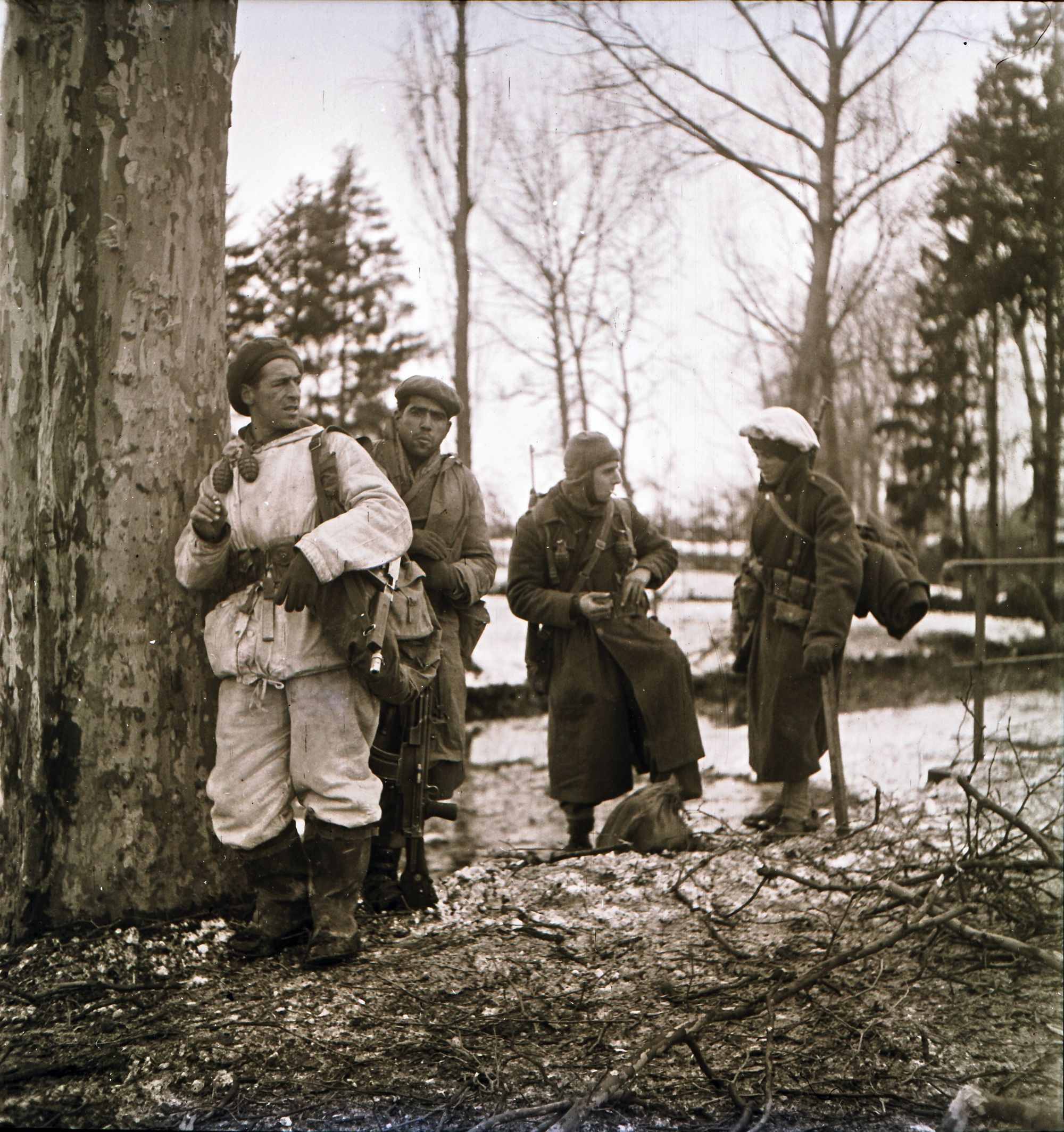
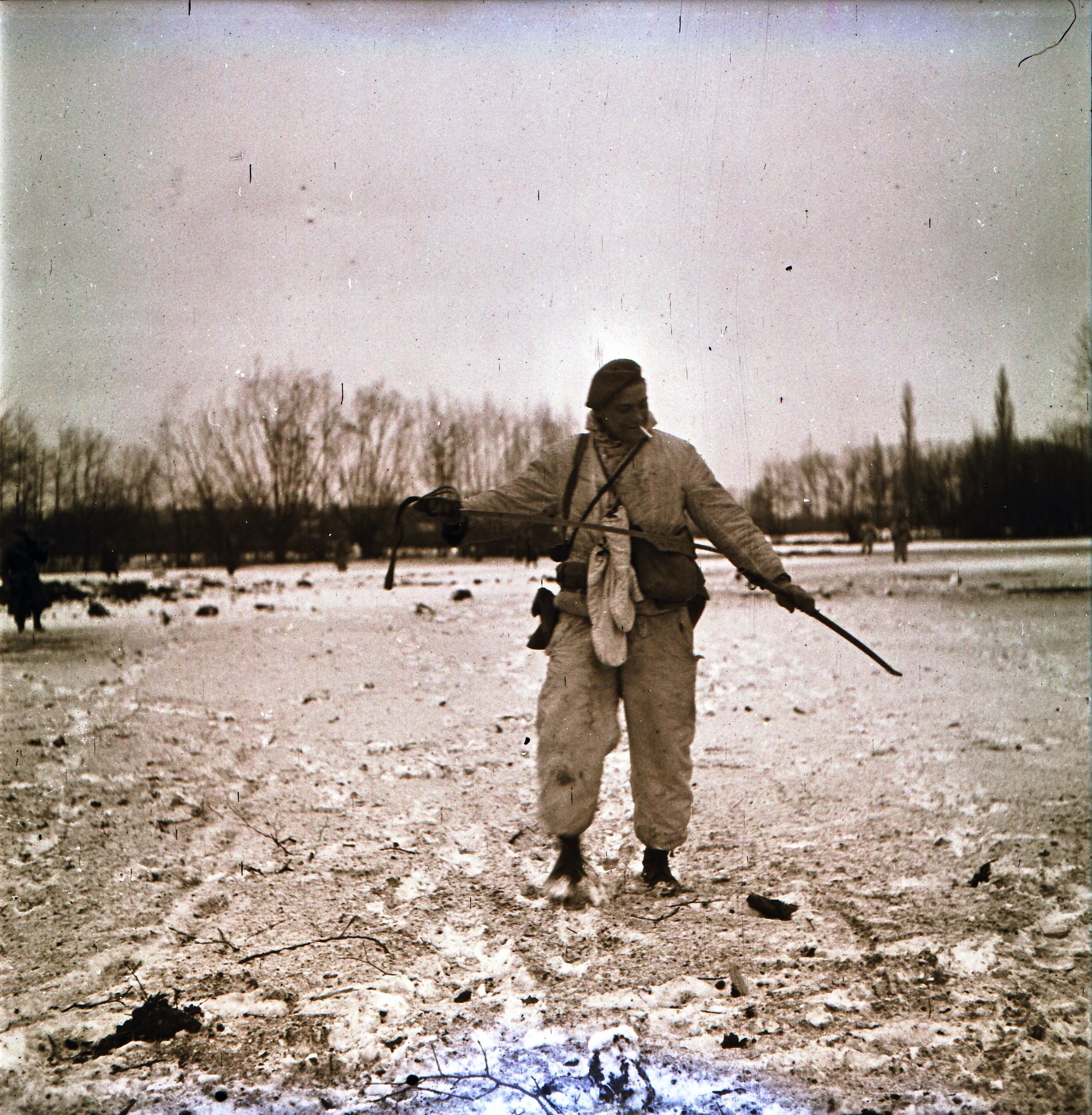
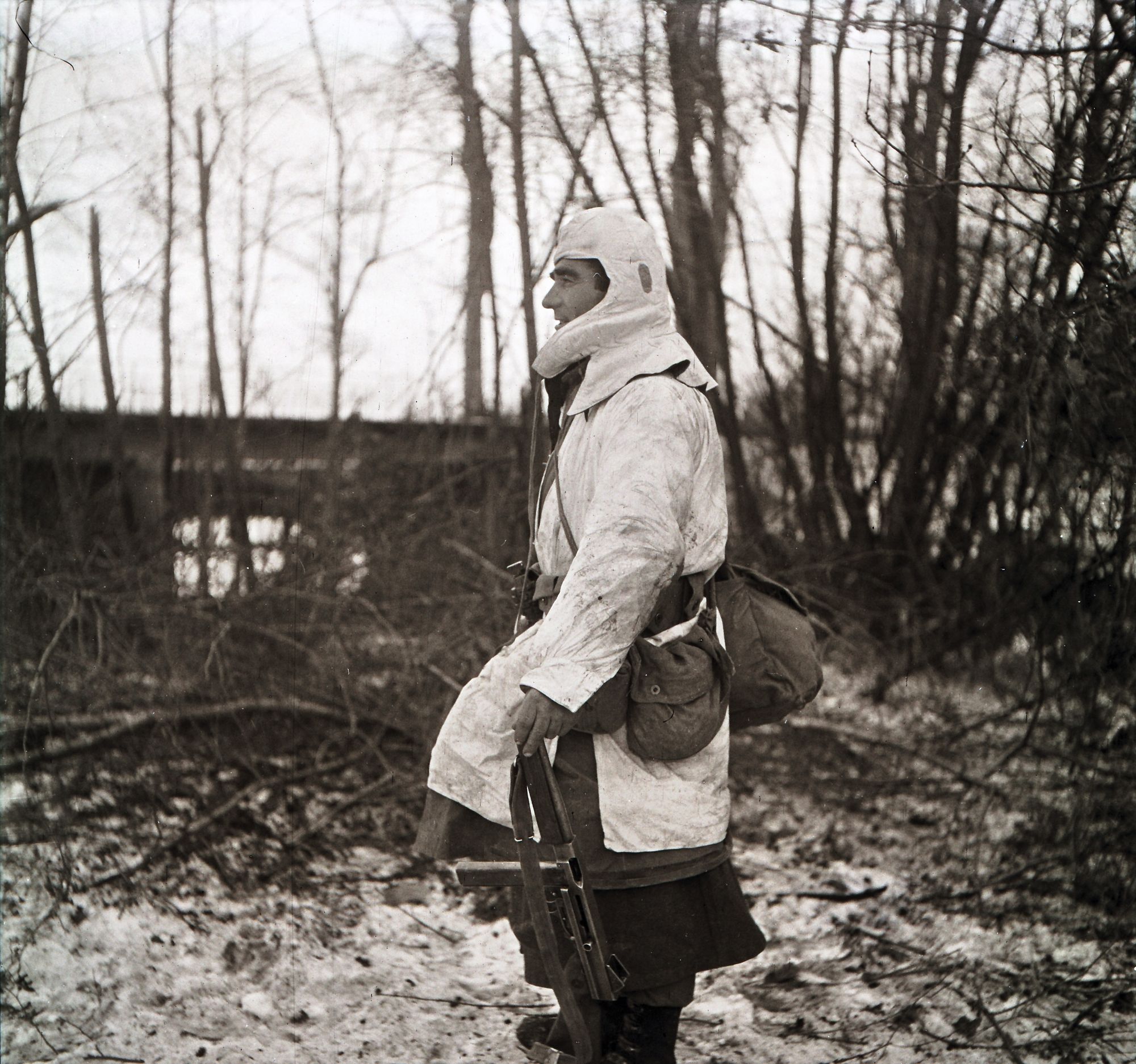
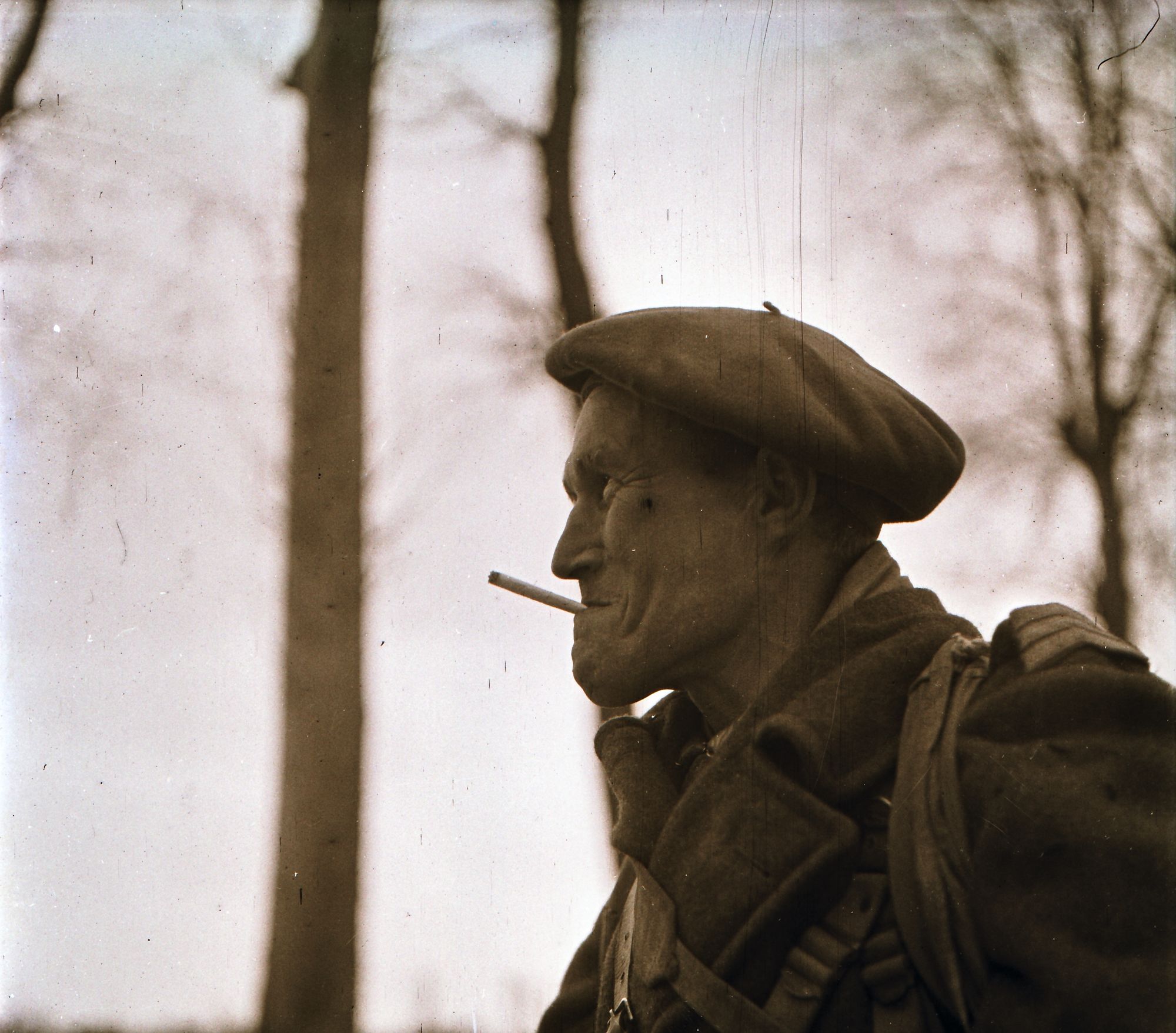
R5. Lieutenant X of the Foreign Legion 1st Free French Division. Lieutenant X. de la Légion étrangère 1ère DFL. R6. Before the attack, 4 legionnaires, 4 countries, 4 uniforms. Au départ de l’attaque, 4 légionnaires, 4 pays, 4 uniformes. R7. Sergeant Valdré, a Latvian, who found a German sabre. Sergent Valdré, letton, qui a trouvé un sabre allemand. R8. Henry de Lille before the attack on the Ried mill. JIR Henry de Lille avant l’attaque de moulin de Ried. R9. Staff sergeant Hoffleitner, Austrian. Sgnt chef Hoffleitner, autrichien.
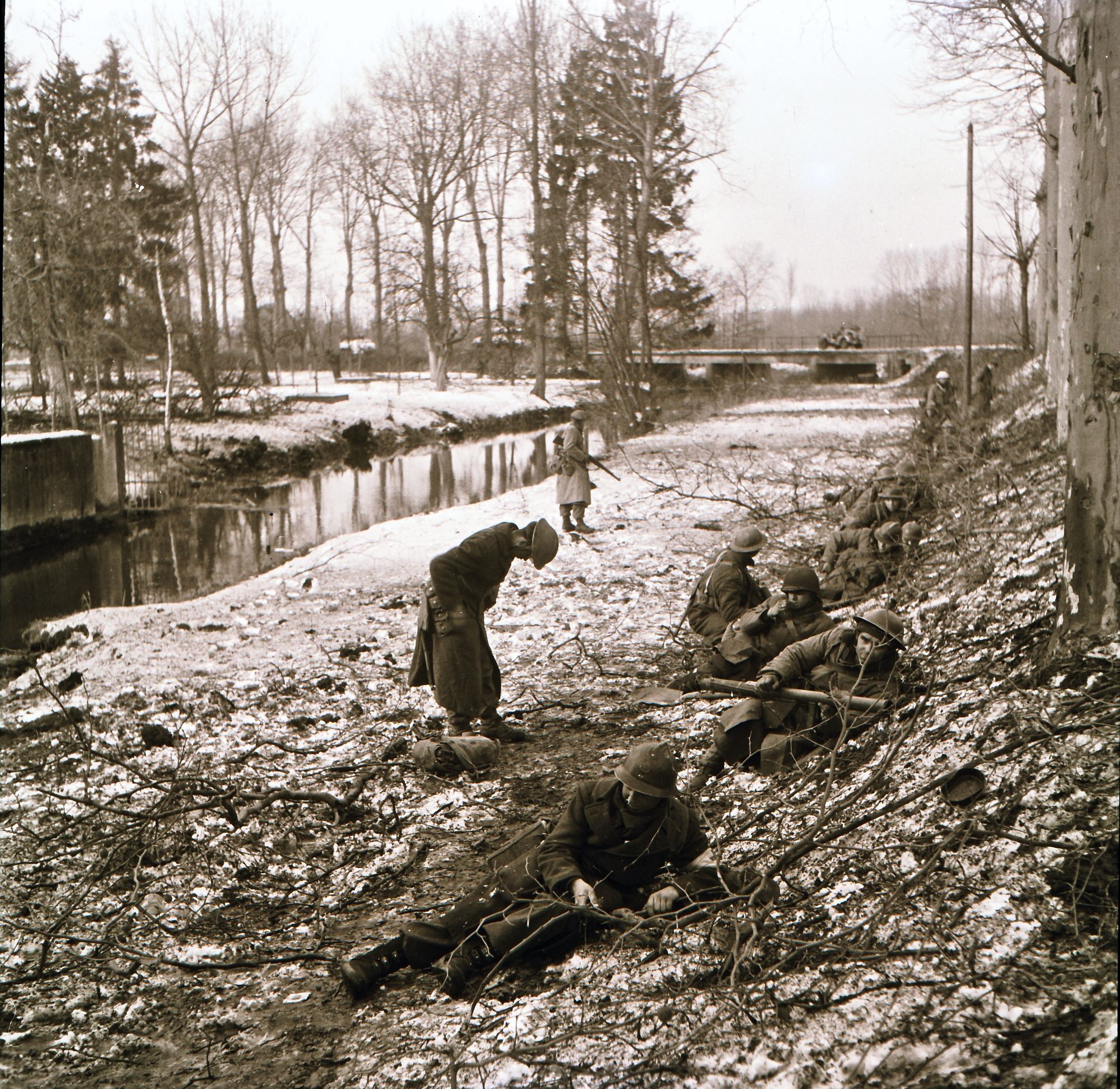
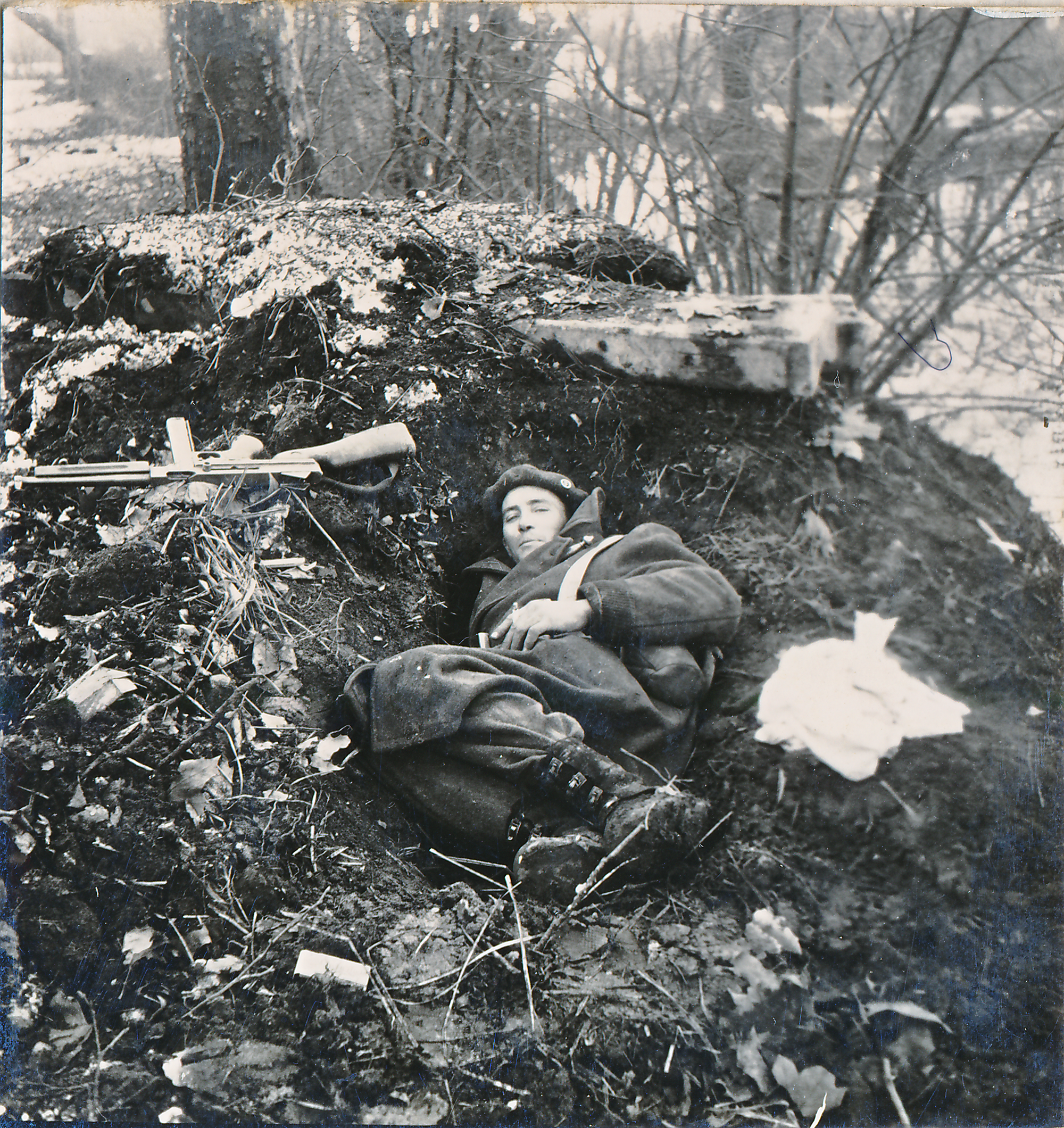
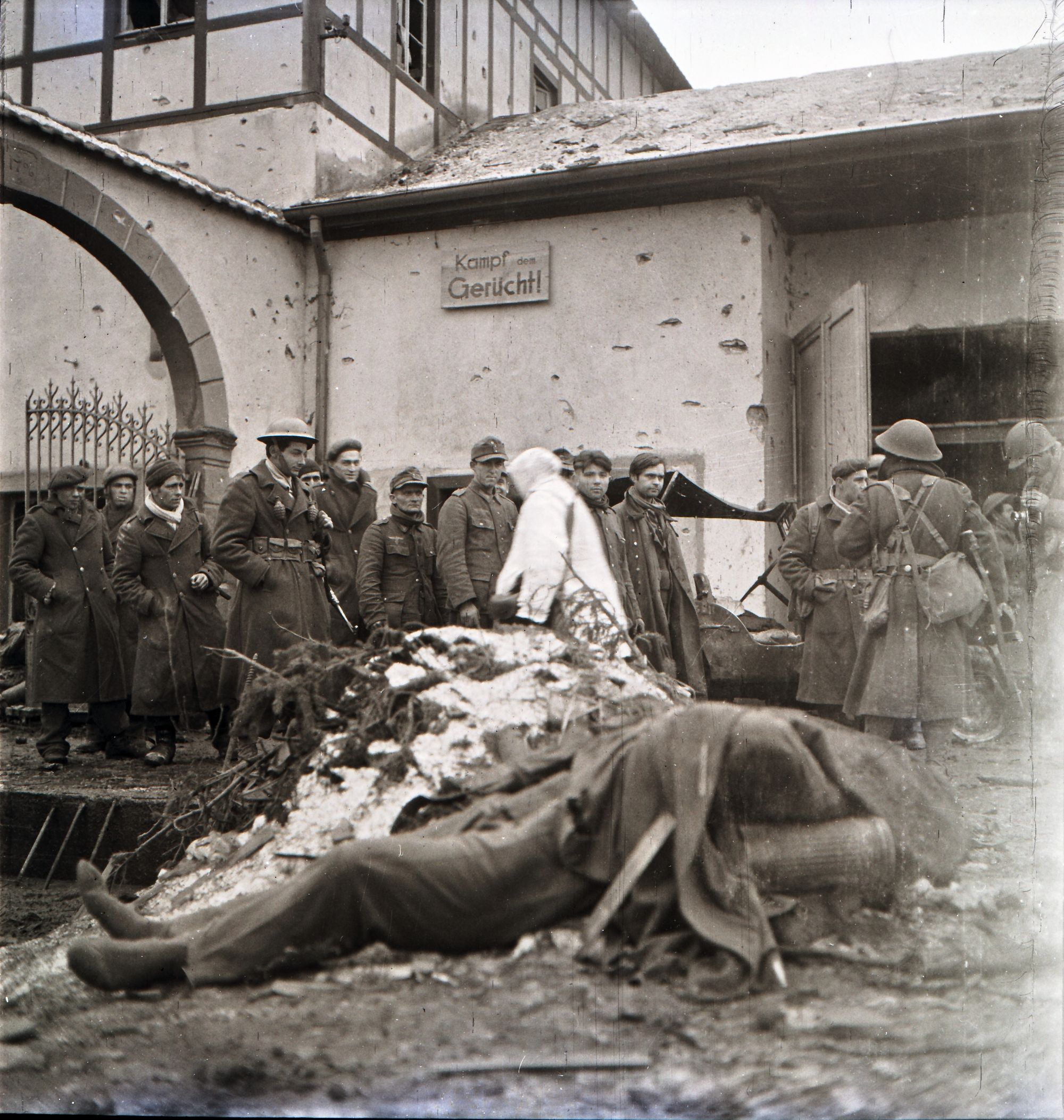
R10. Two kilometres further, in attack formation in front of the mill. 2 kilomètres plus loin en position d’attaque devant le moulin. R11. Protecting the mill. Protection du moulin. R12. Ried mill. German dead and prisonners. Moulin de Ried. Cadavre allemand et prisonniers.
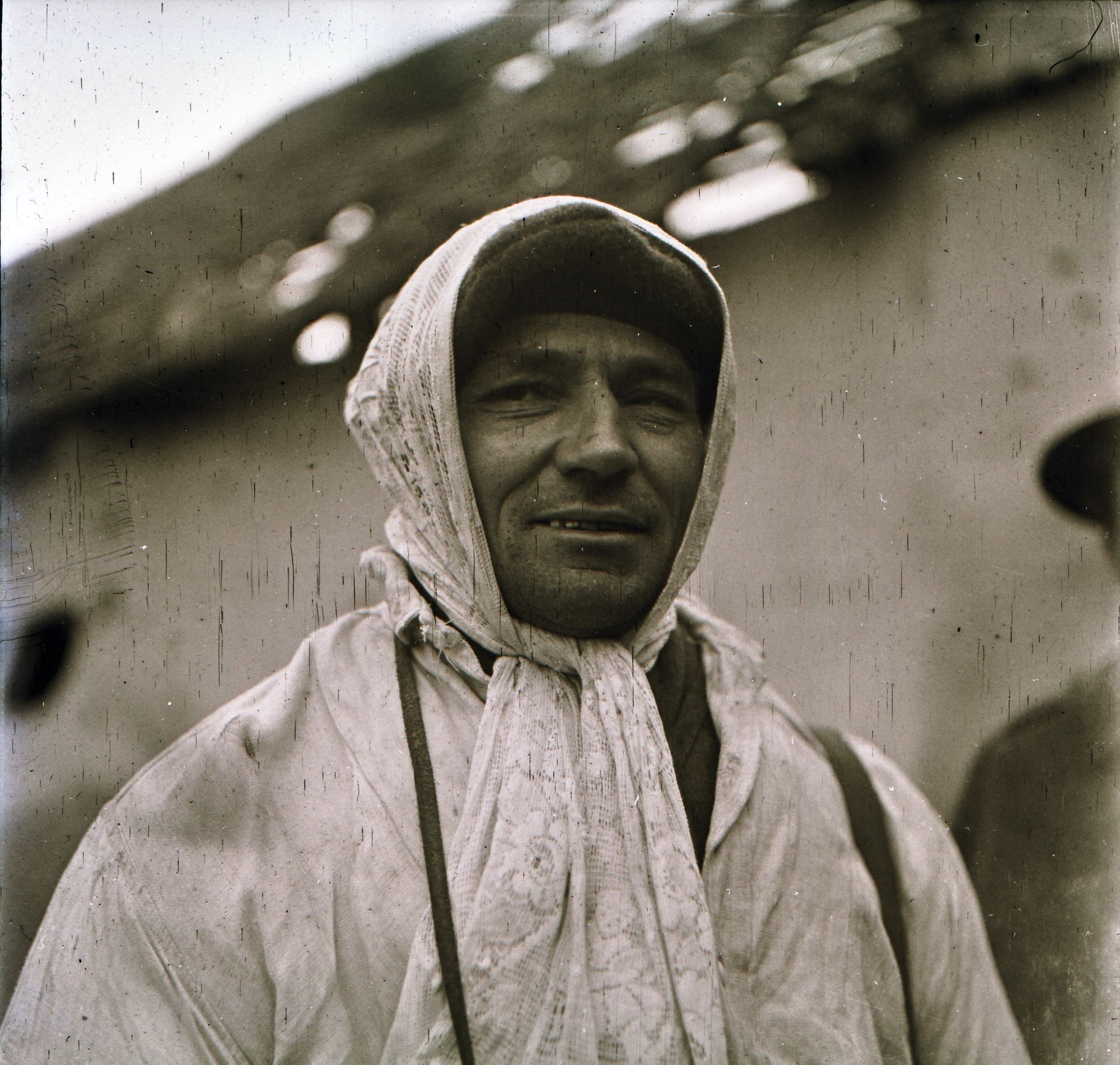
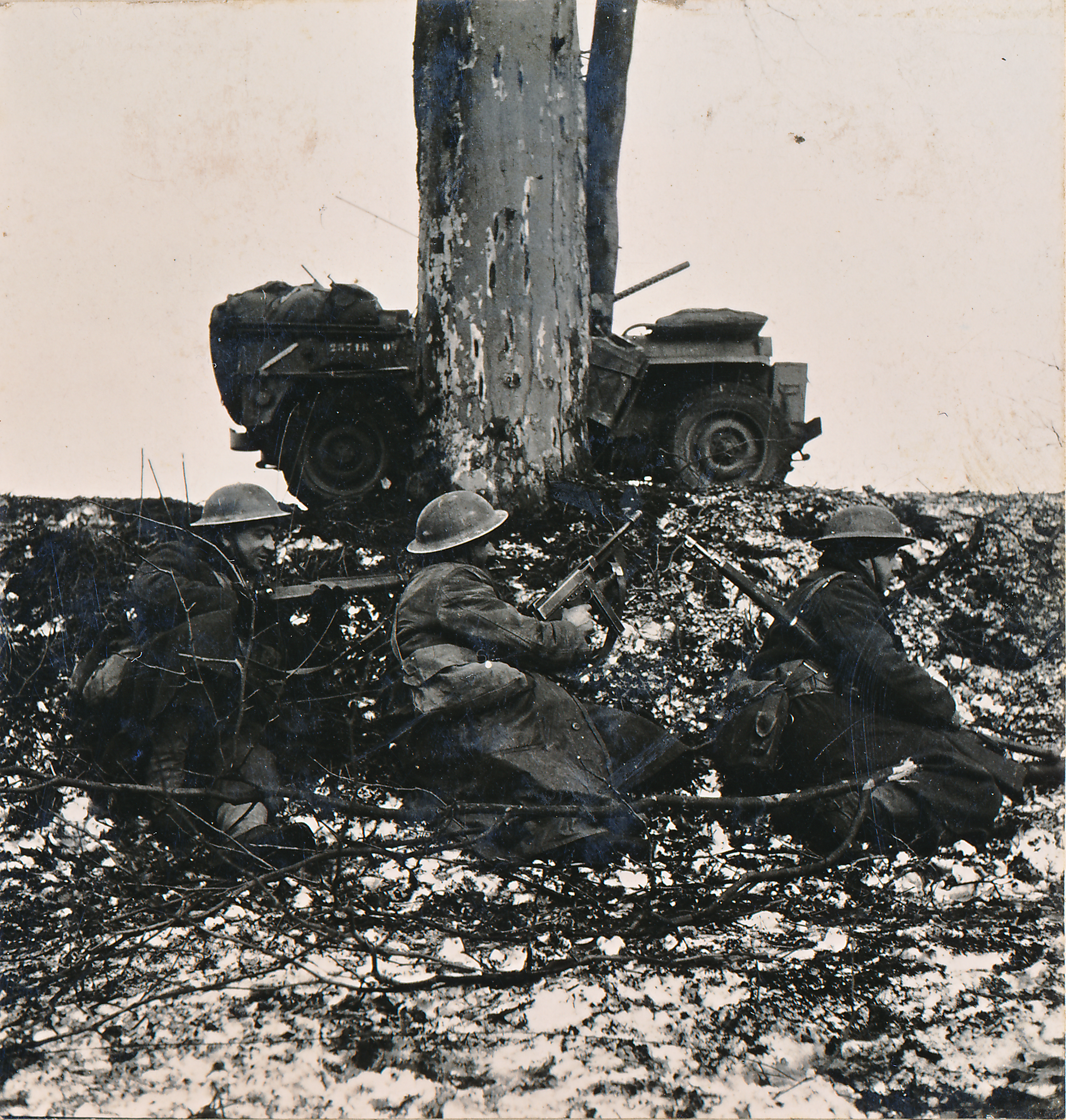
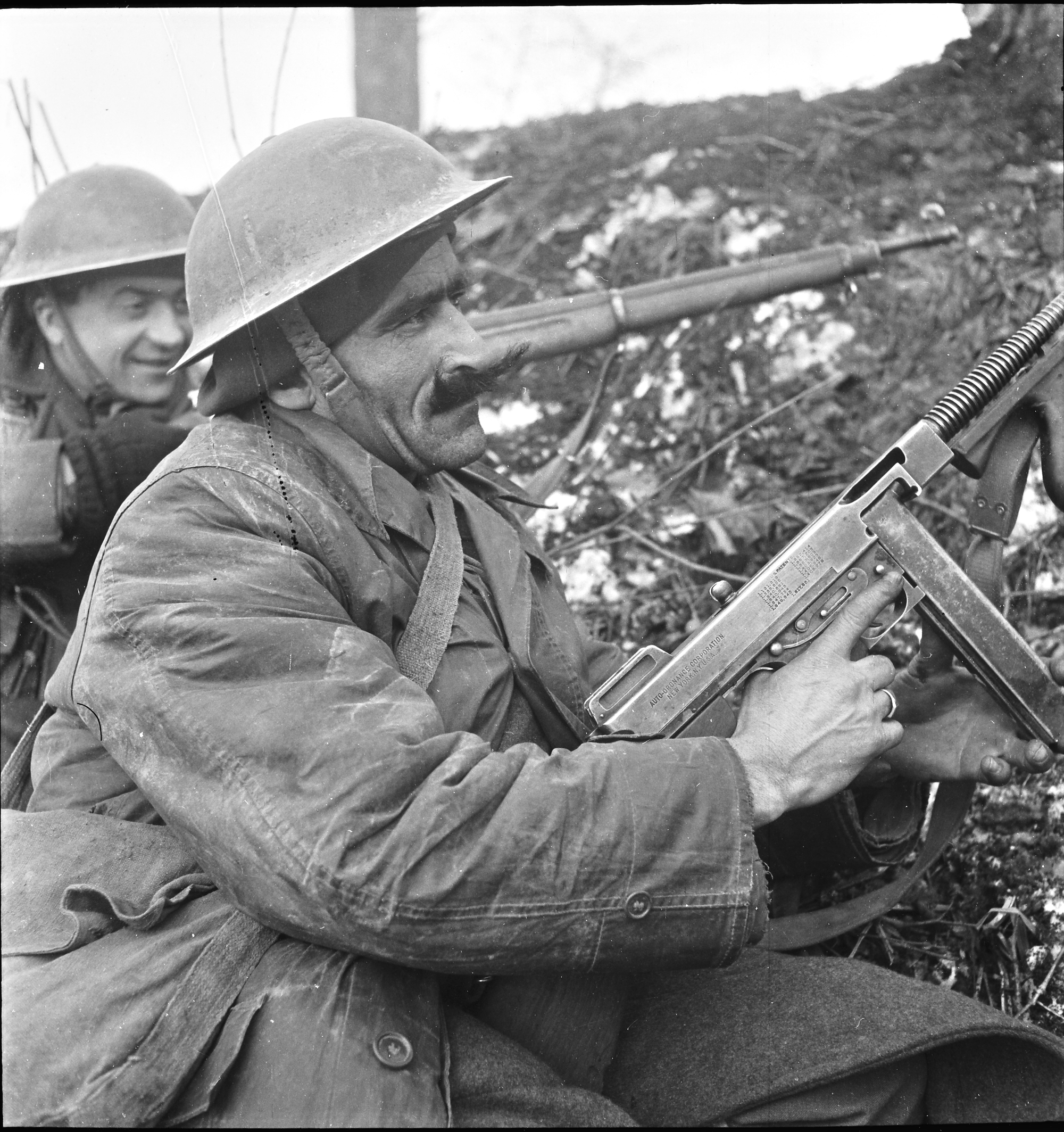
S1. Sergeant major Szabadi, Yugoslavian, camouflaged with drapes. Adjudant Szabadi yougoslave, camouflé dans un rideau. S2. Progression has stopped. Legionnaires wait by the side of the road. Progression stoppée. Les légionnaires attendent au bord de la route. S3. Kaecbati, Armenian. Kaecbati, arménien.
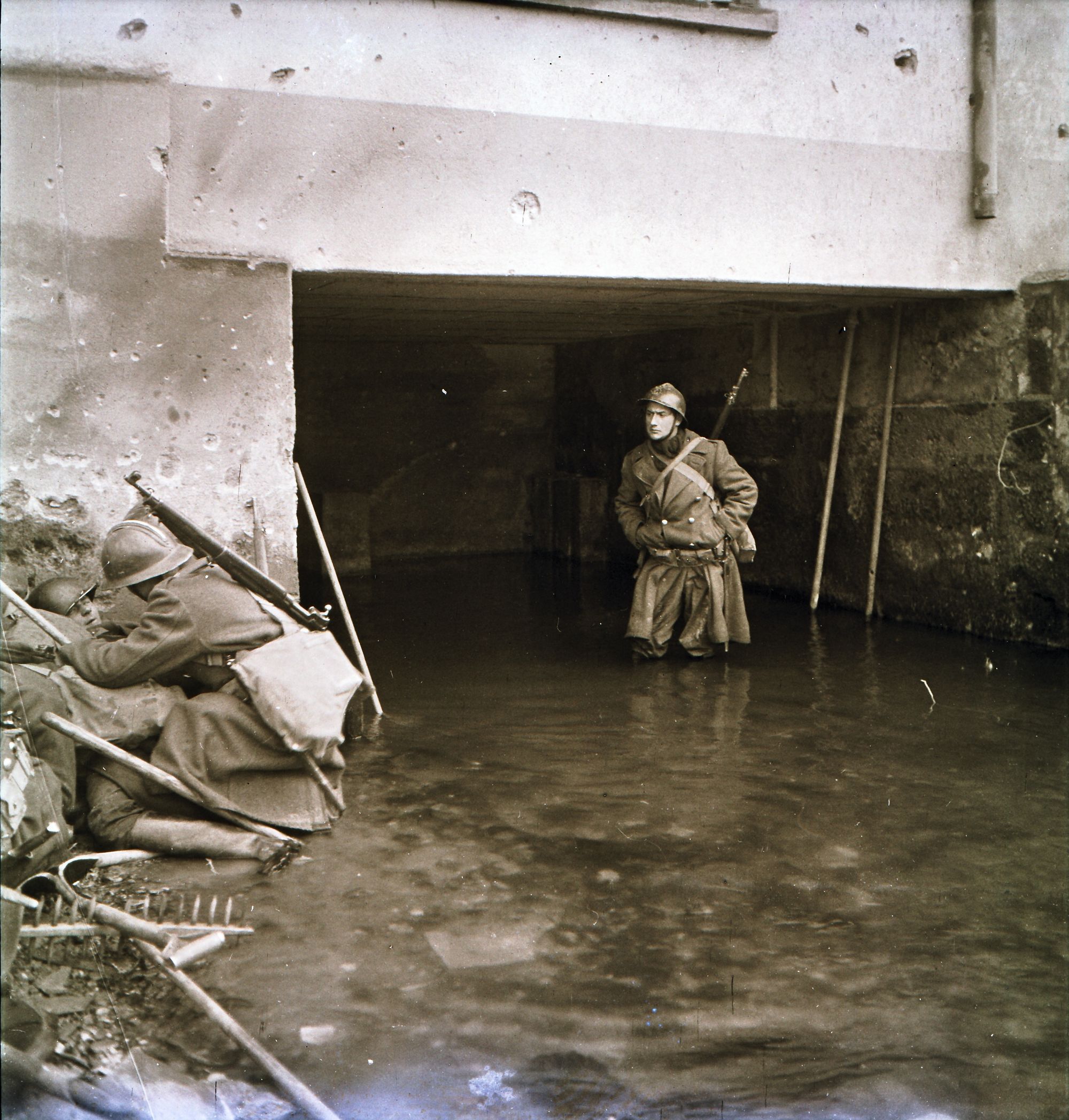
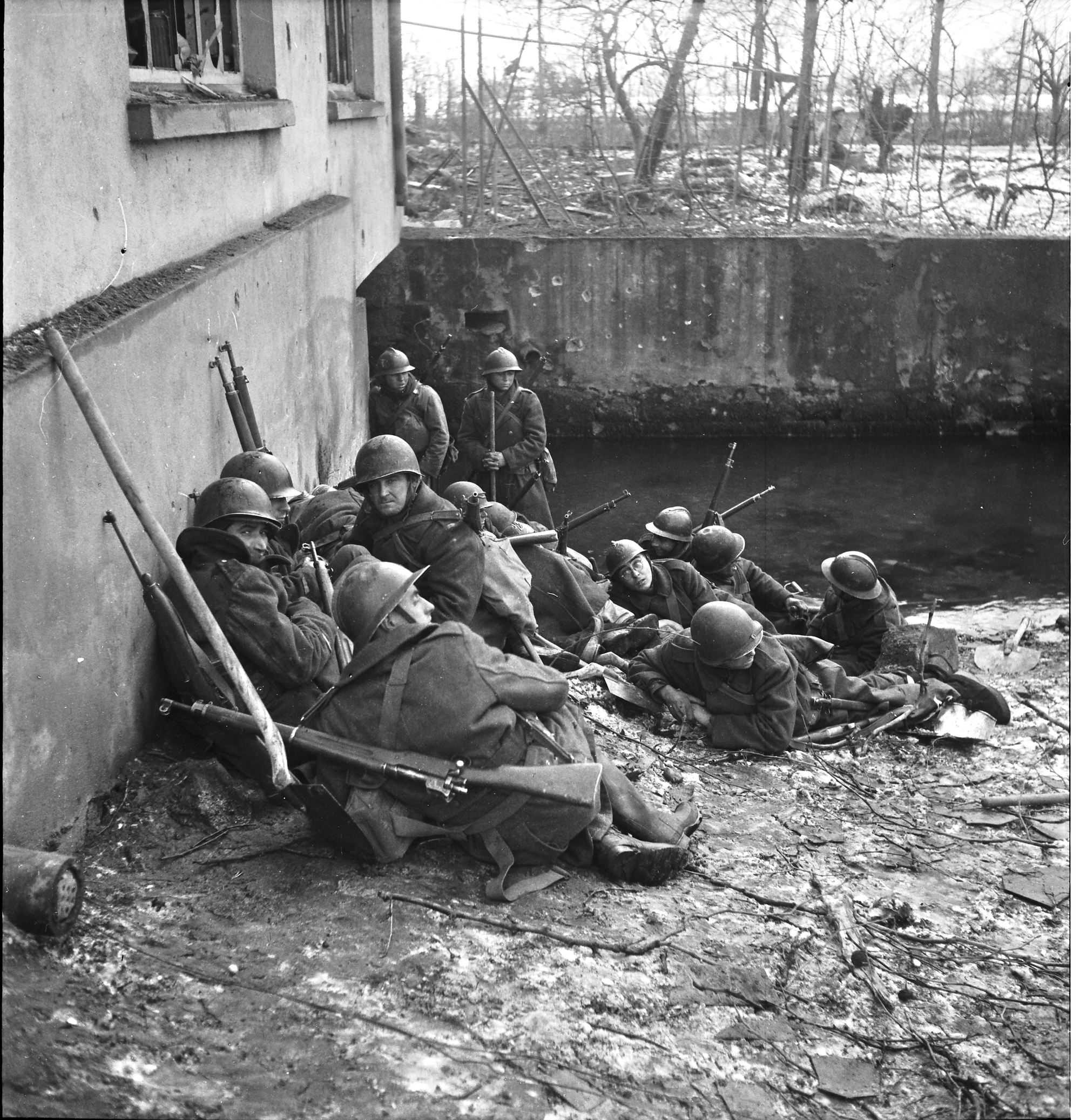
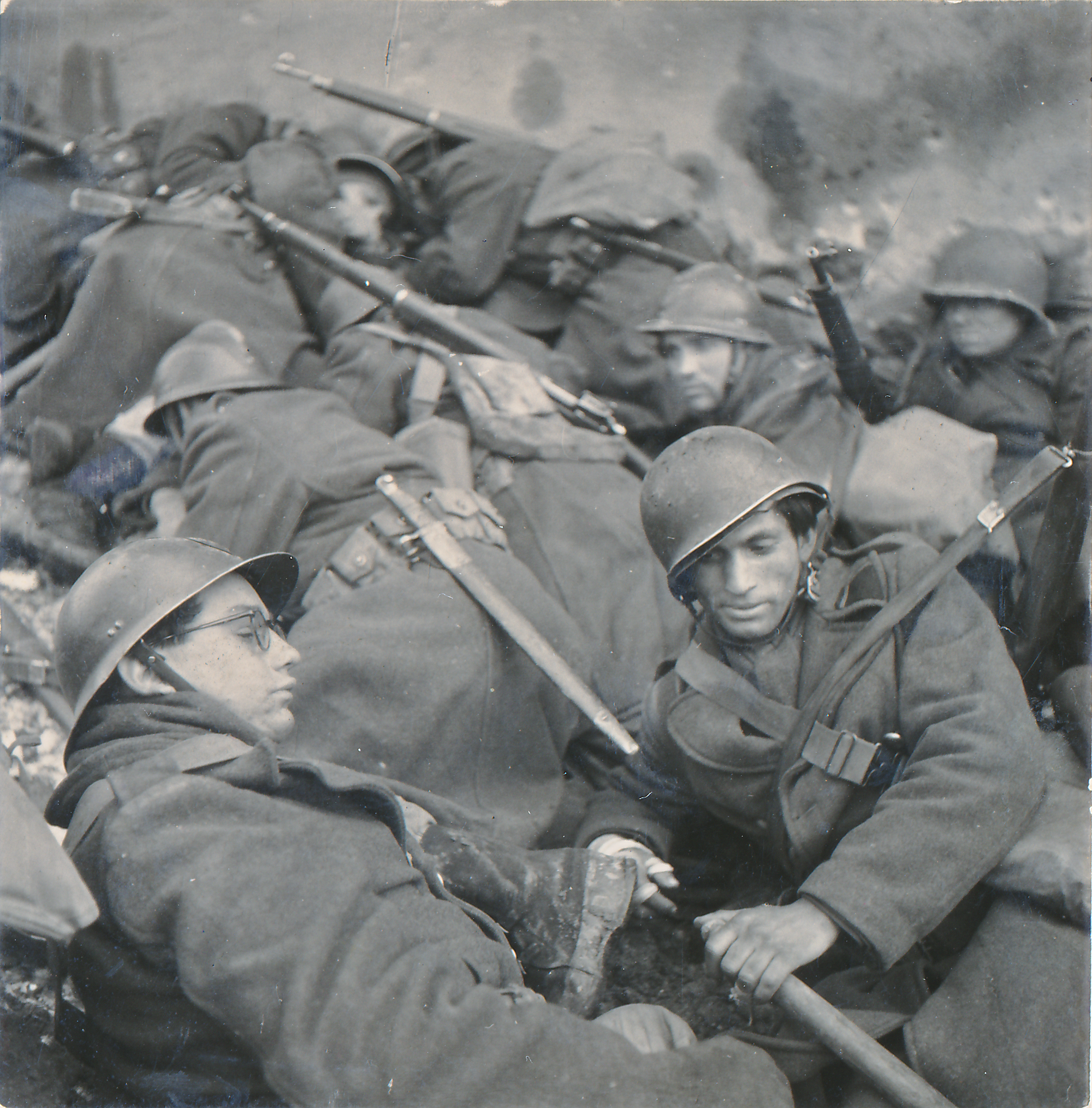
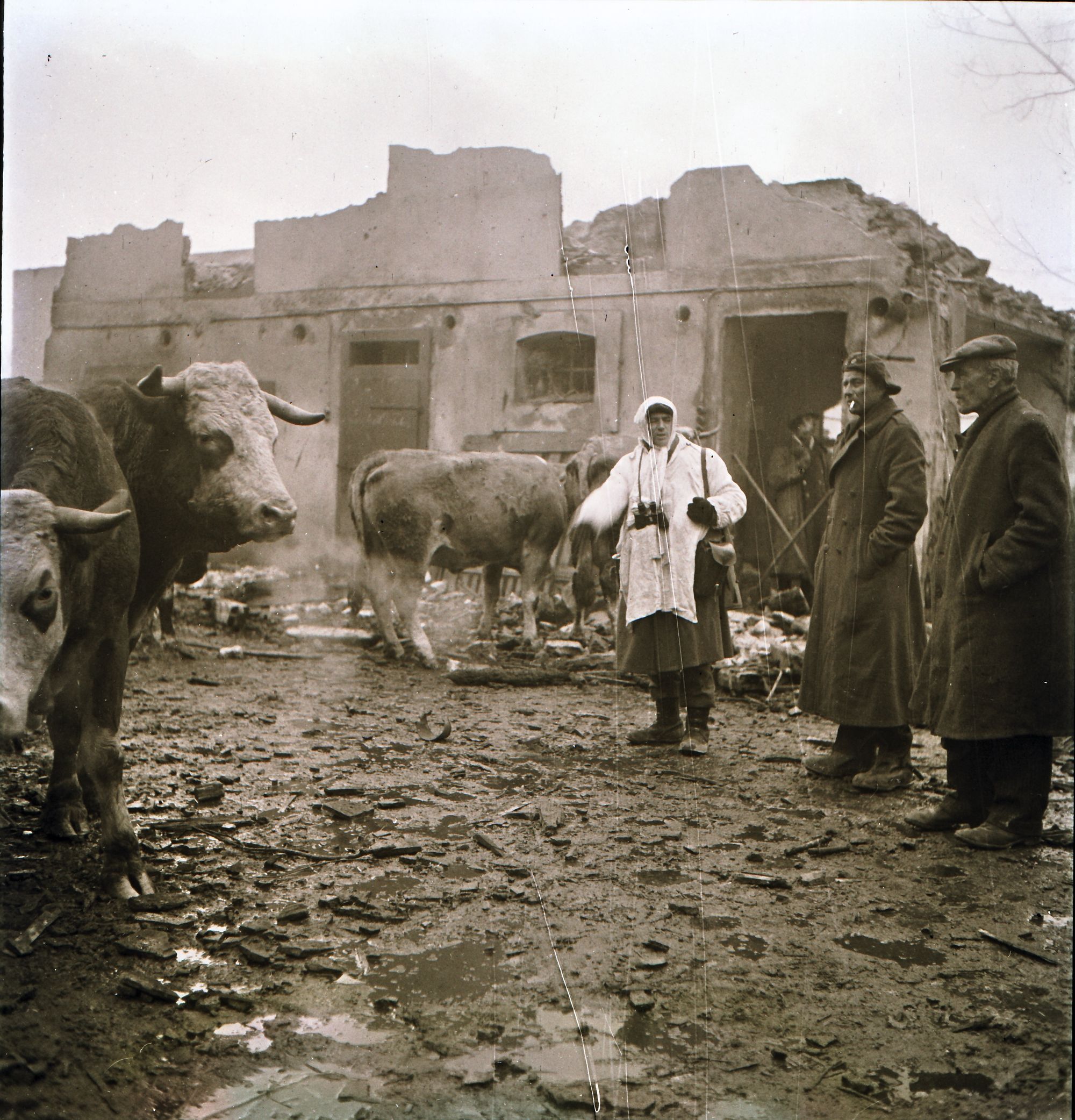
S4. While others search the mill, a soldier, water to his knees, guards a potential exit. Pendant la fouille du moulin, un soldat, les pieds dans l’eau, garde une issue possible. S5. Bombs are falling. Men take cover behind a wall. Les obus tombent. Les hommes se protègent derrière un mur. S6. French helmets, American helmets. Soldiers await. Casques français, casques américains. Les soldats attendent. S7. In the mill yard, a legionnaire, two civilians and cattle. Dans la cour du Moulin. Un légionnaire deux civils et le bétail
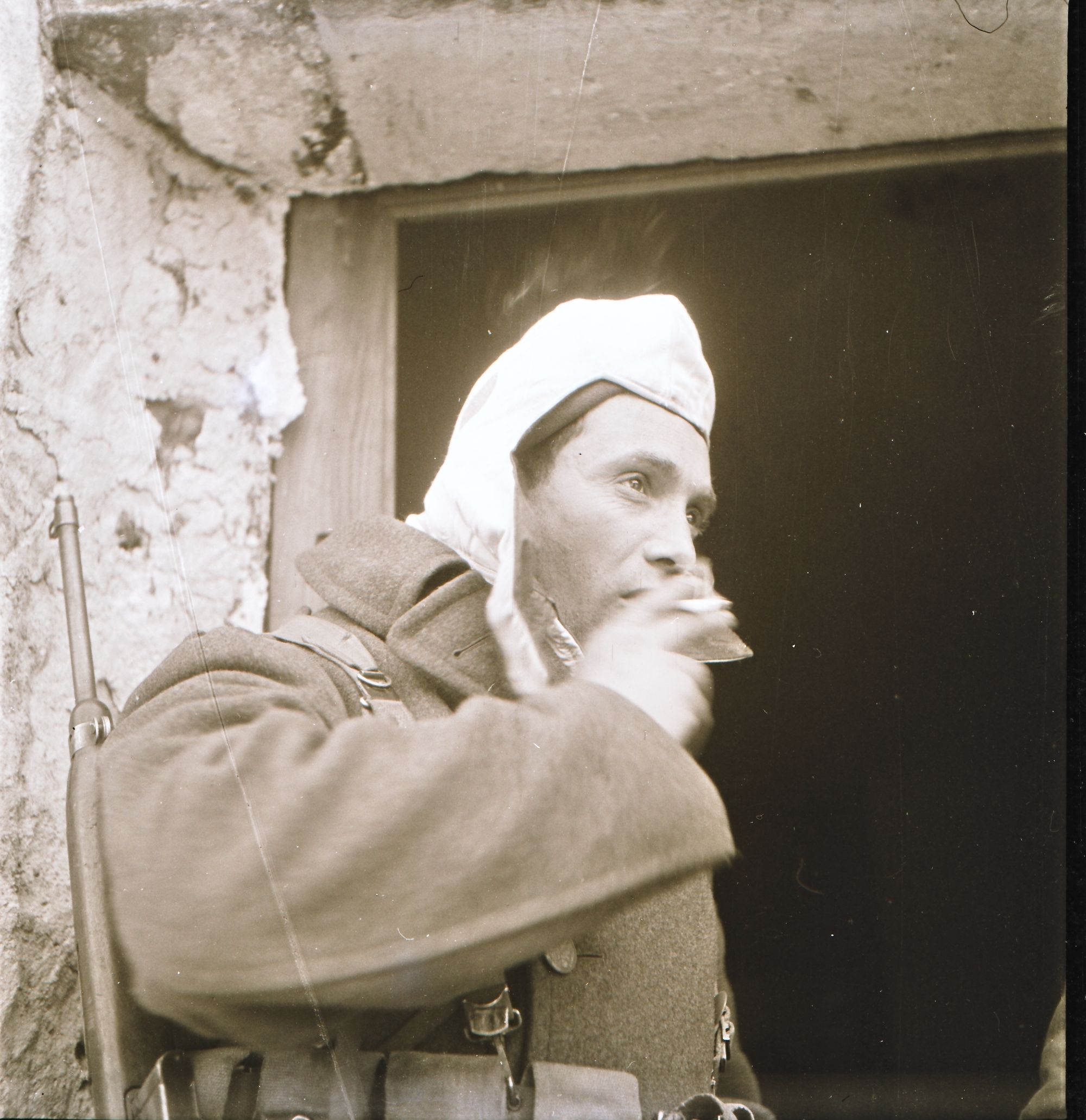
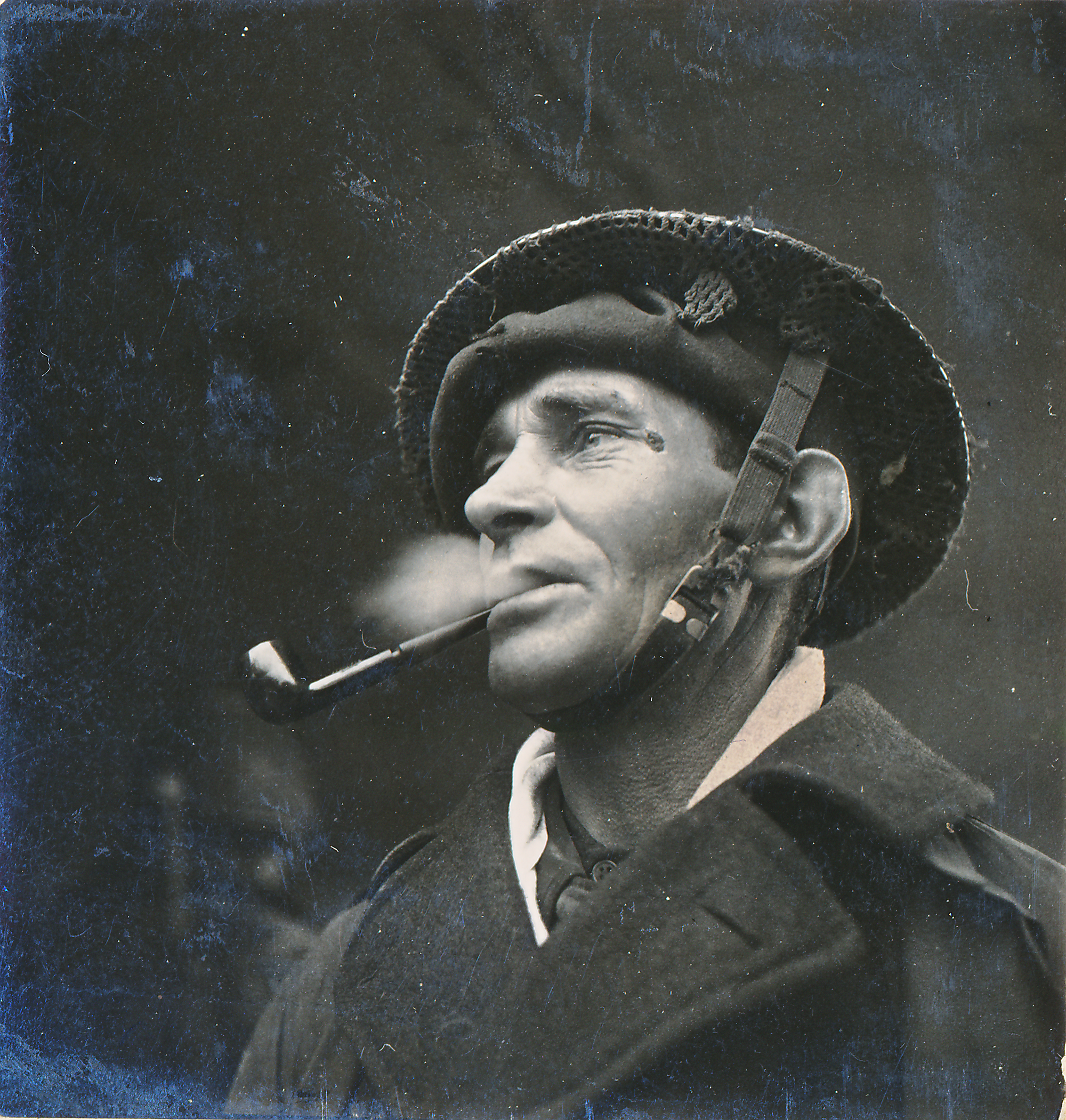
S8. A legionnaire. Un légionnaire. S9. Inside the mill, the Russian Sedoff smokes his pipe. Dans le moulin, le russe Sedoff fume sa pipe.
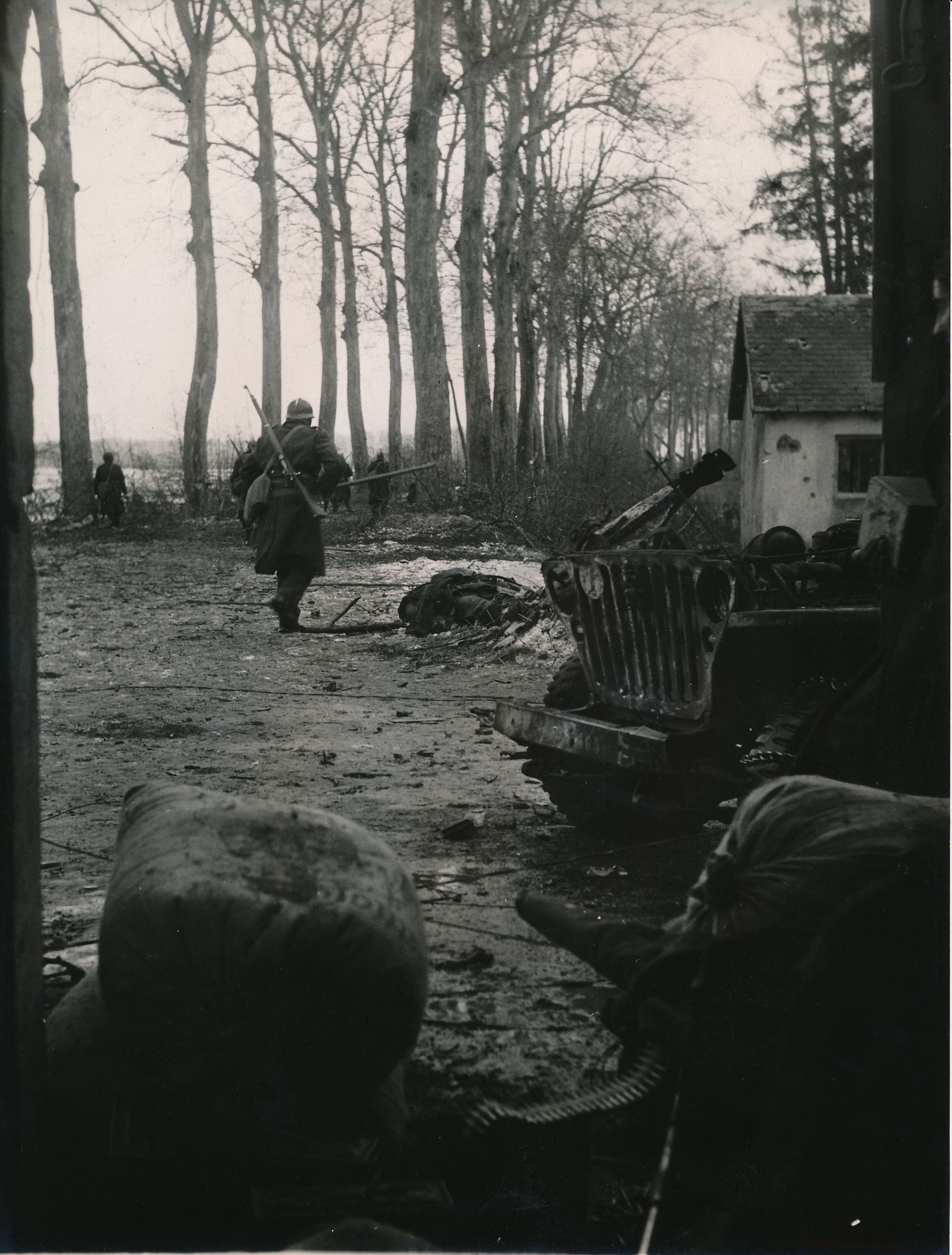
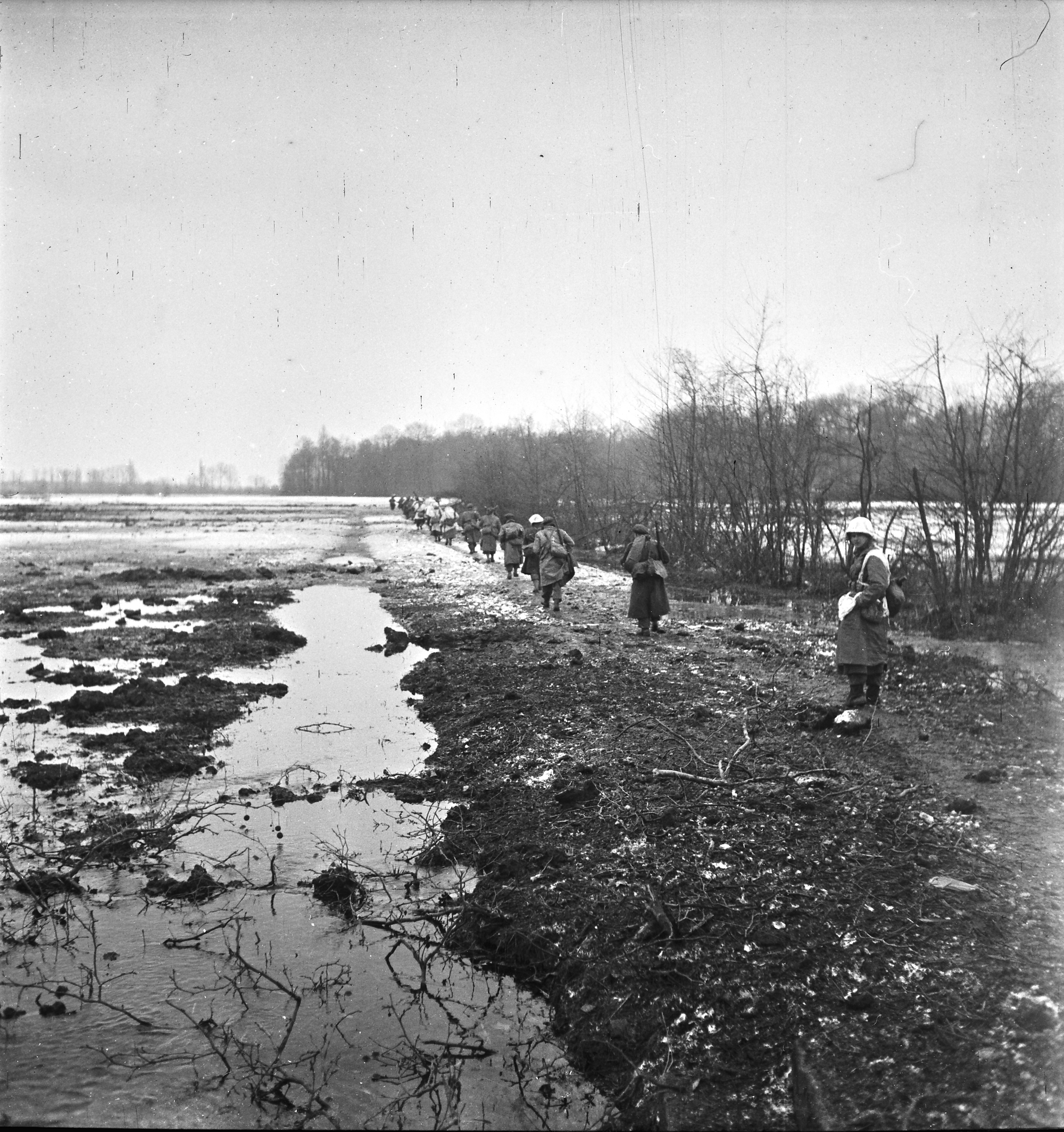
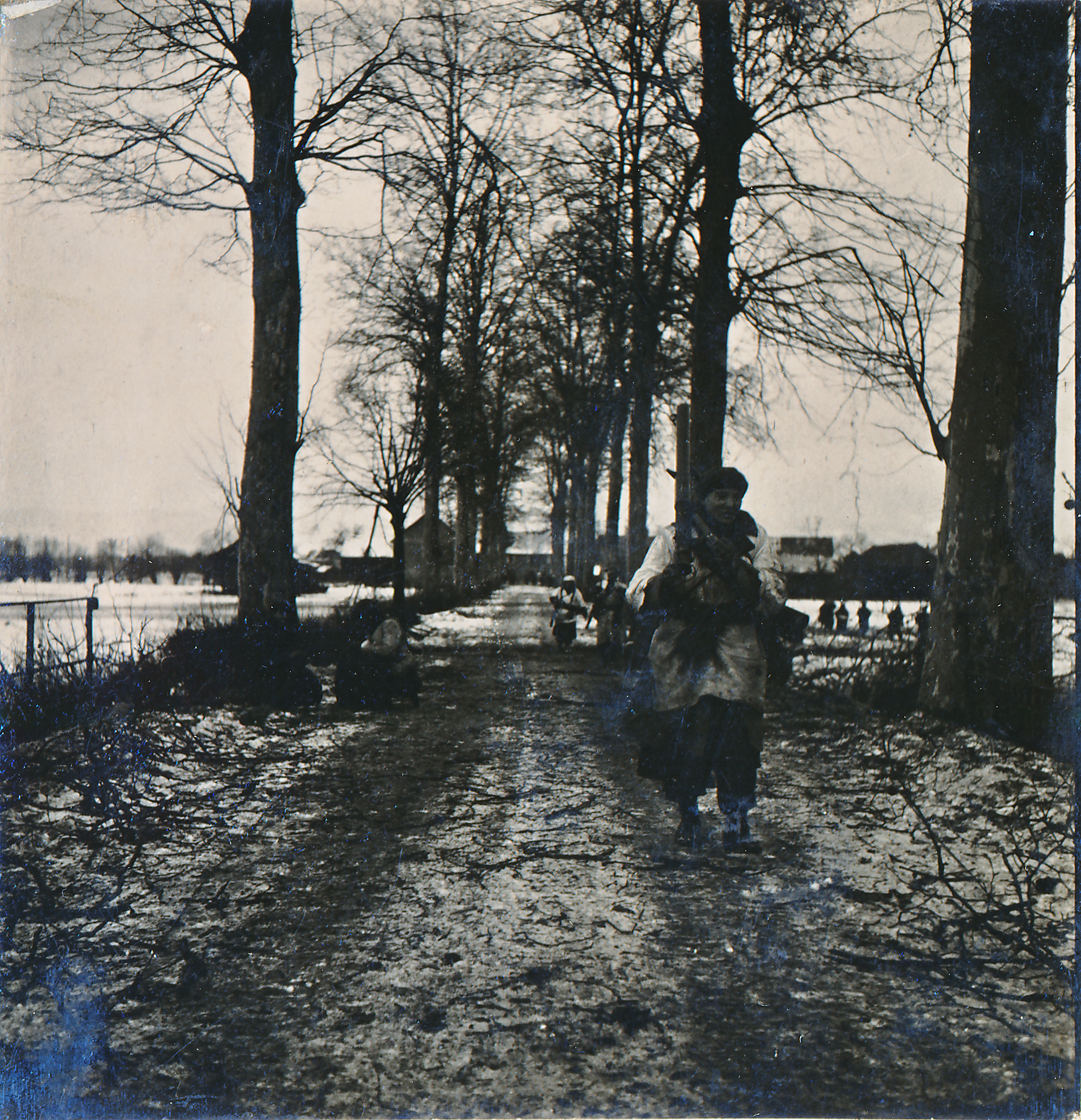
S10. The attack continues. A machine gun unlimbered, a Jeep destroyed by a shell. L’attaque continue. Un F.M. en batterie, une jeep démolie par un obus. S11. The legion is off to clear the woods. La légion part nettoyer les bois. S12. The legion advances beyond the mill. La légion progresse au-delà du moulin.
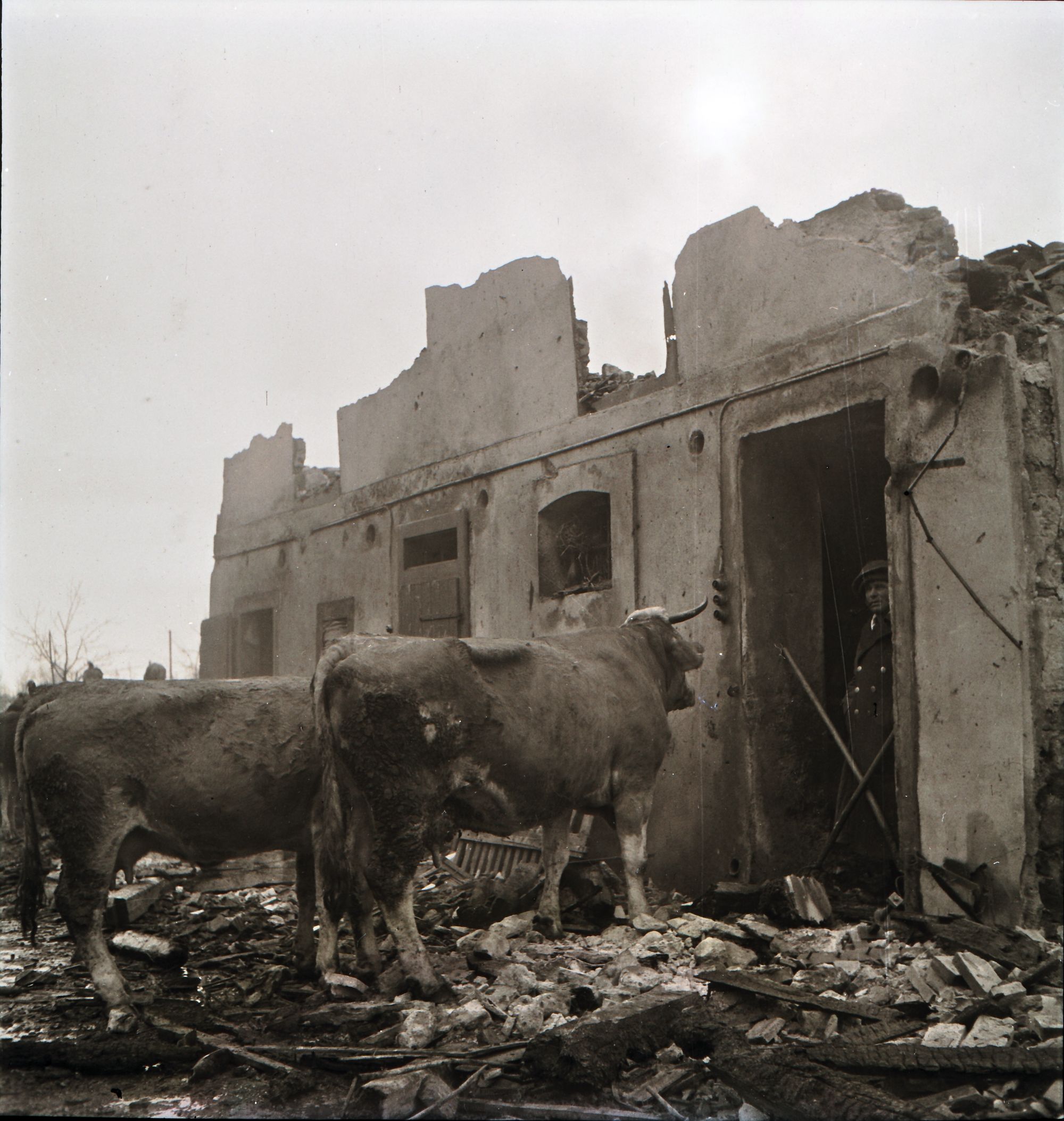
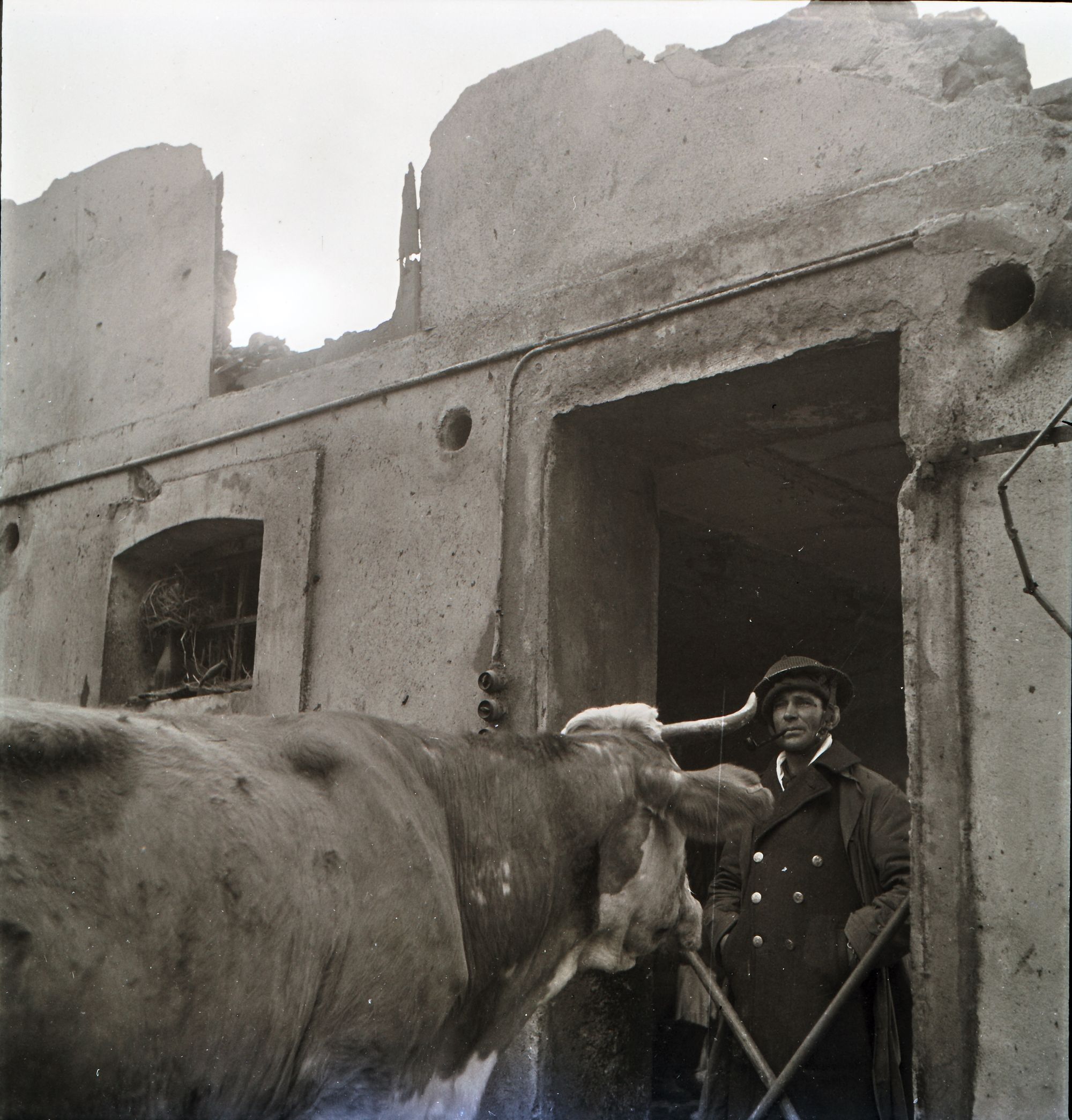
T1. T2. Inside the mill. Farmers and cattle stayed through the battle. Dans l’intérieur du Moulin. Les fermiers et le bétail sont restés pendant la bataille.
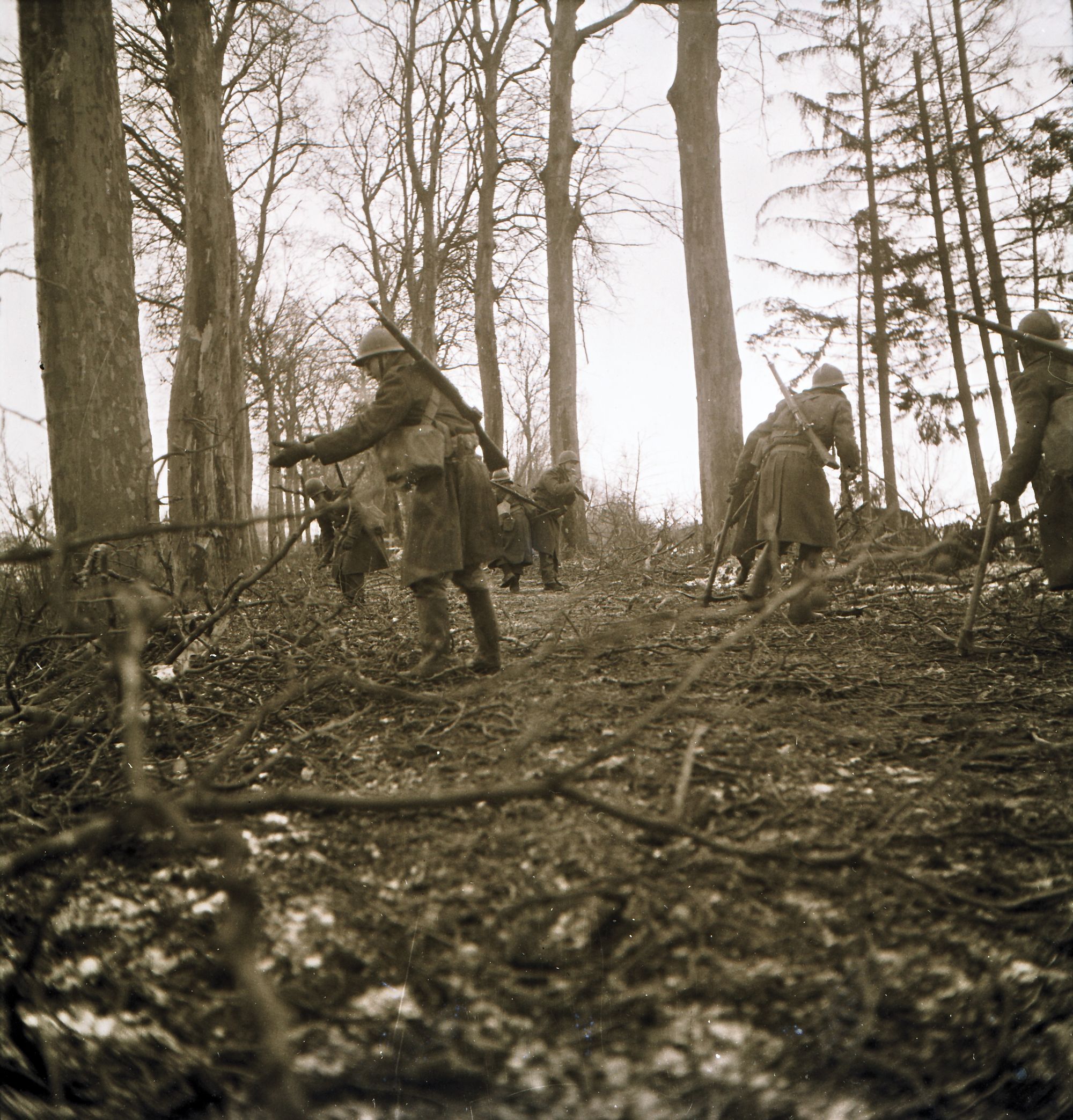
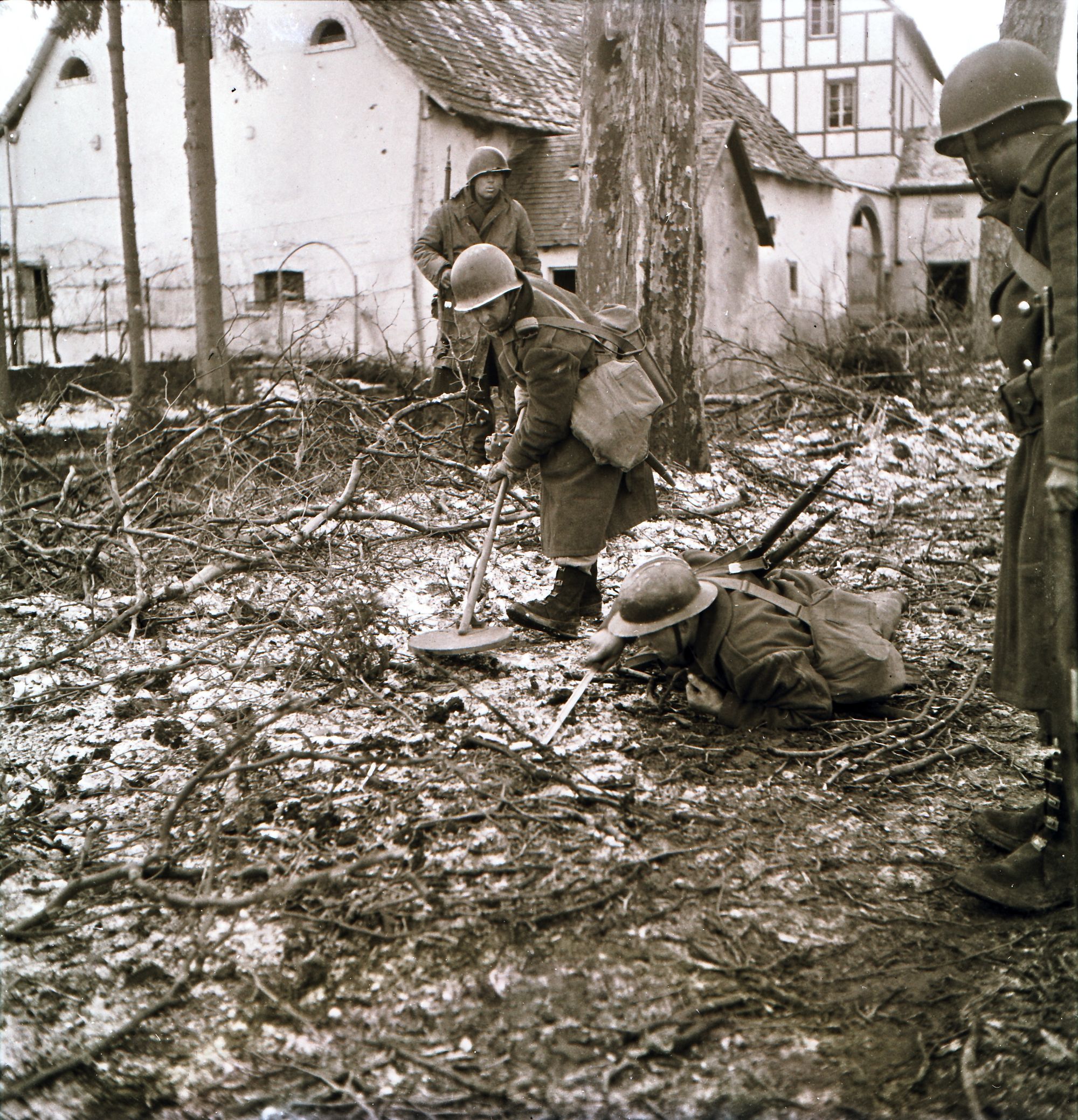
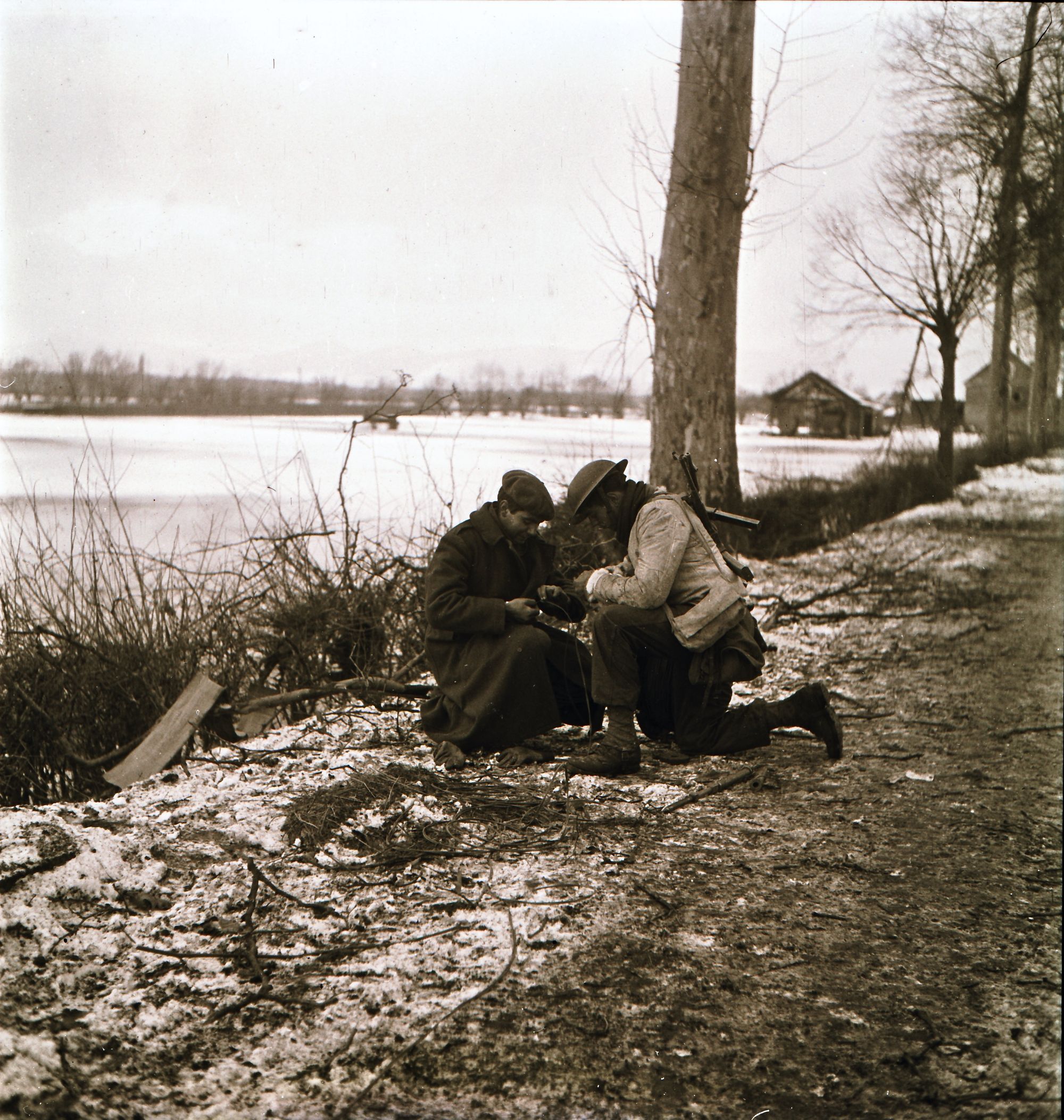
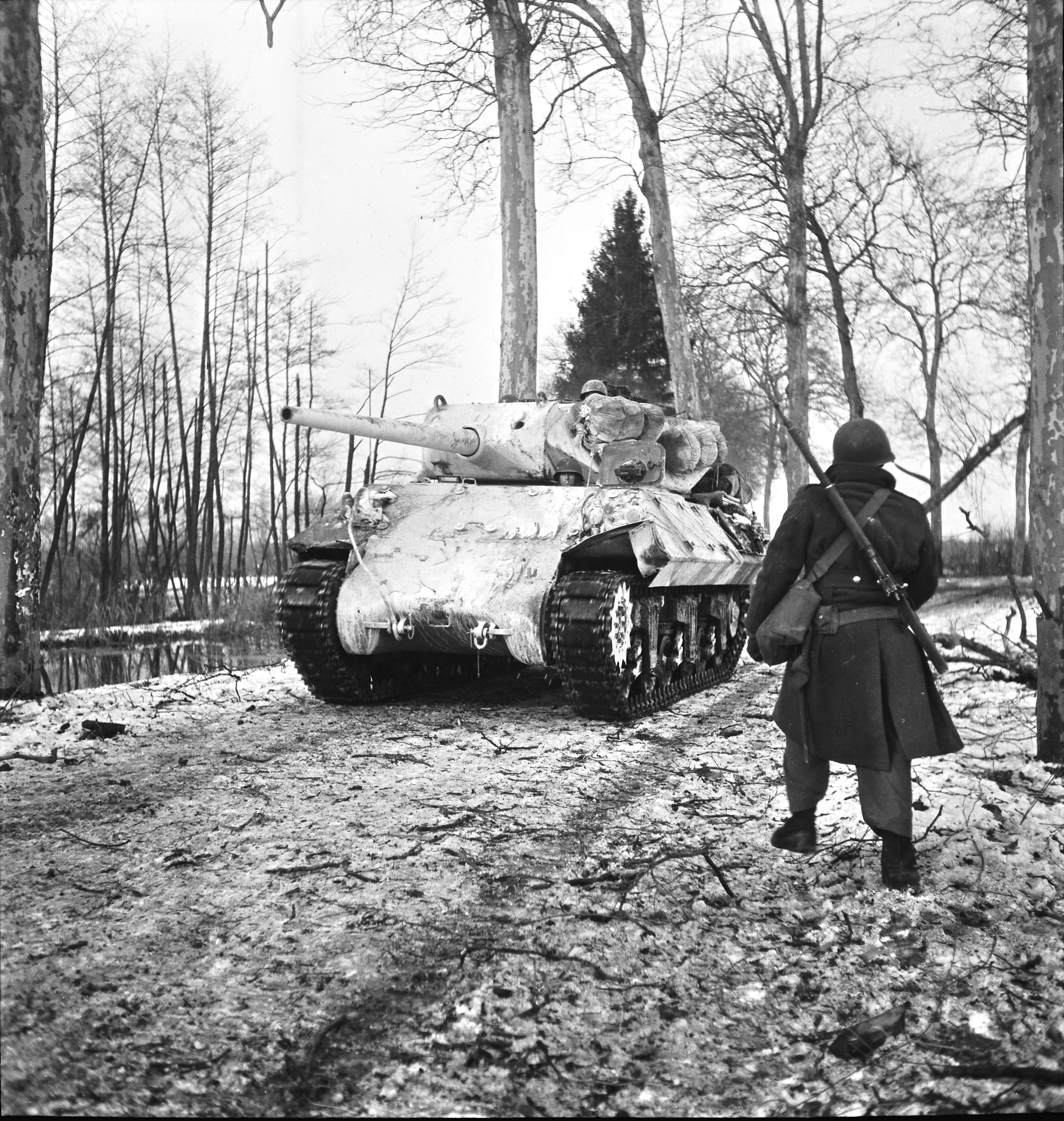
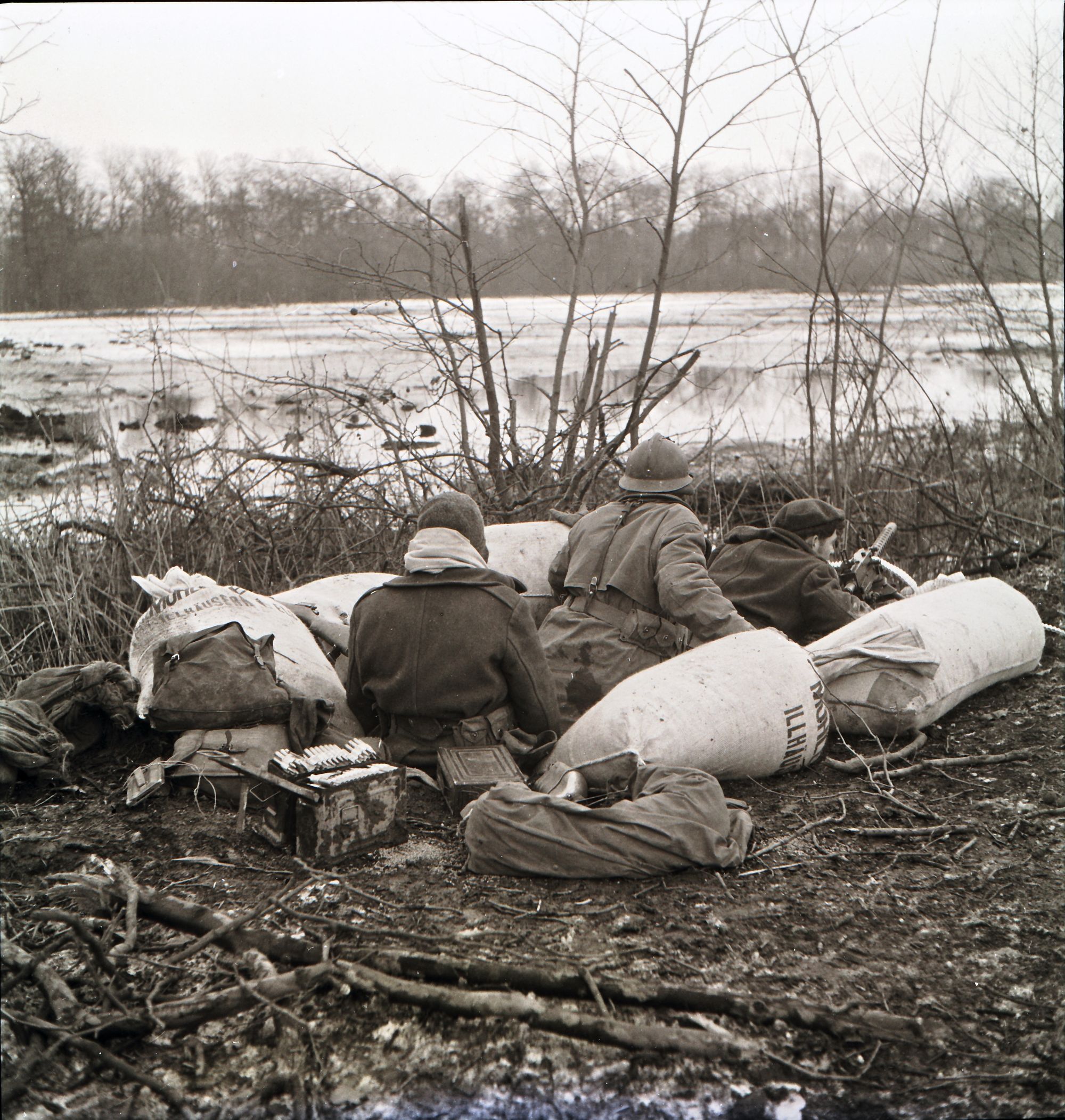
T3. T4. Clearing branches and mines to allow tanks through. Débranchage et déminage pour permettre le passage des chars. T5. Laying down telephone wire on the liberated road. Pose du téléphone sur la route libérée. T6. Tanks progress. Avance des chars. T7. Keeping watch on the road. Surveillance de la route.
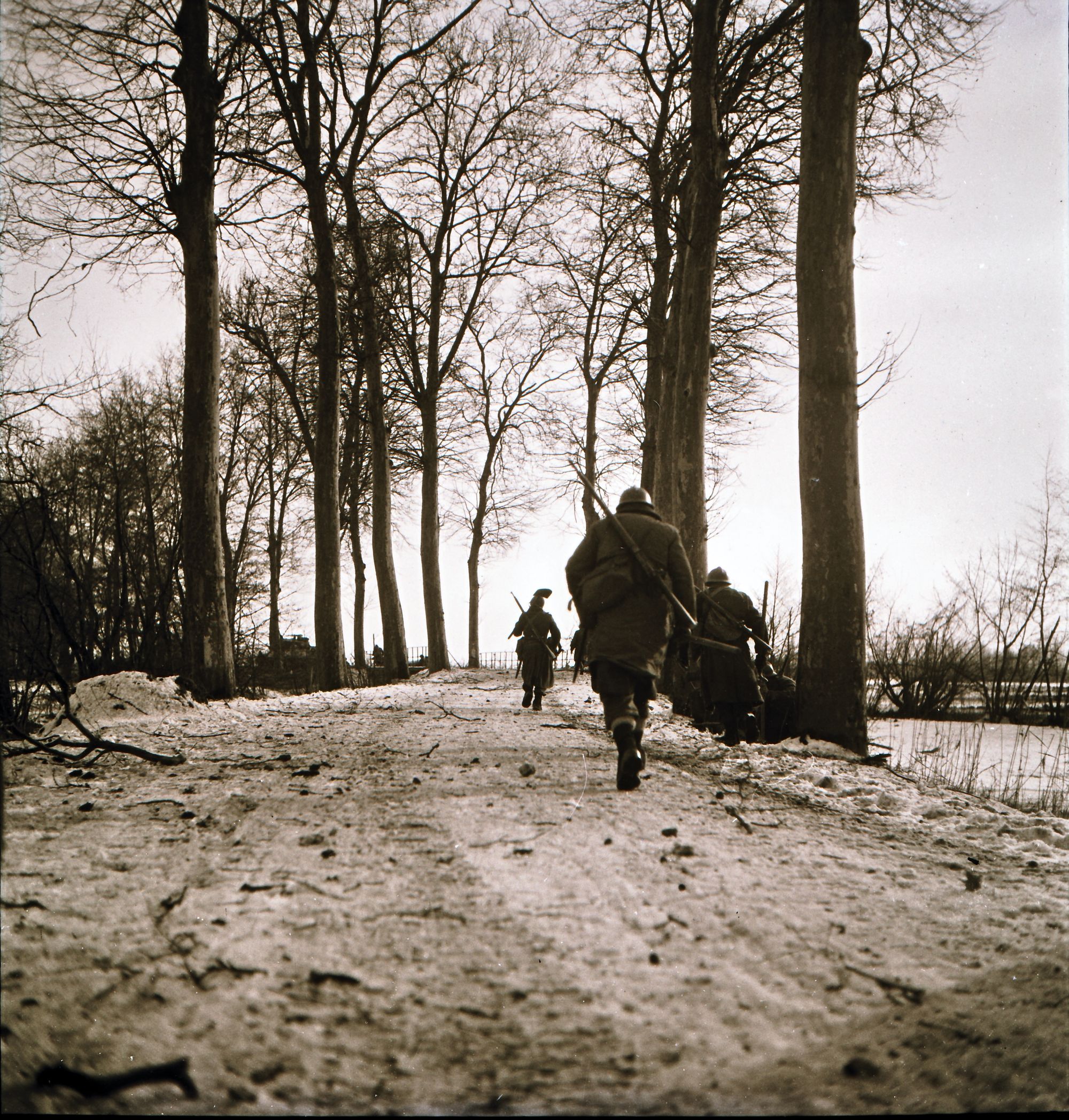
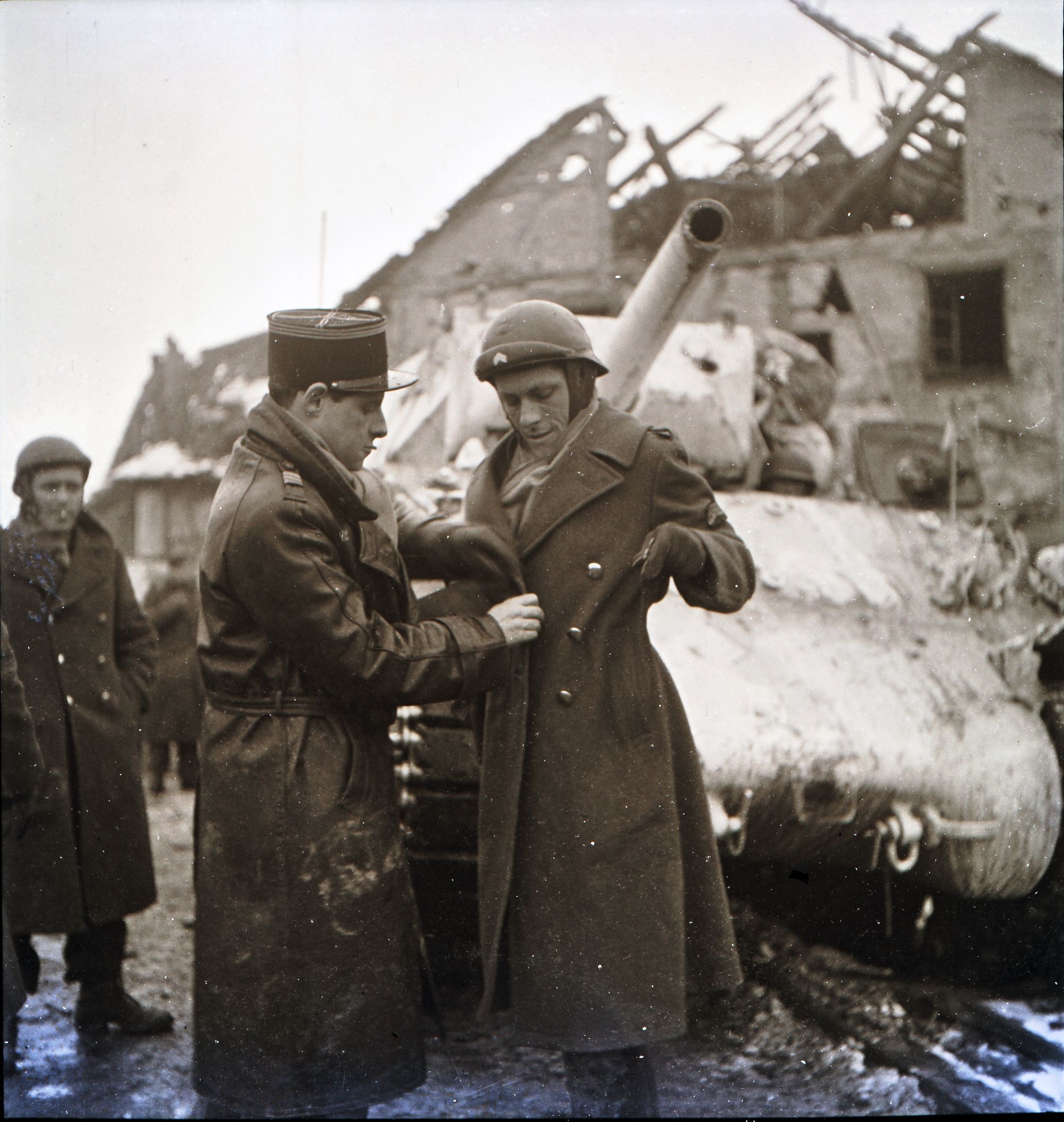
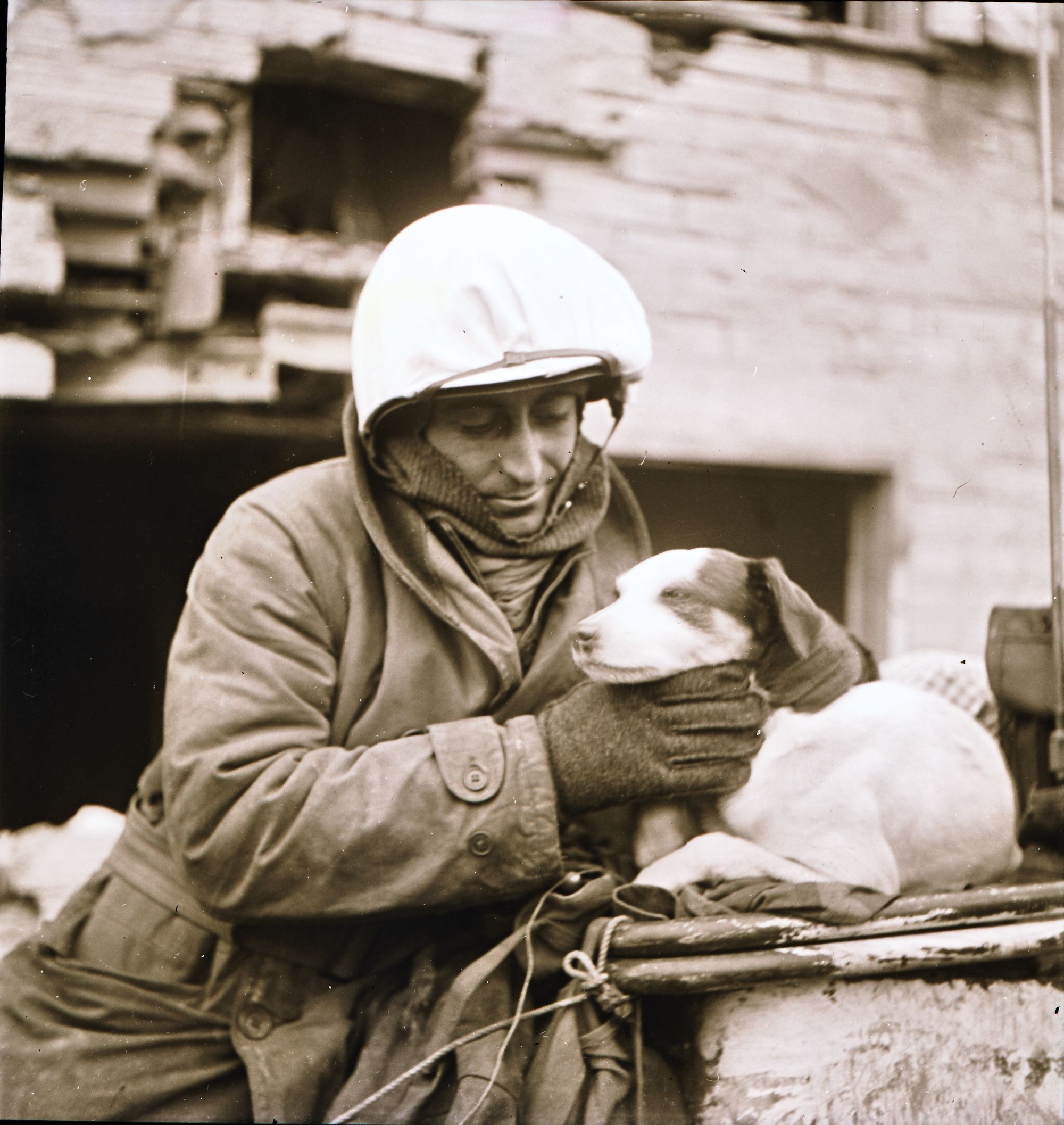
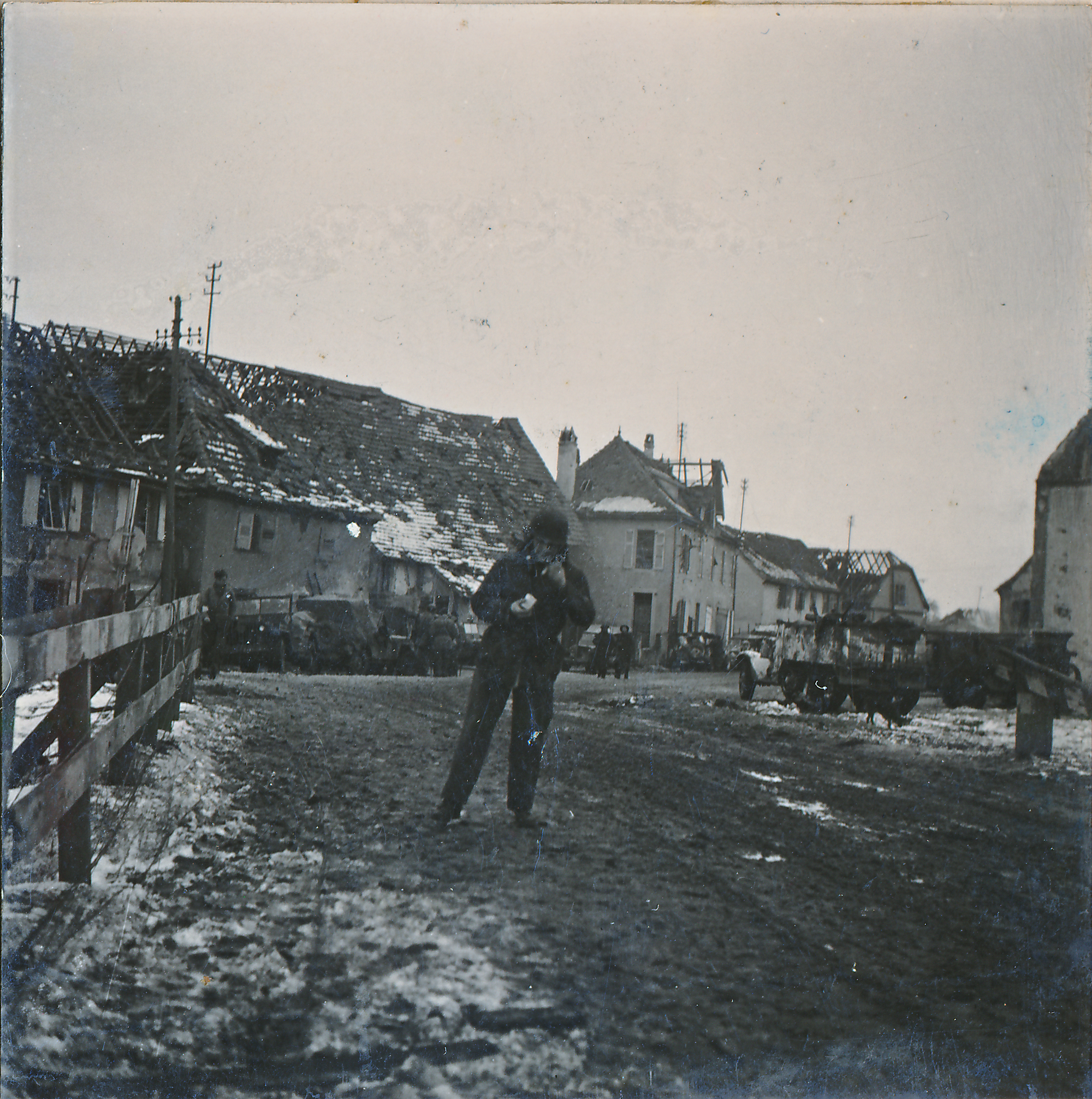
T9. Captain Stéphane, defender of the town hall. Le capitaine Stéphane, défenseur de l’Hôtel de Ville. T10. Dear mascot. Chère mascotte. T11.
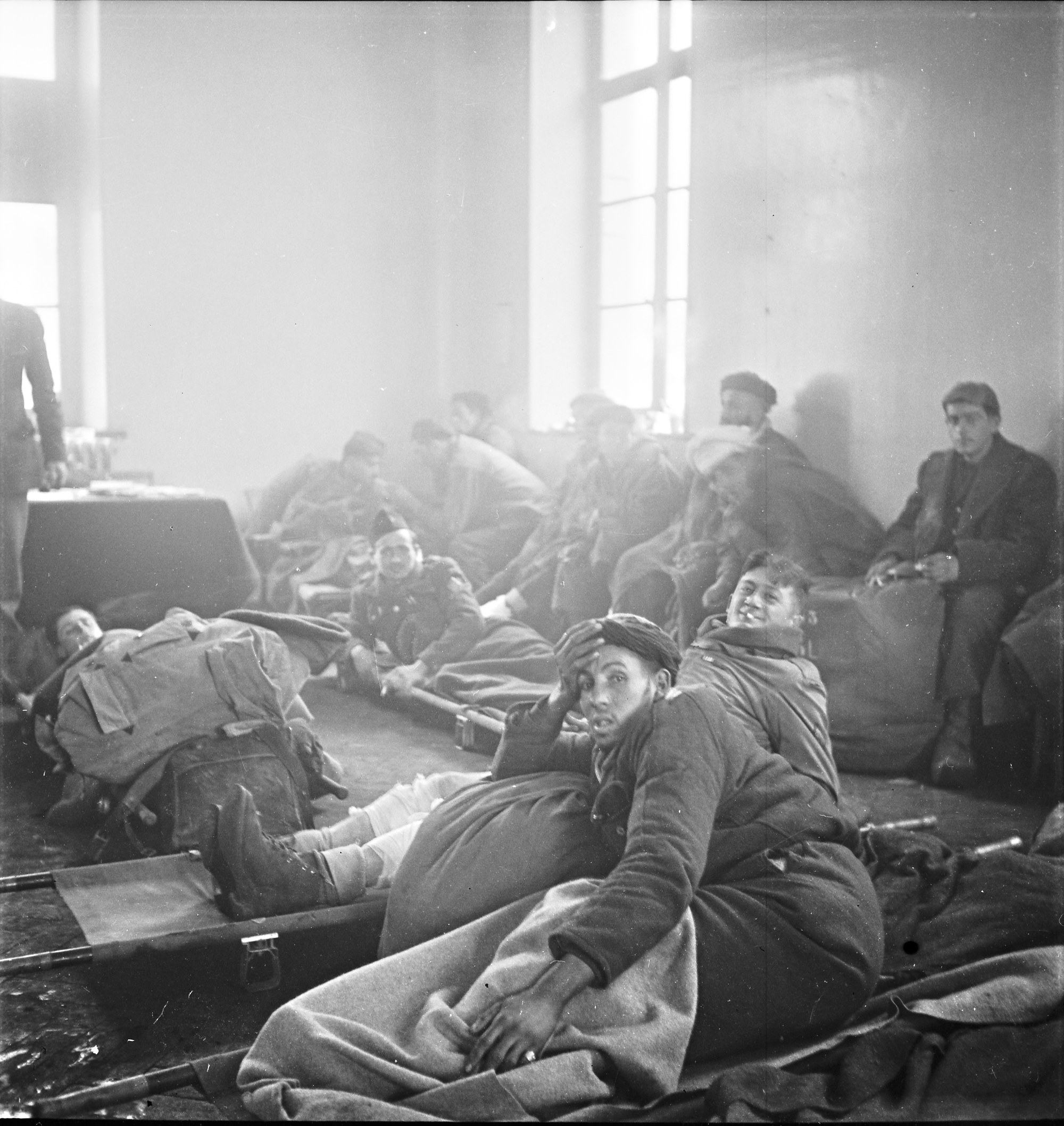
Other sources
- Moulin Herzog, Illhaeusern
Catalogue
